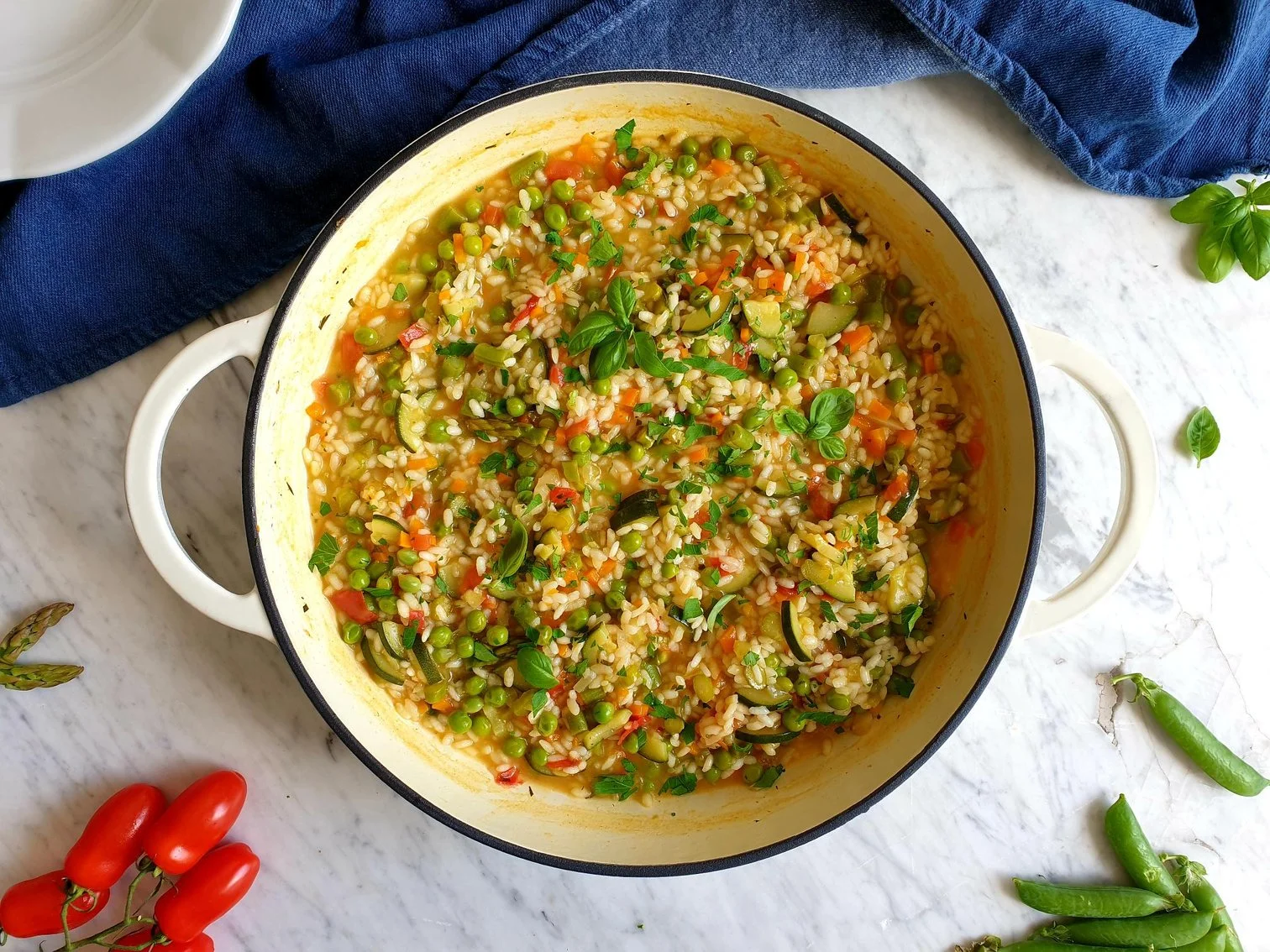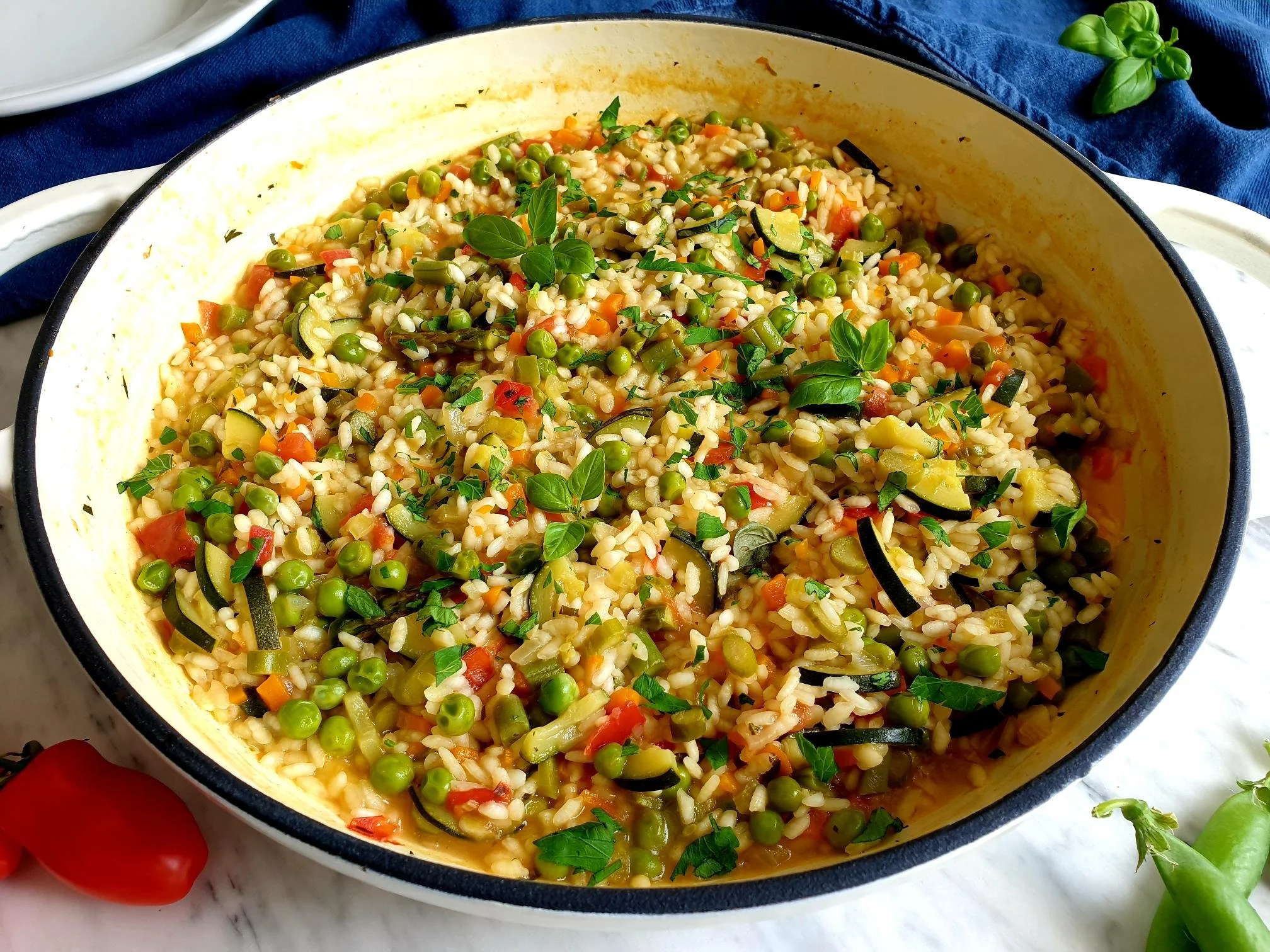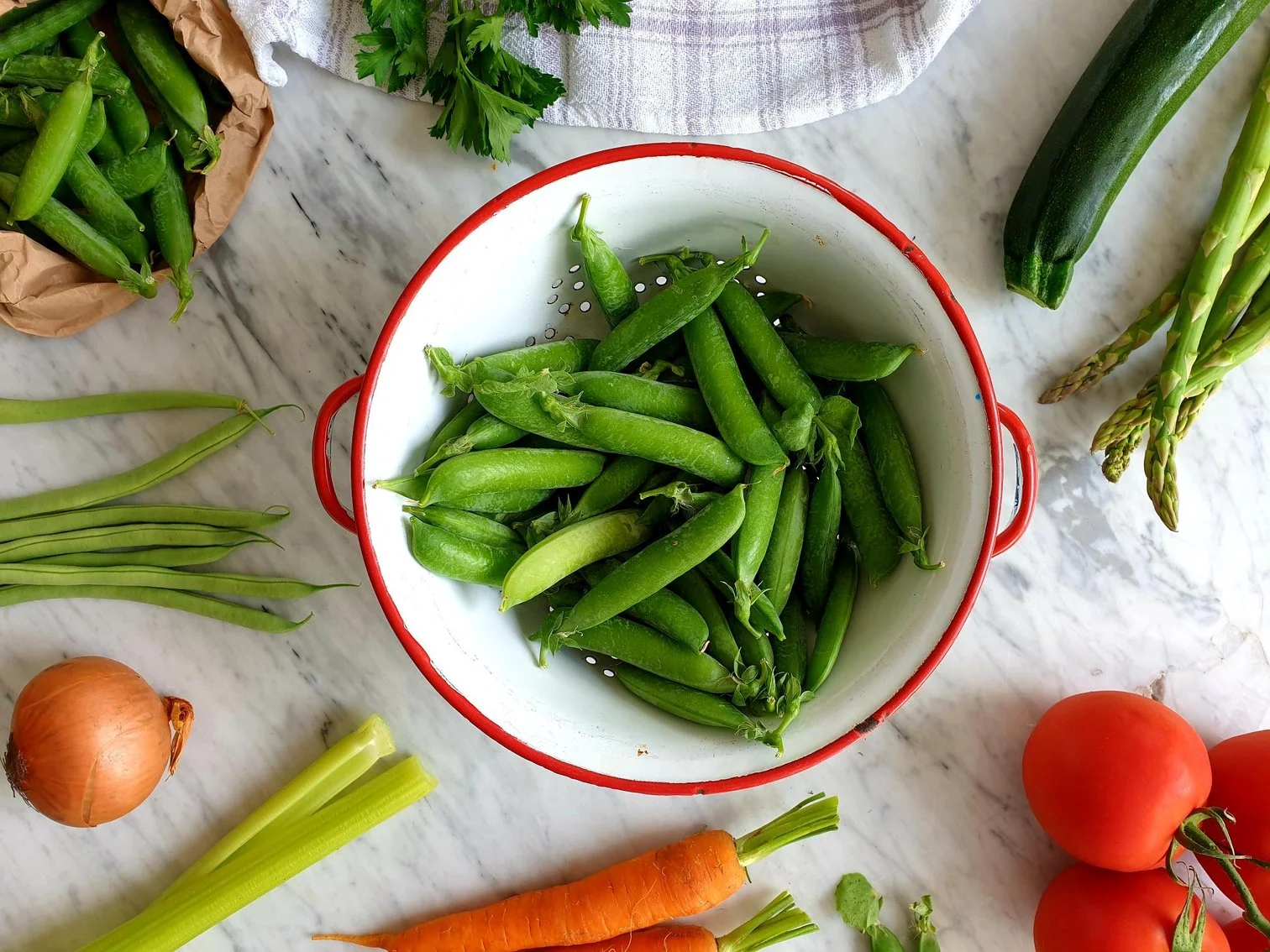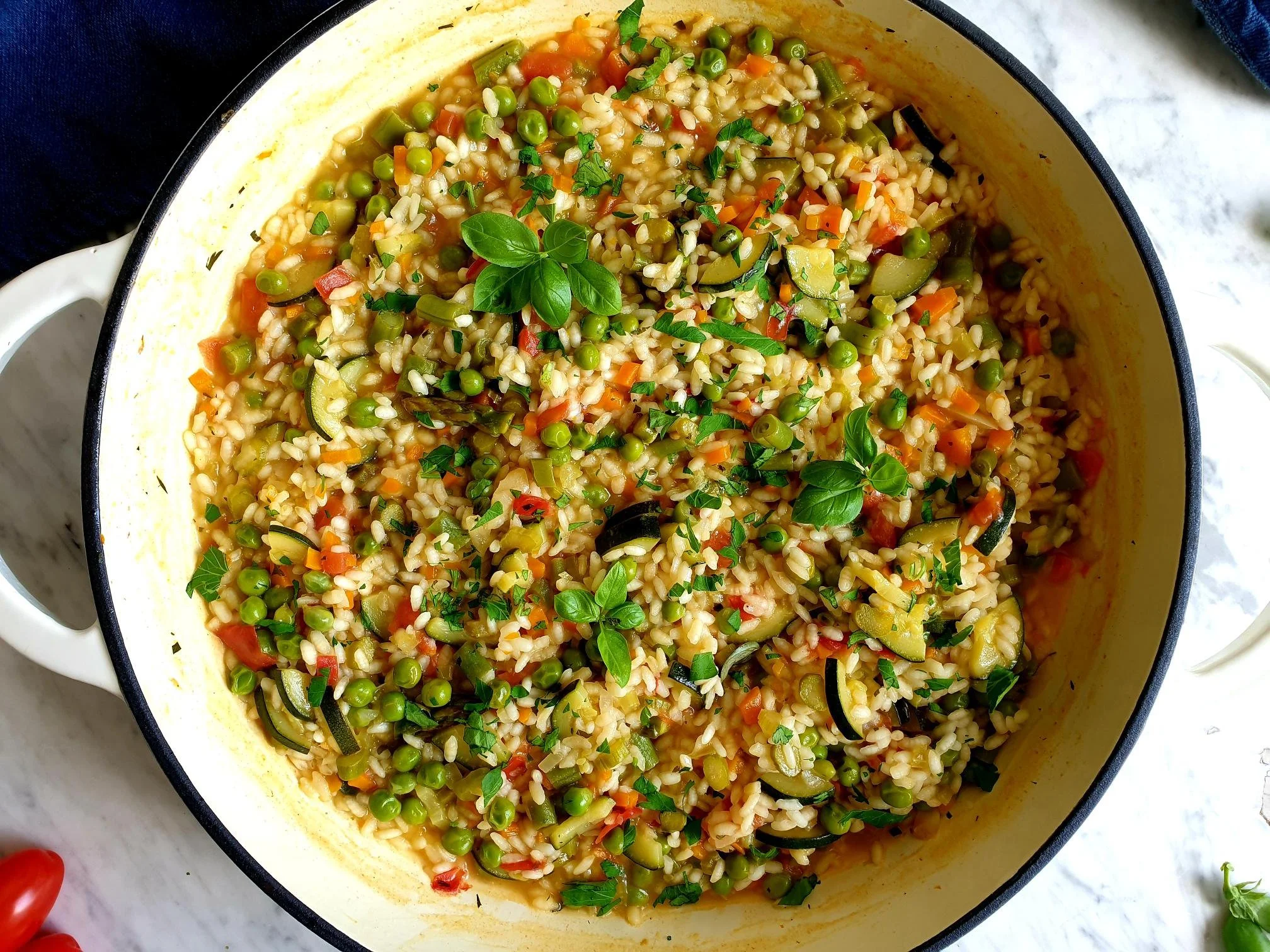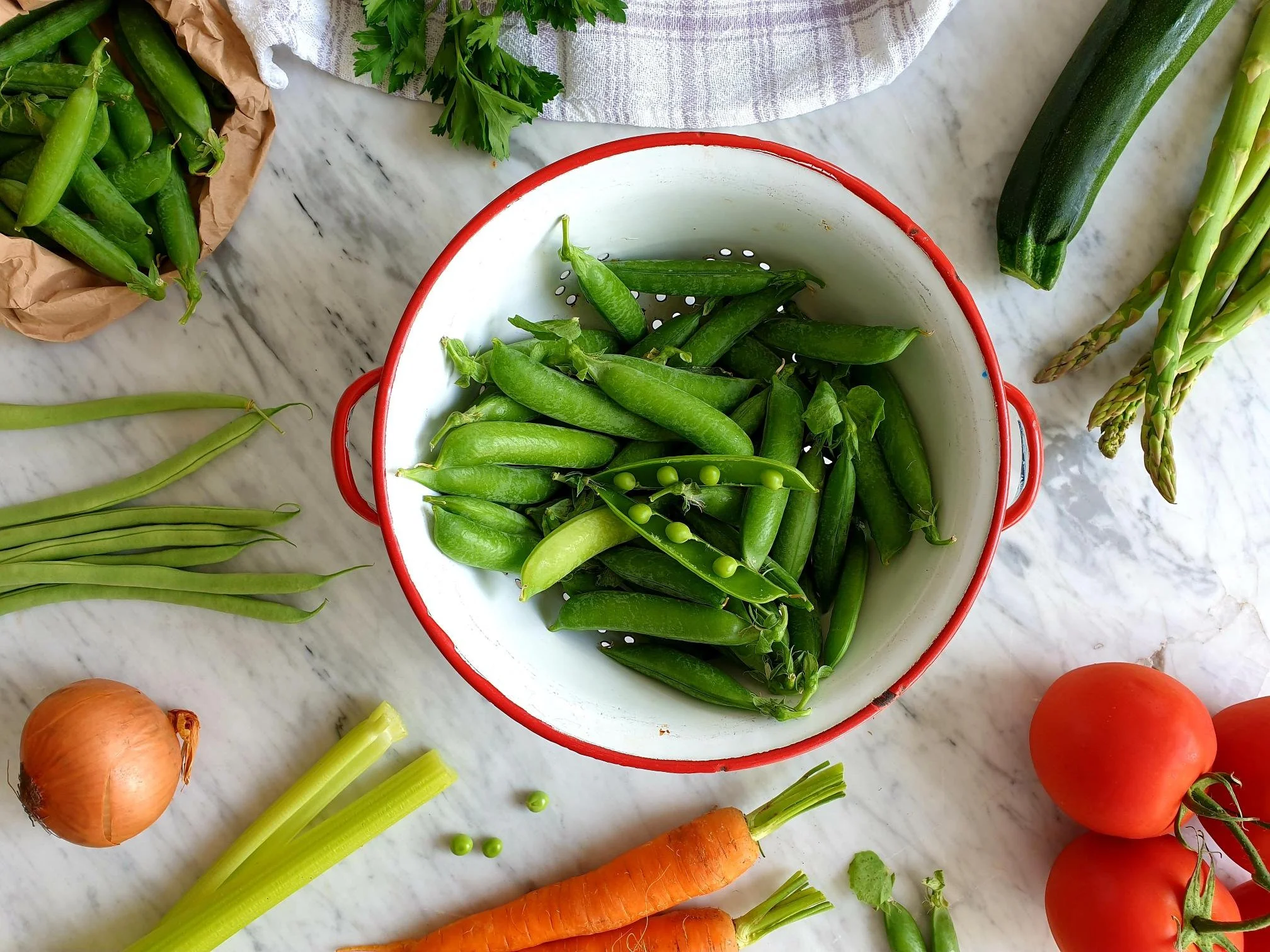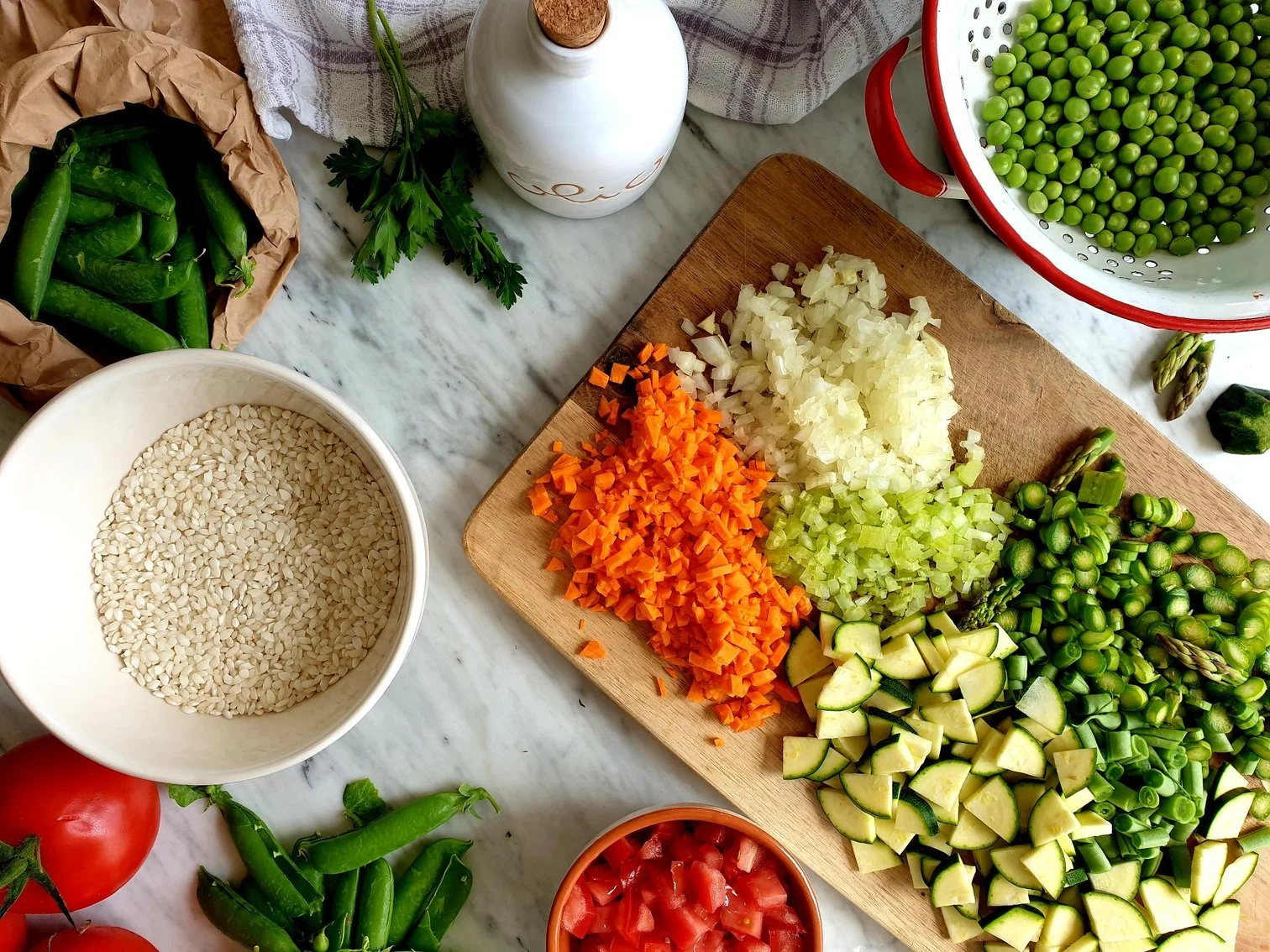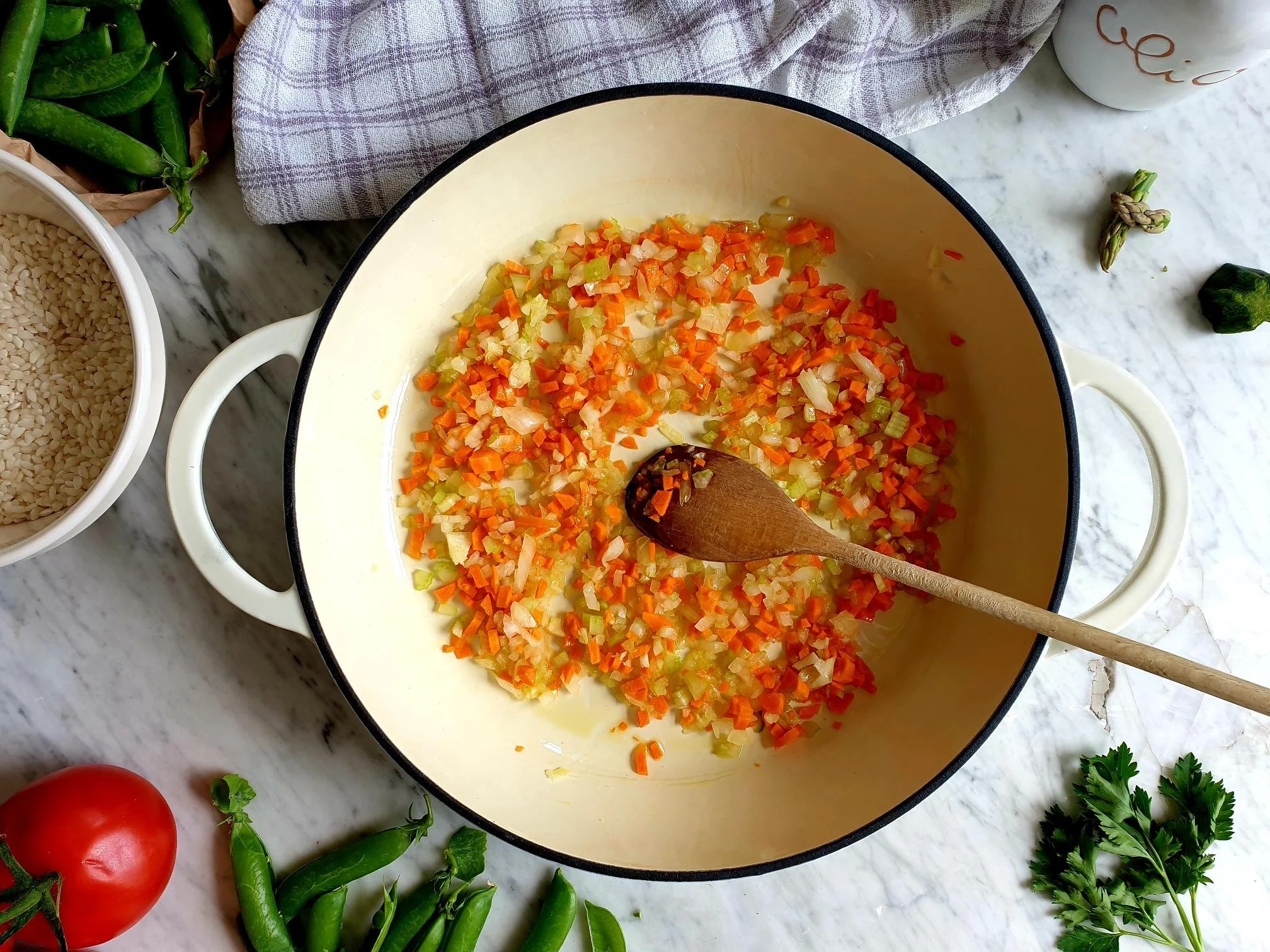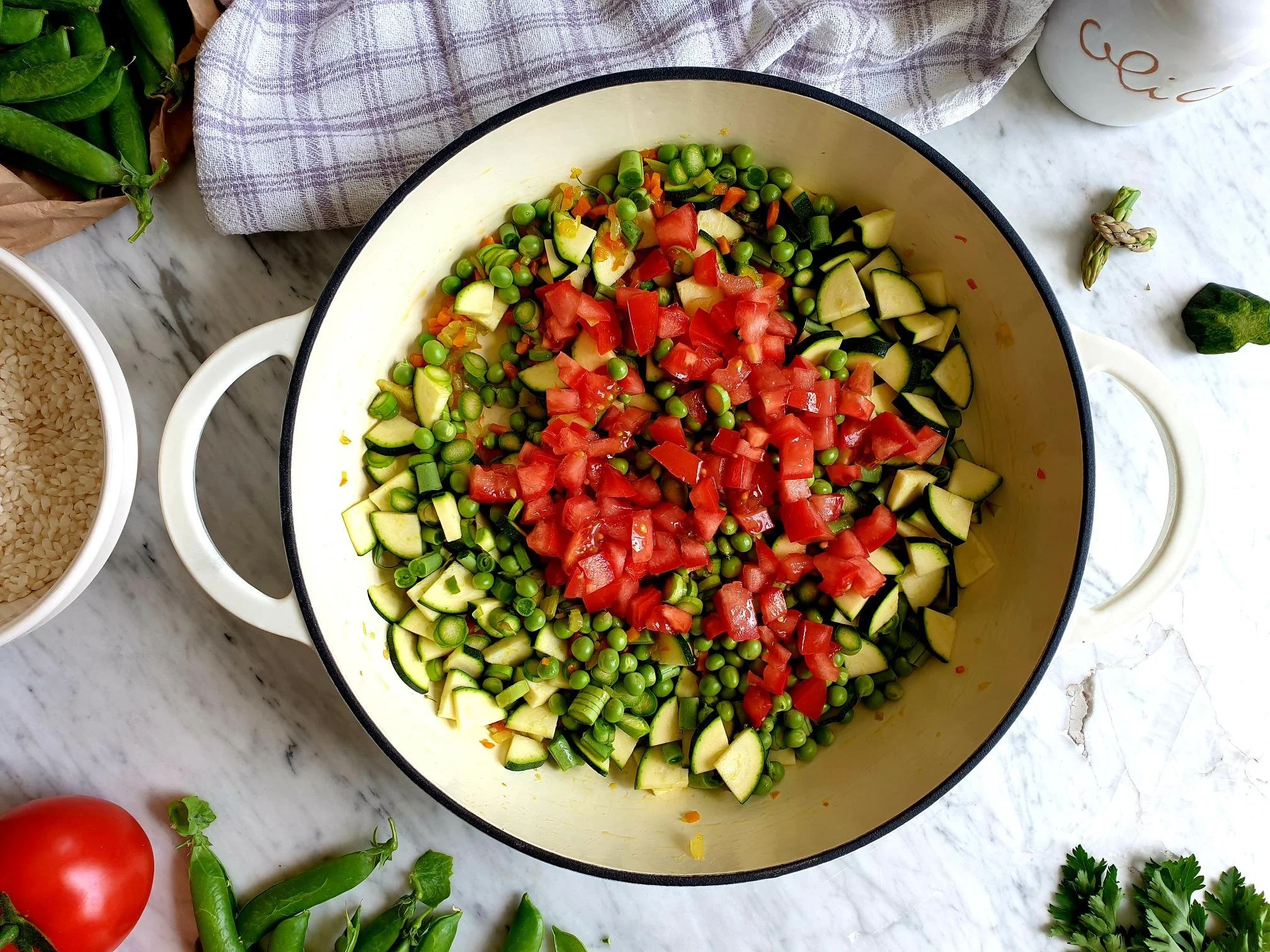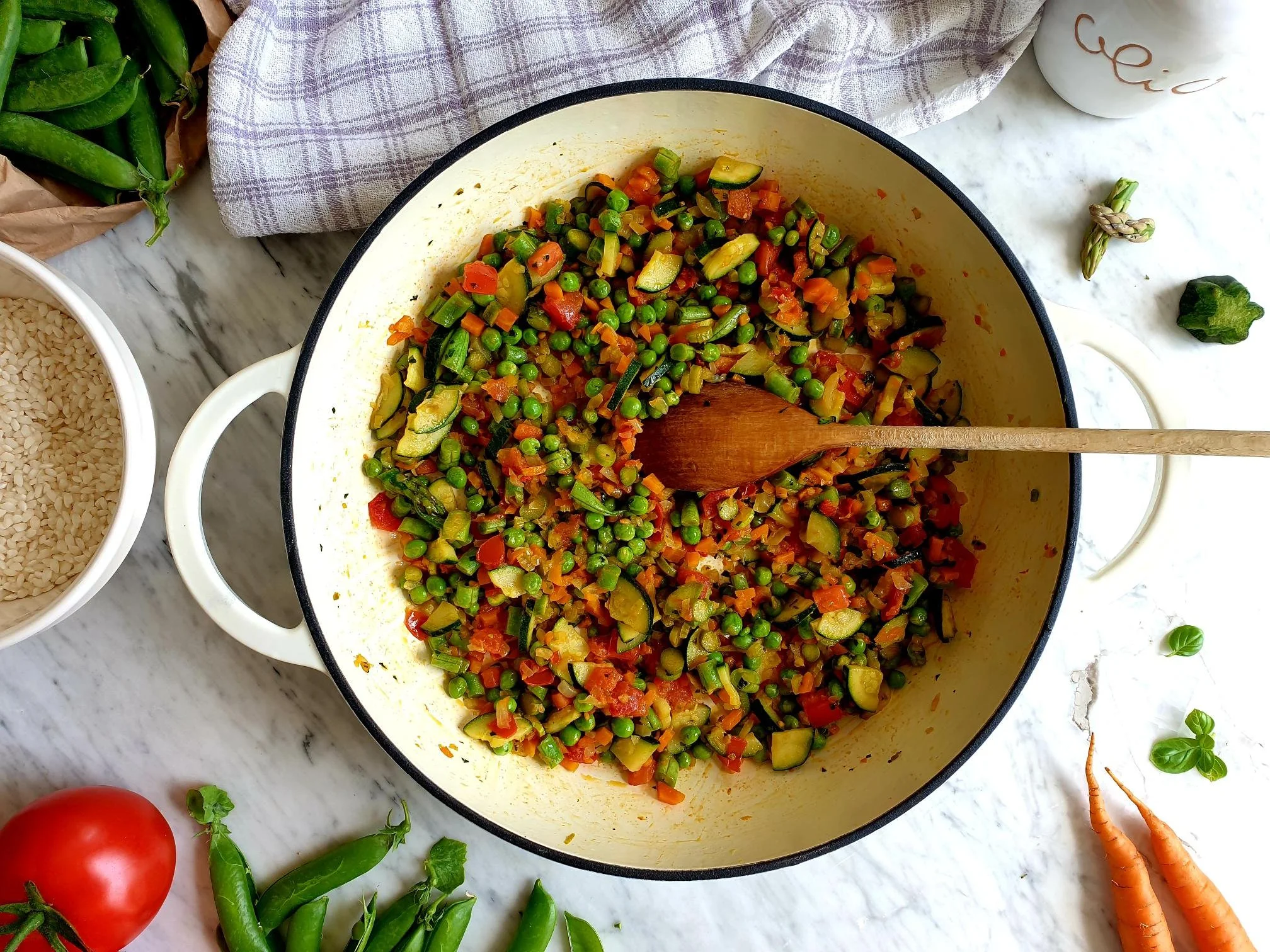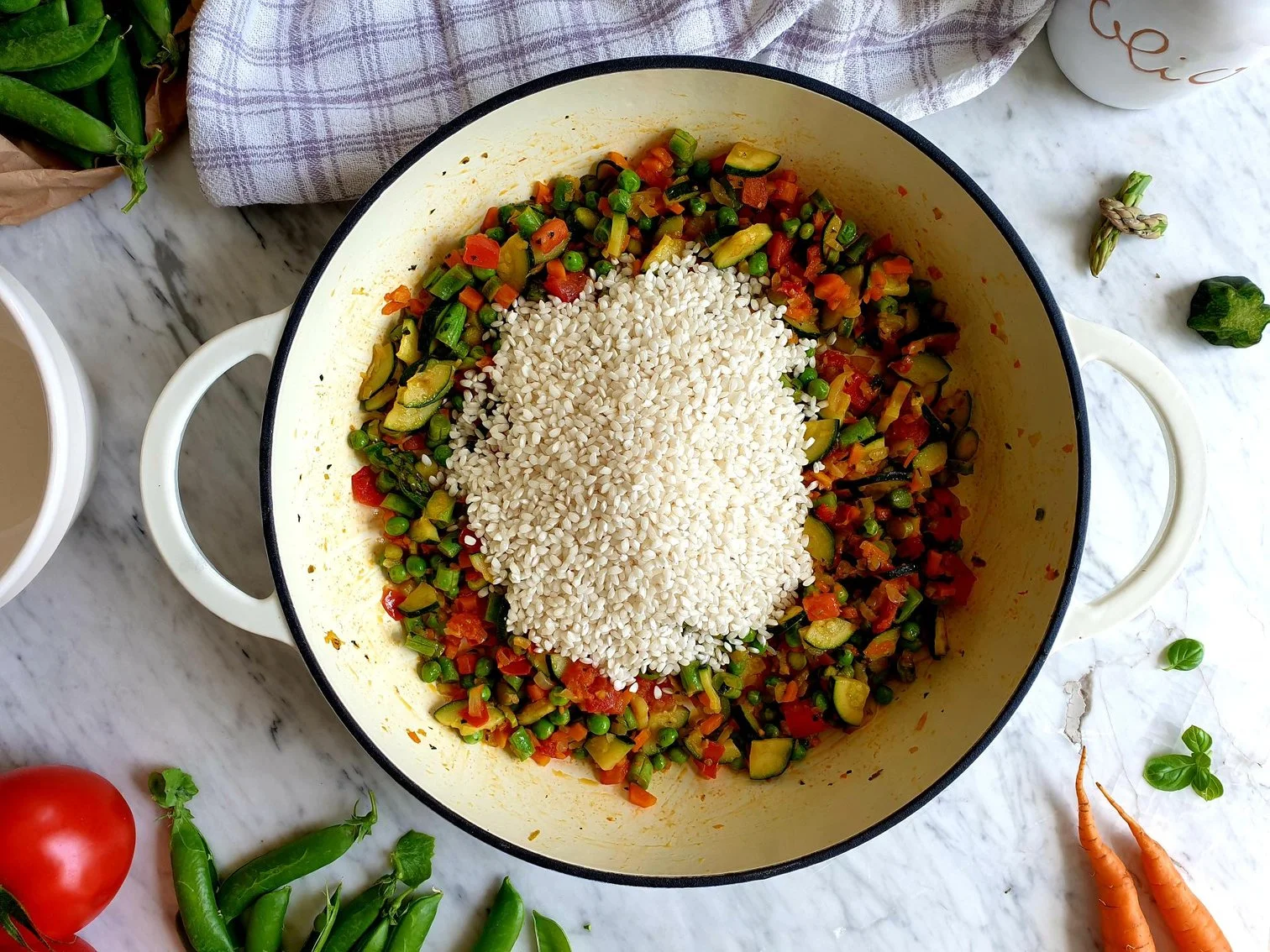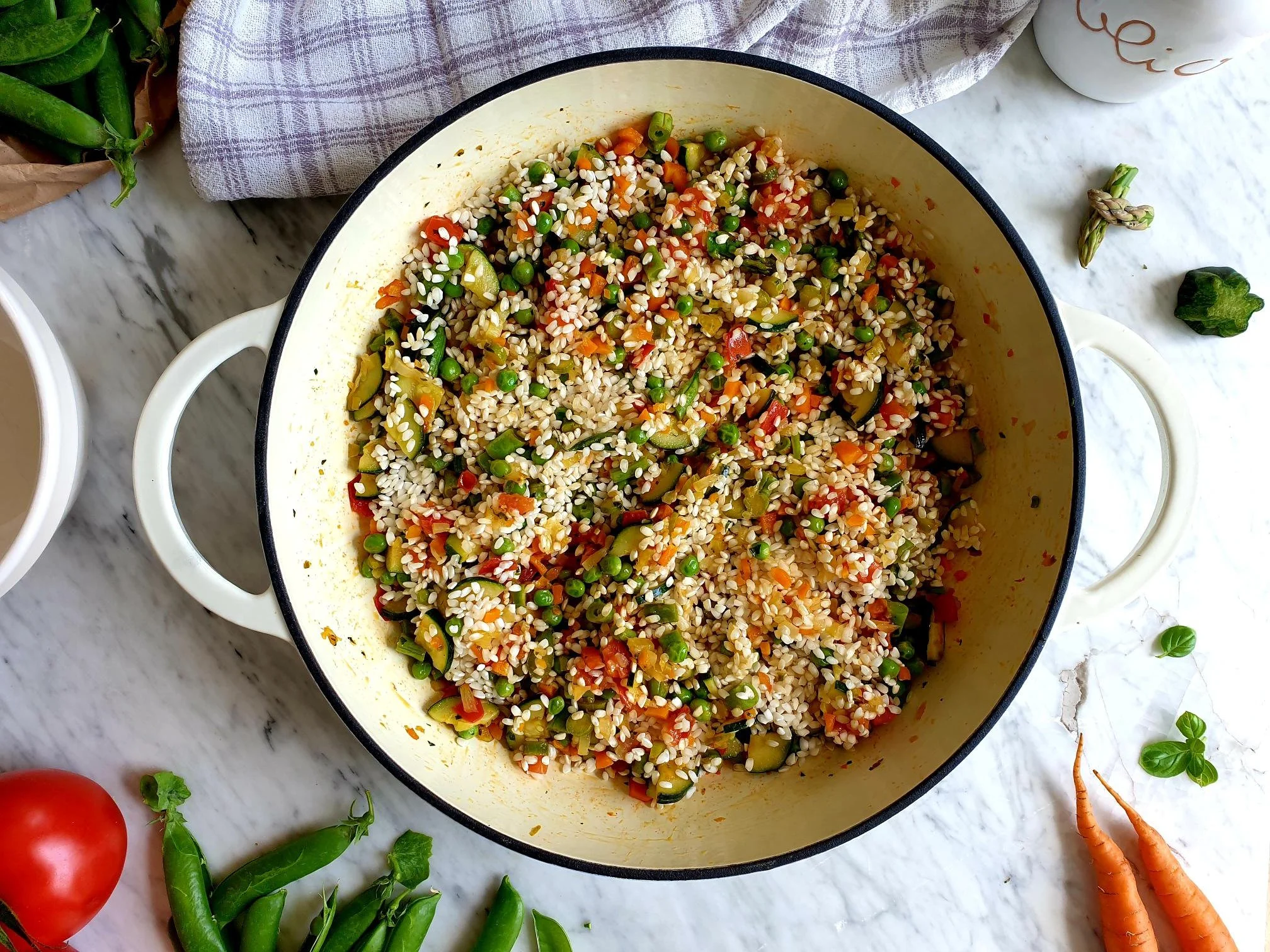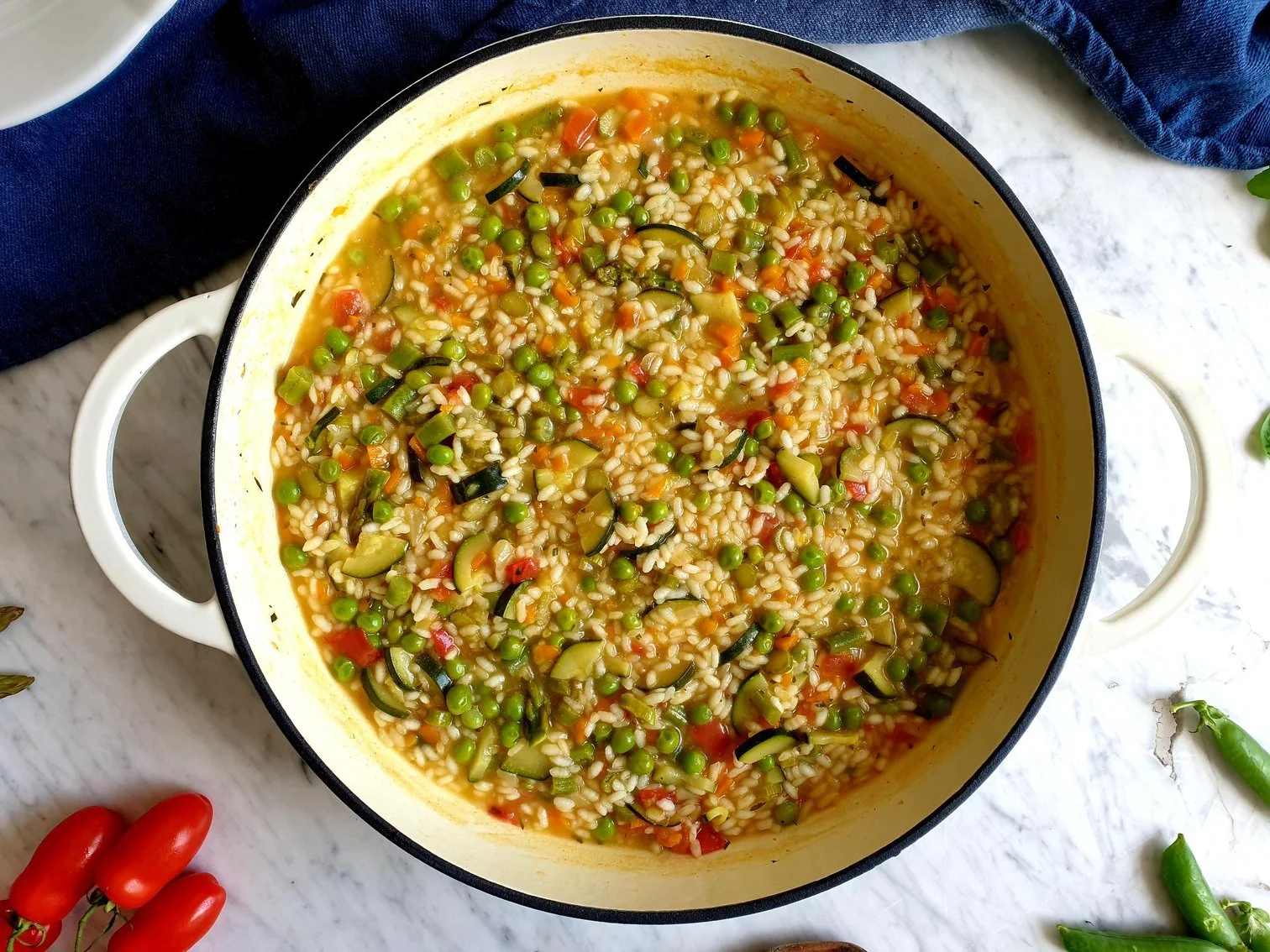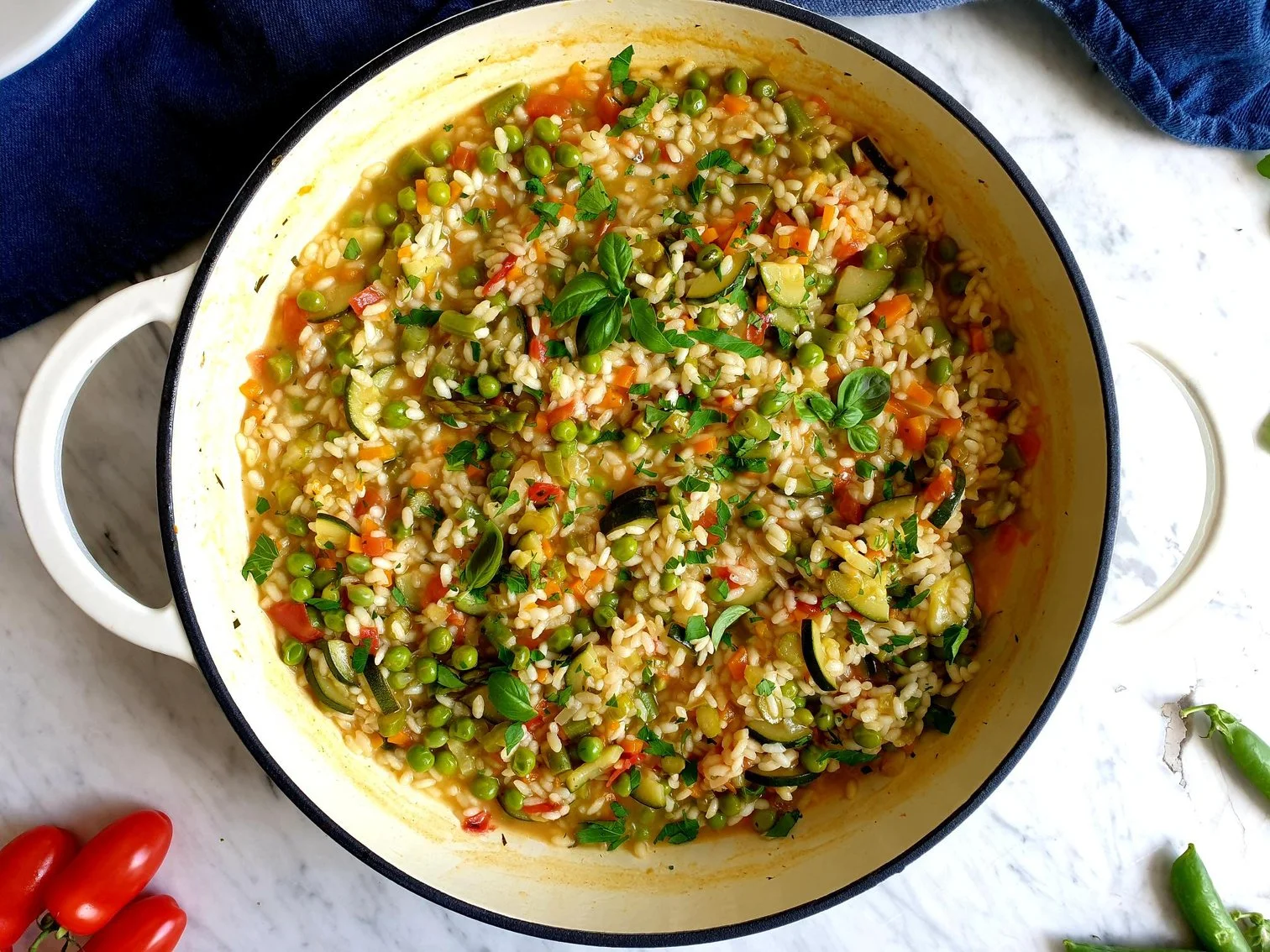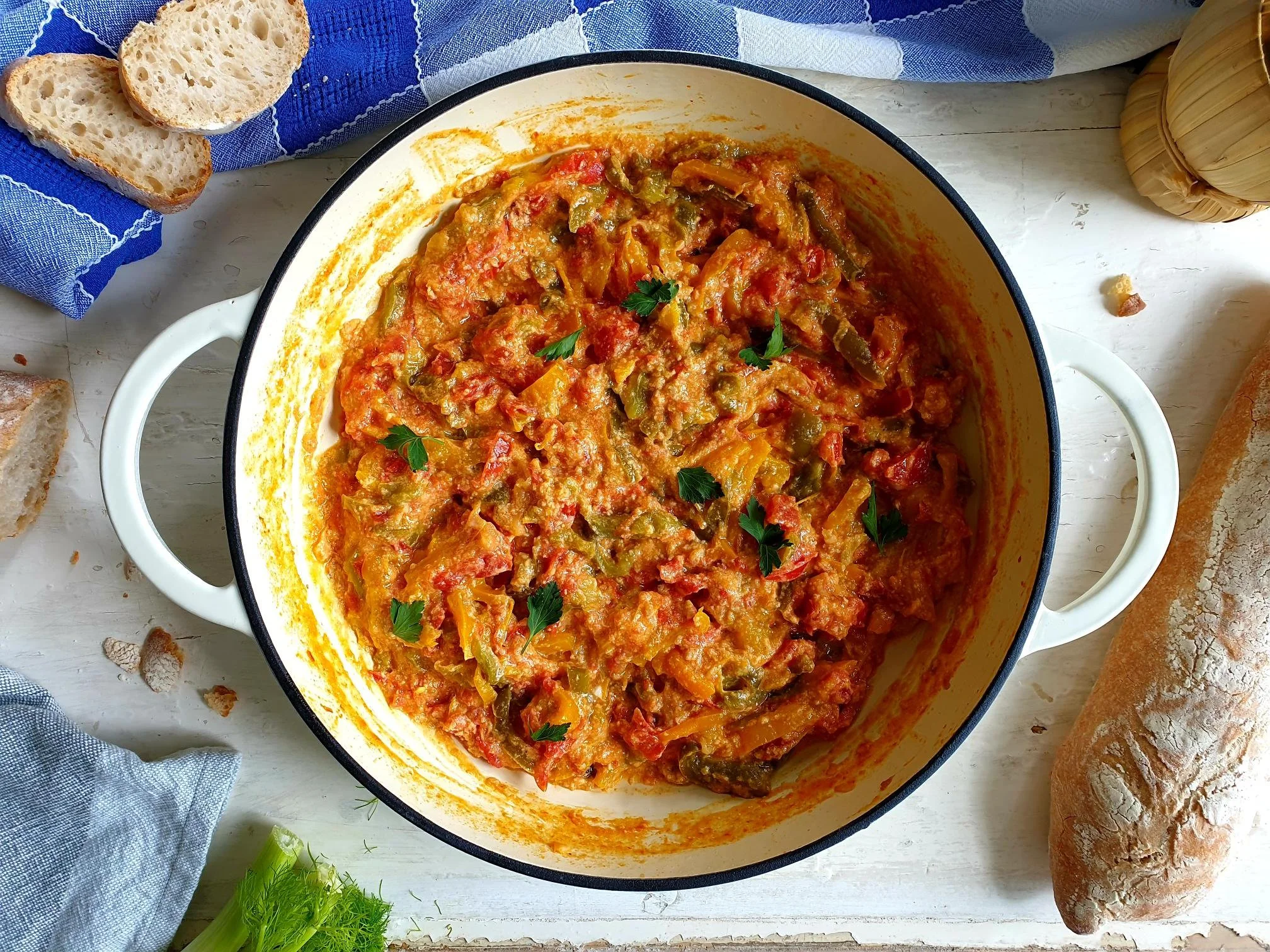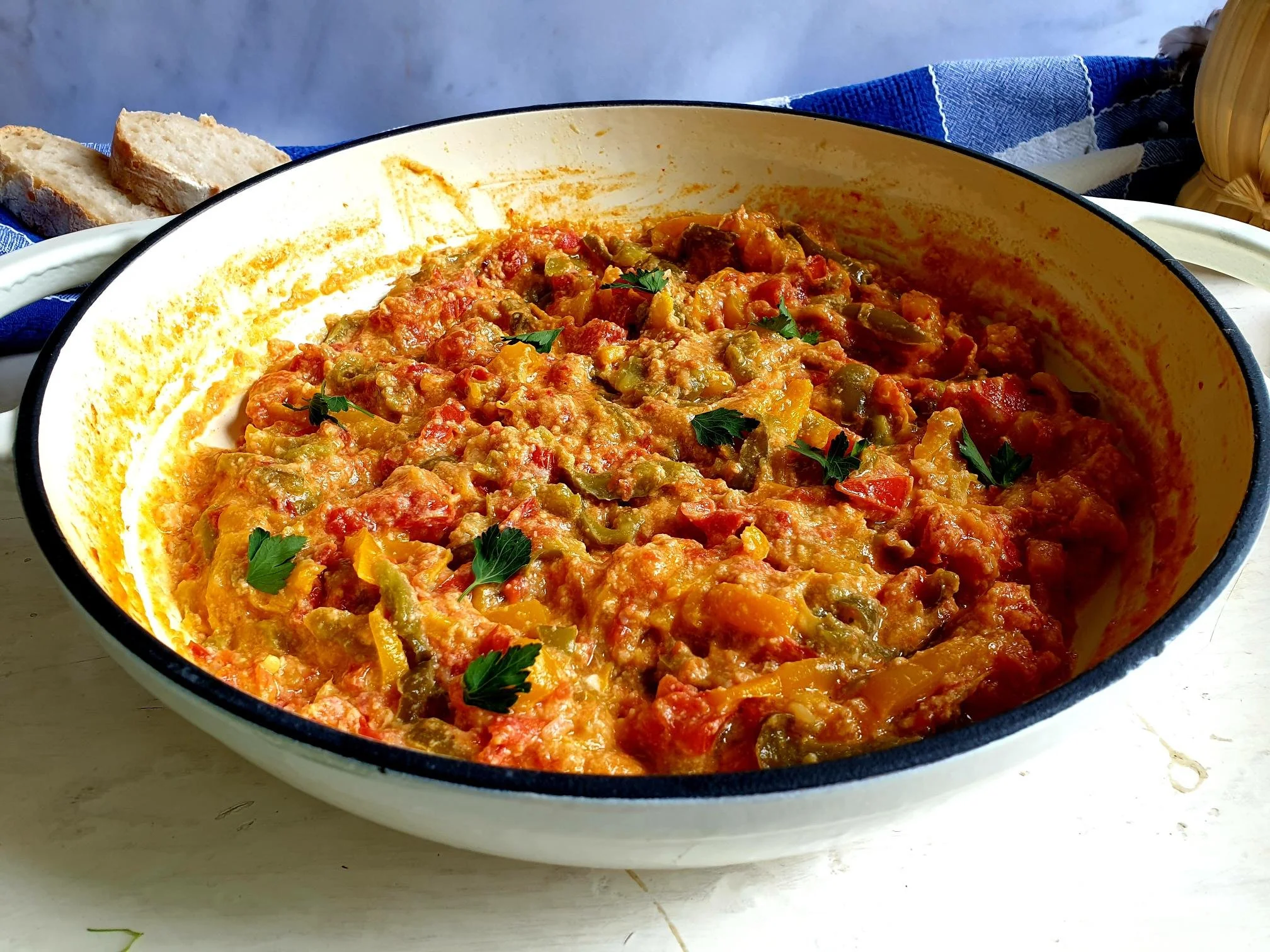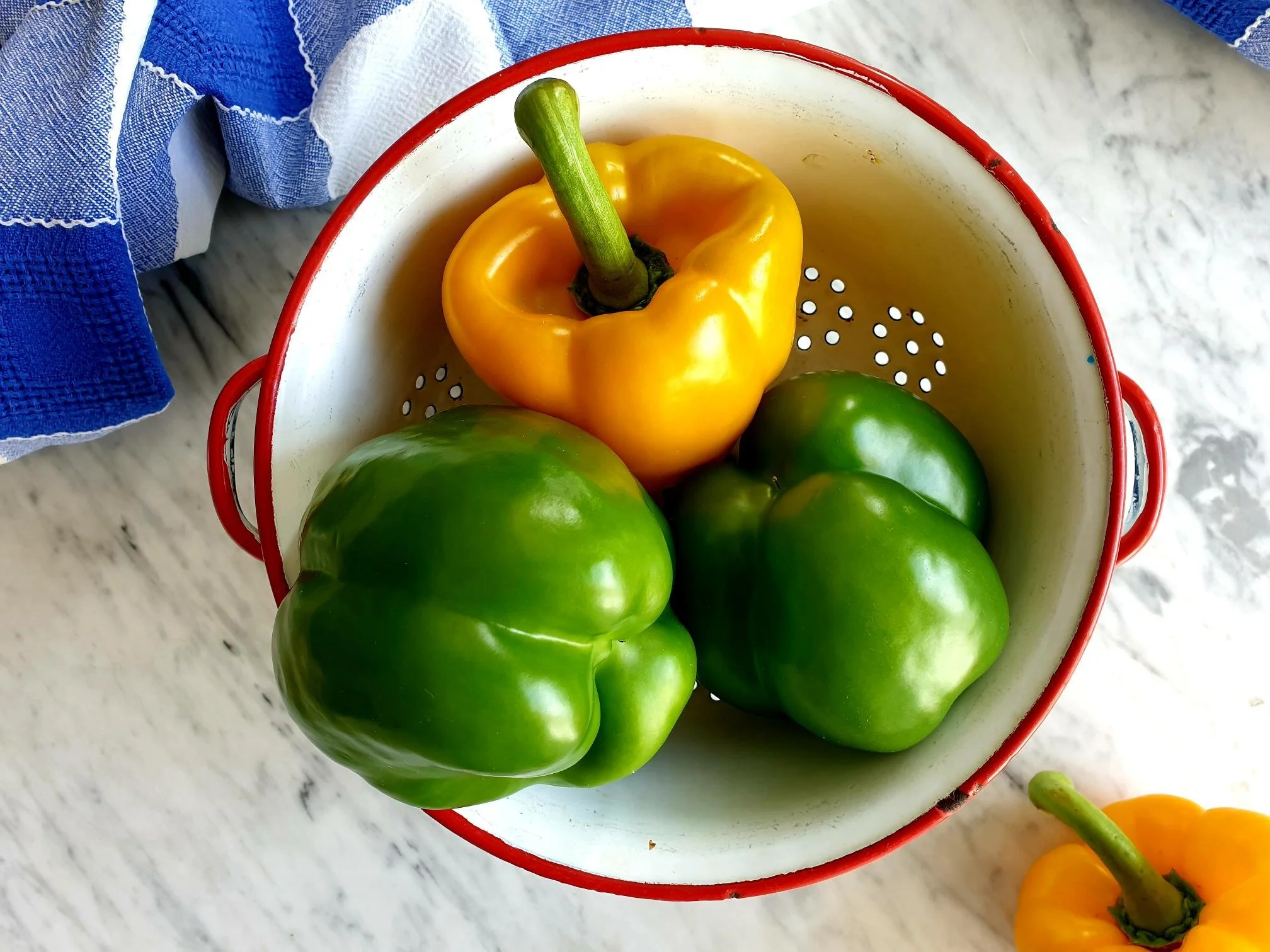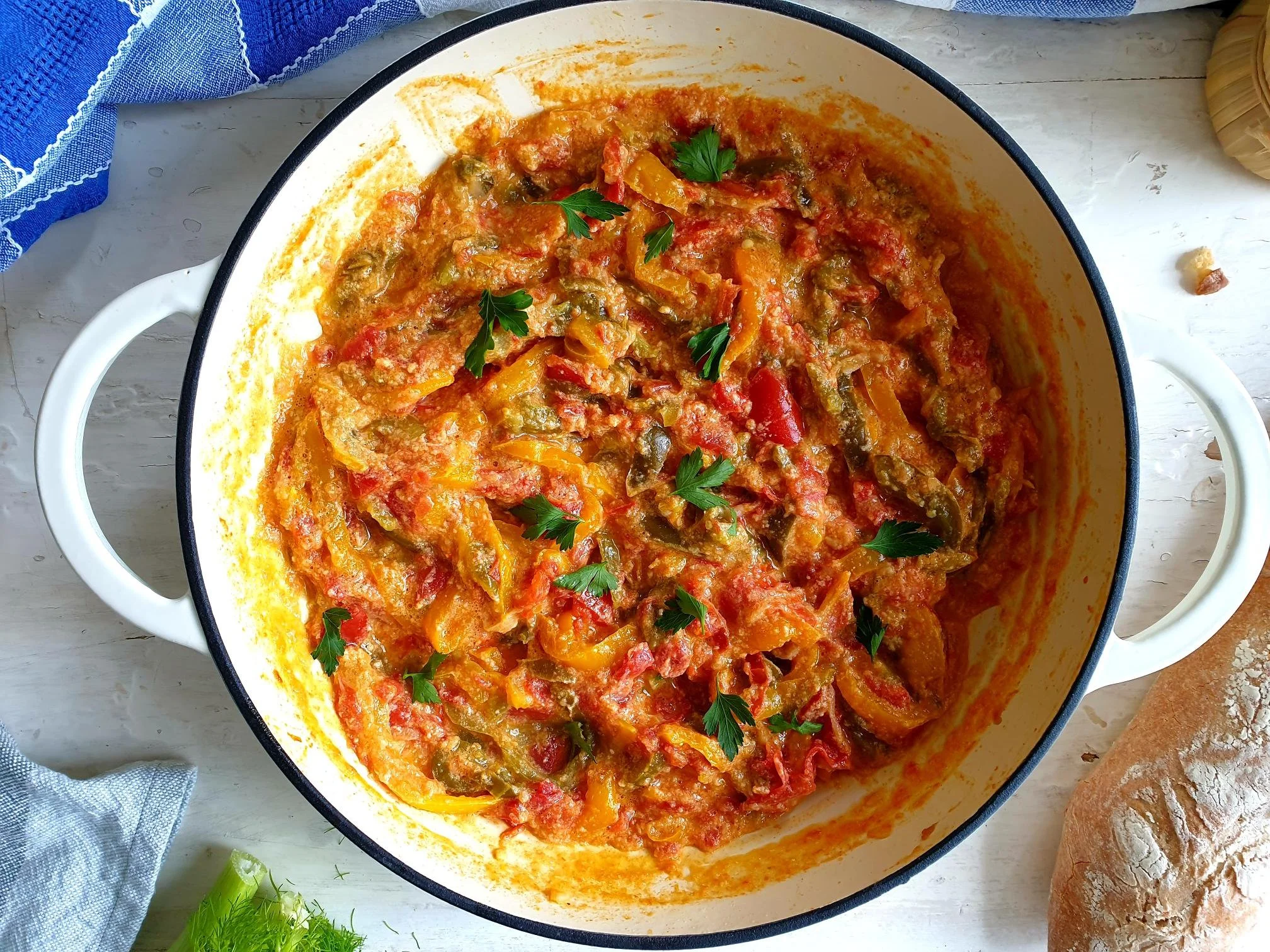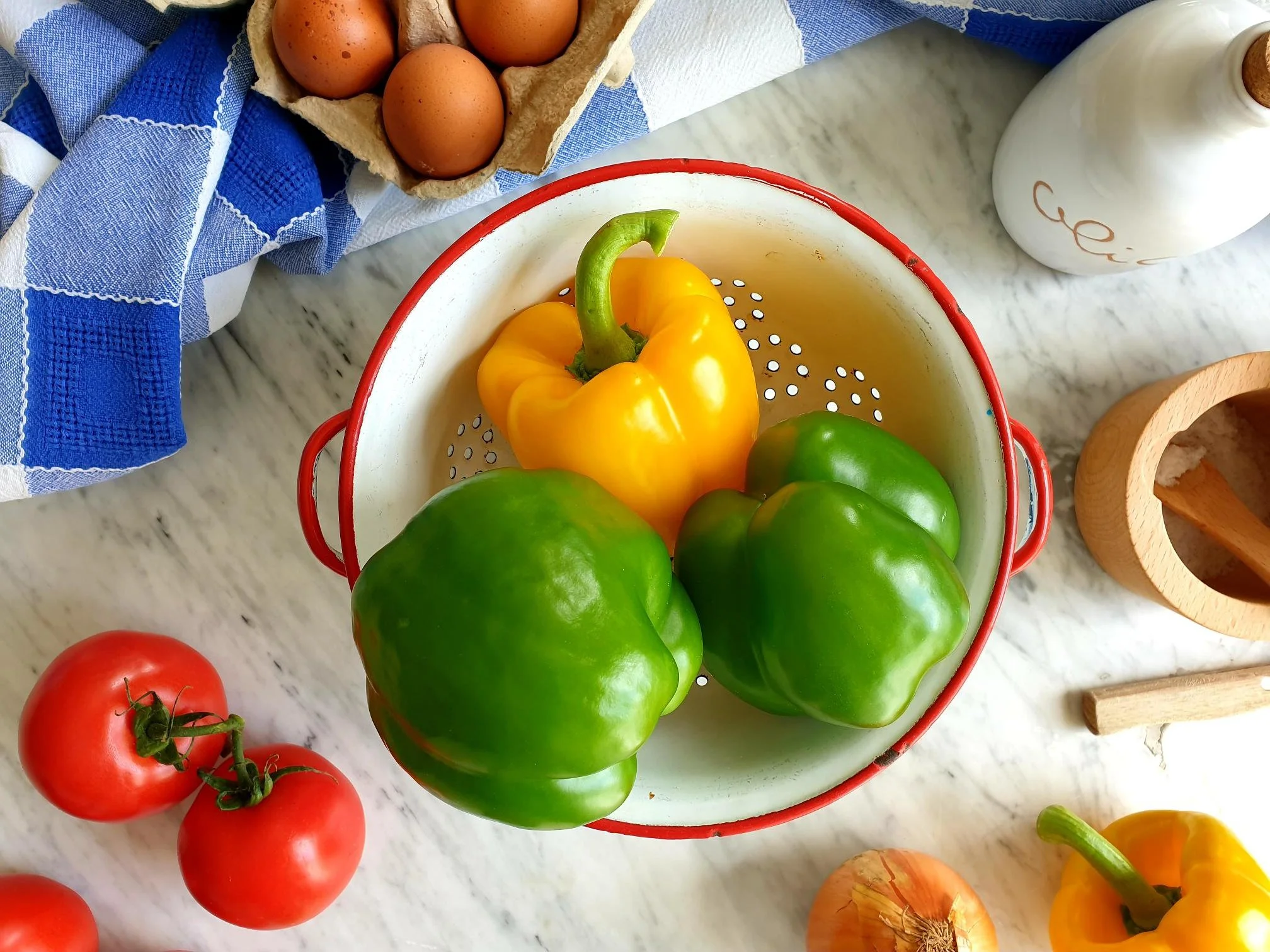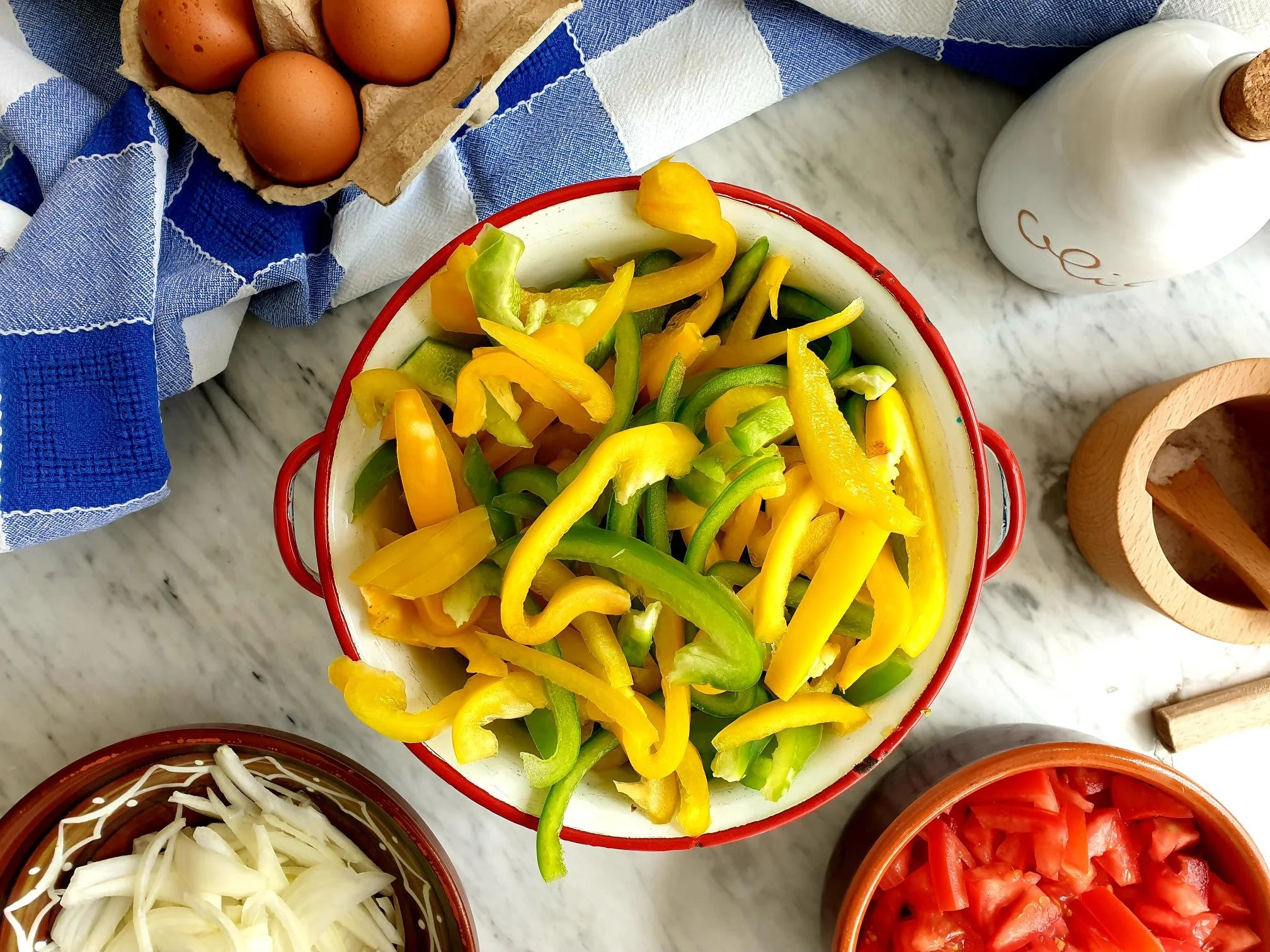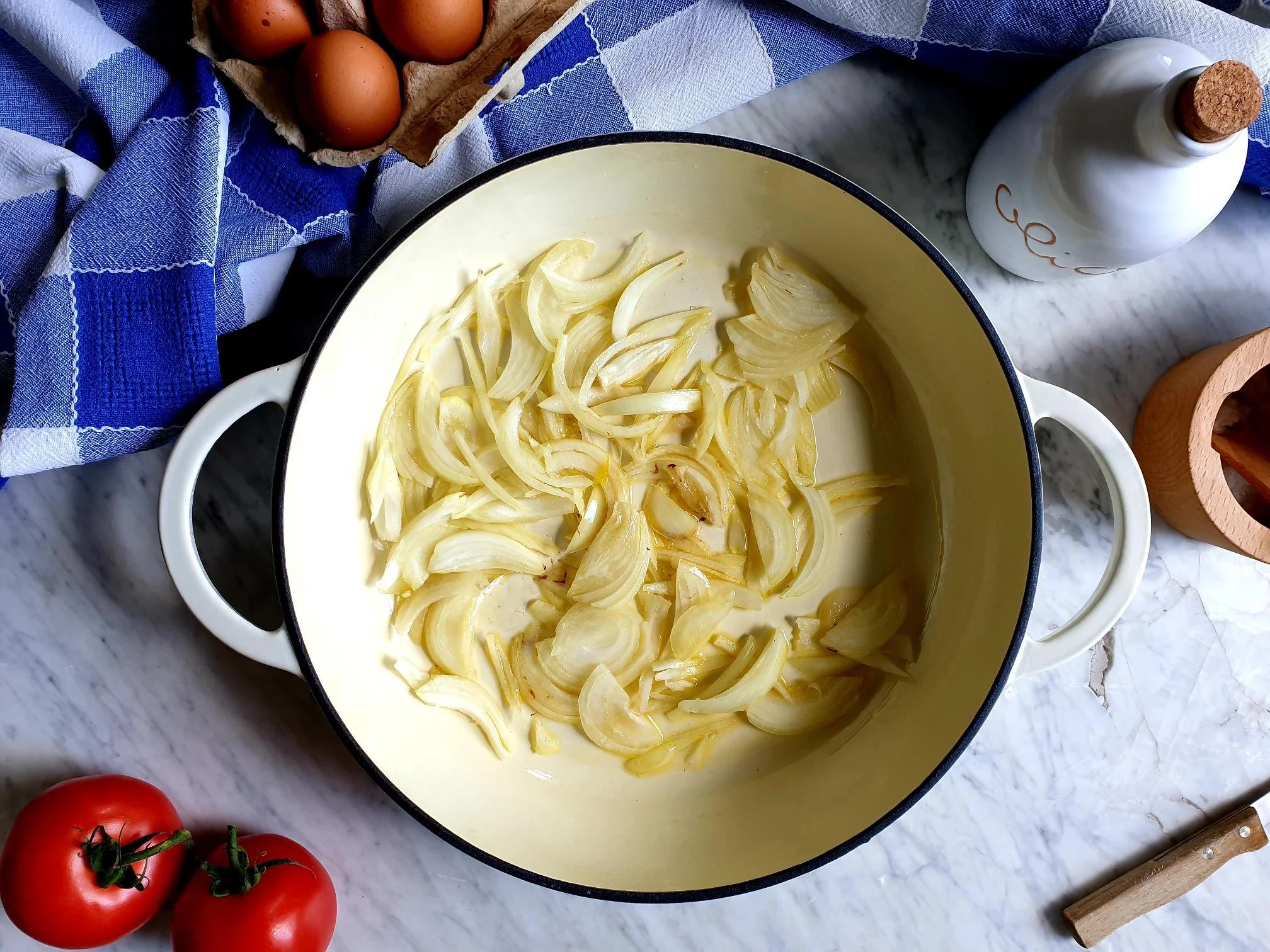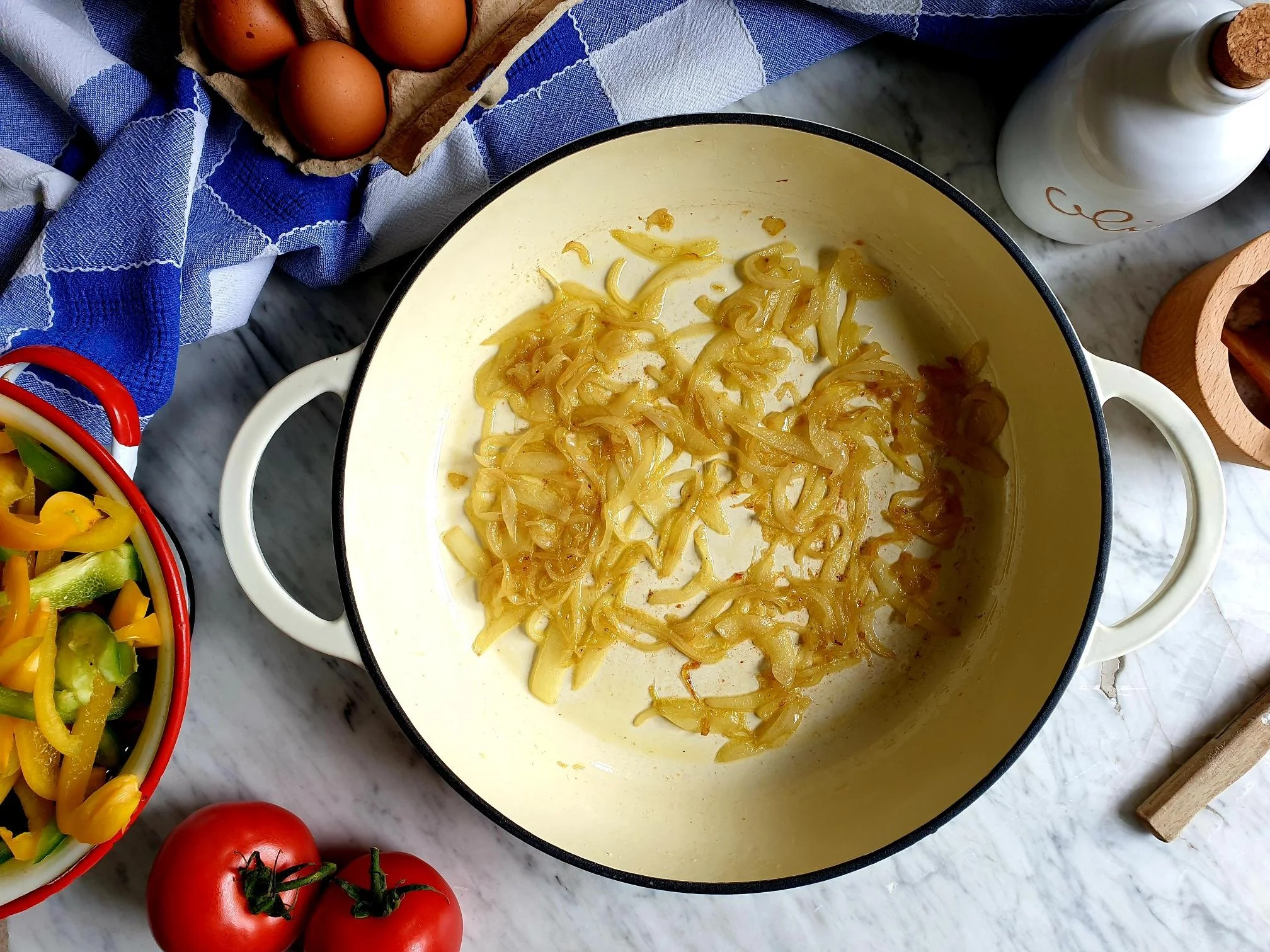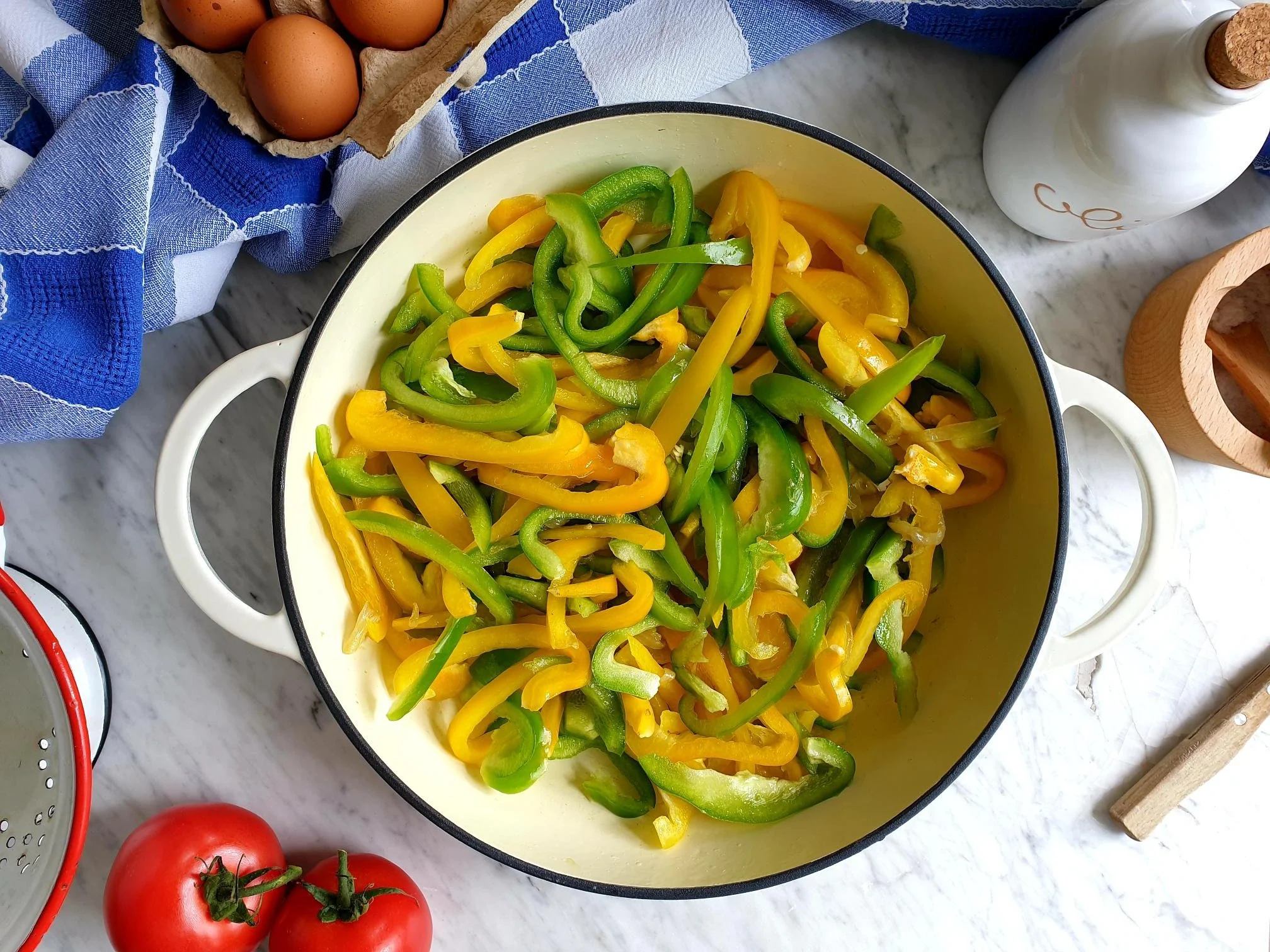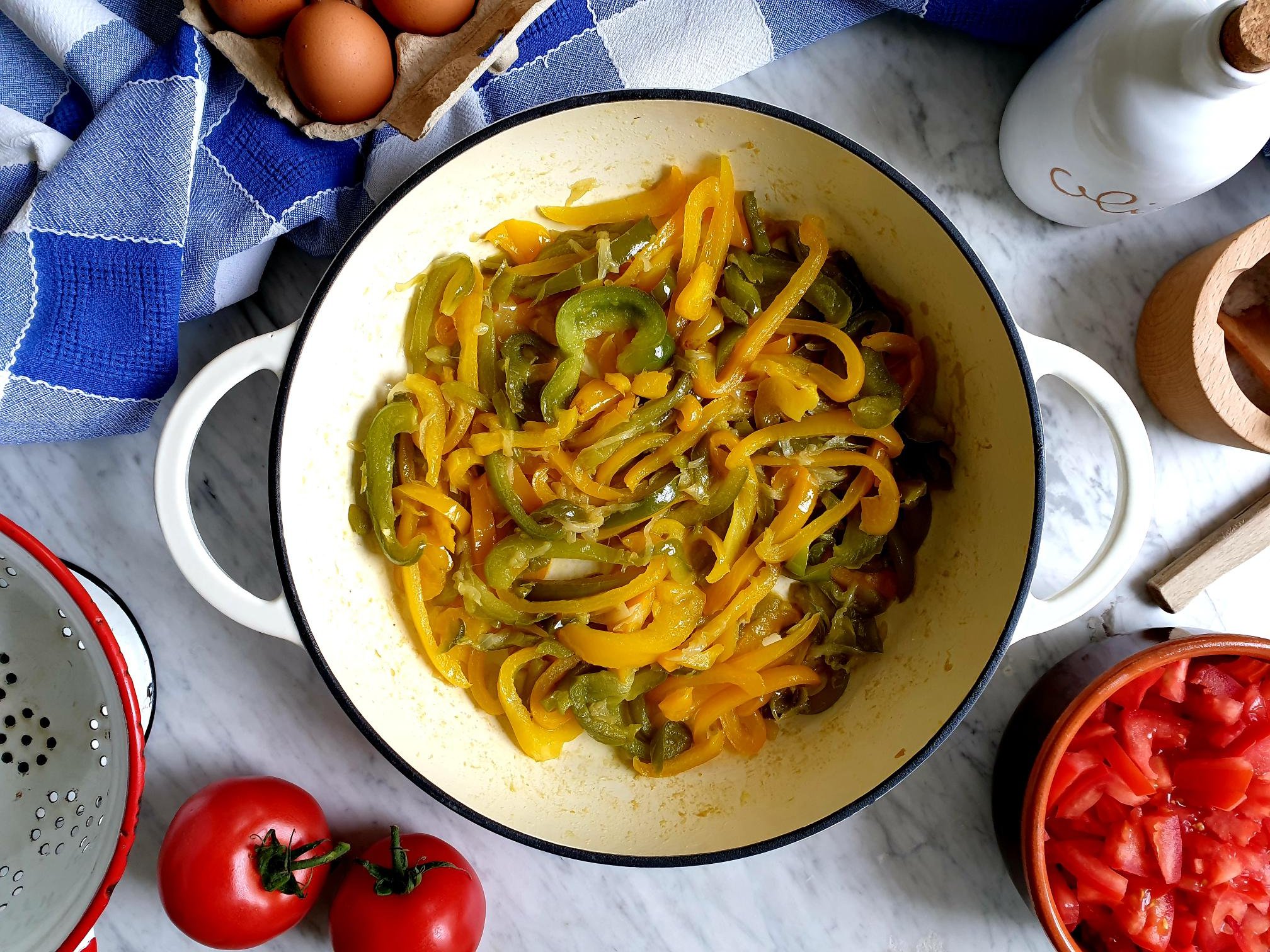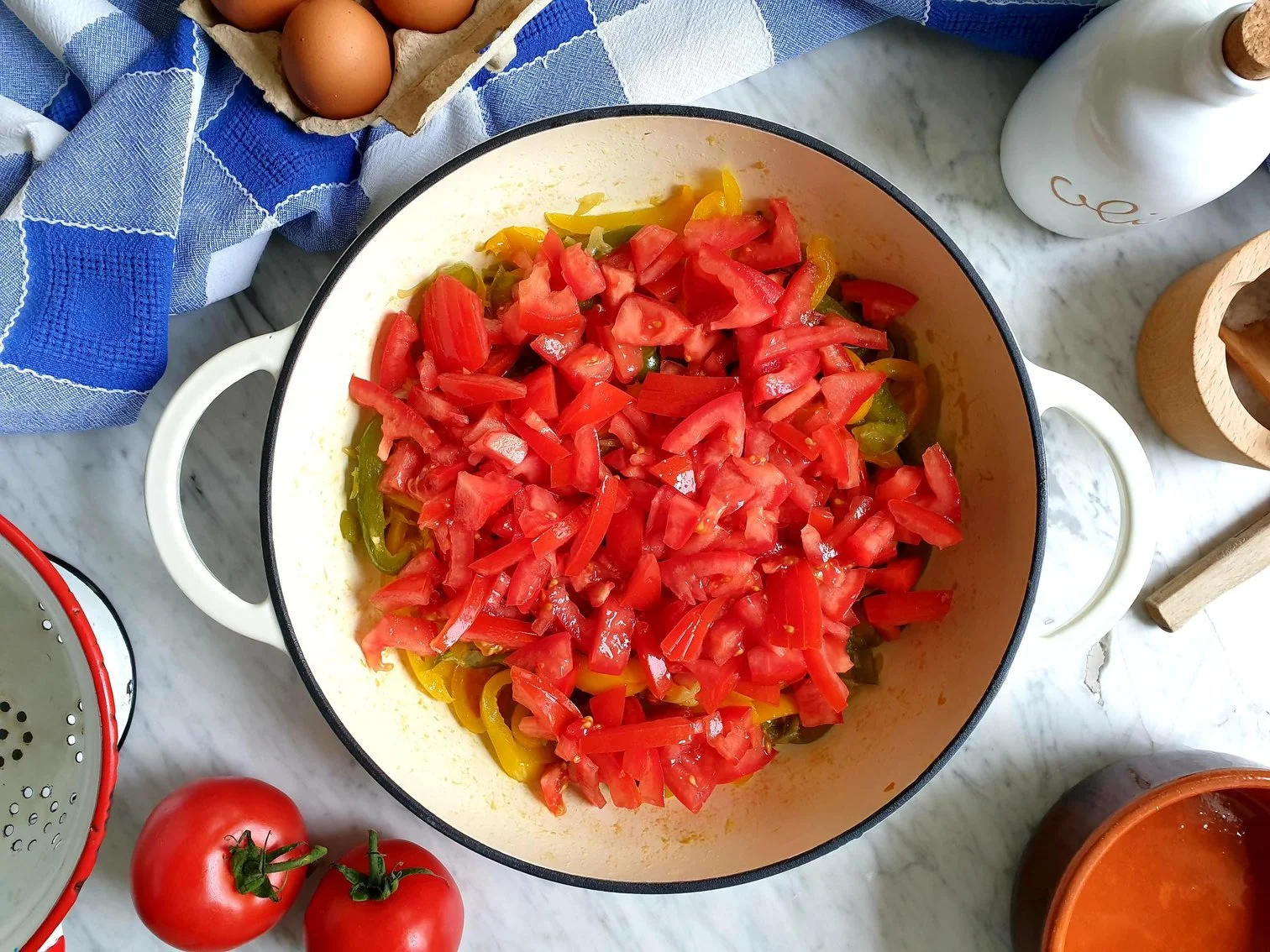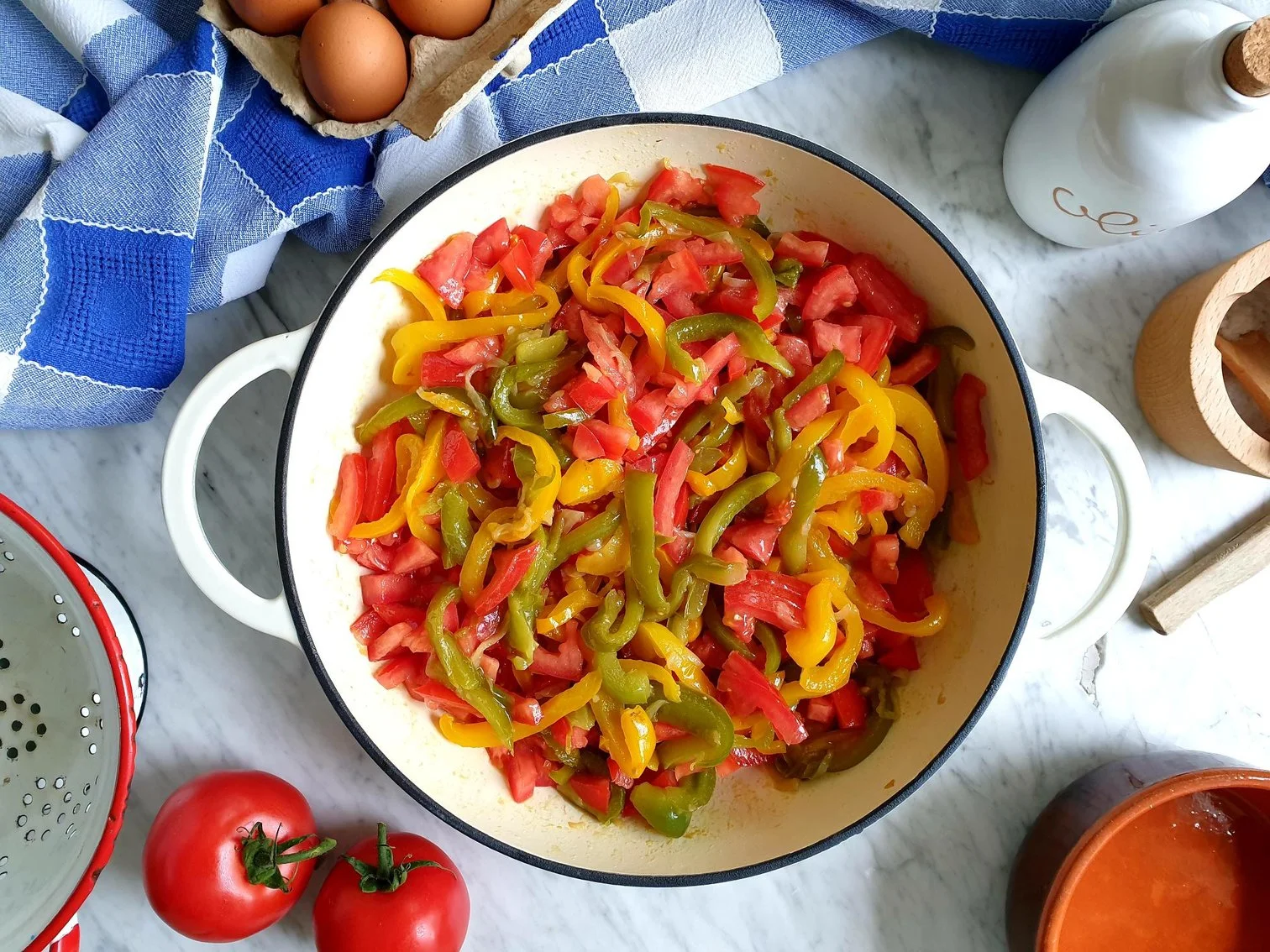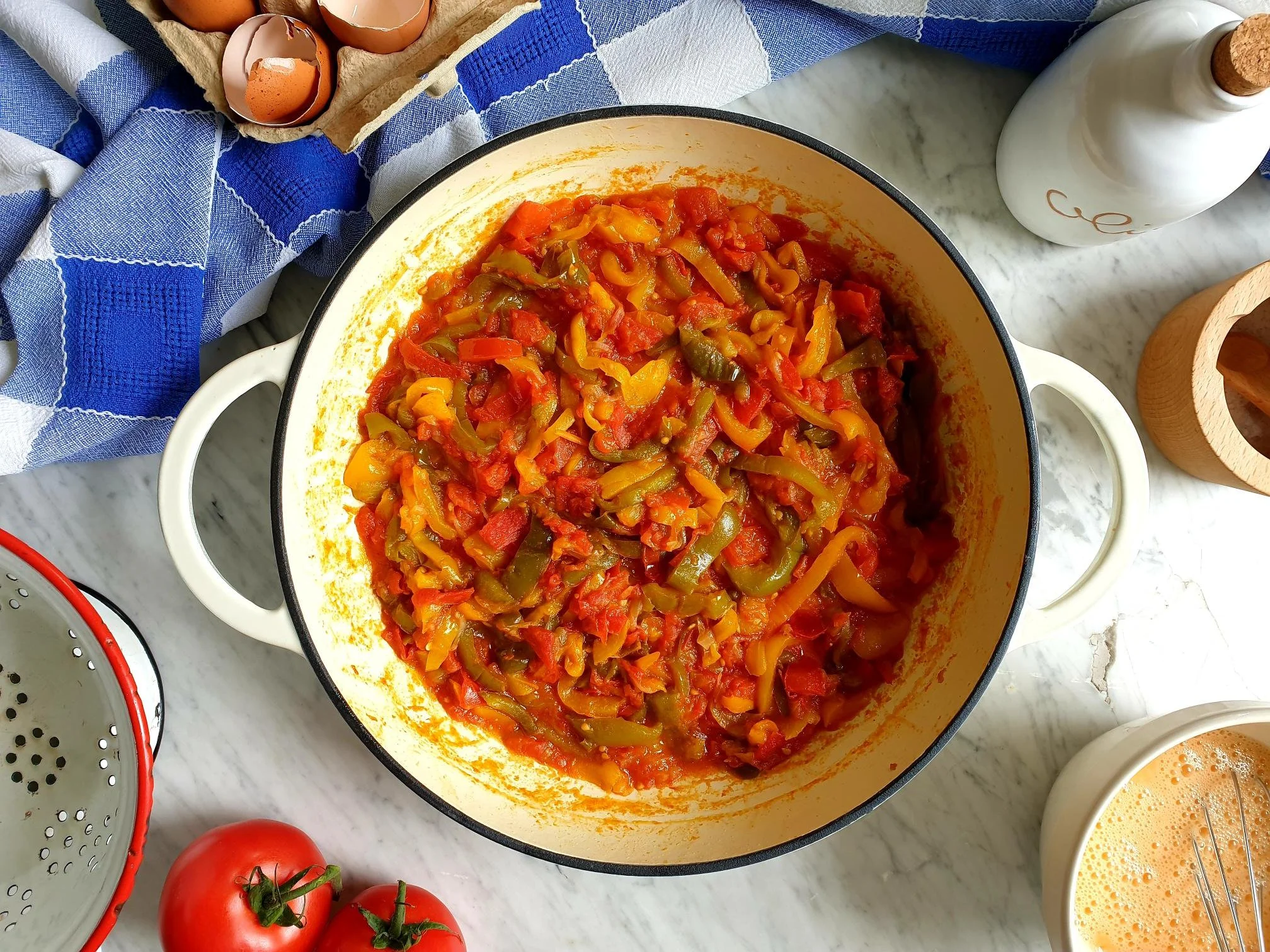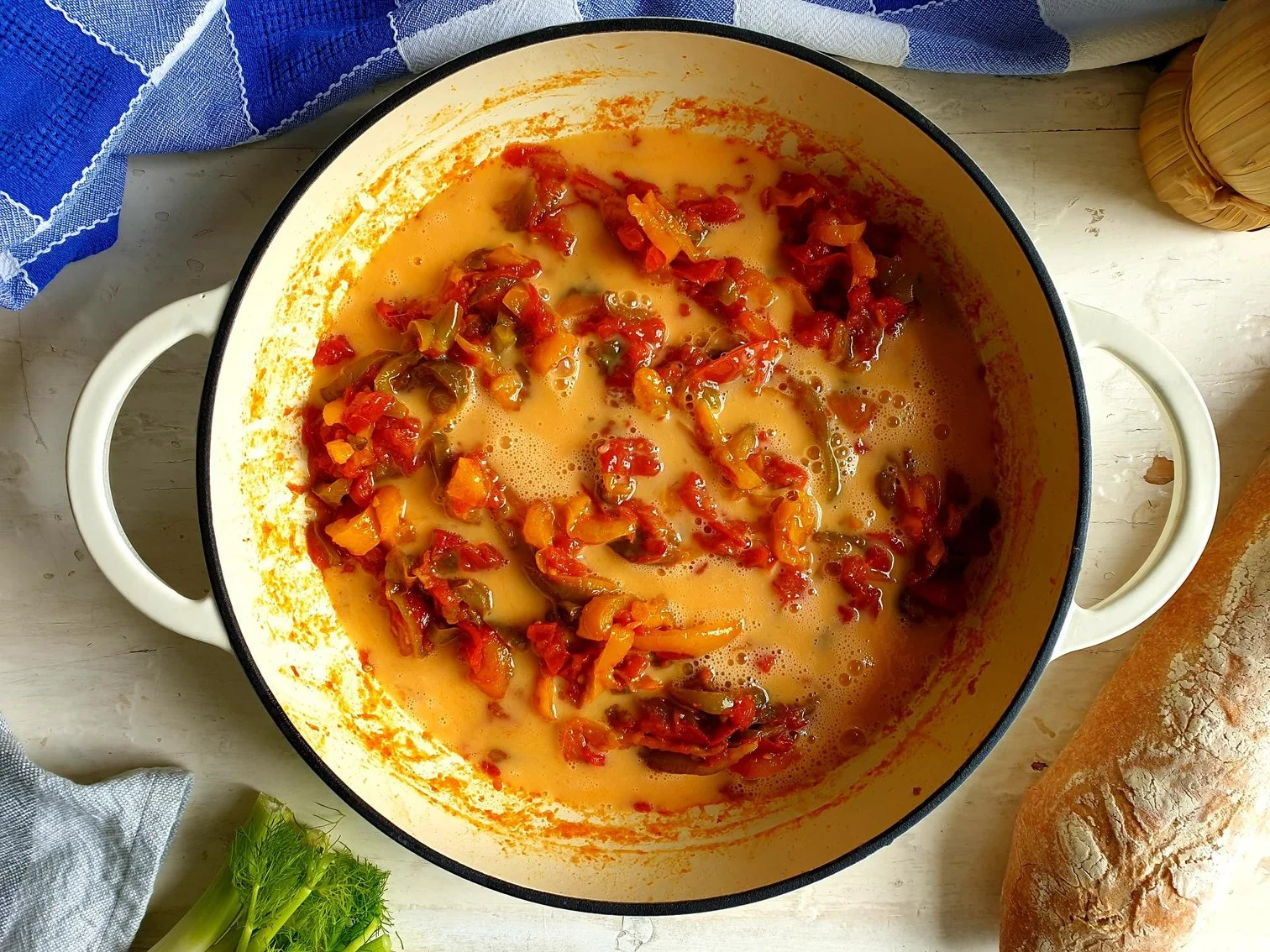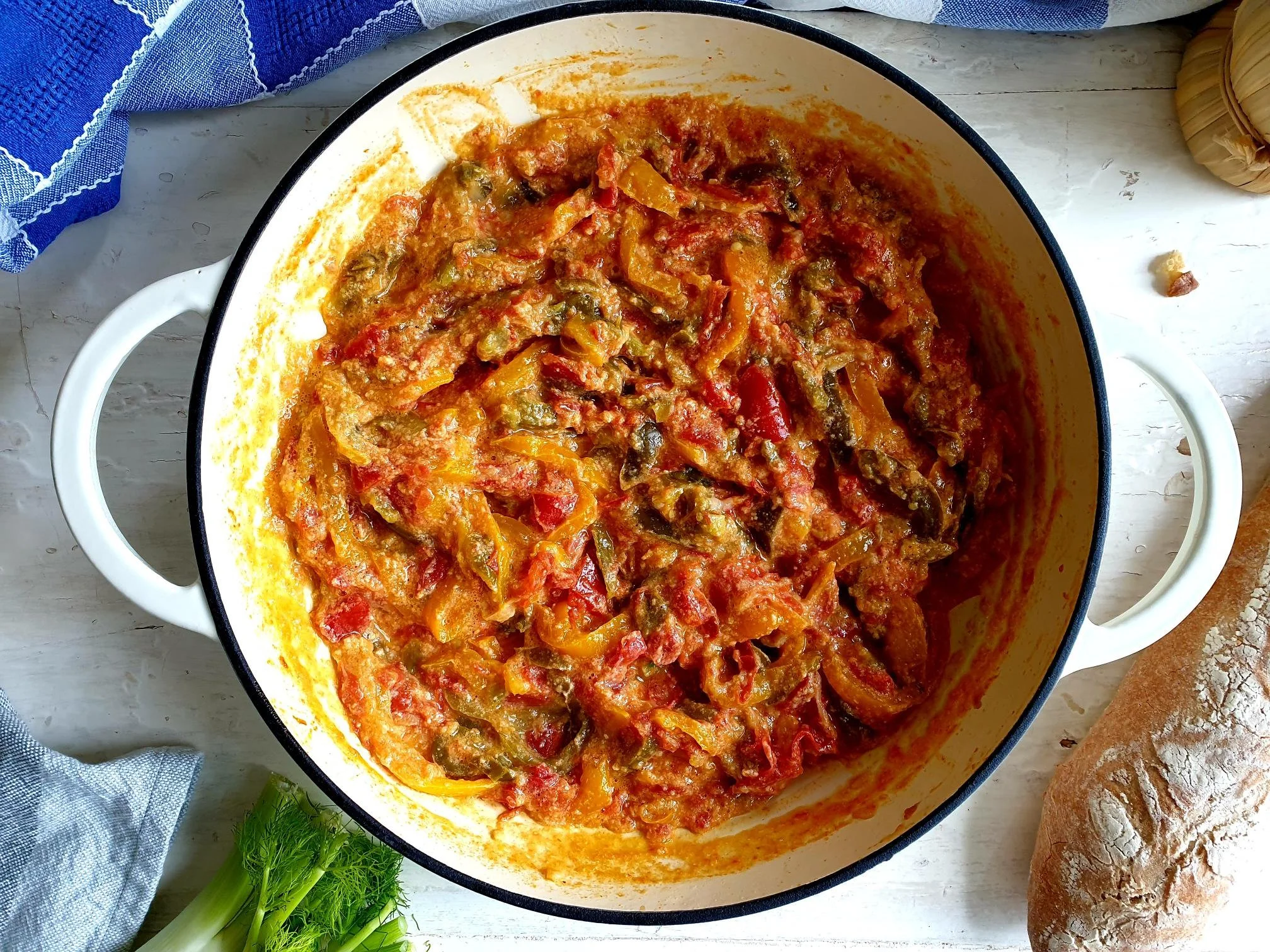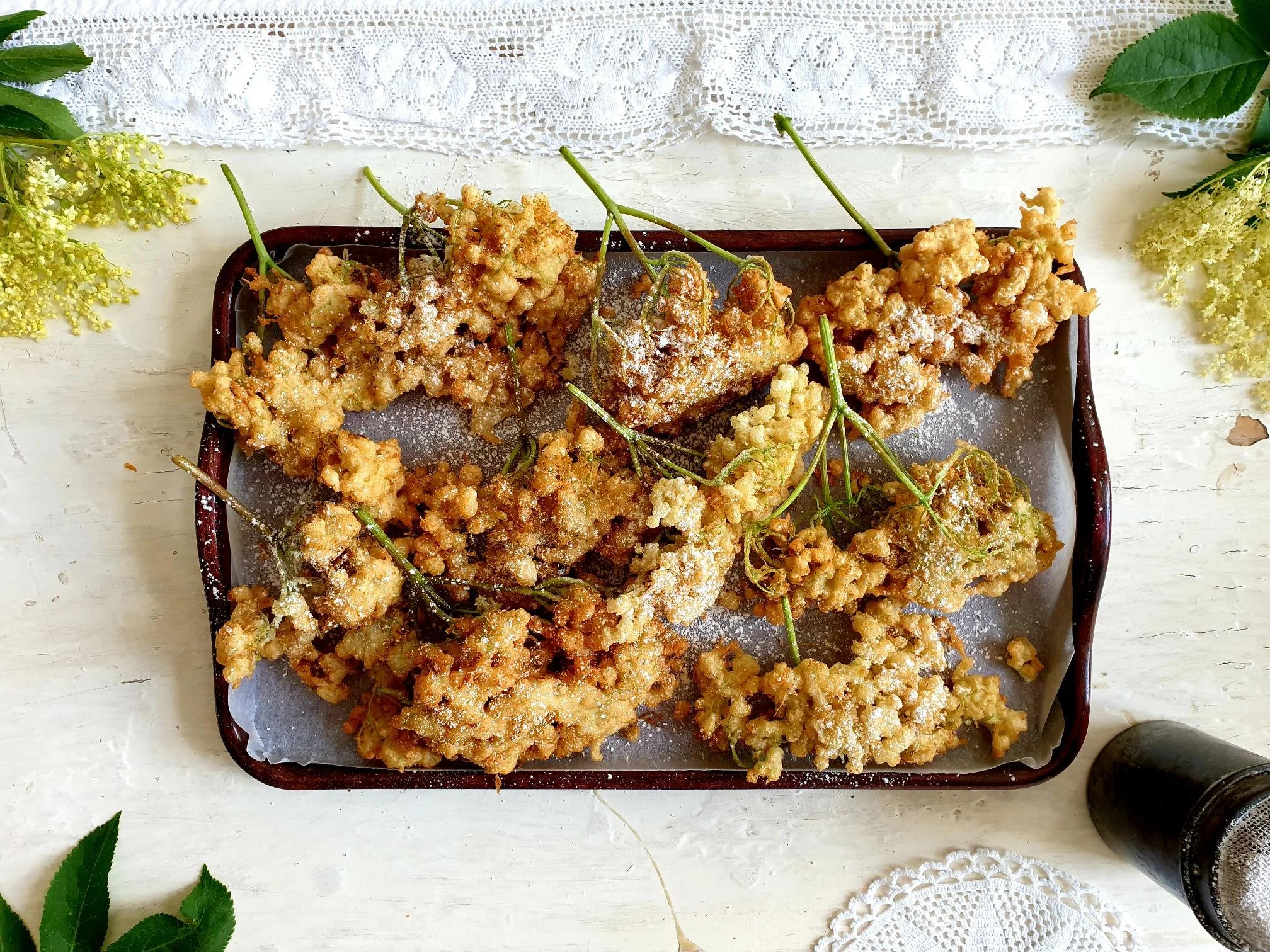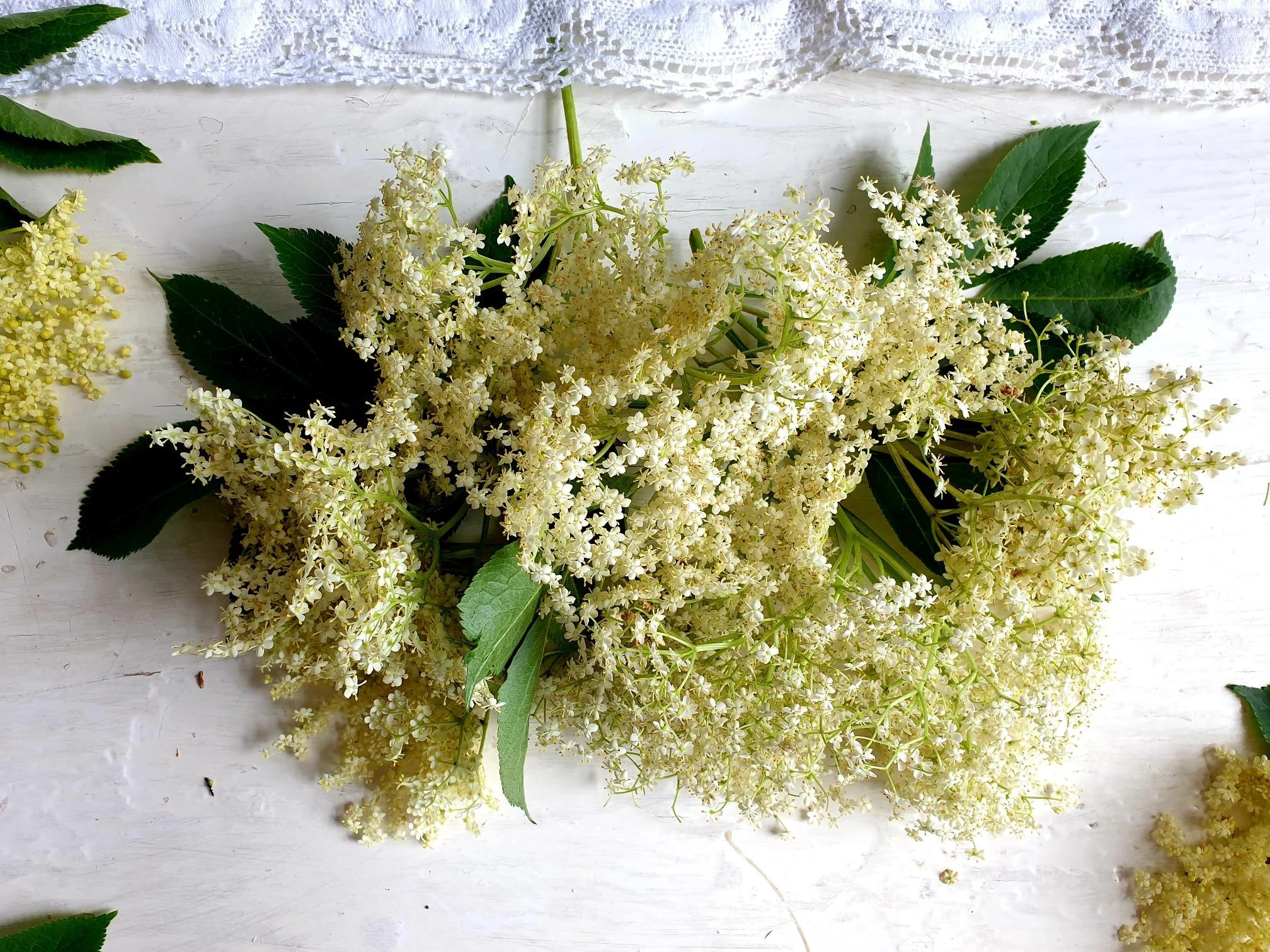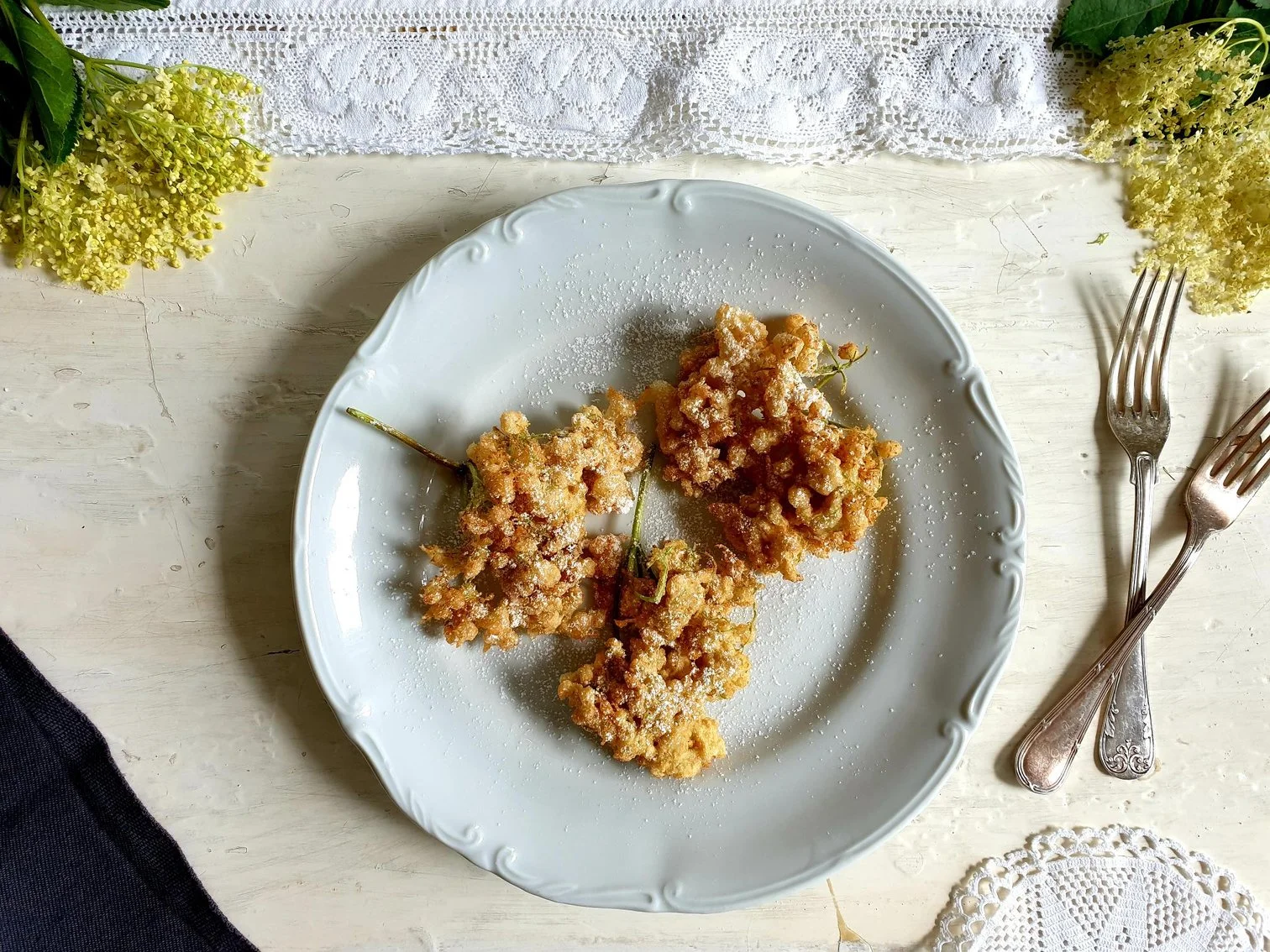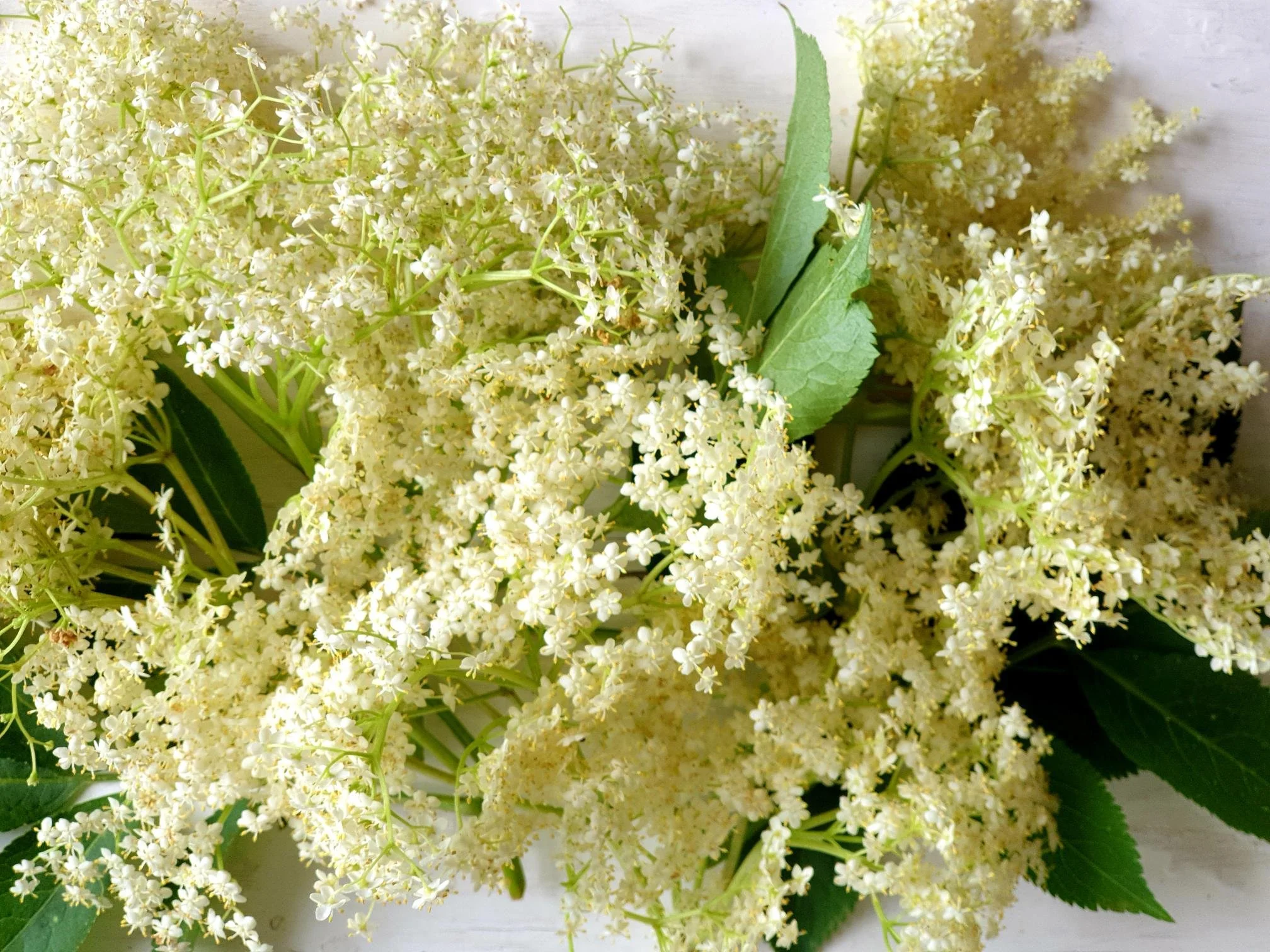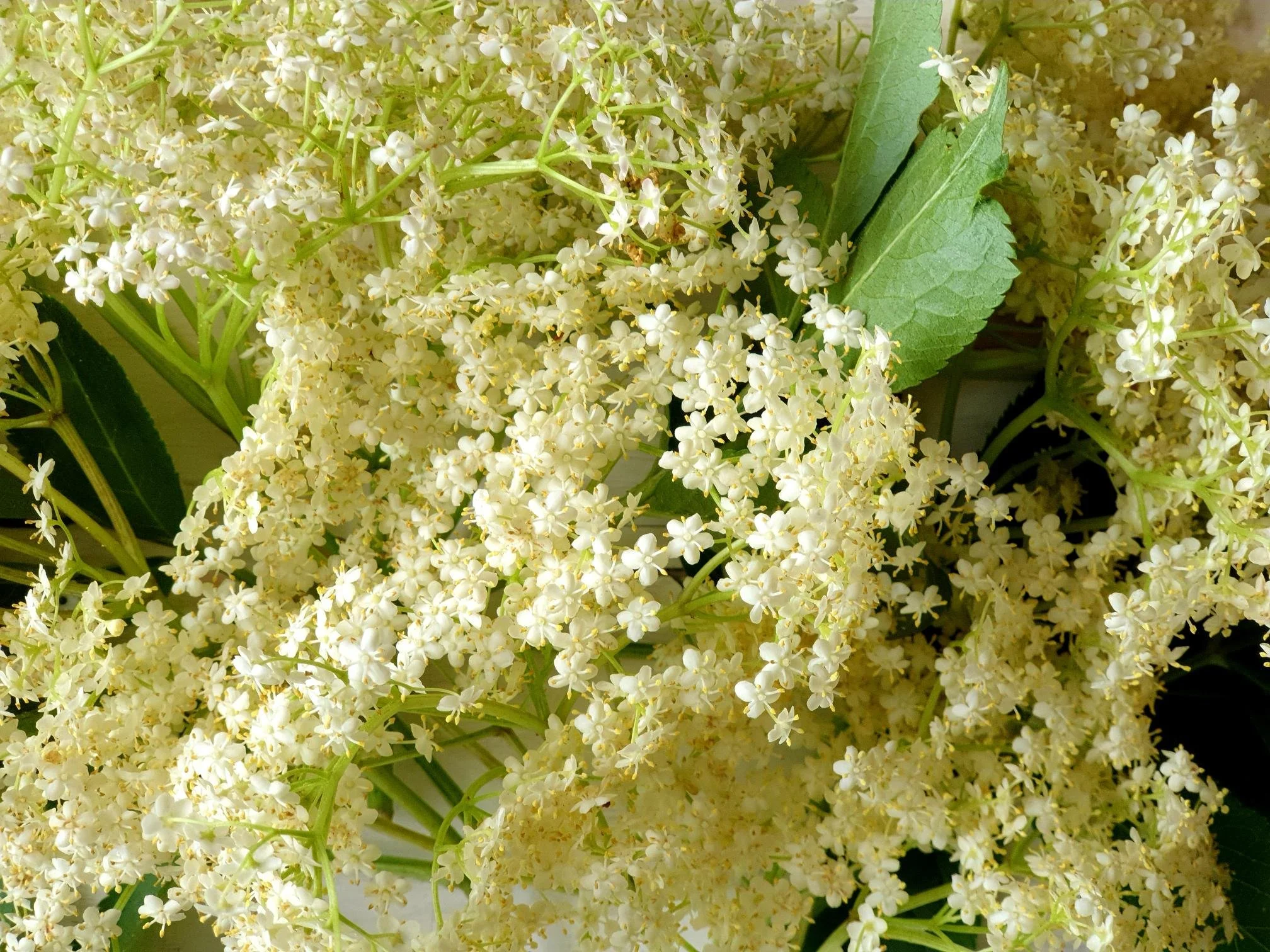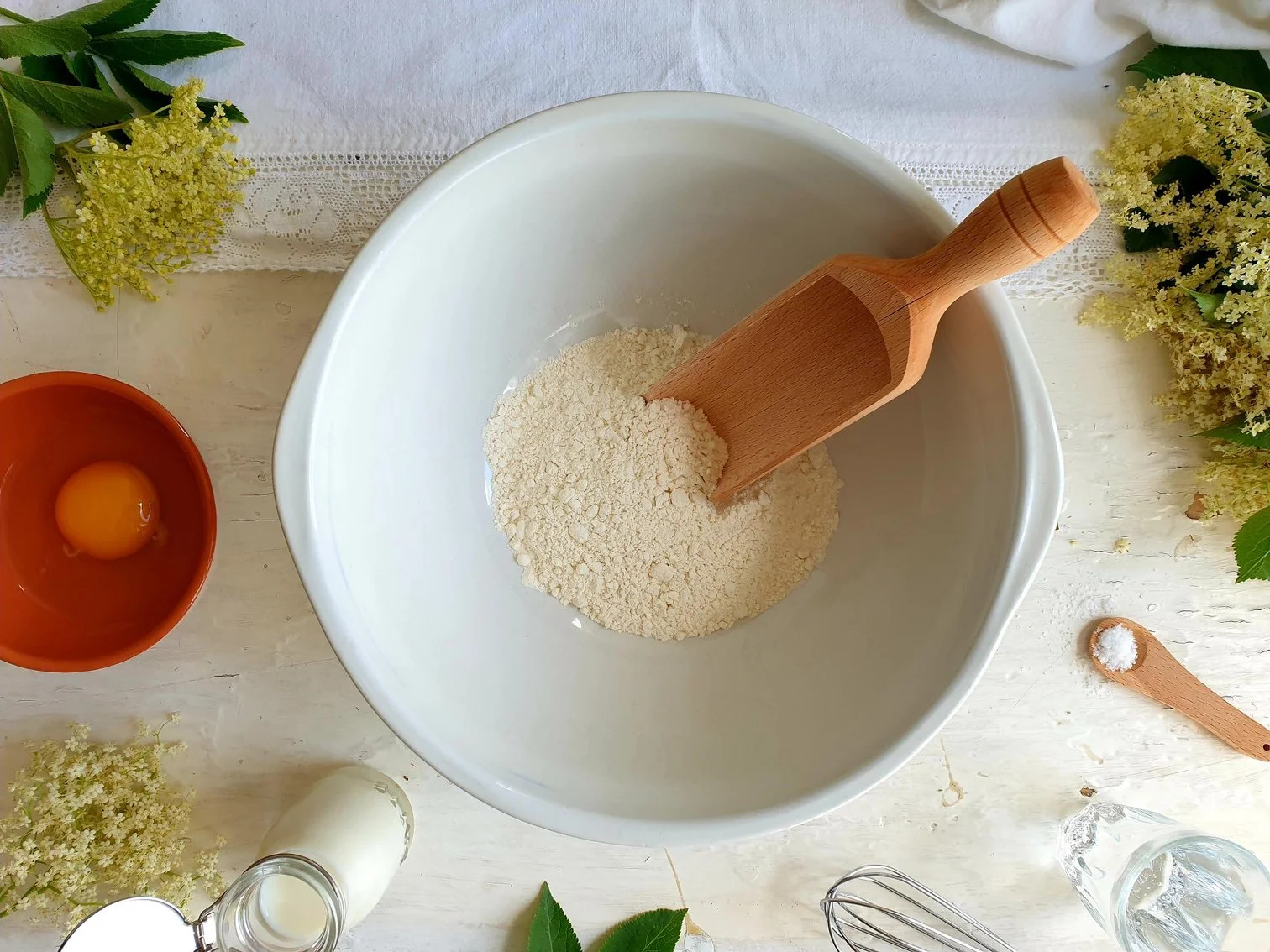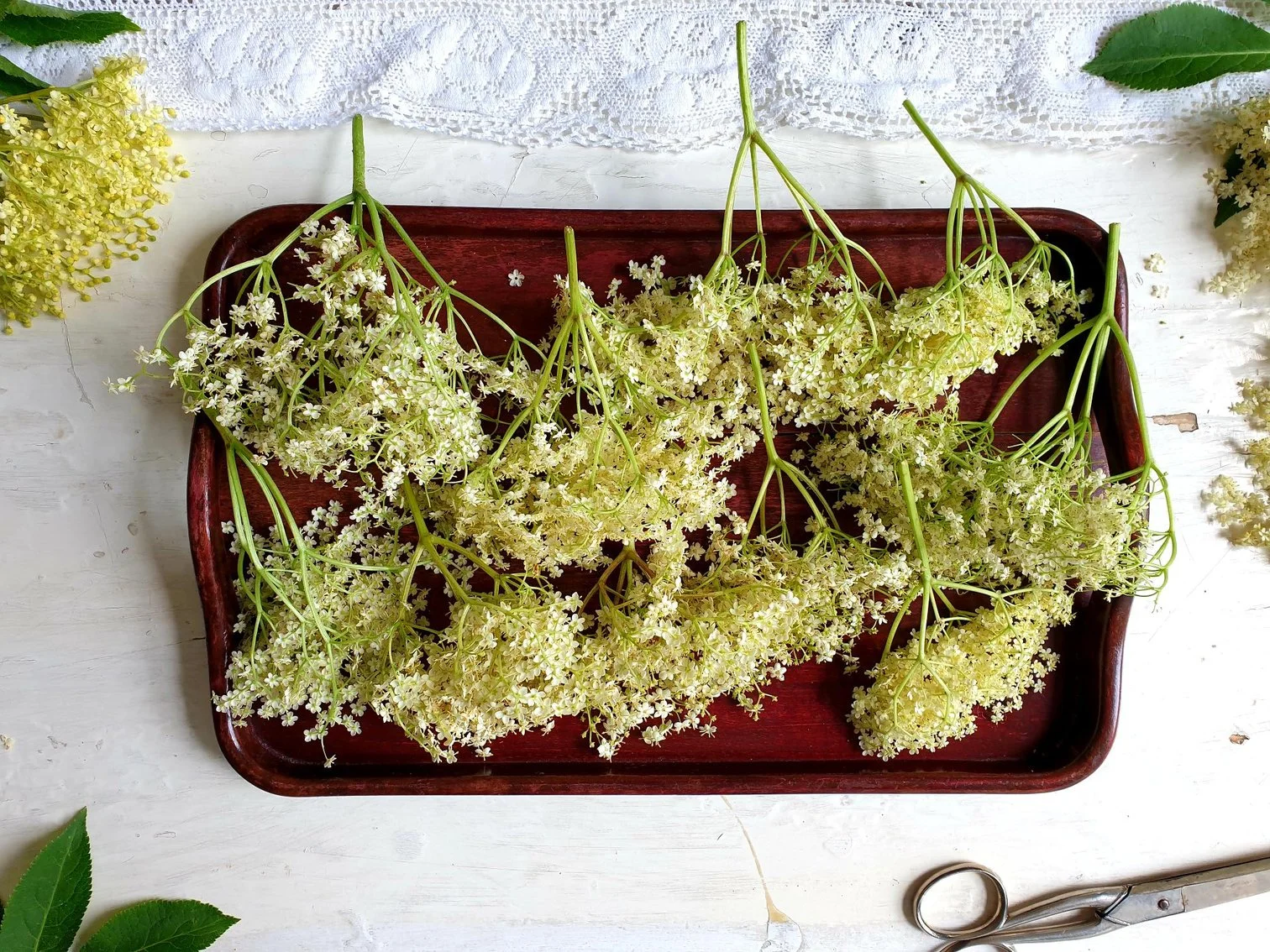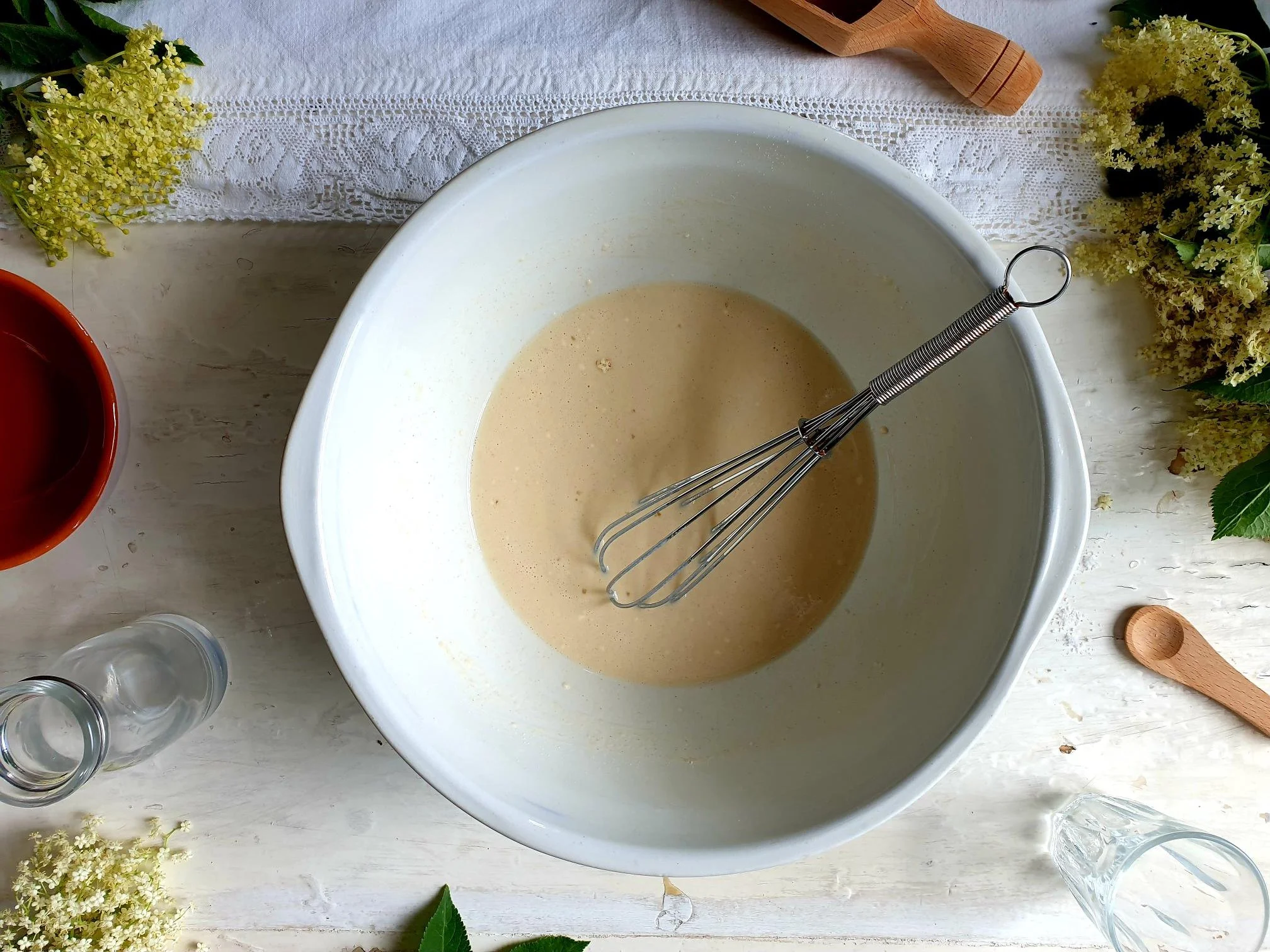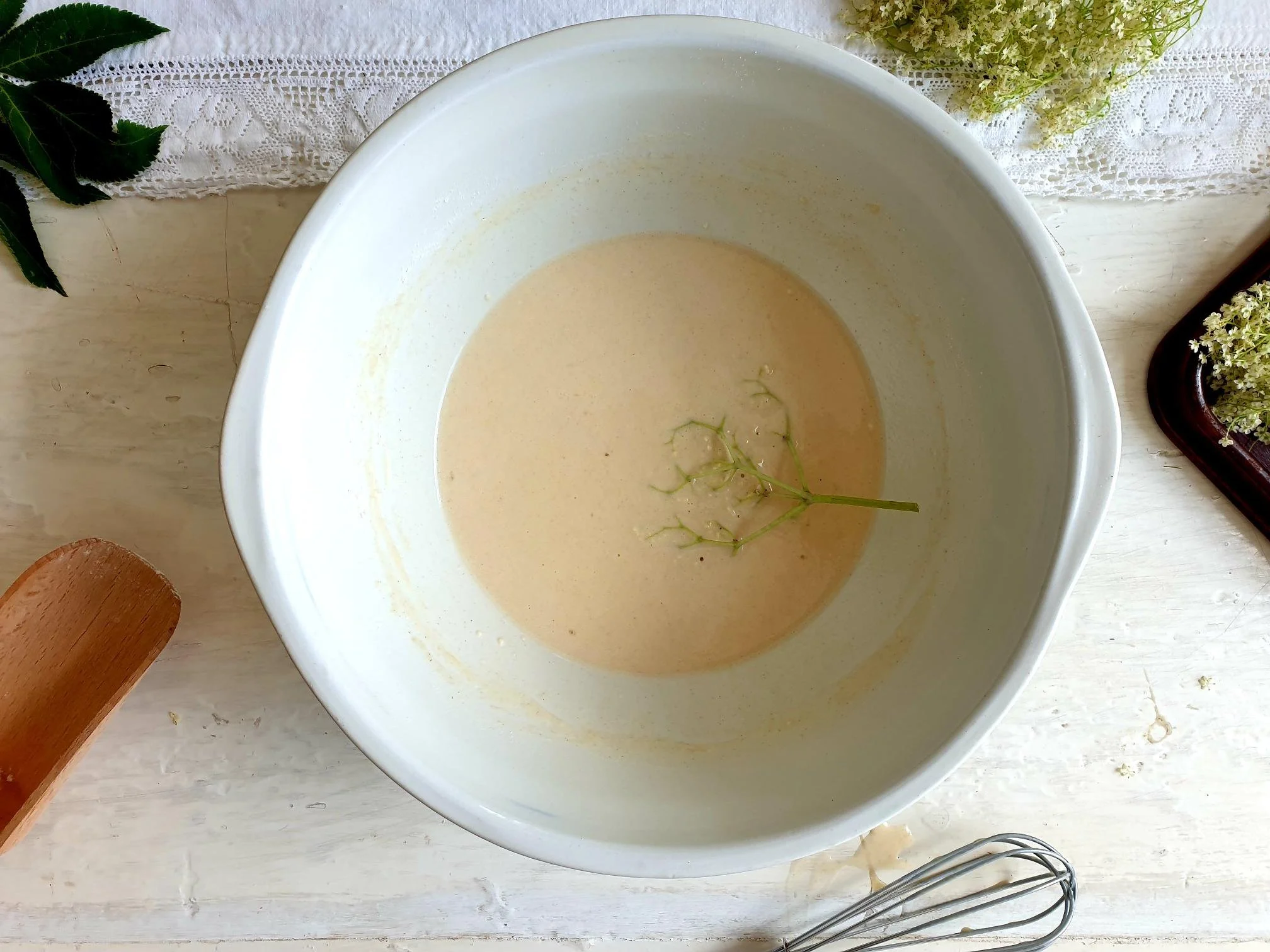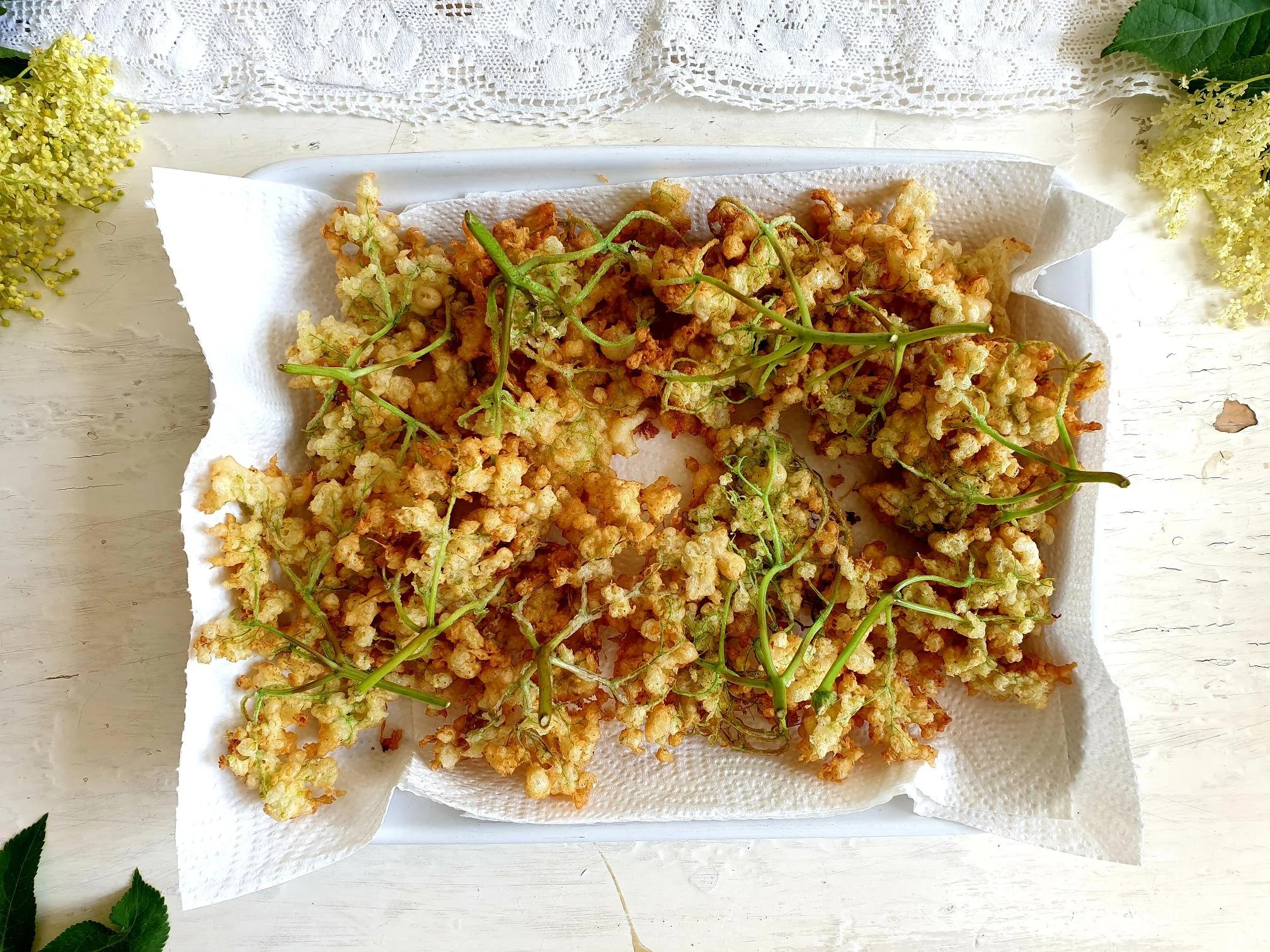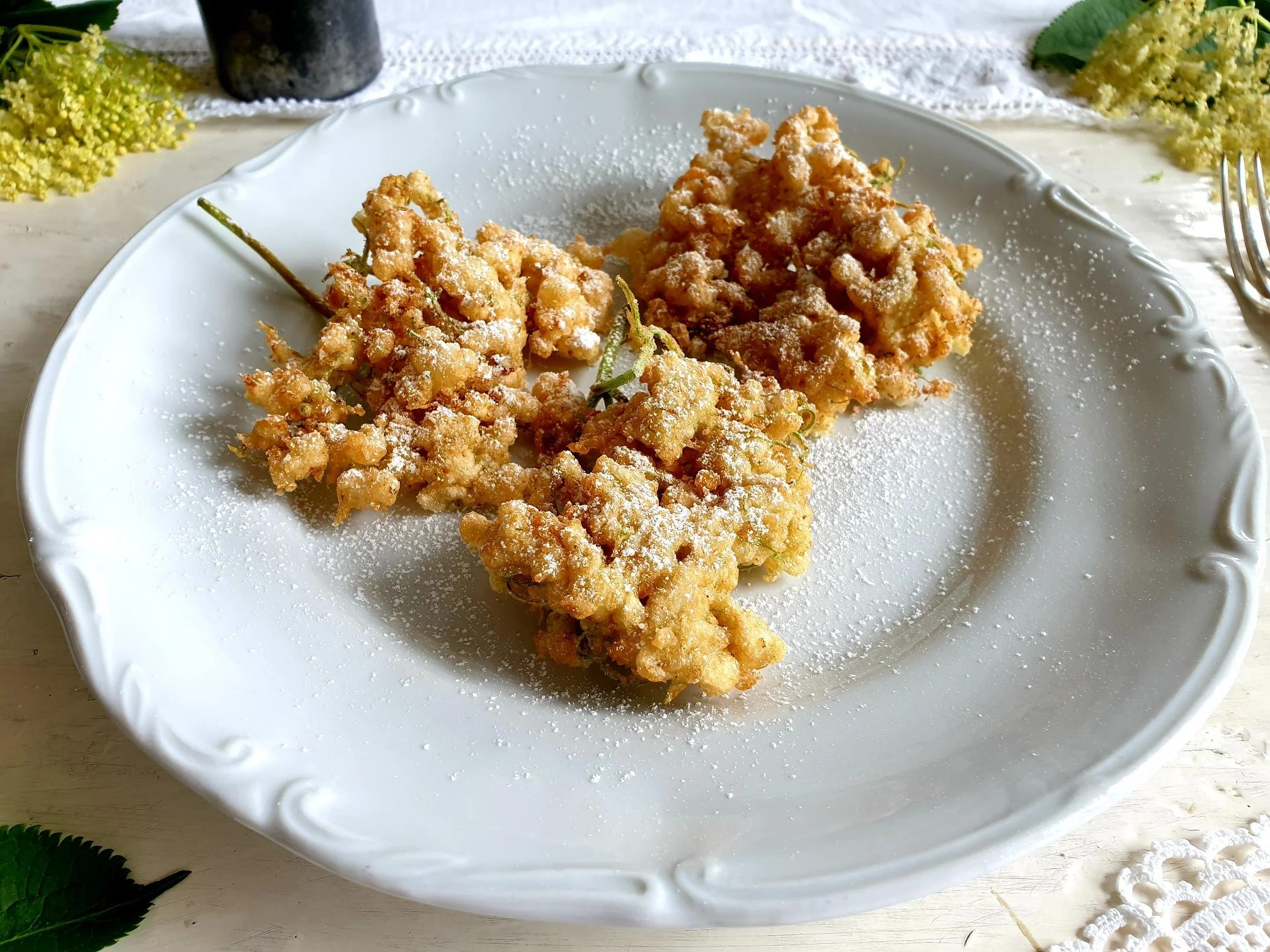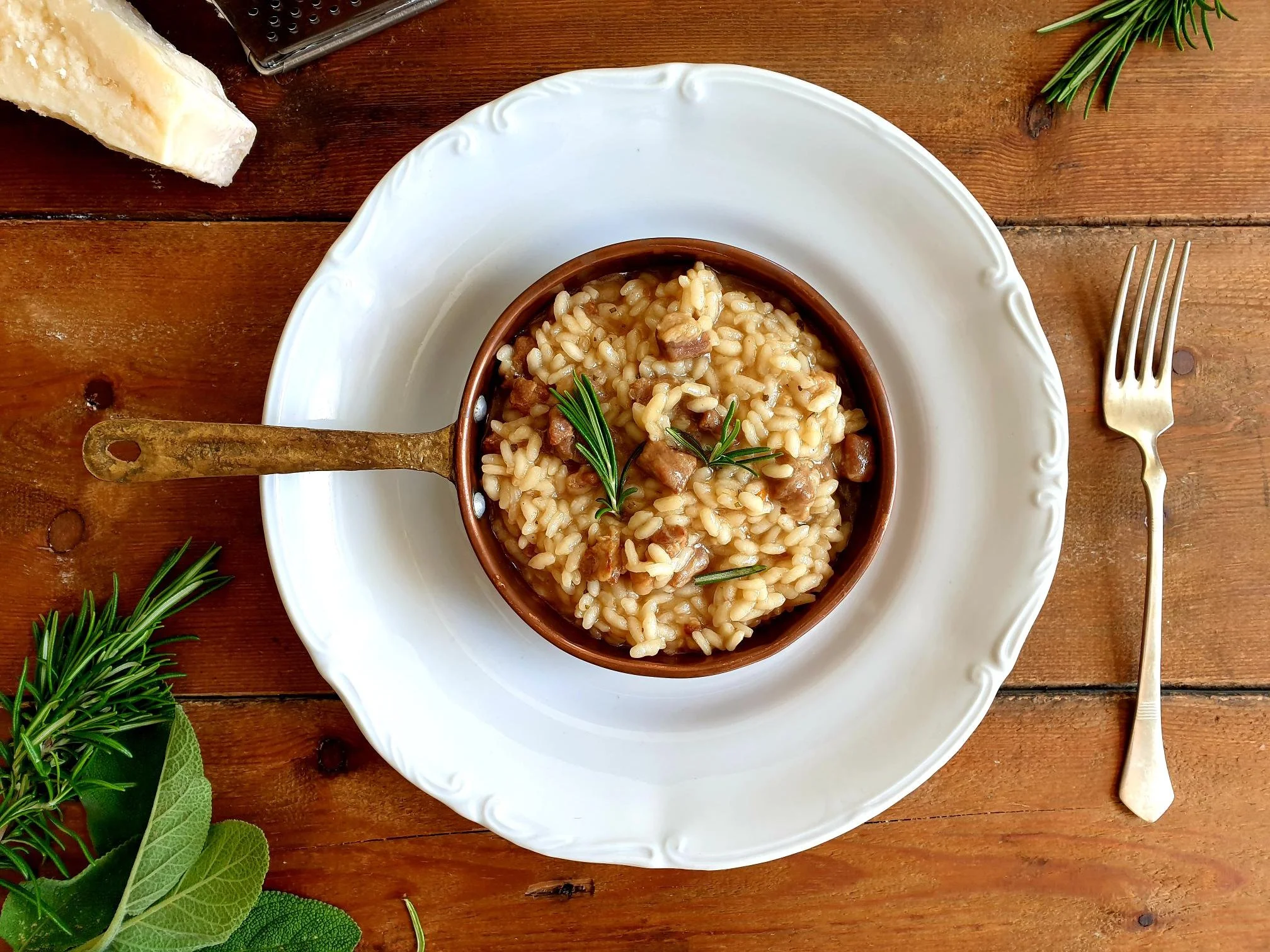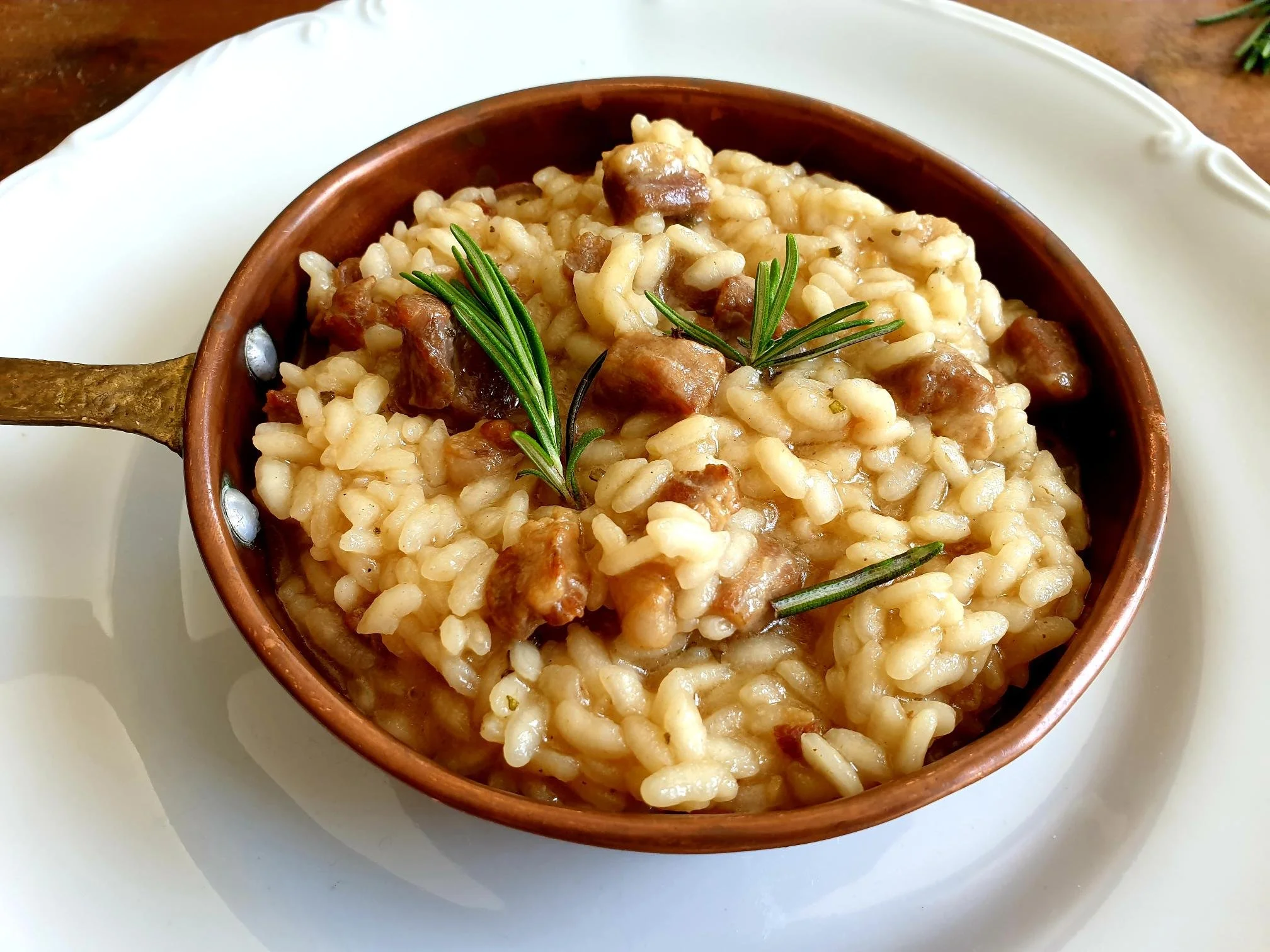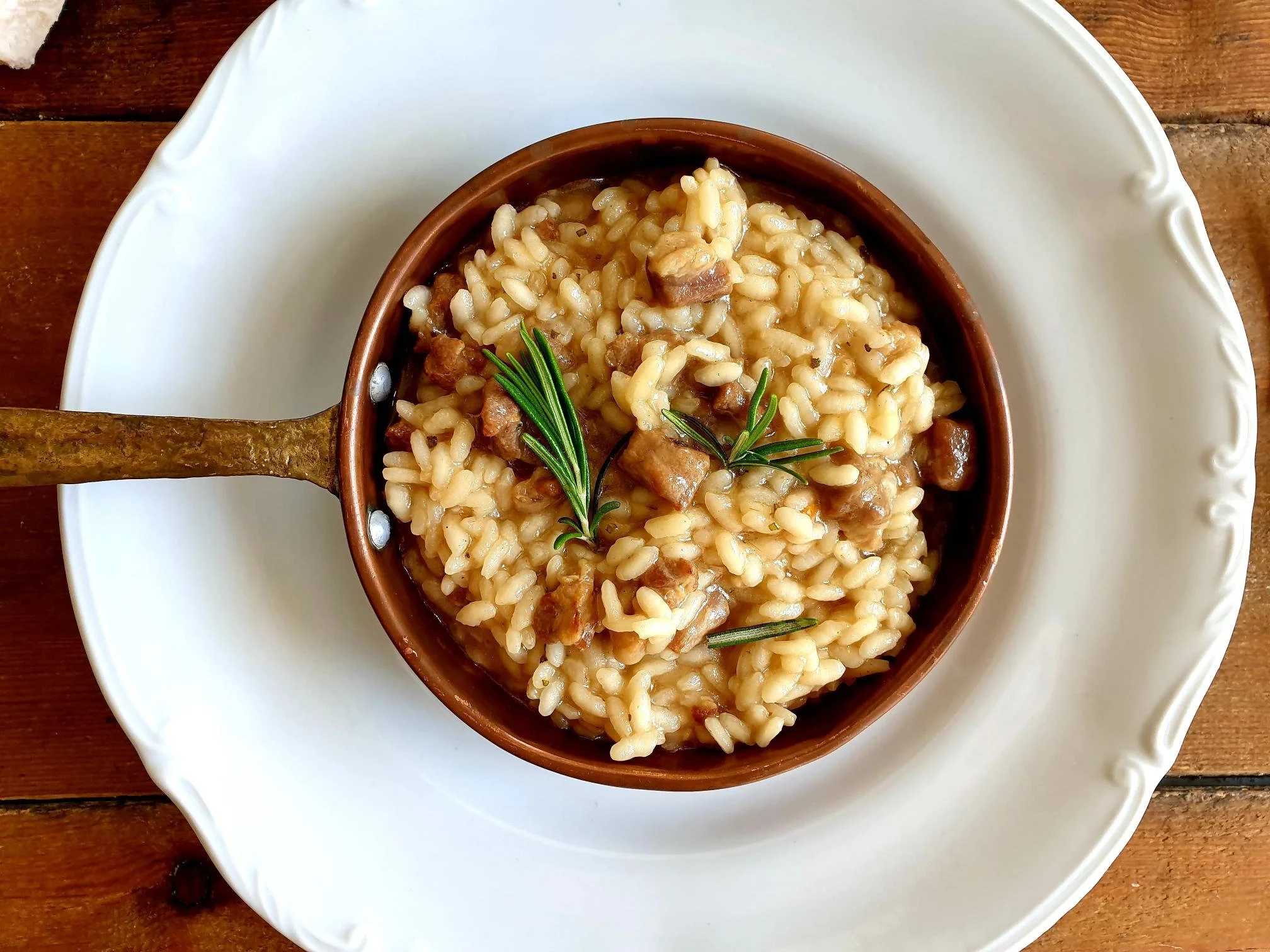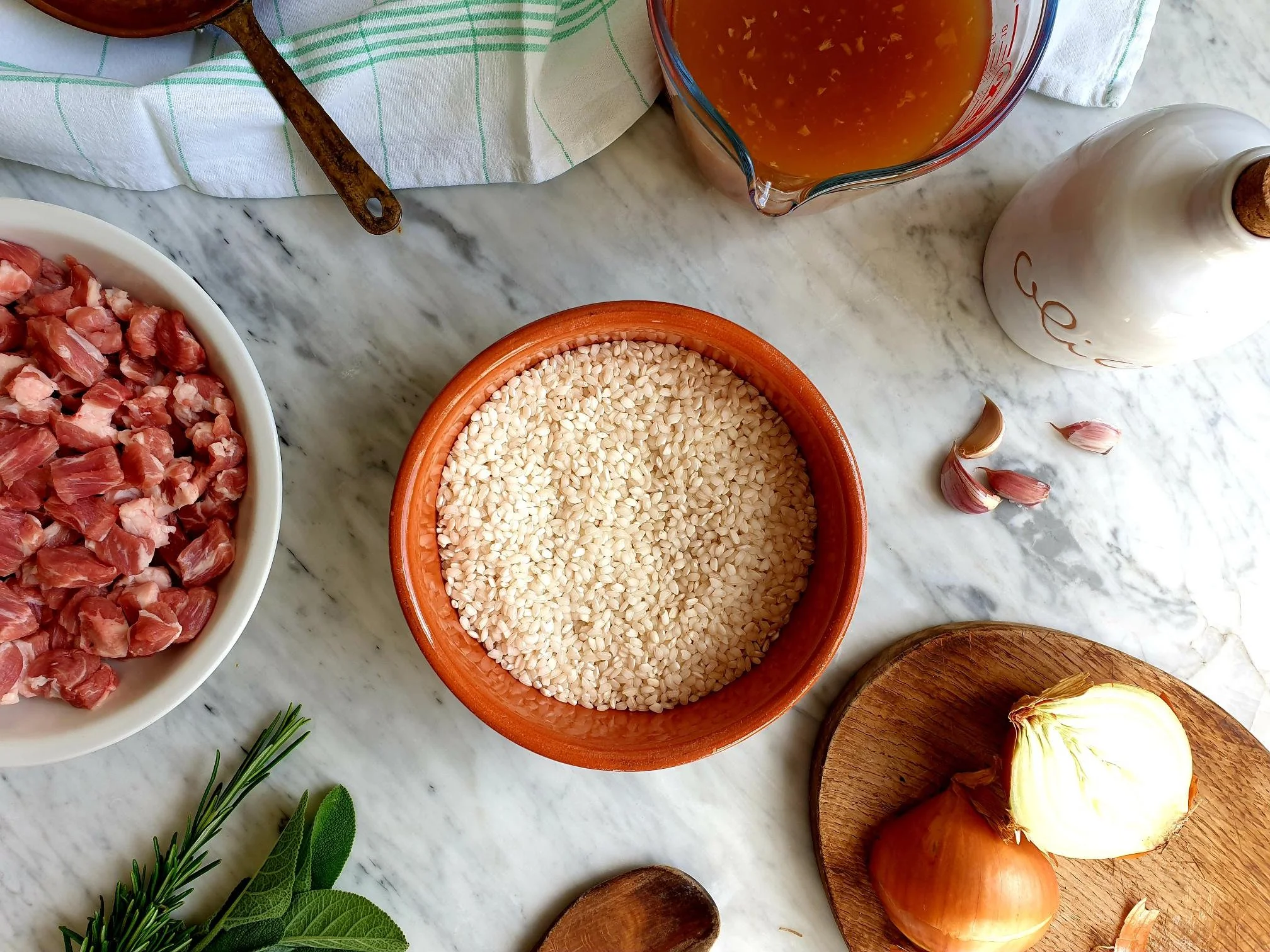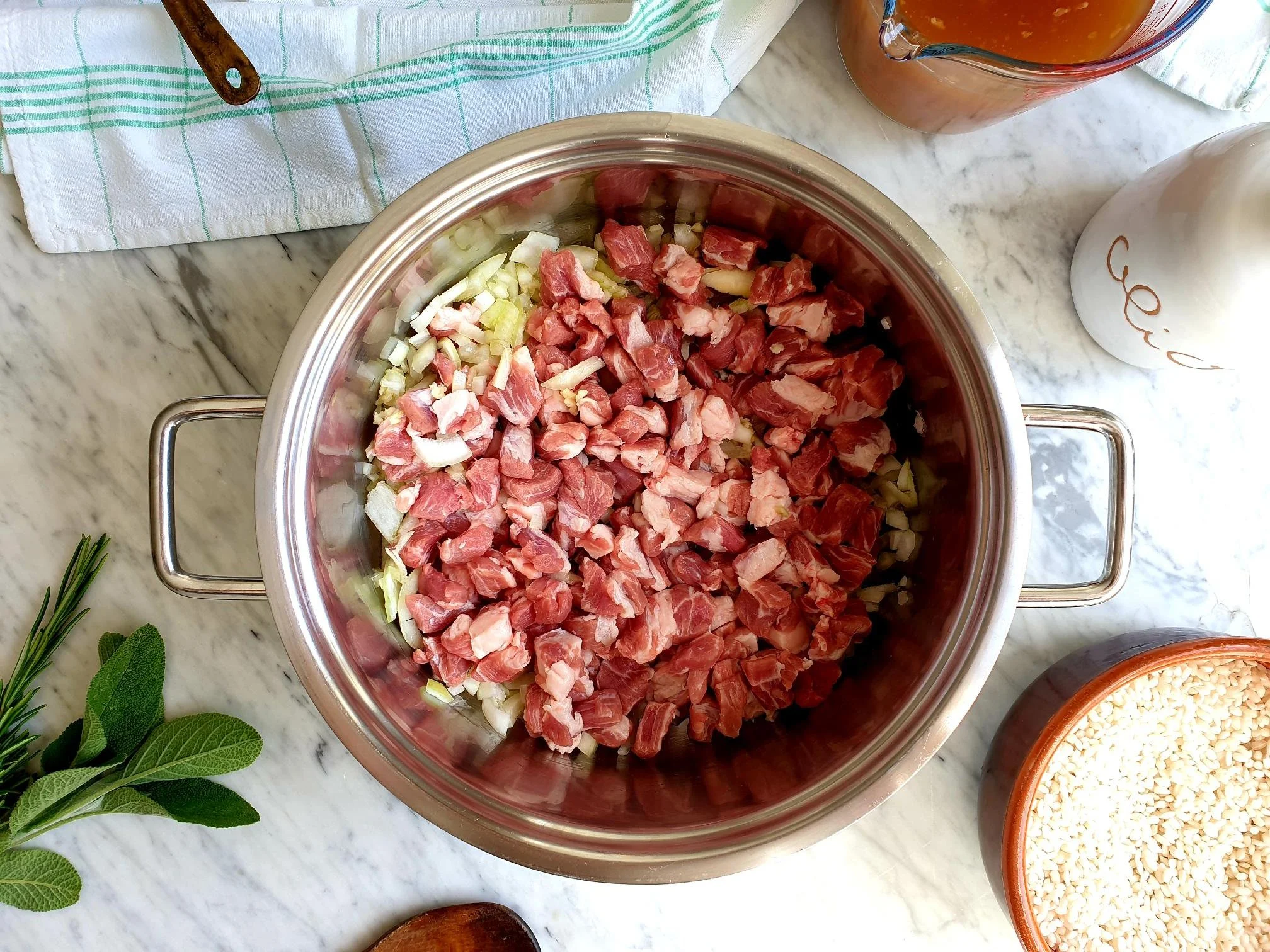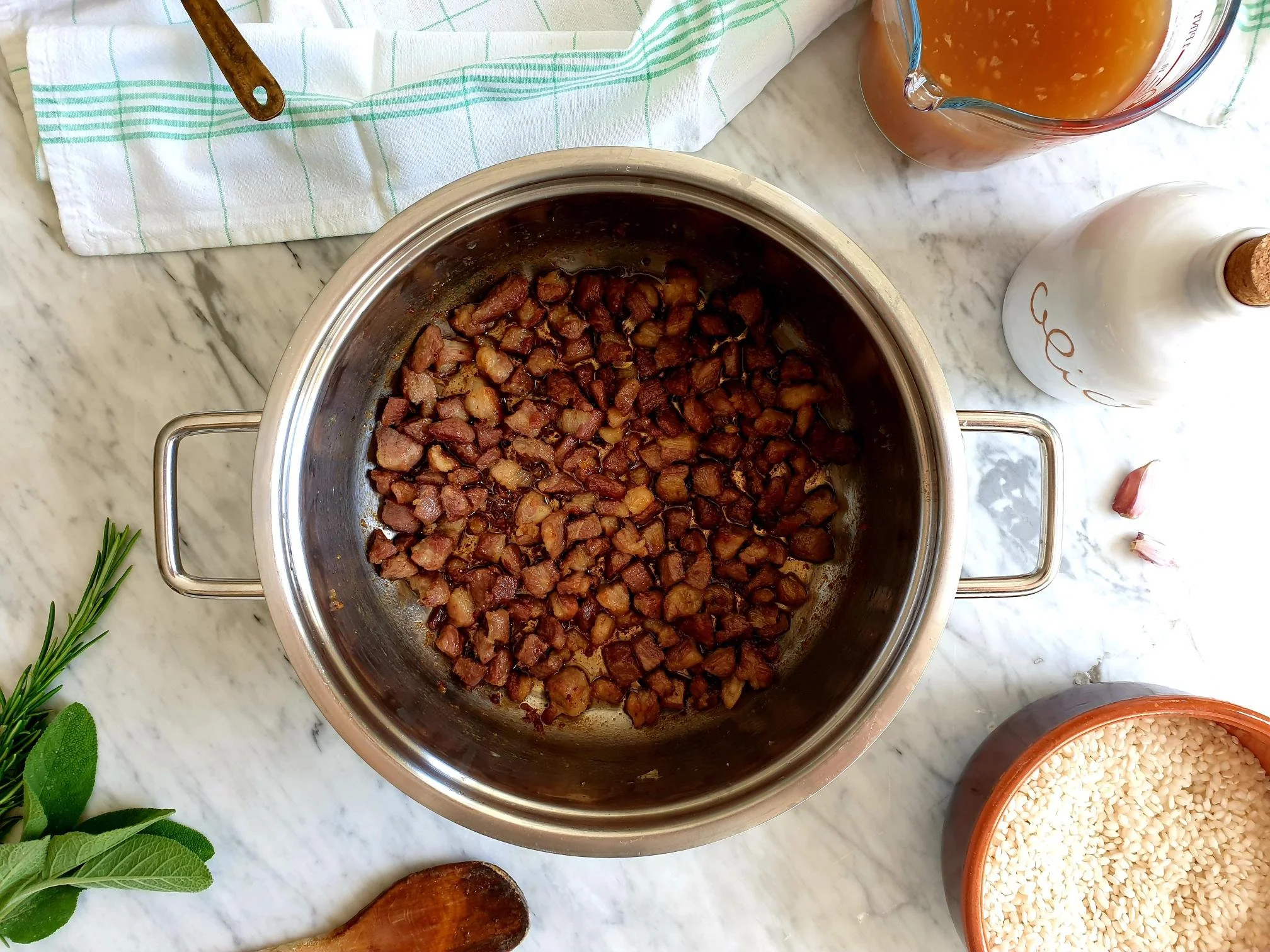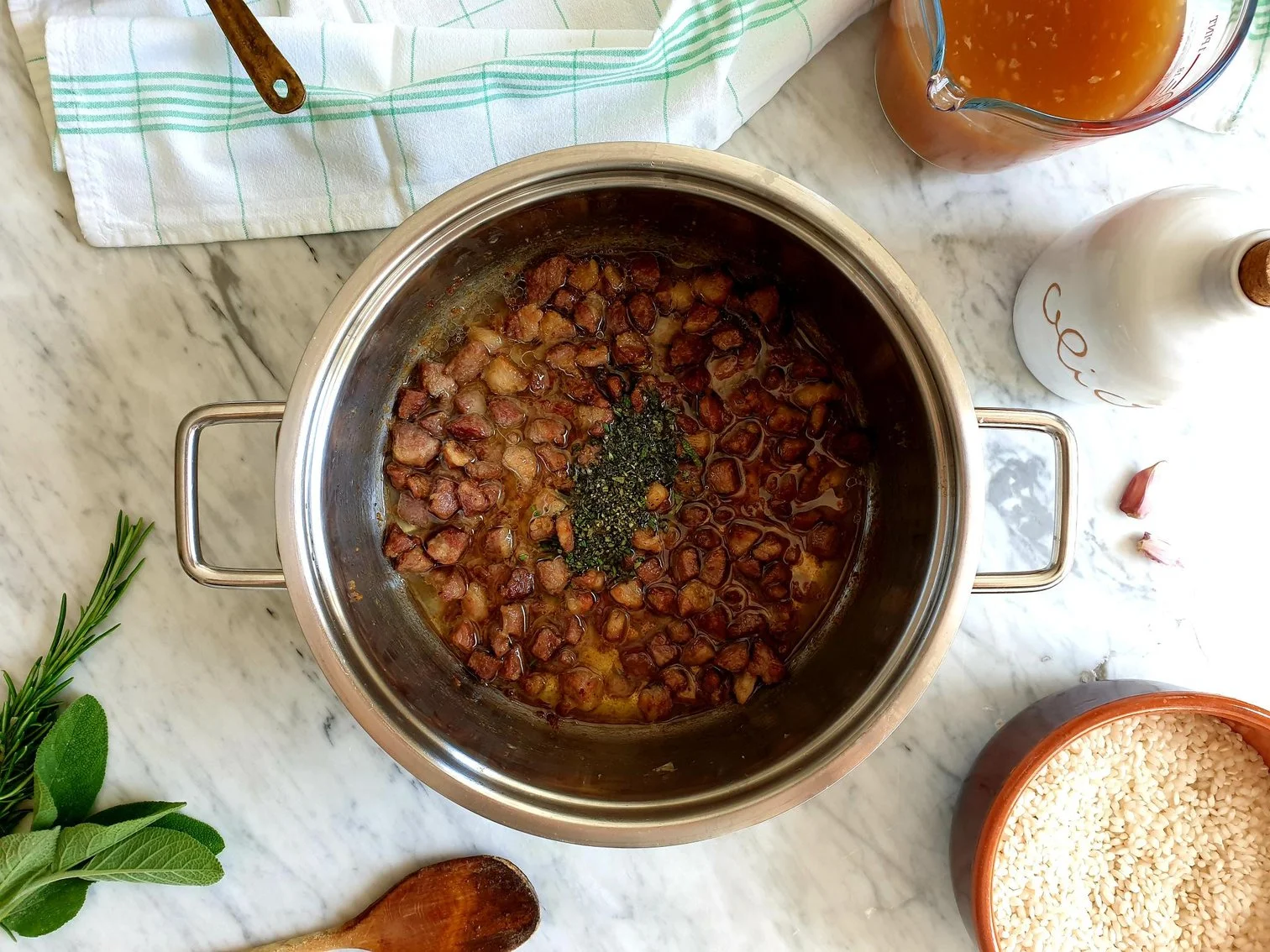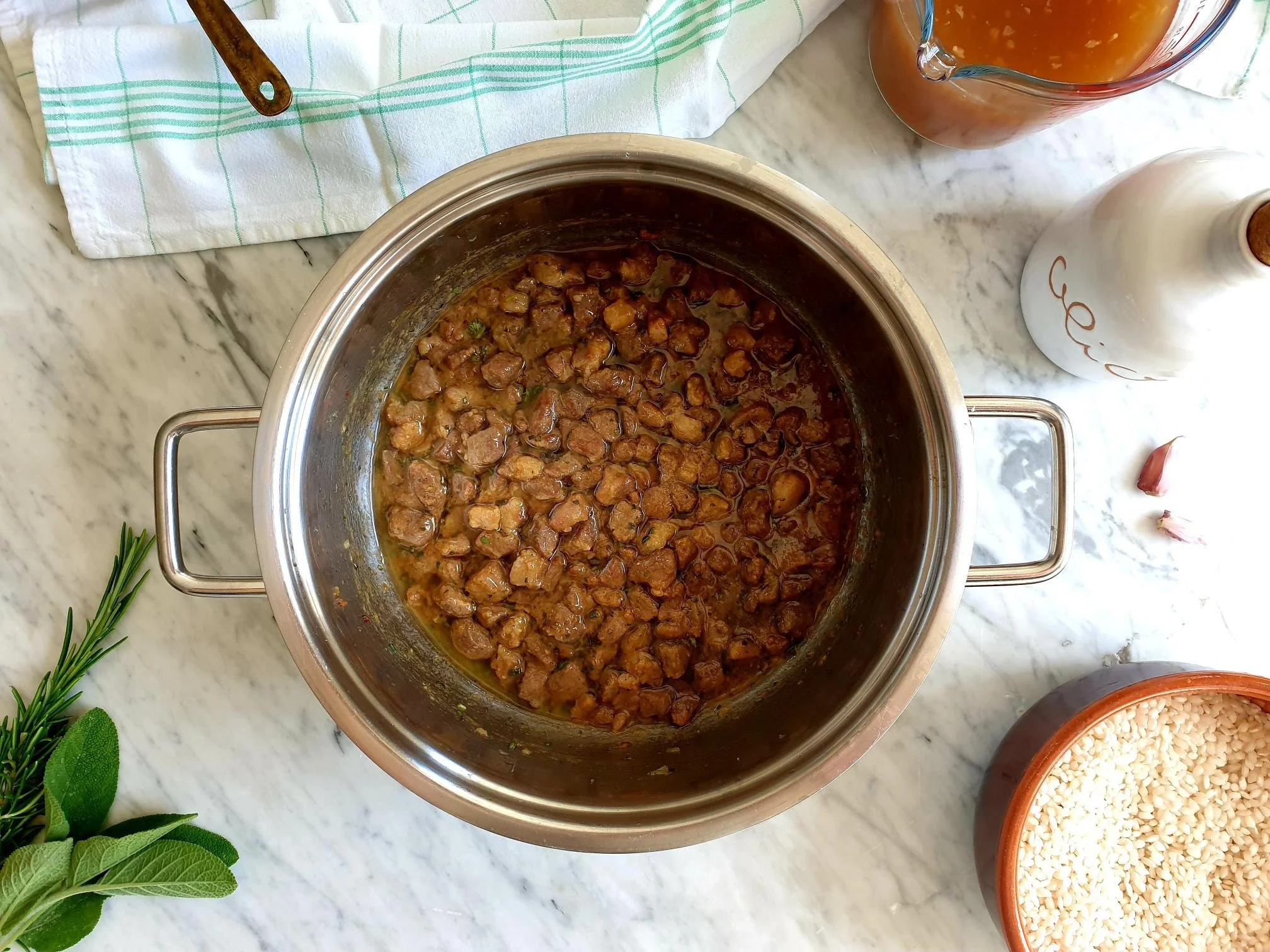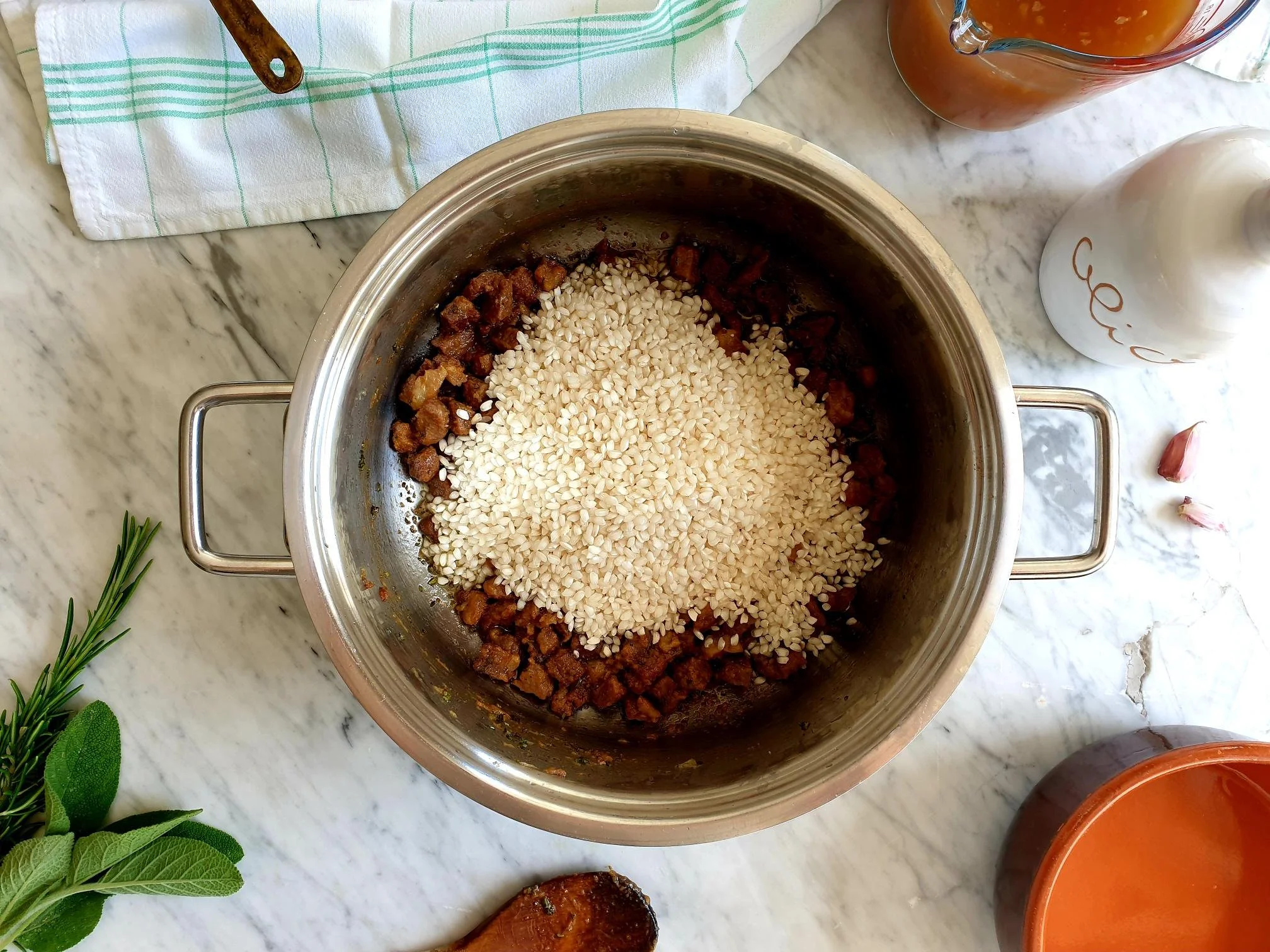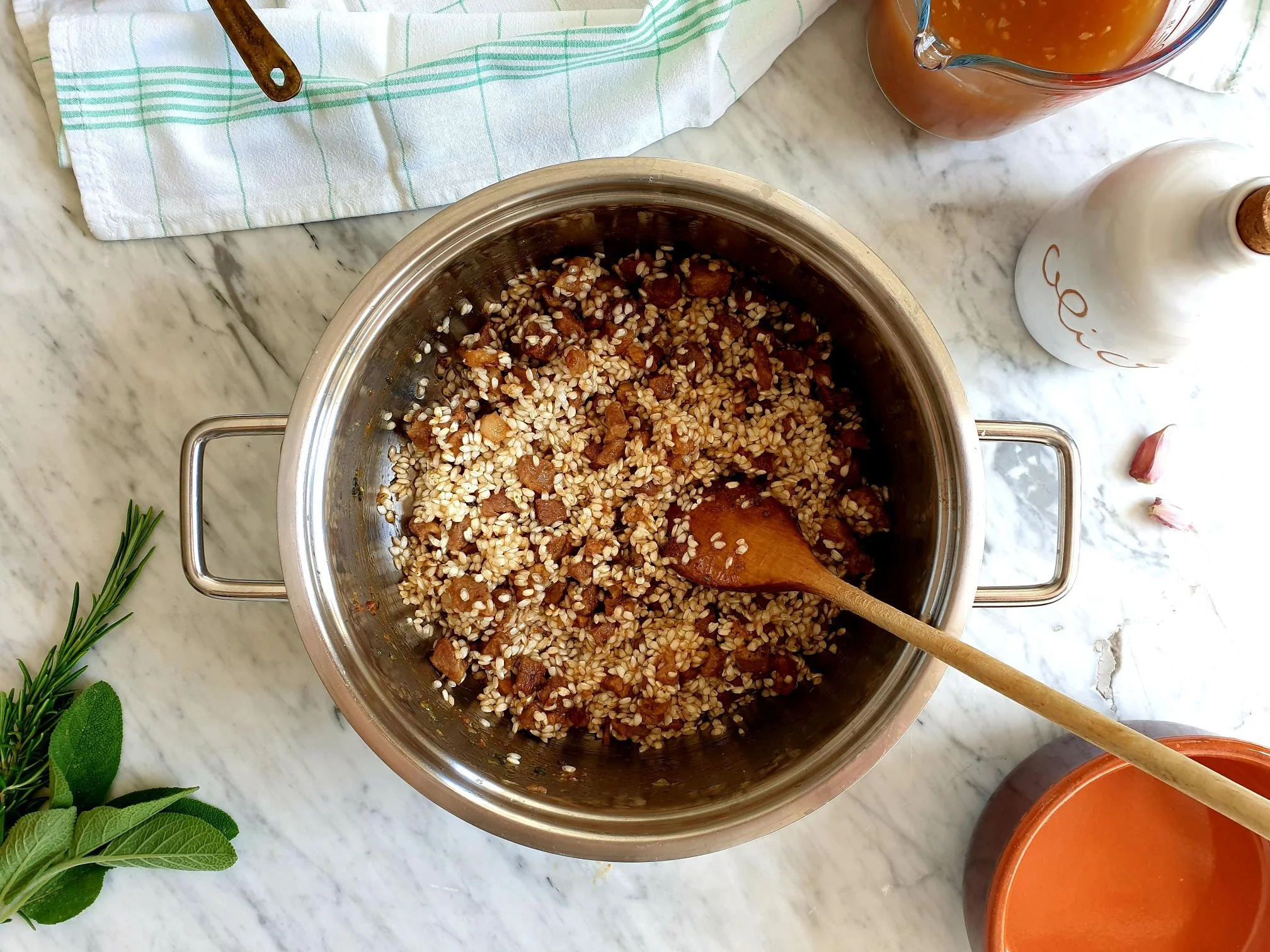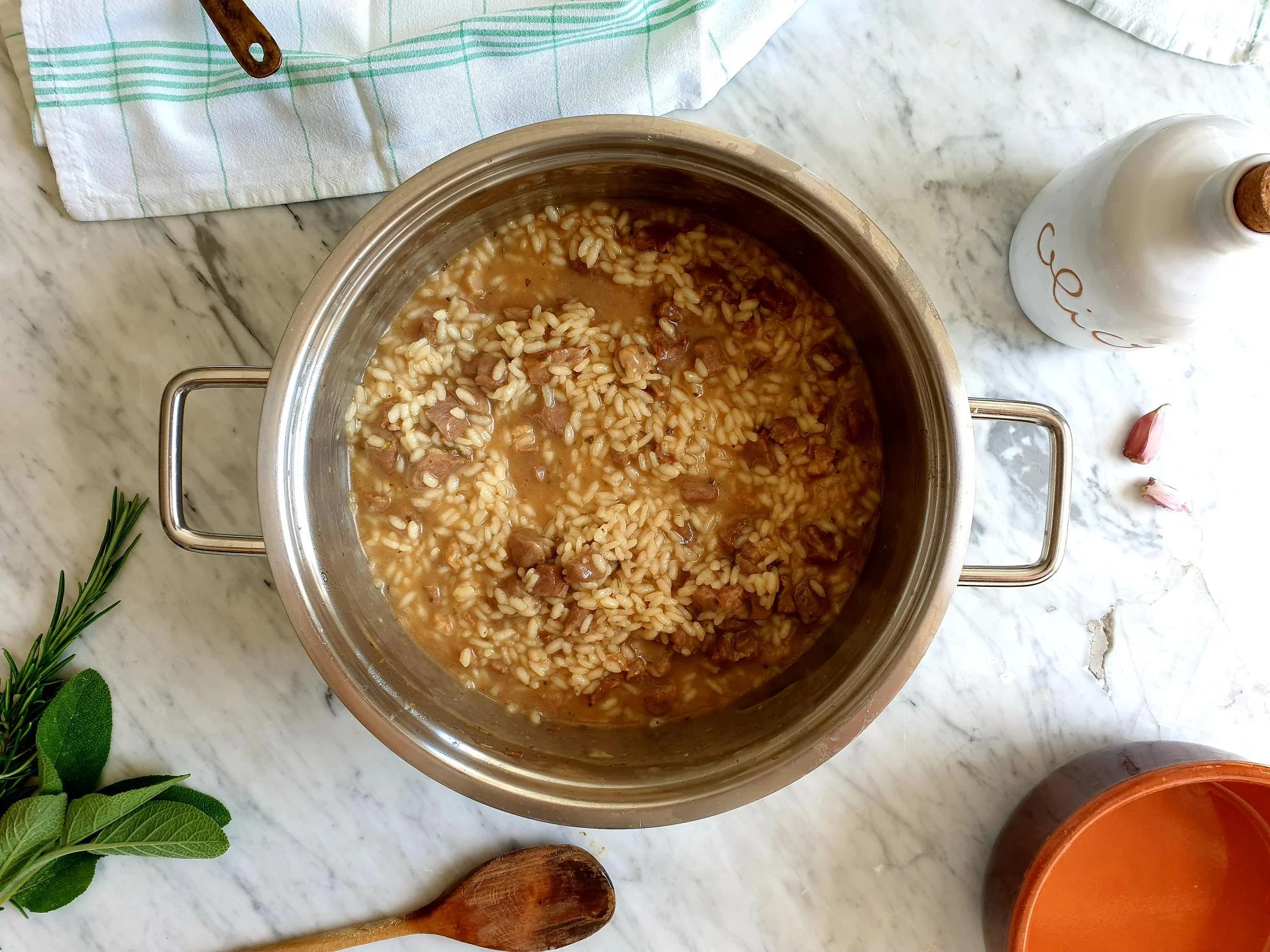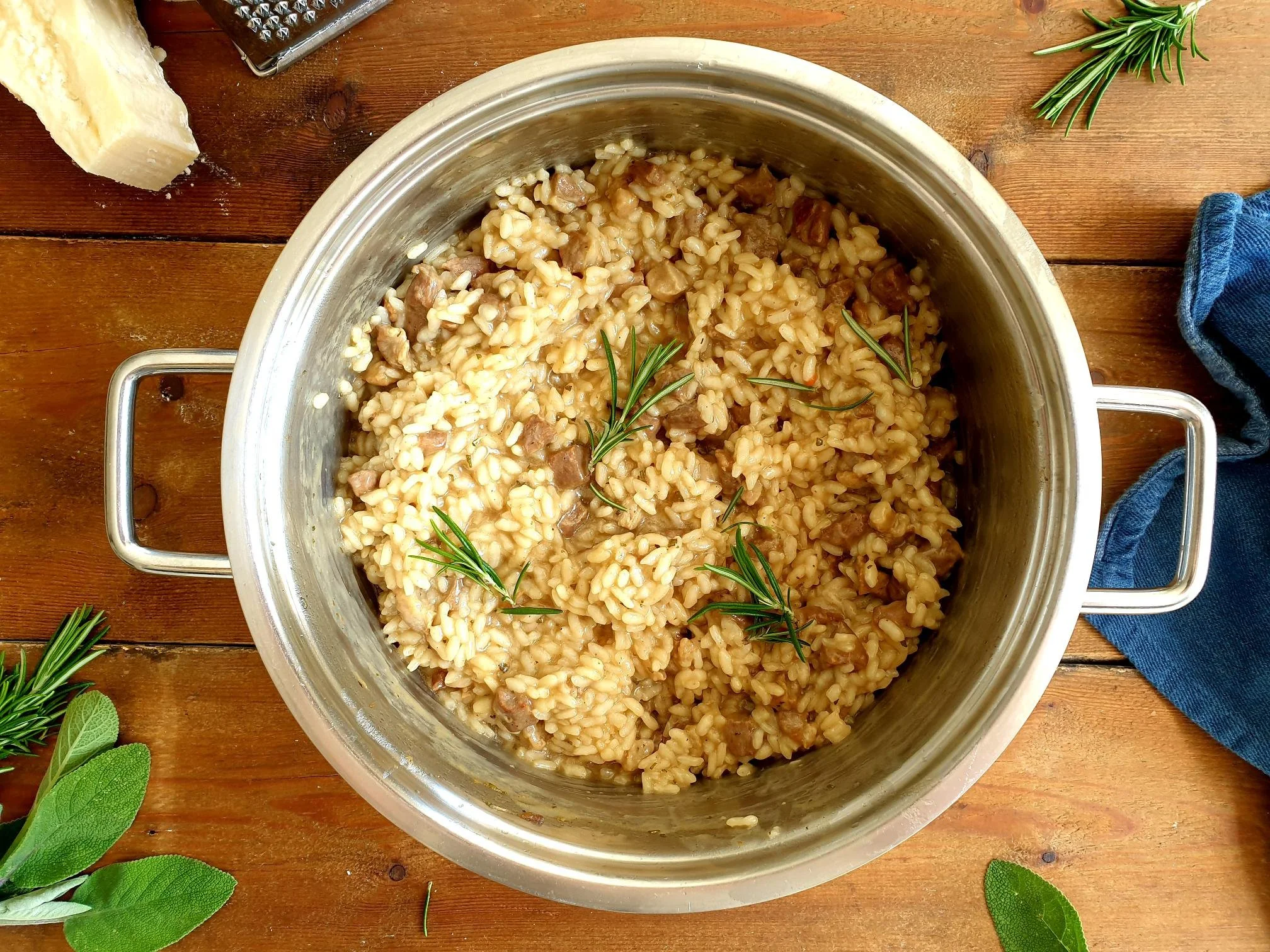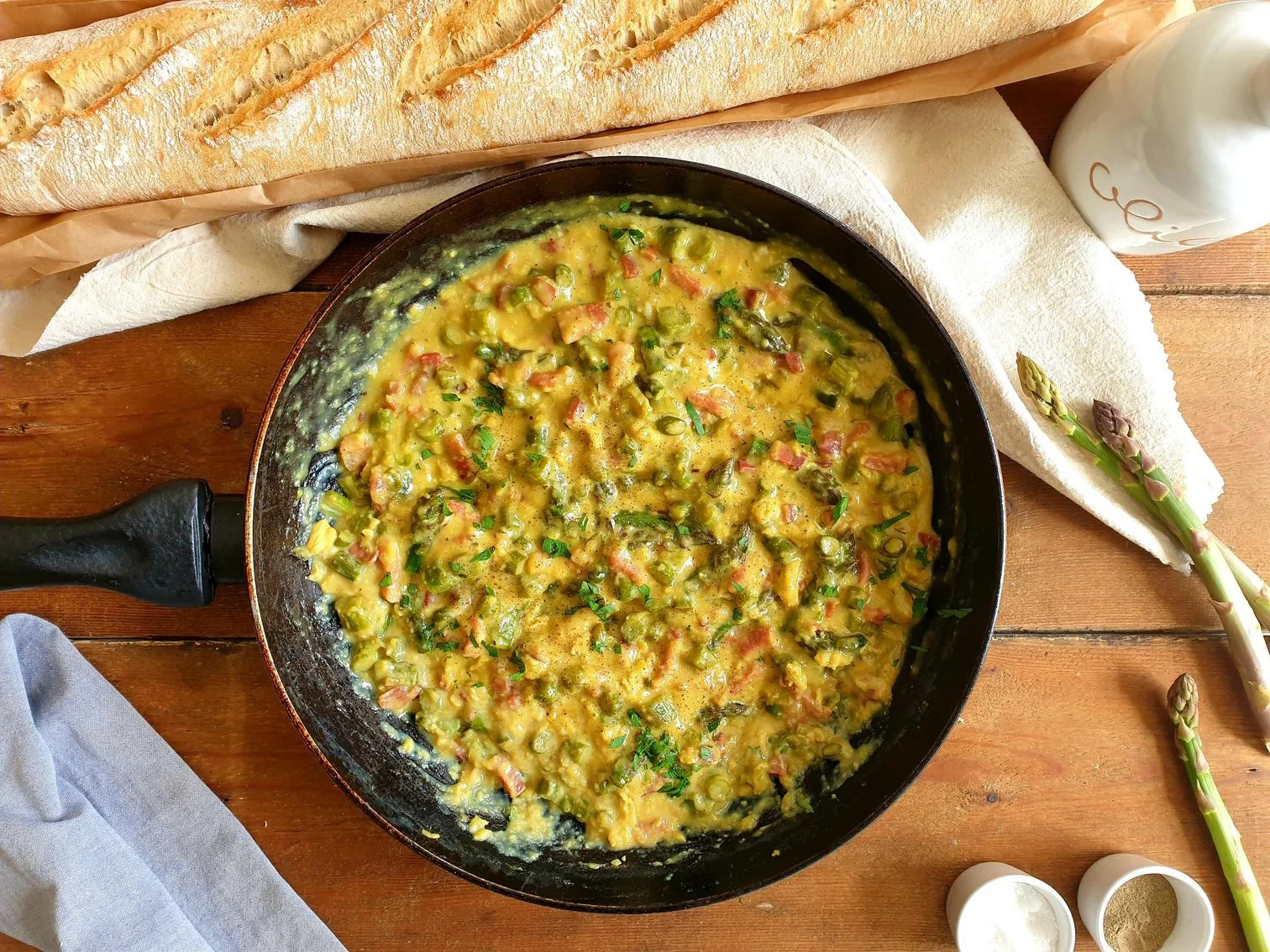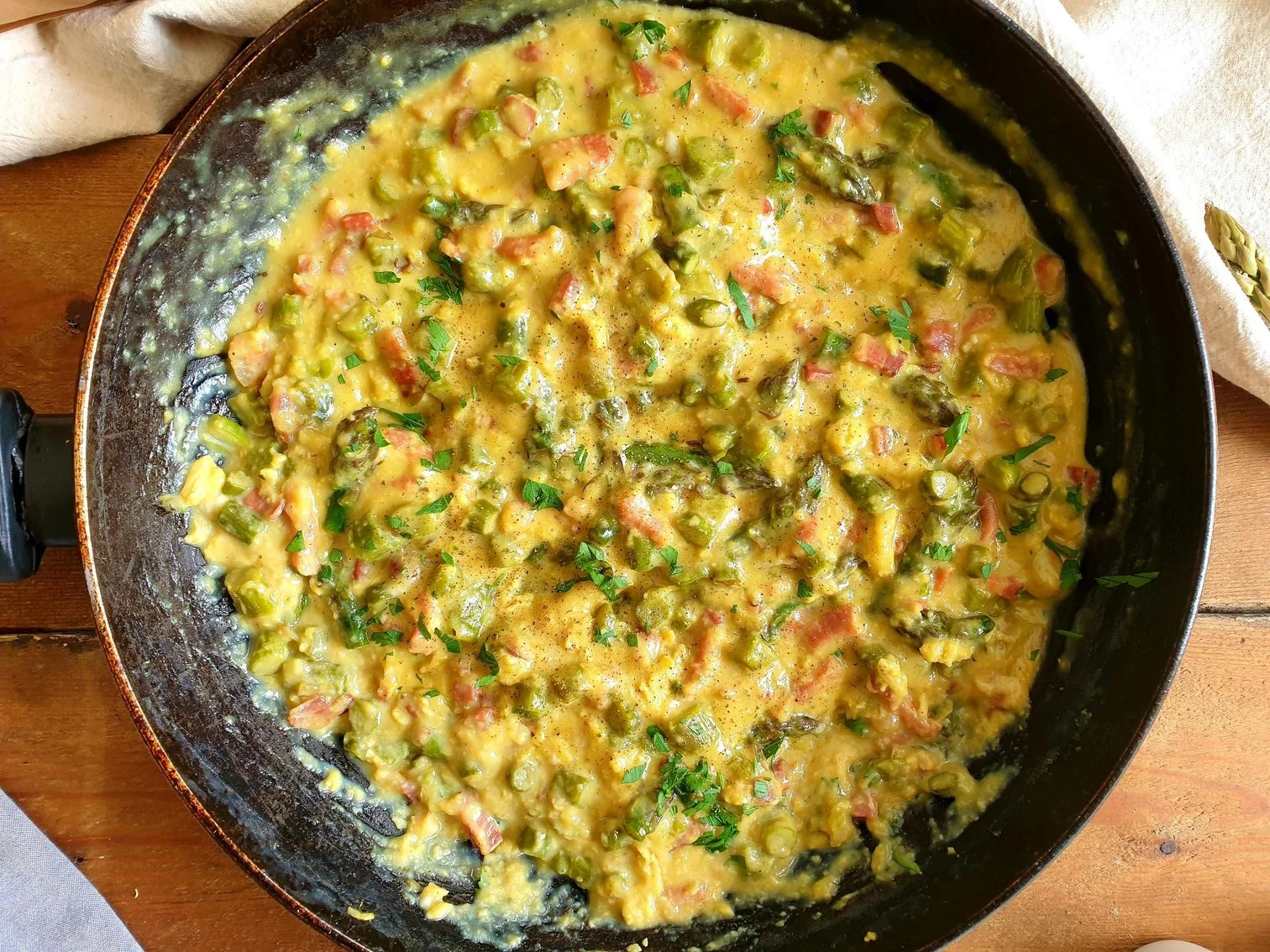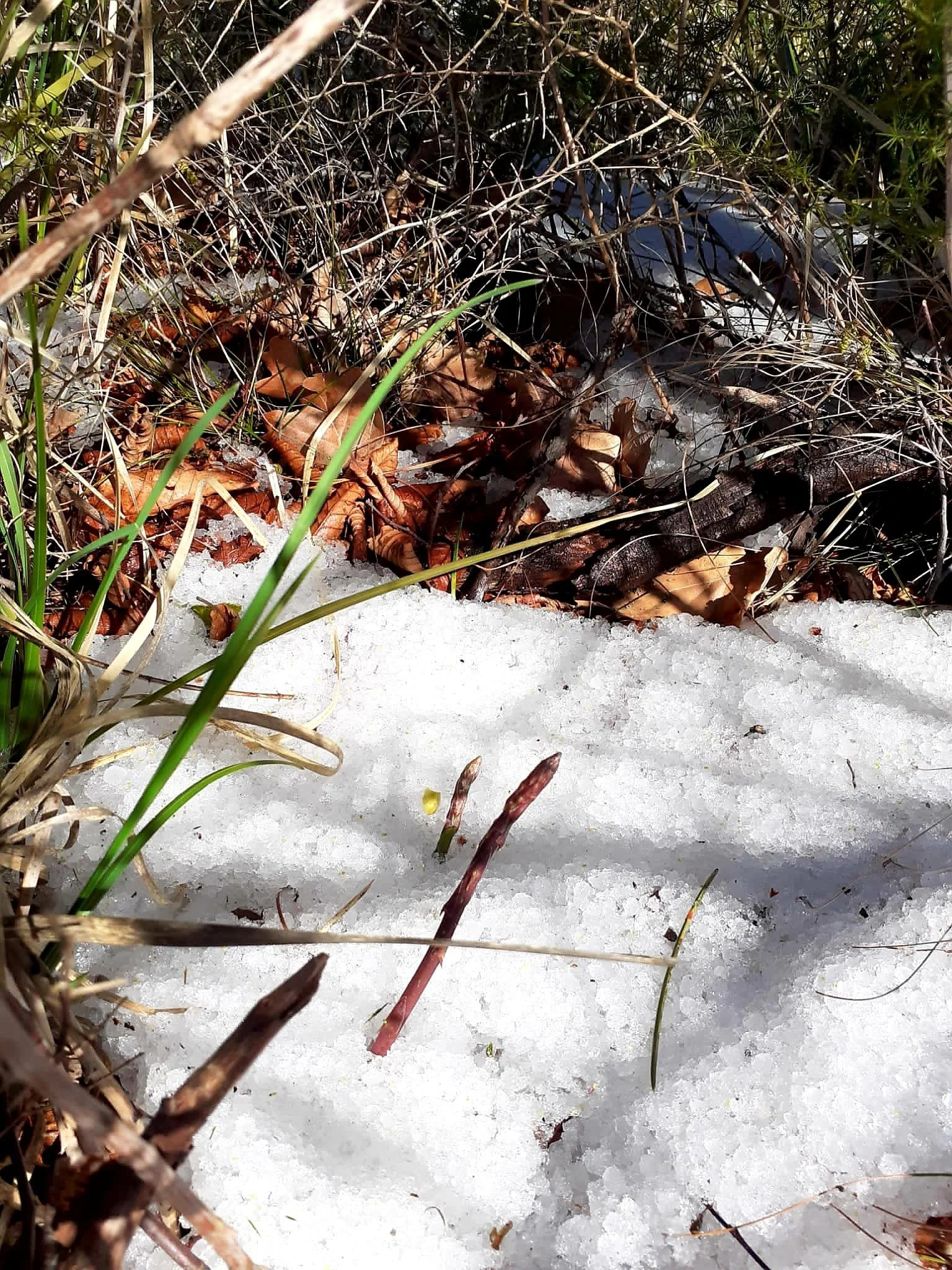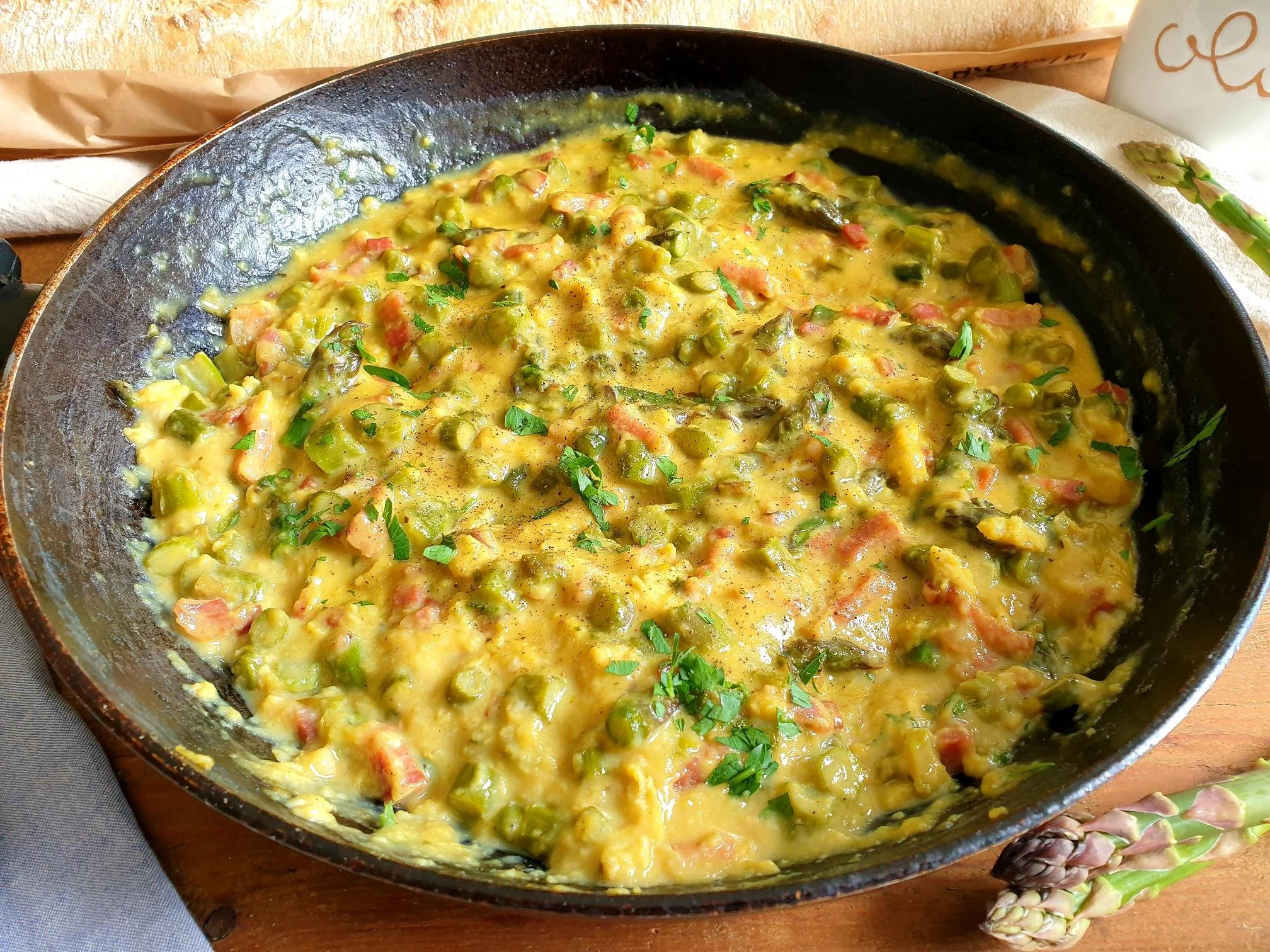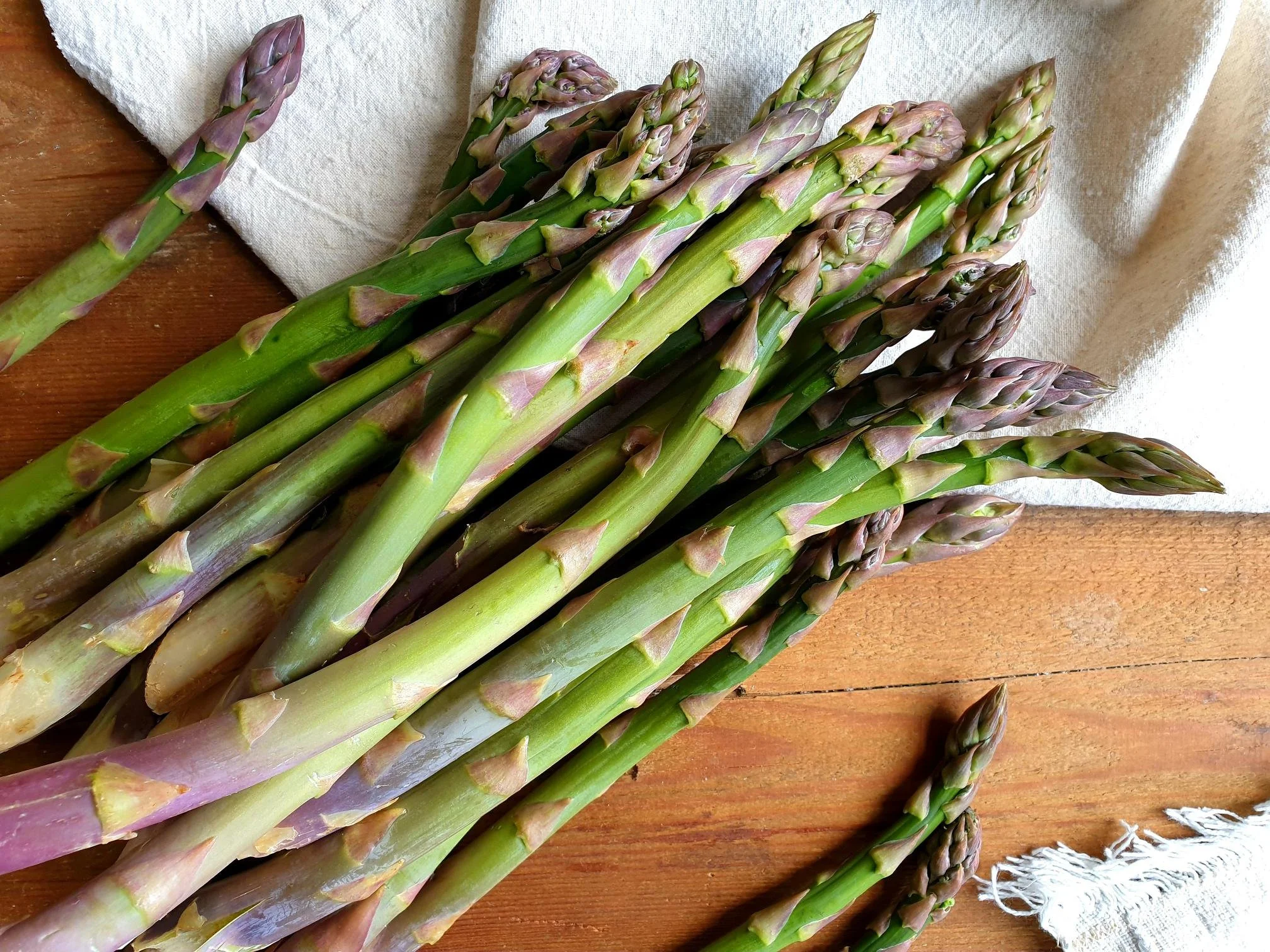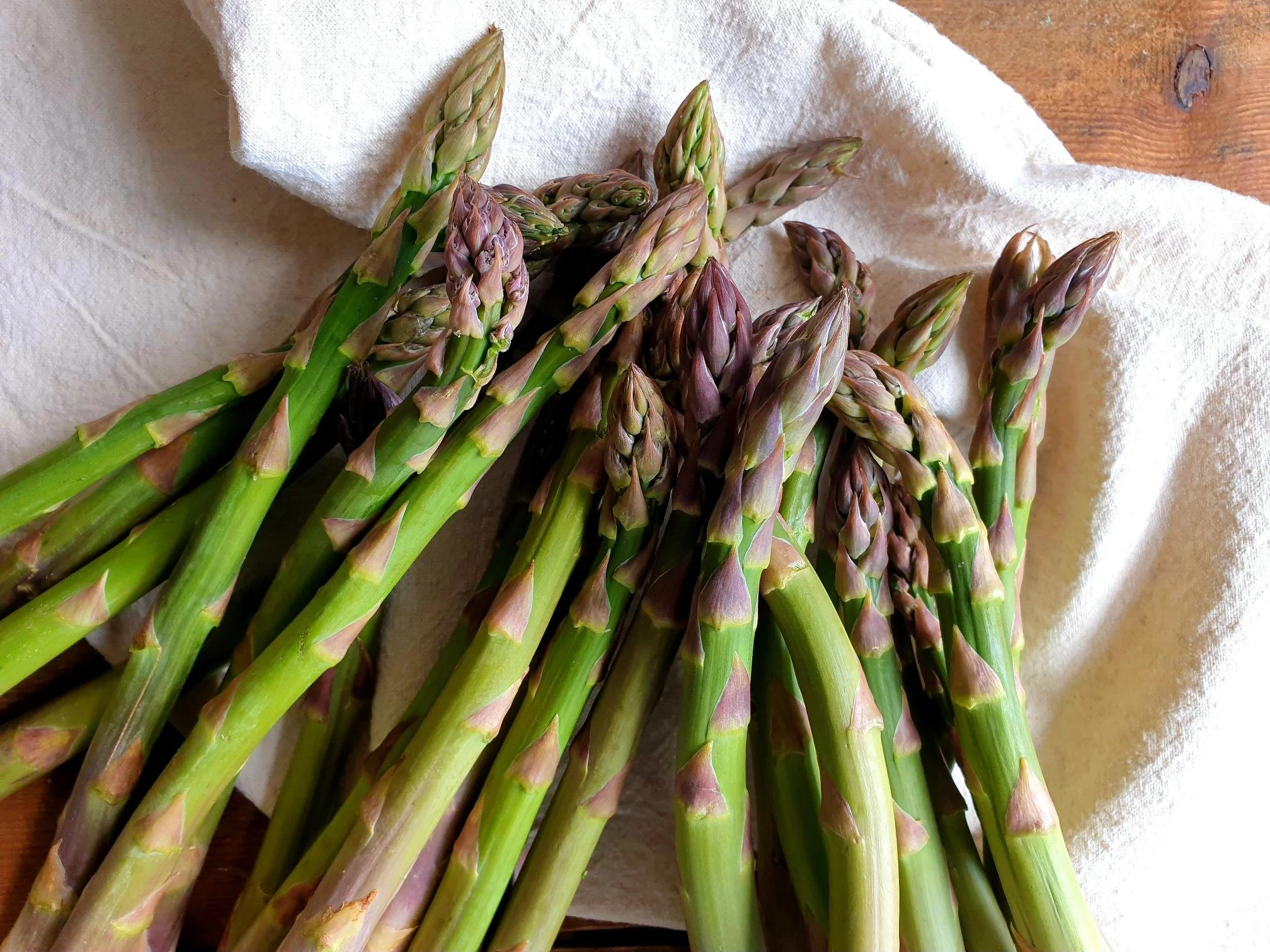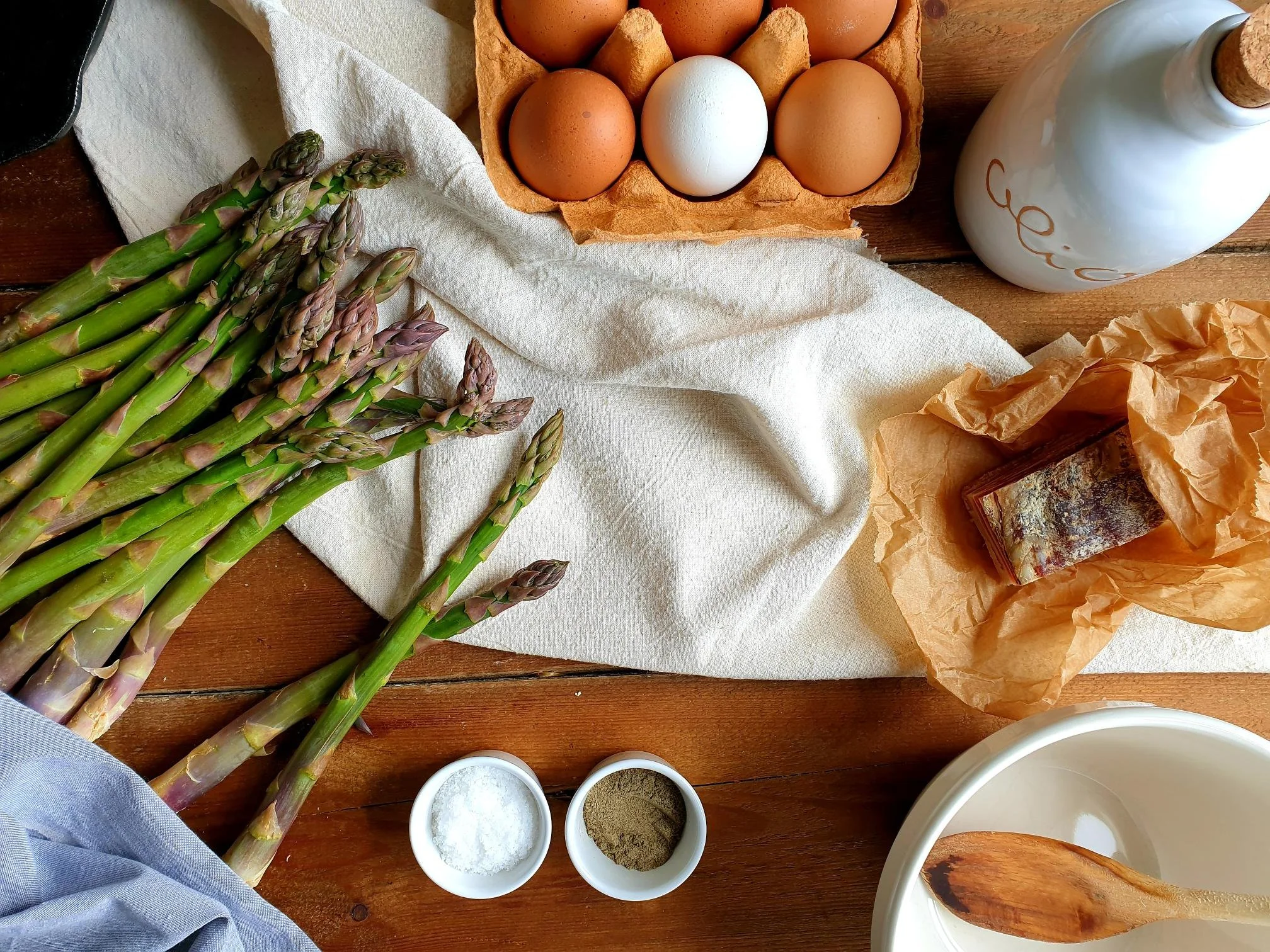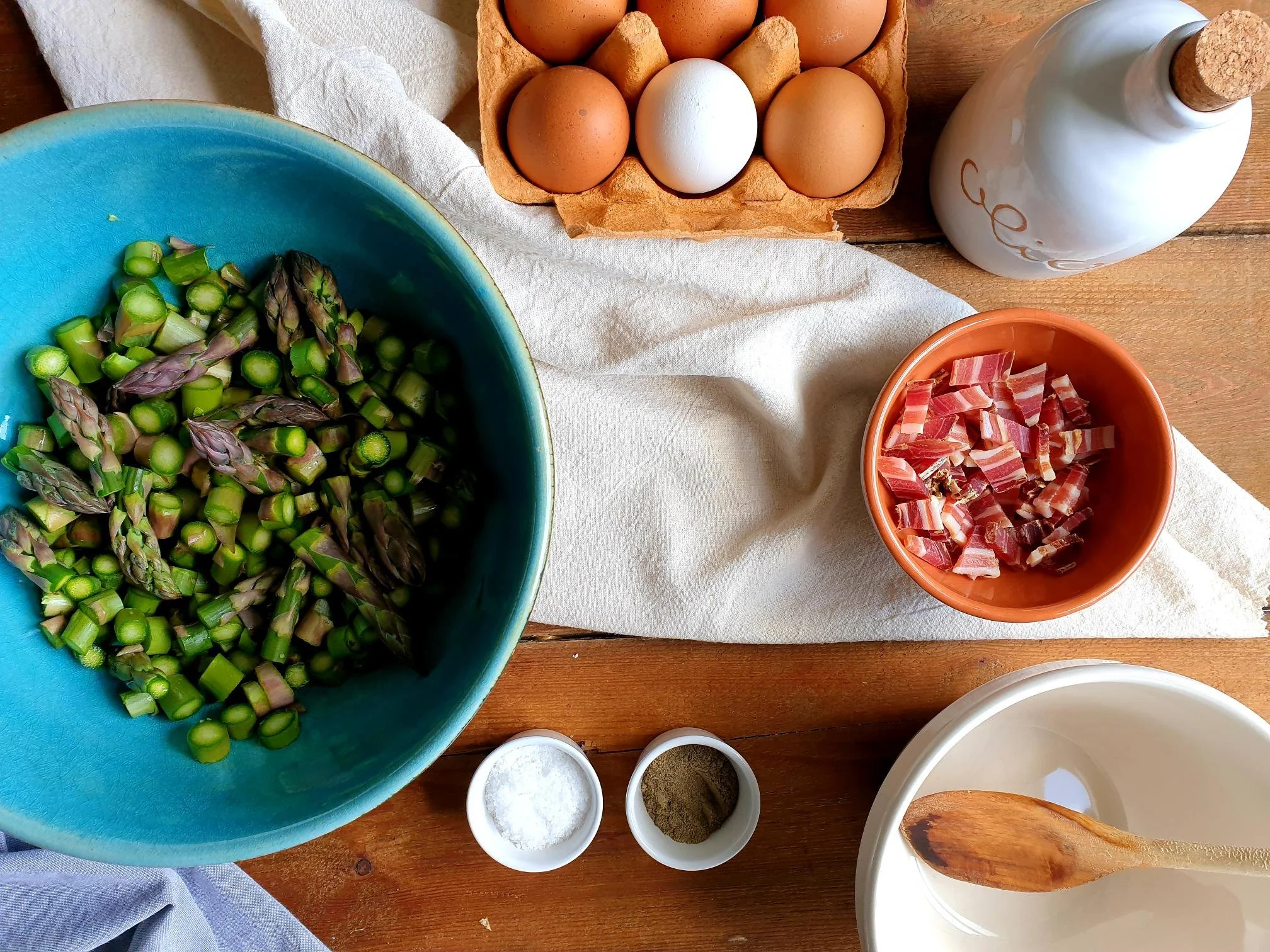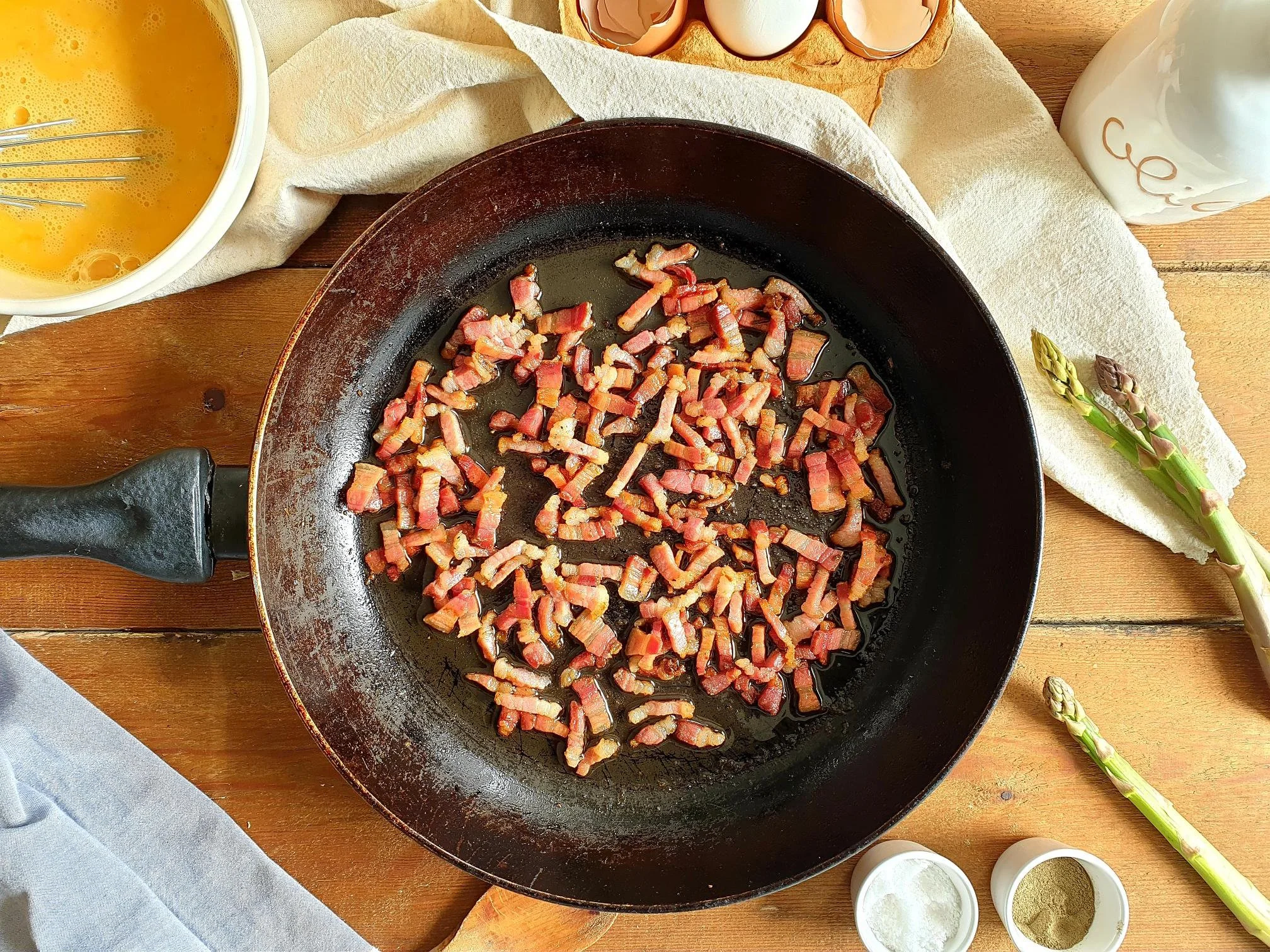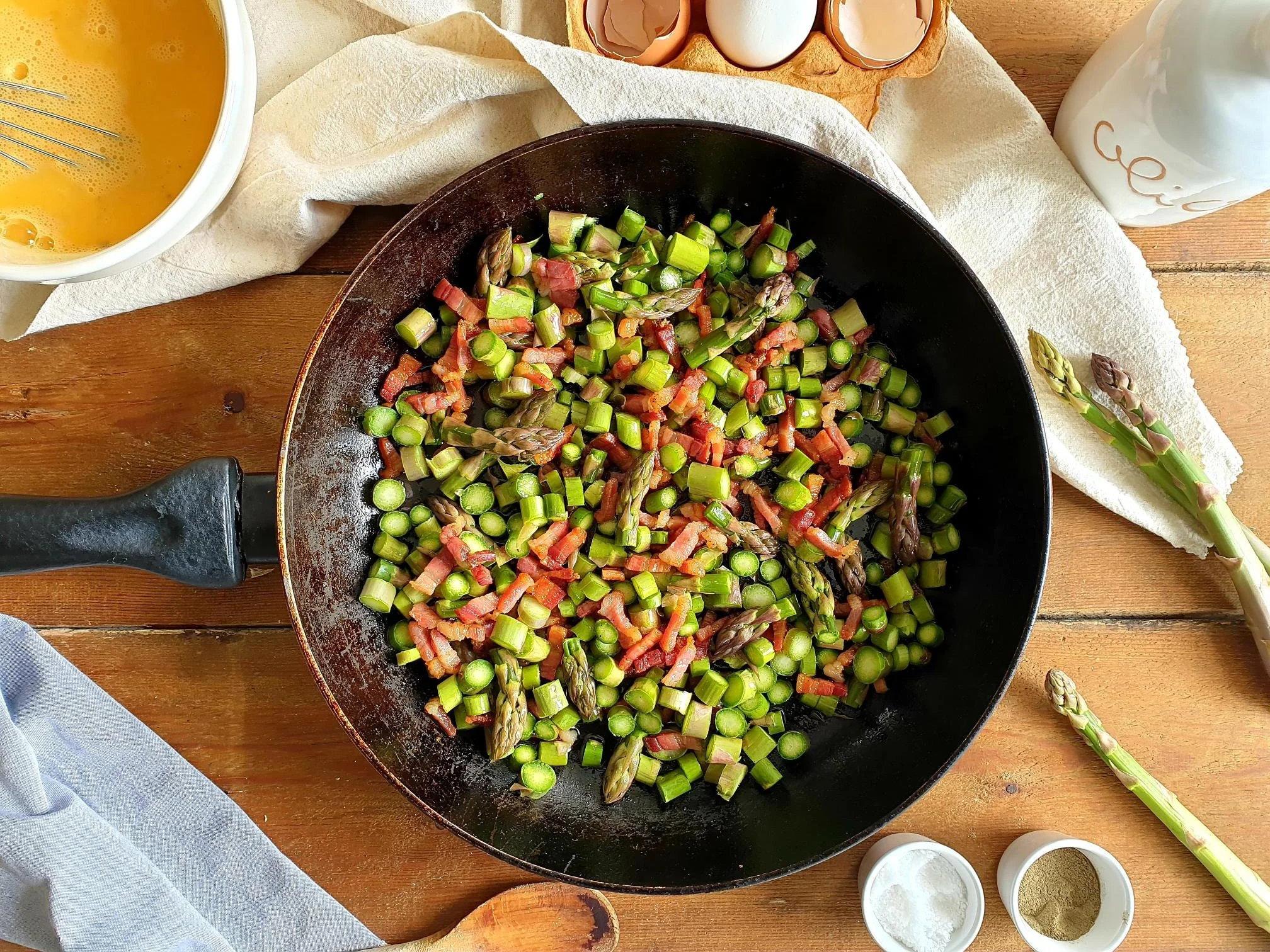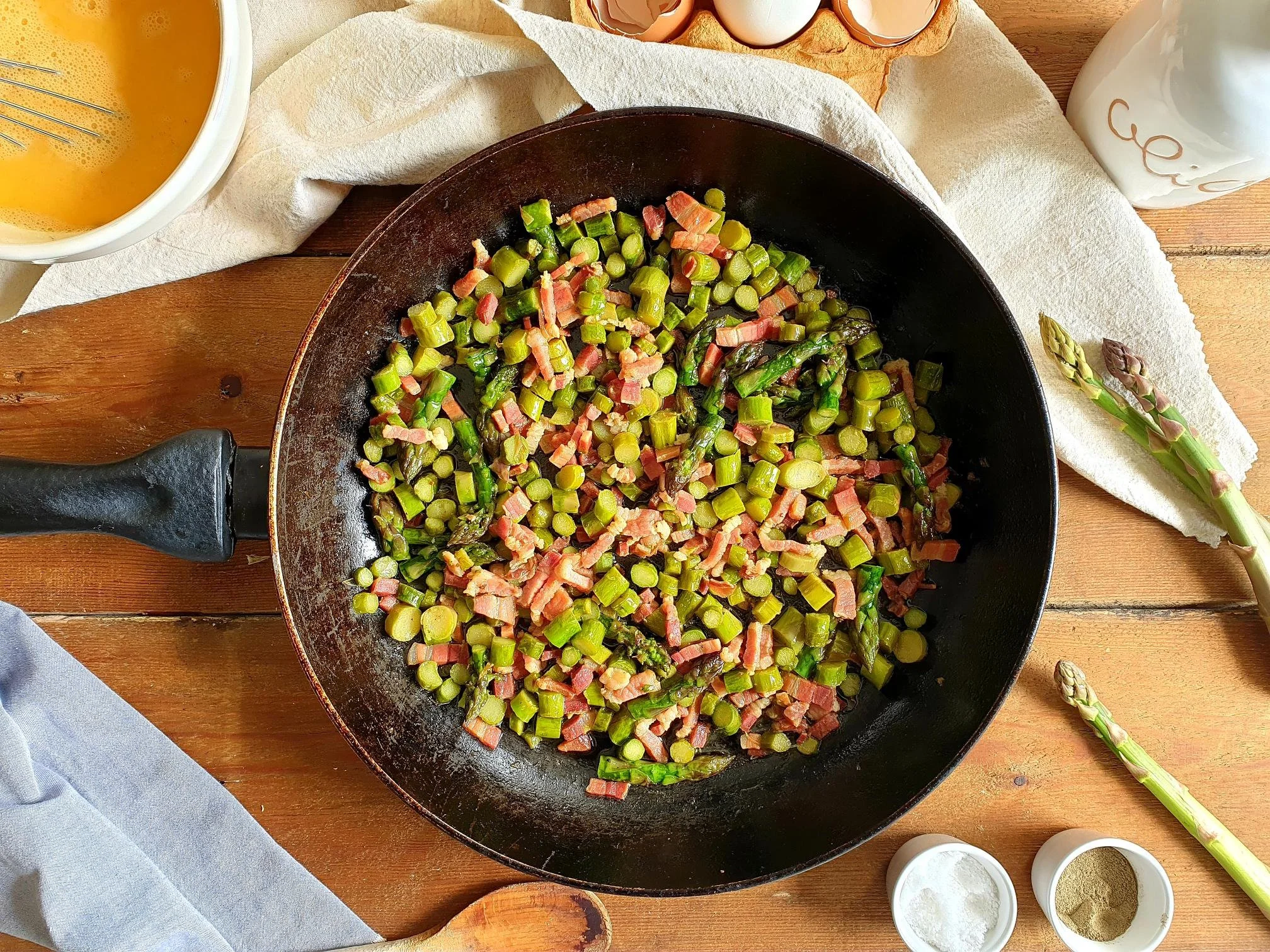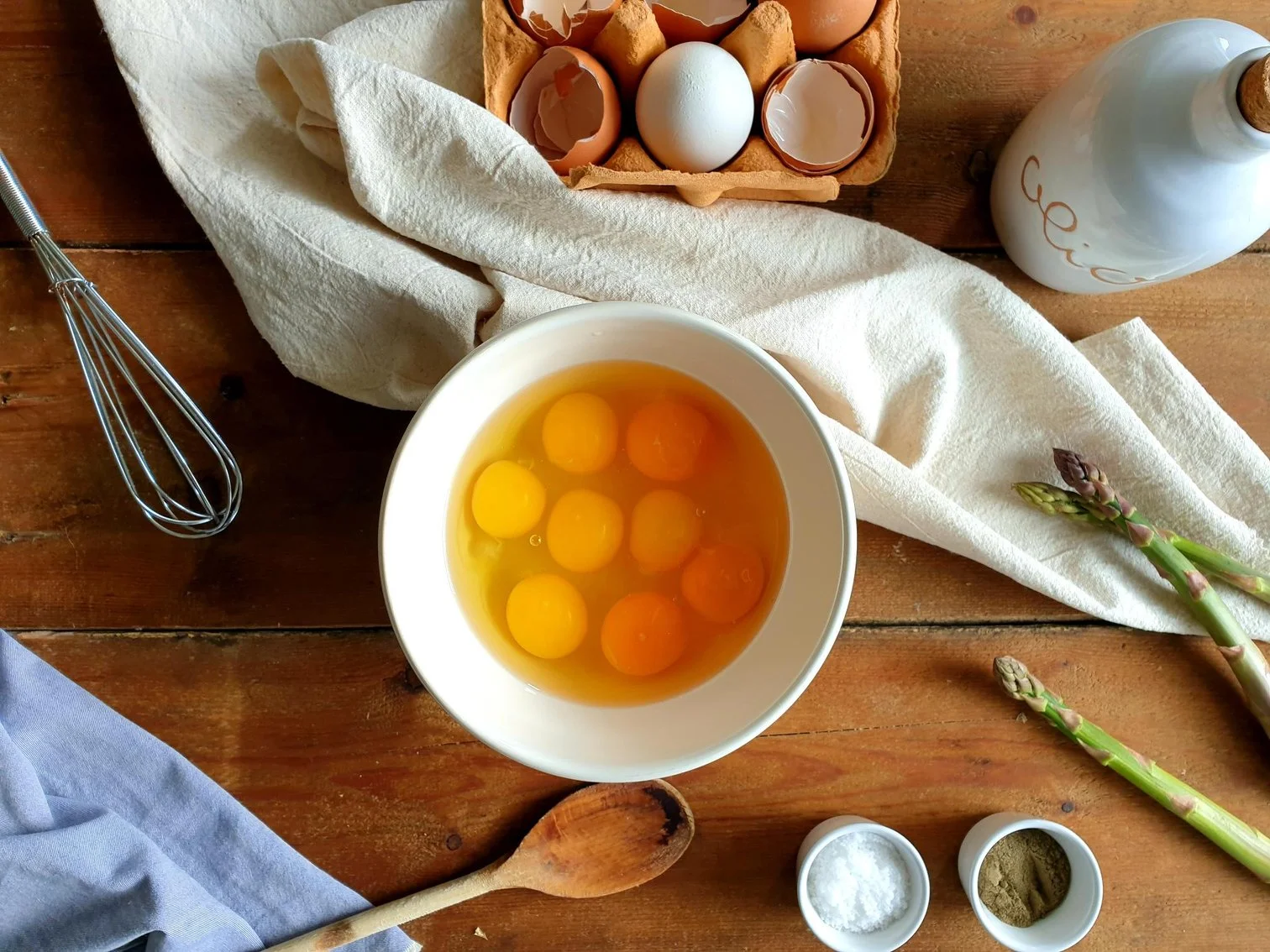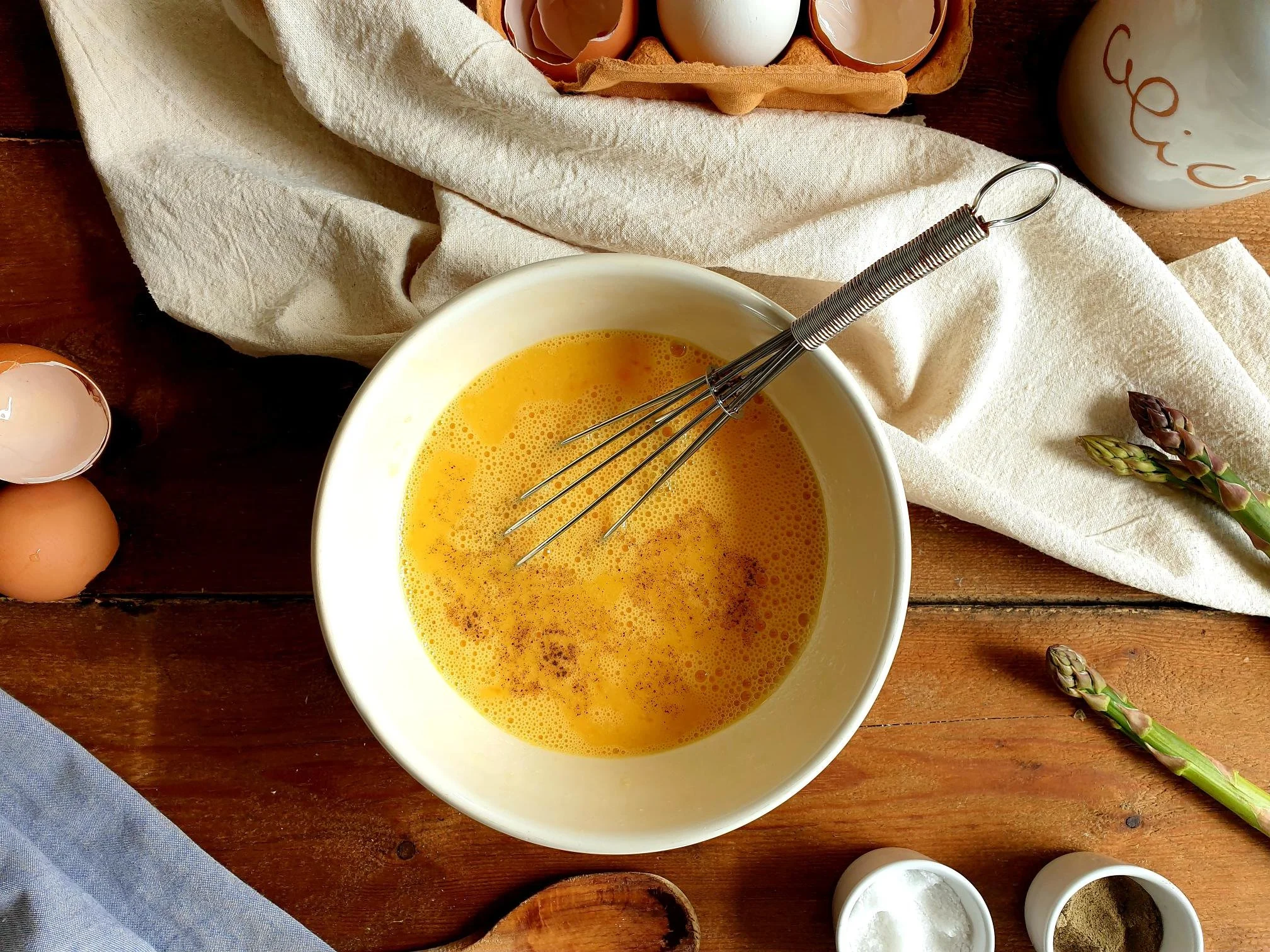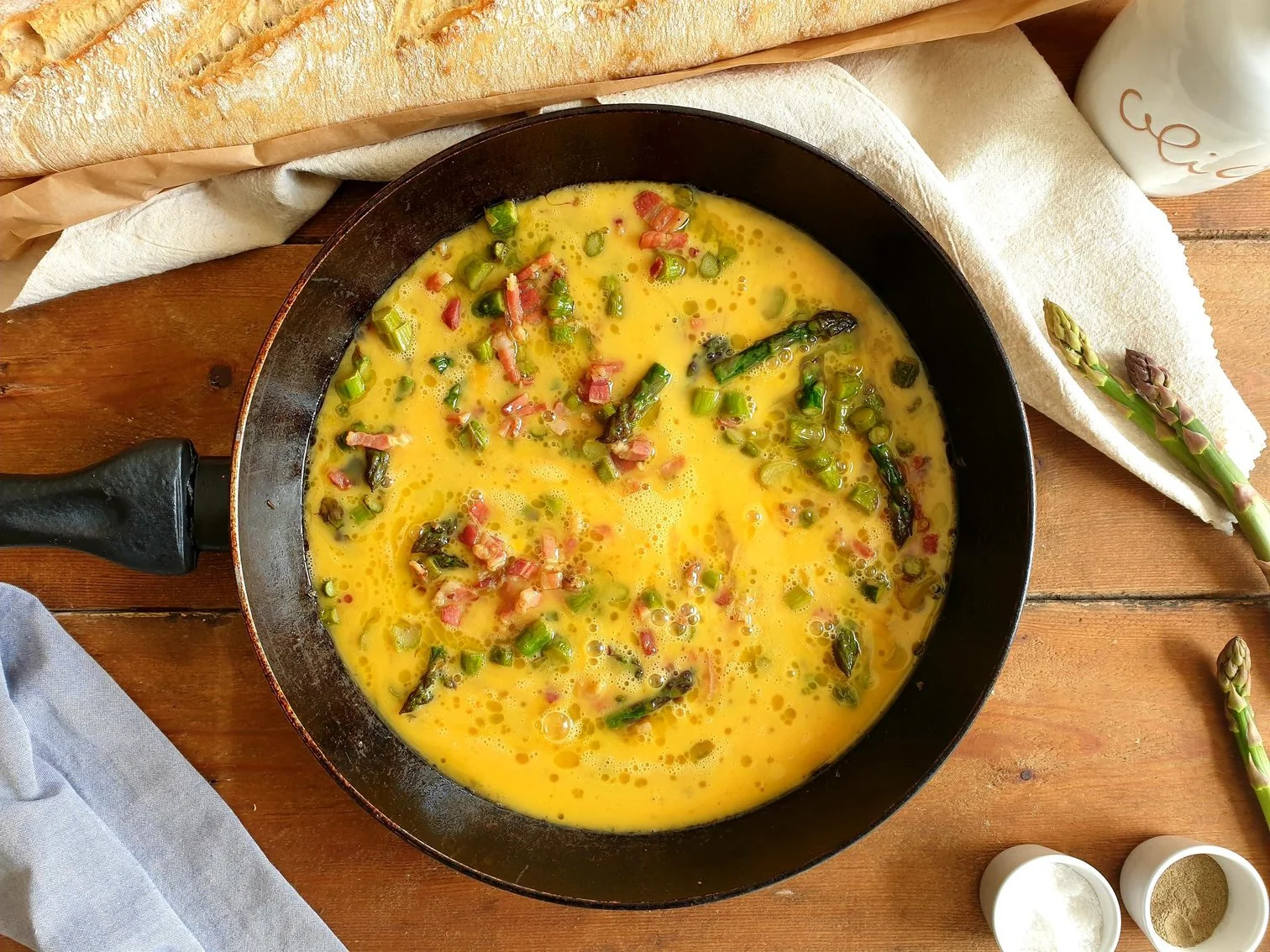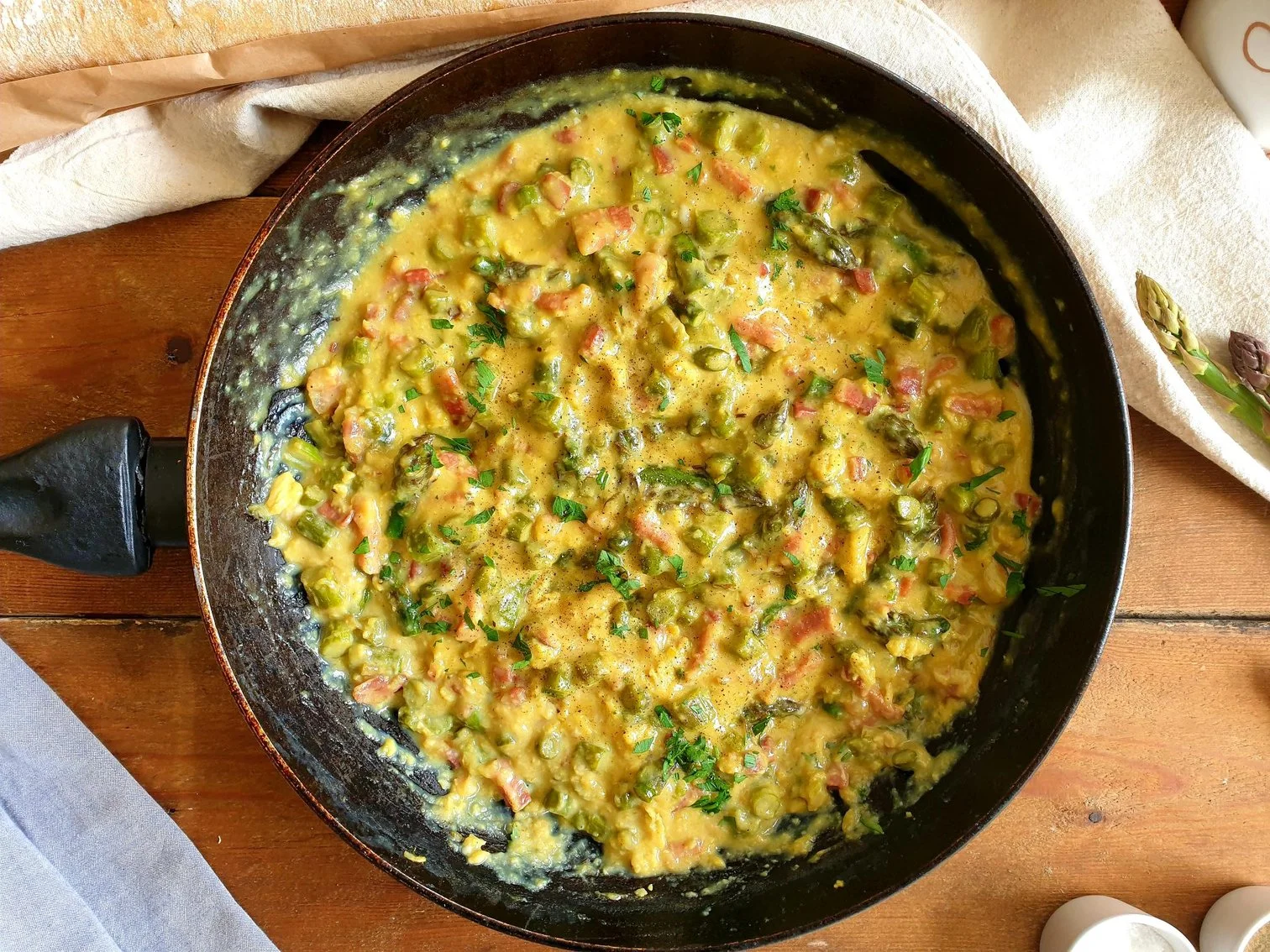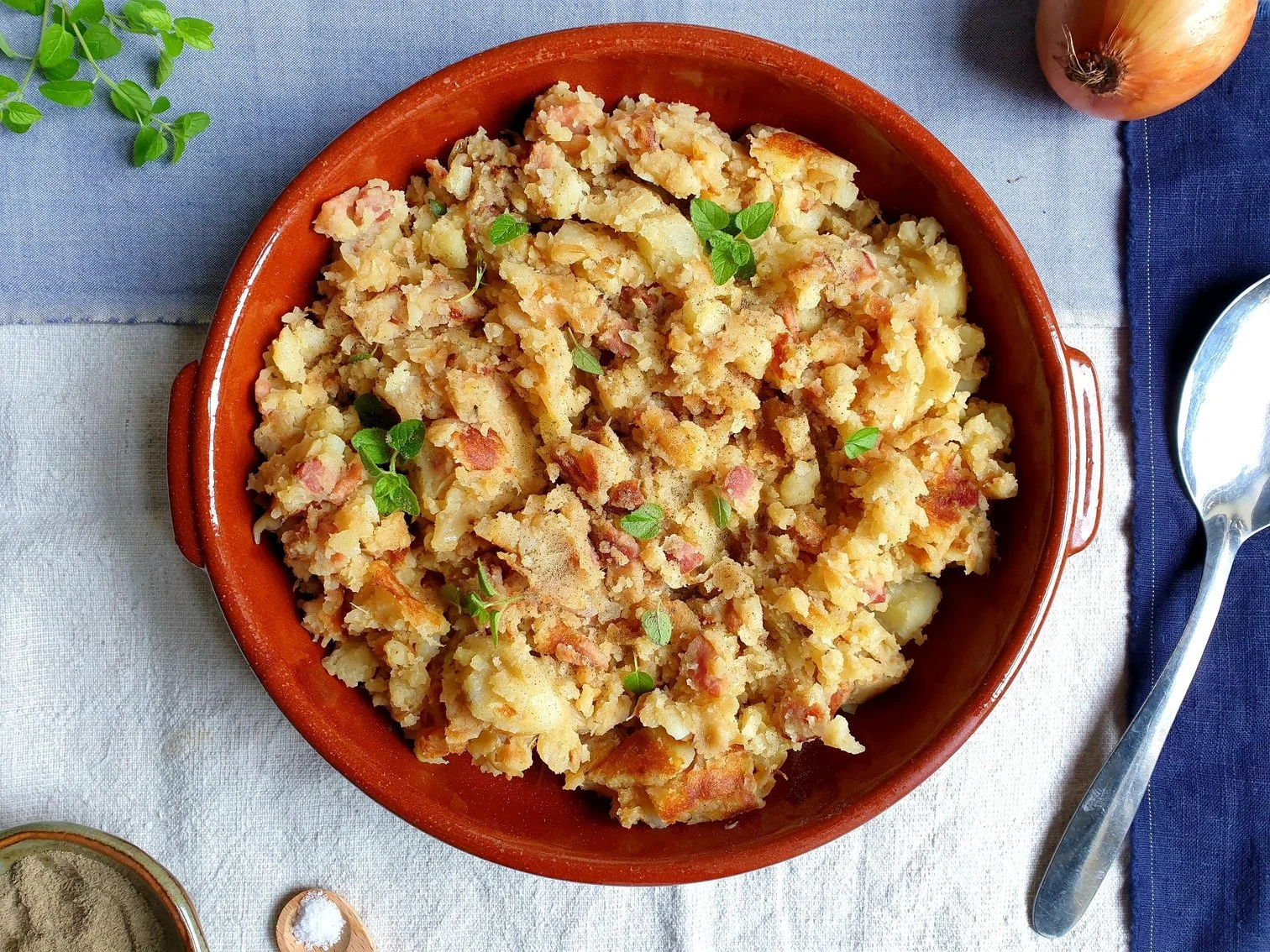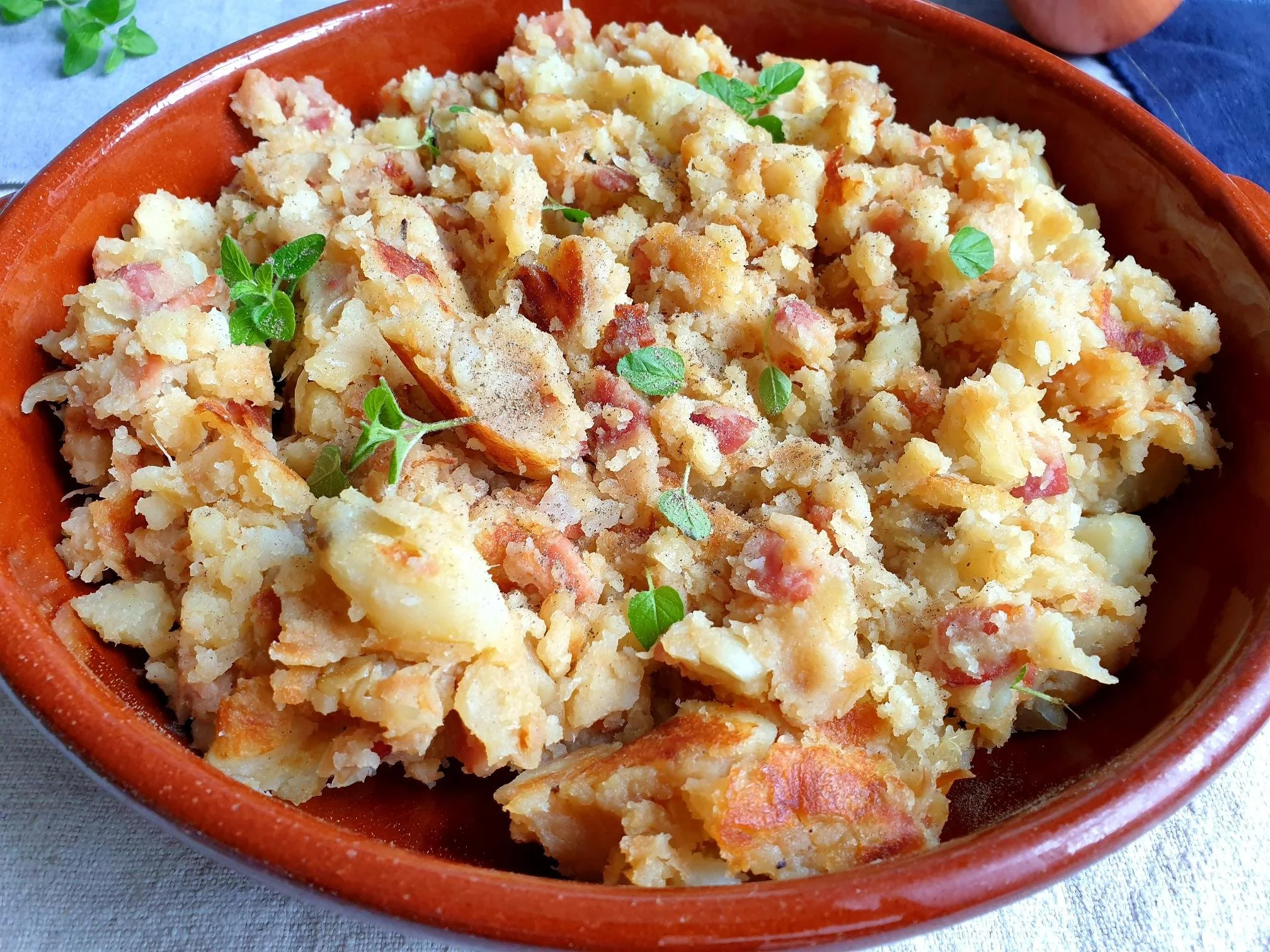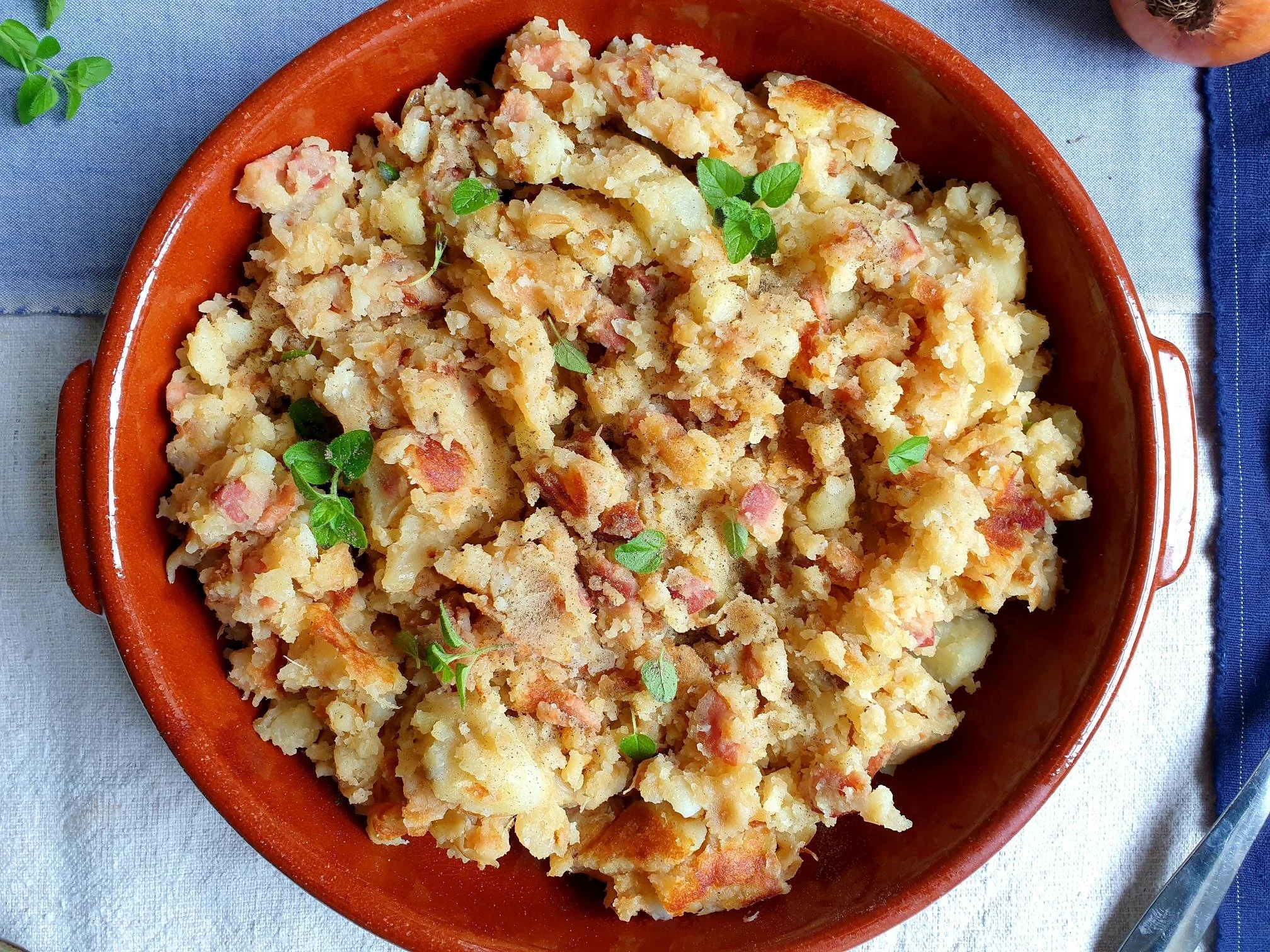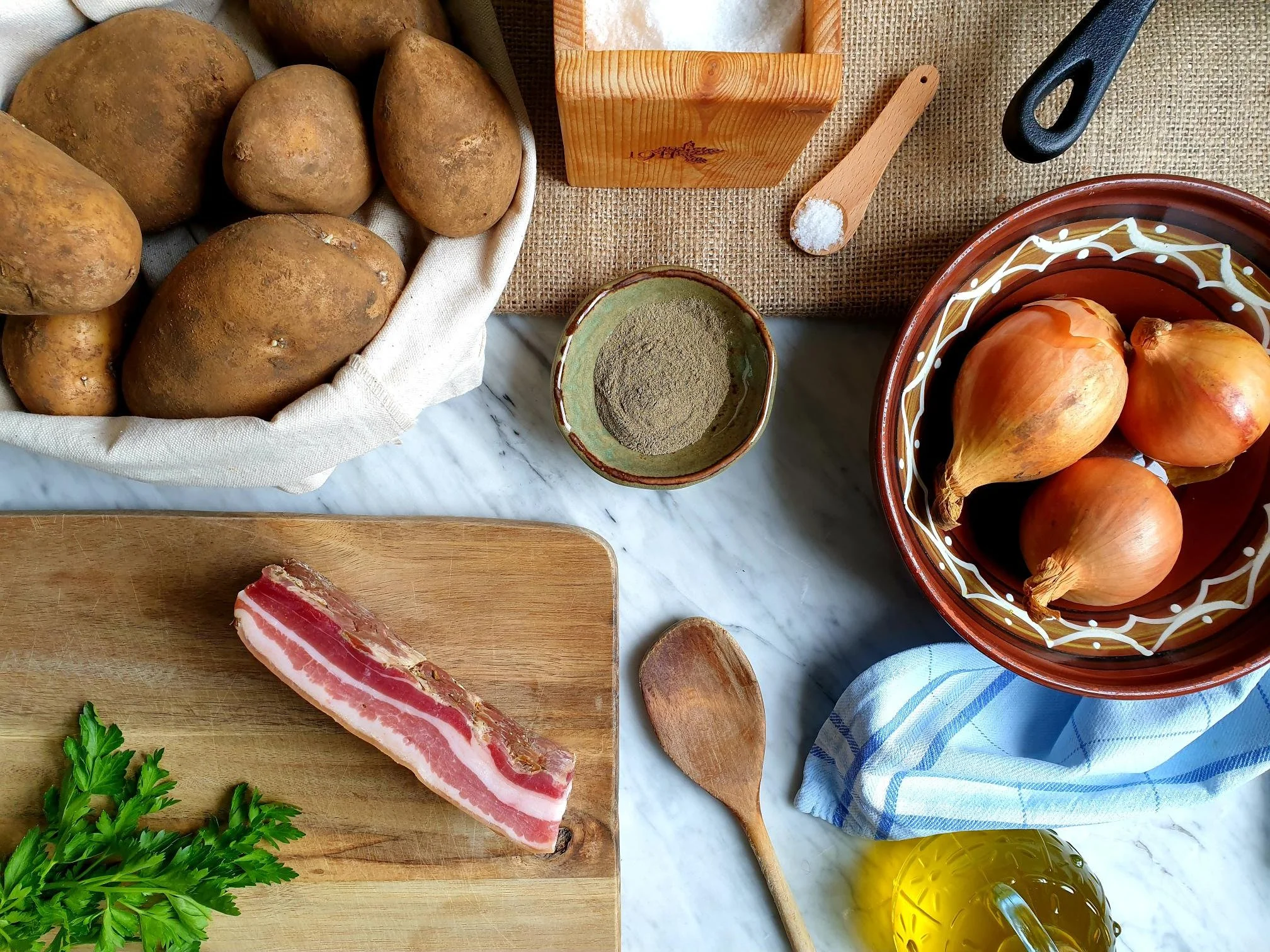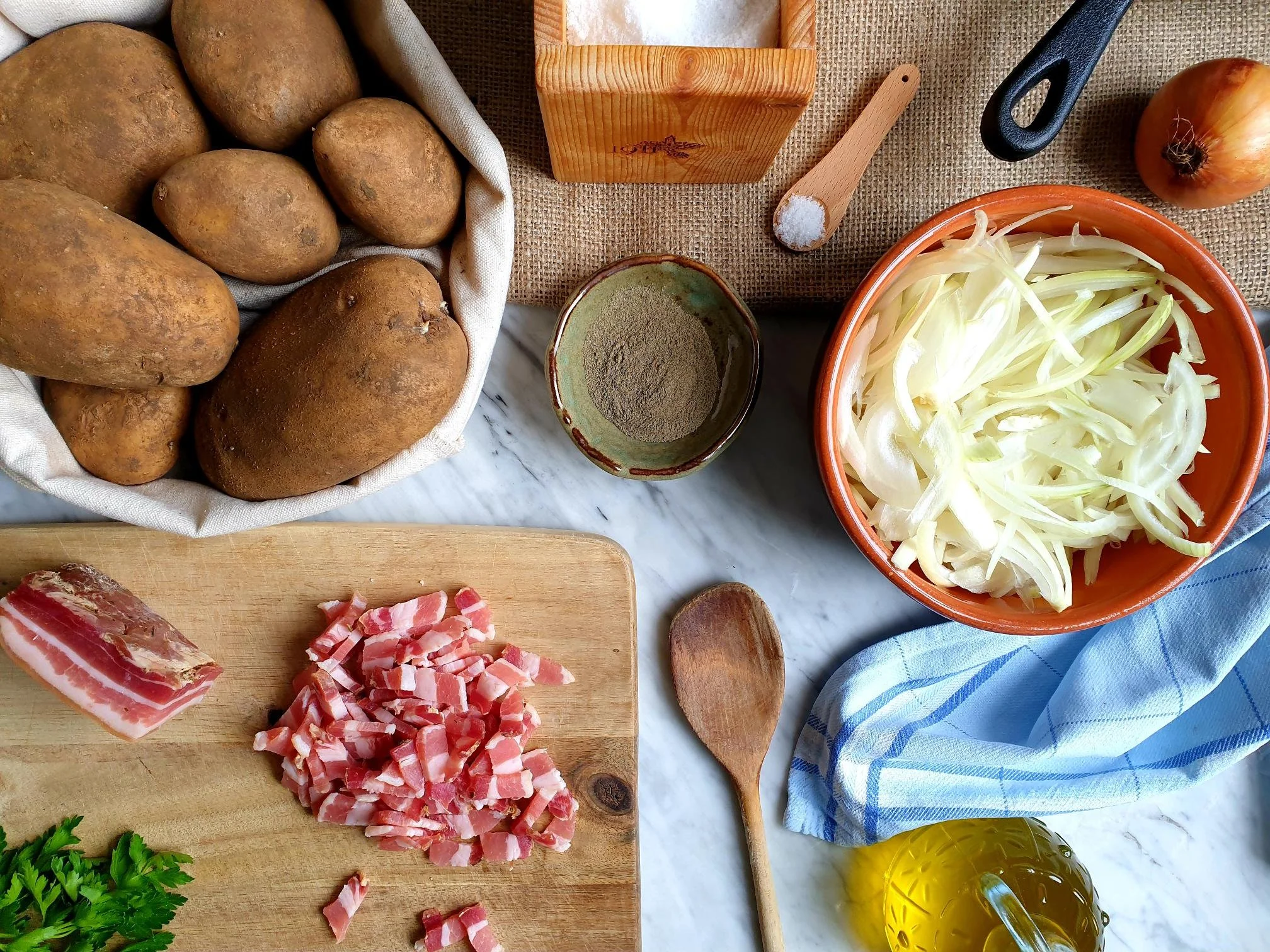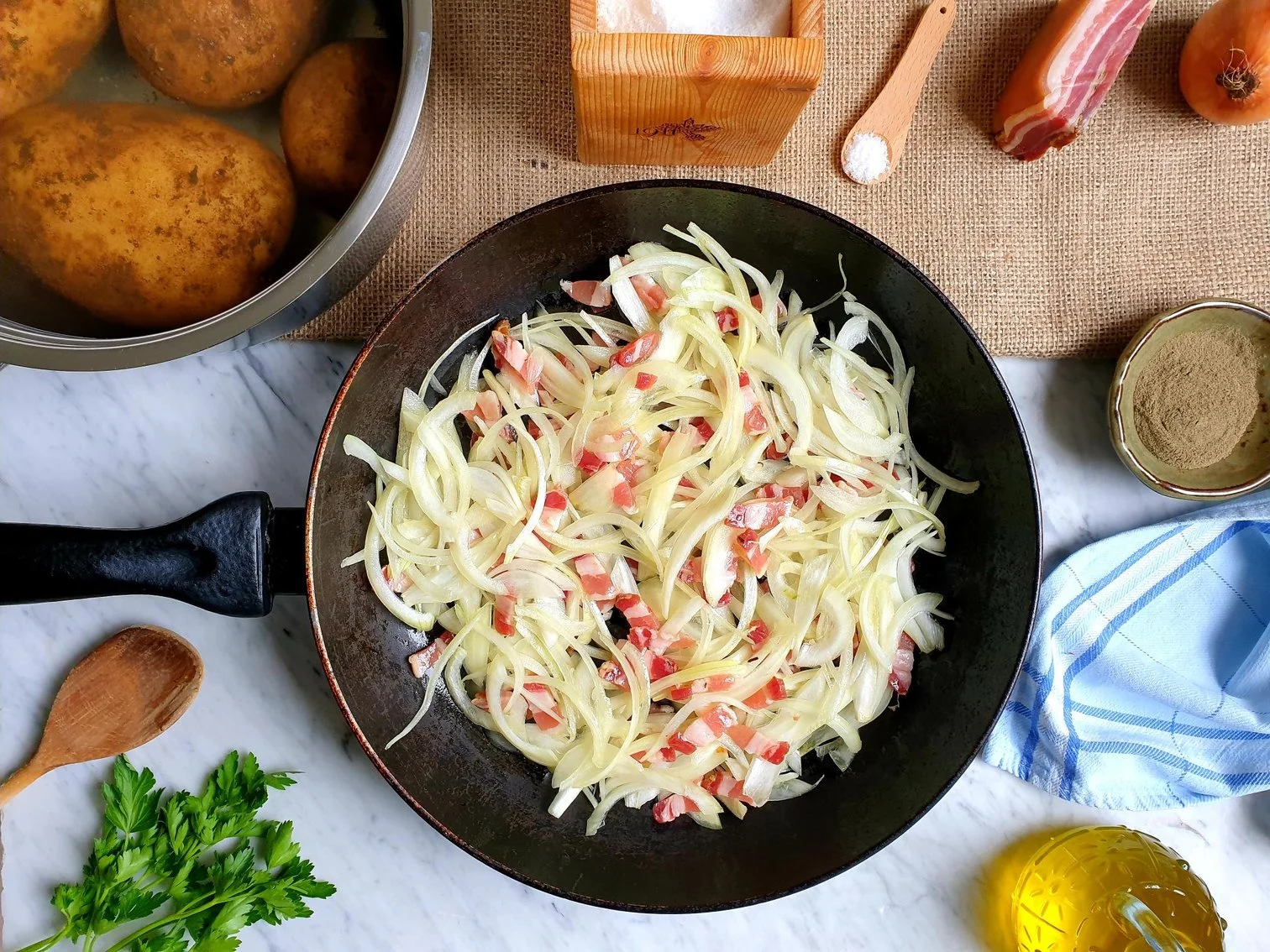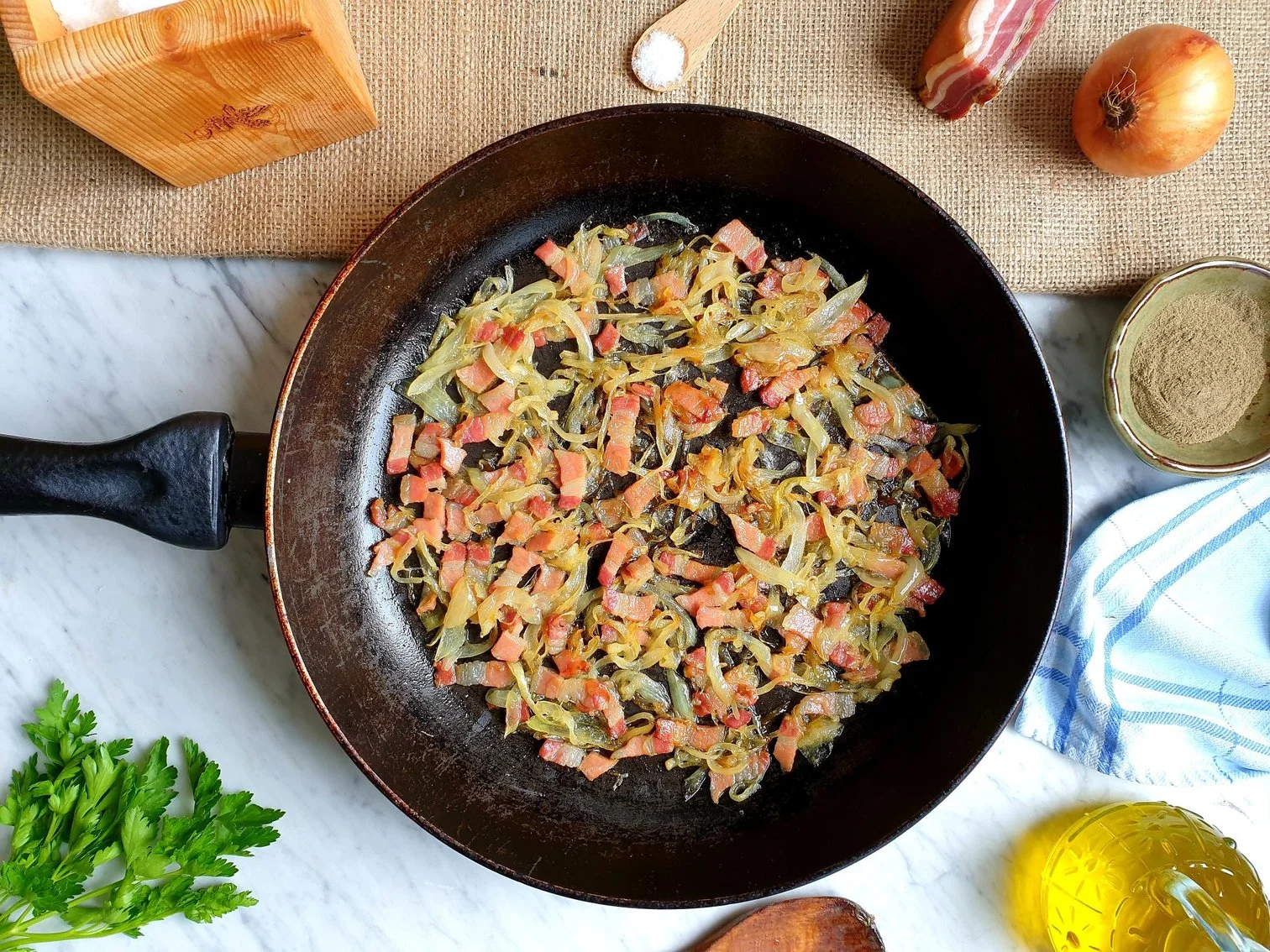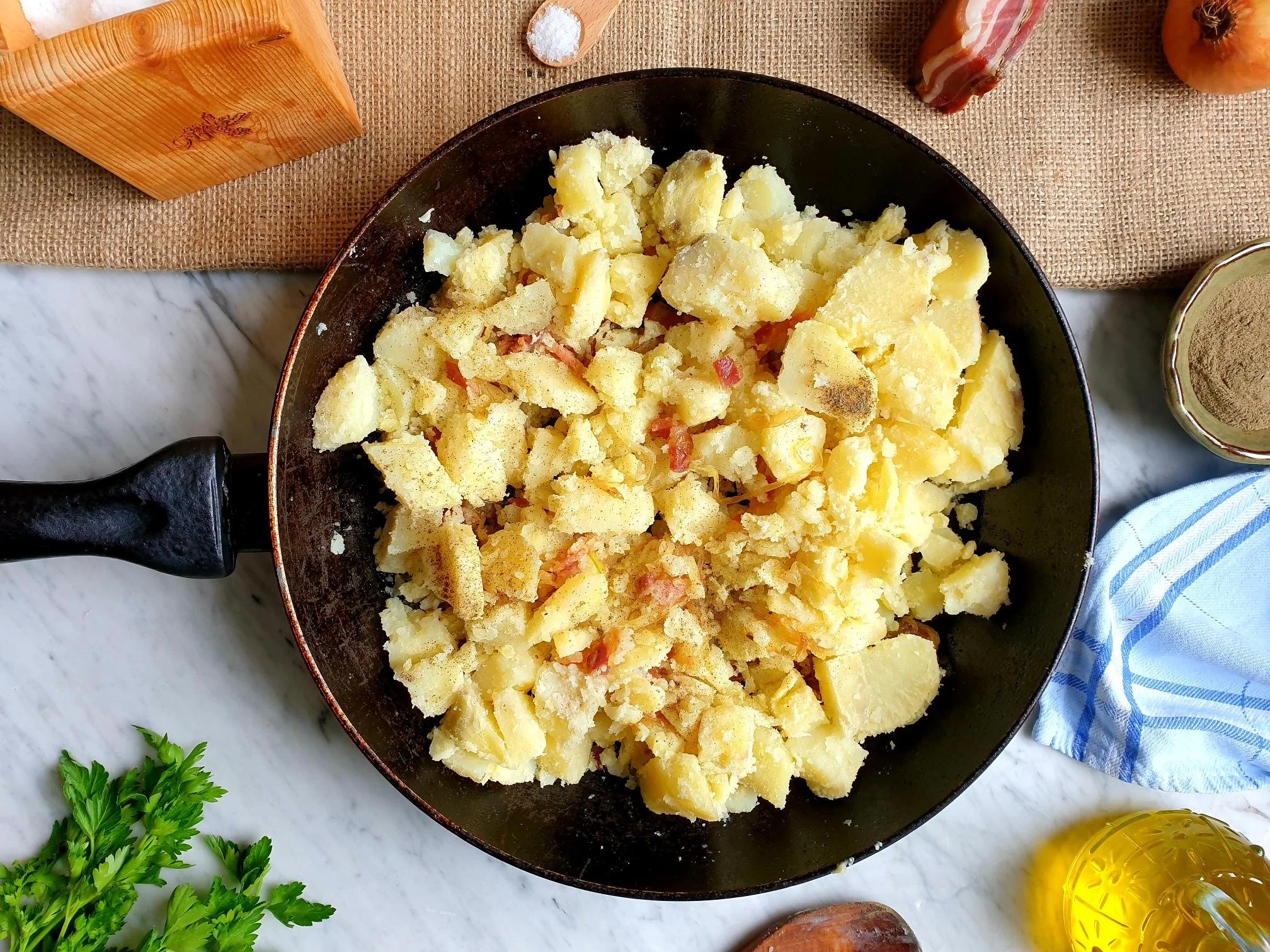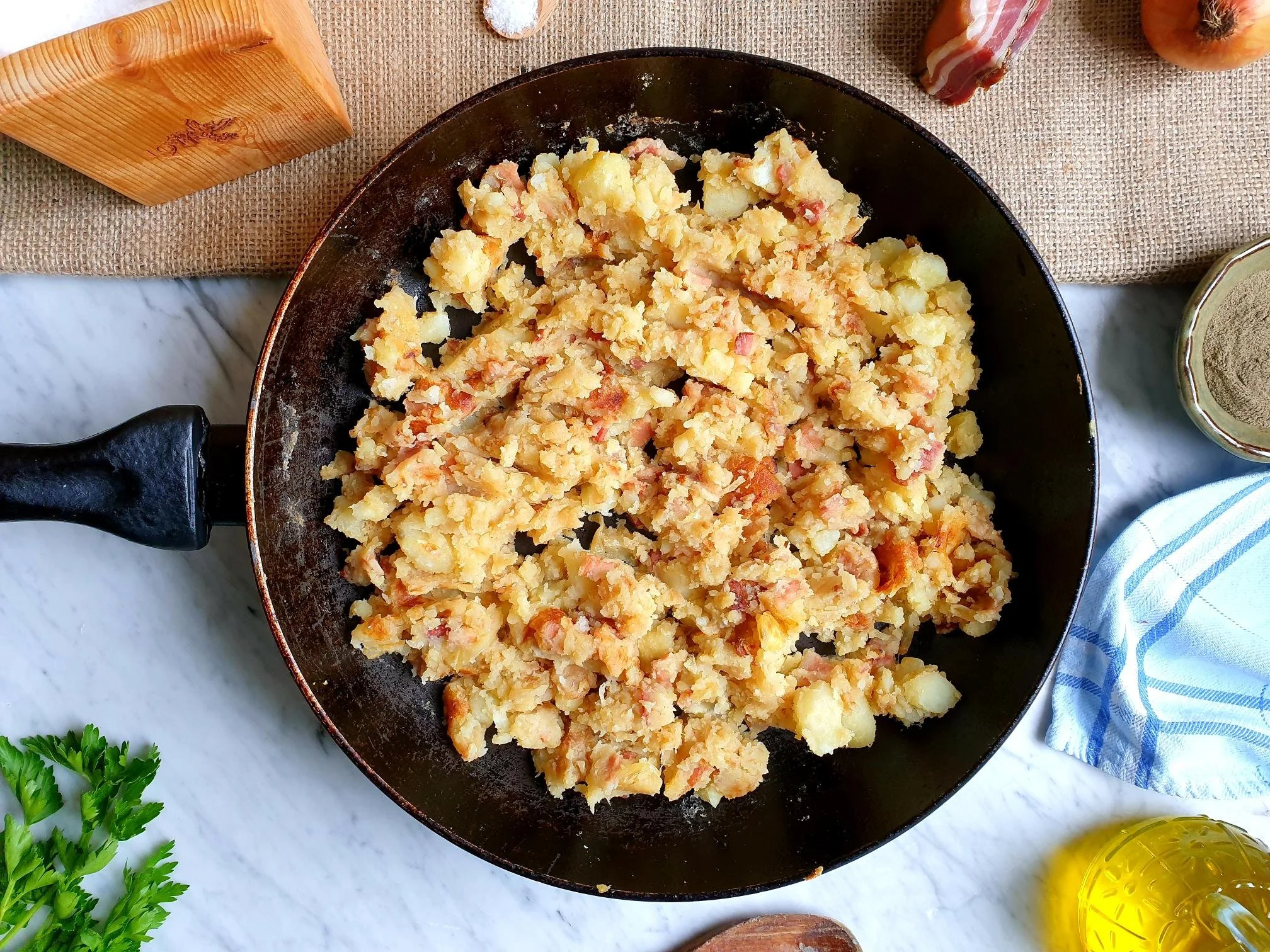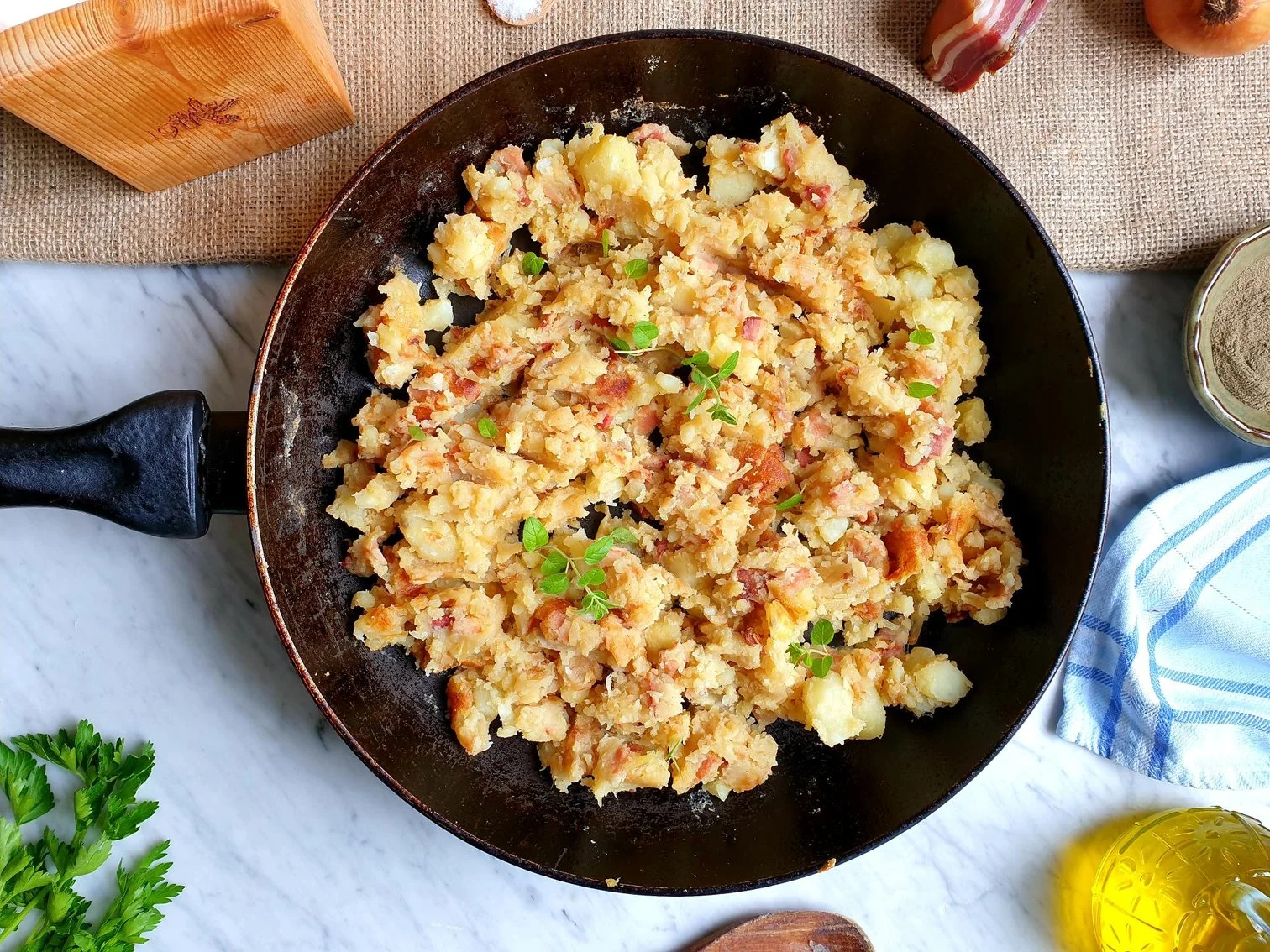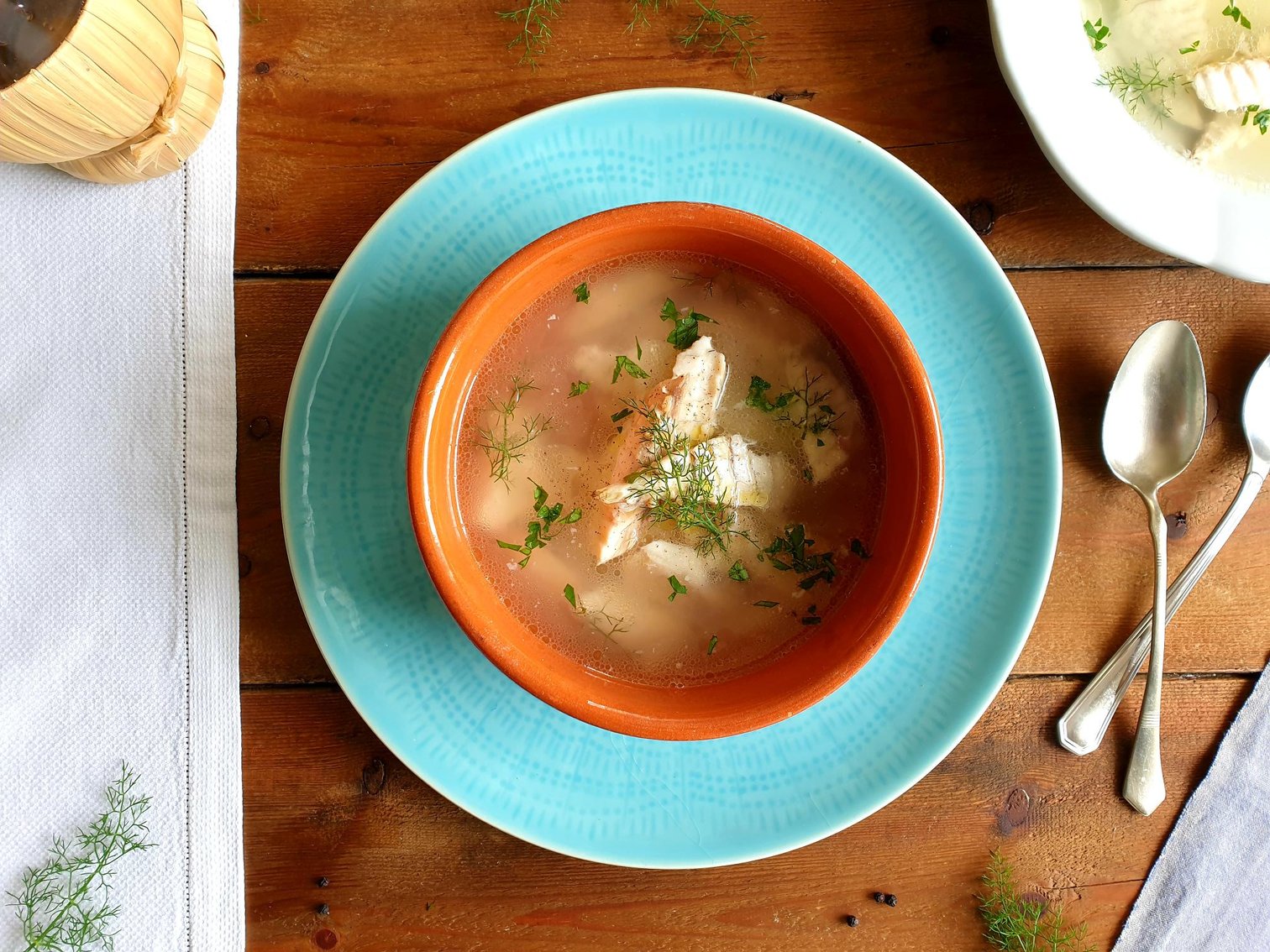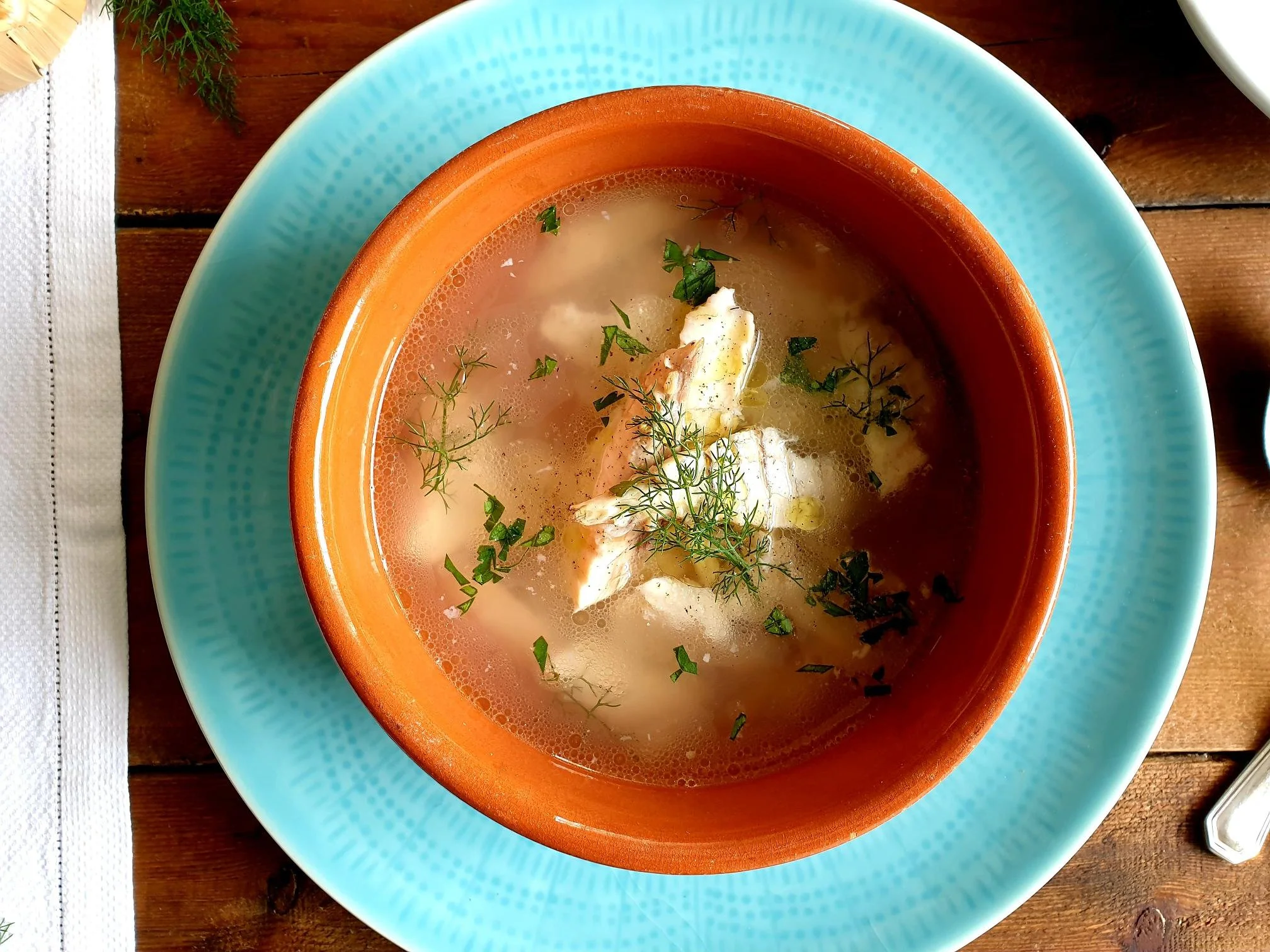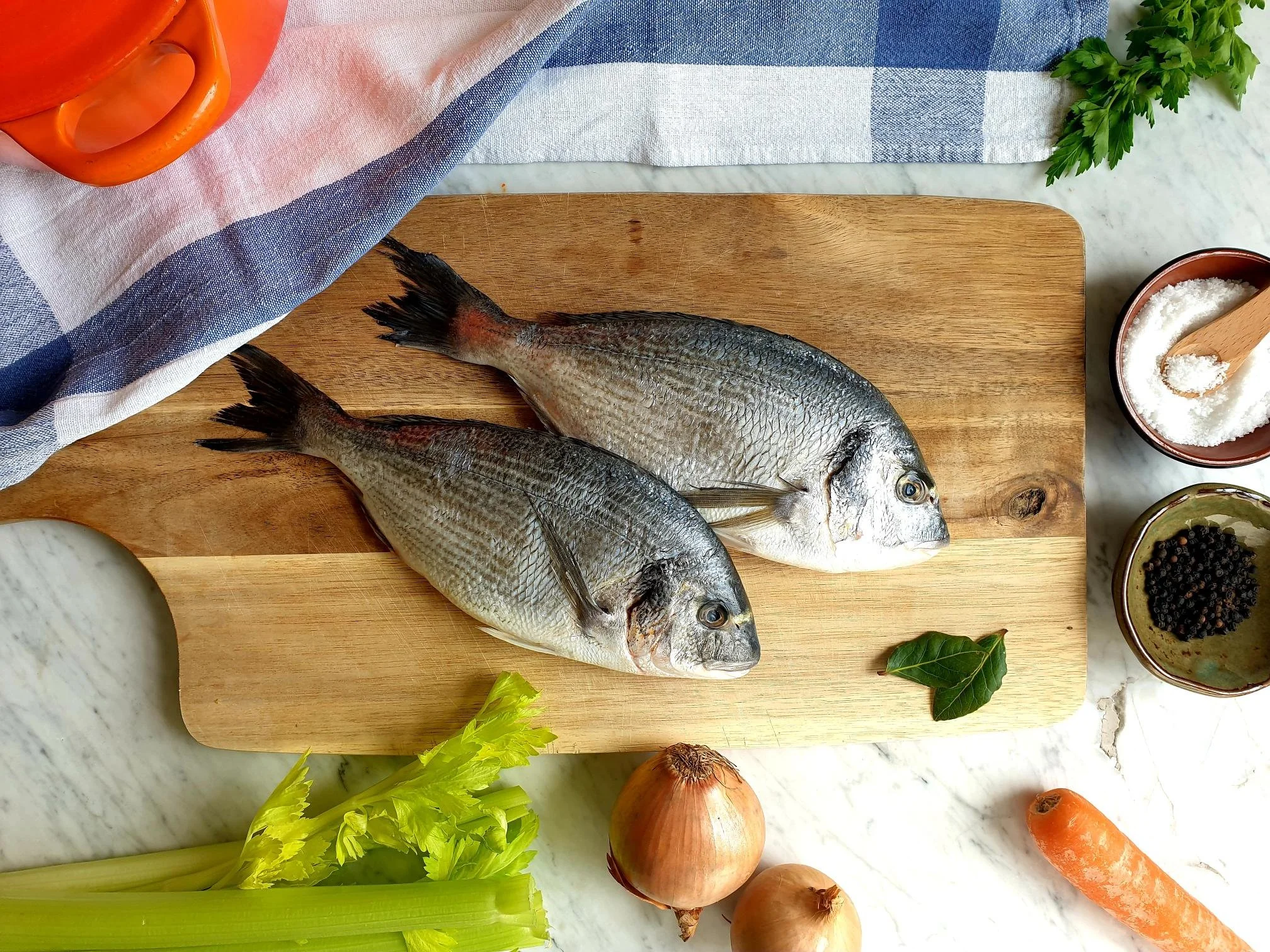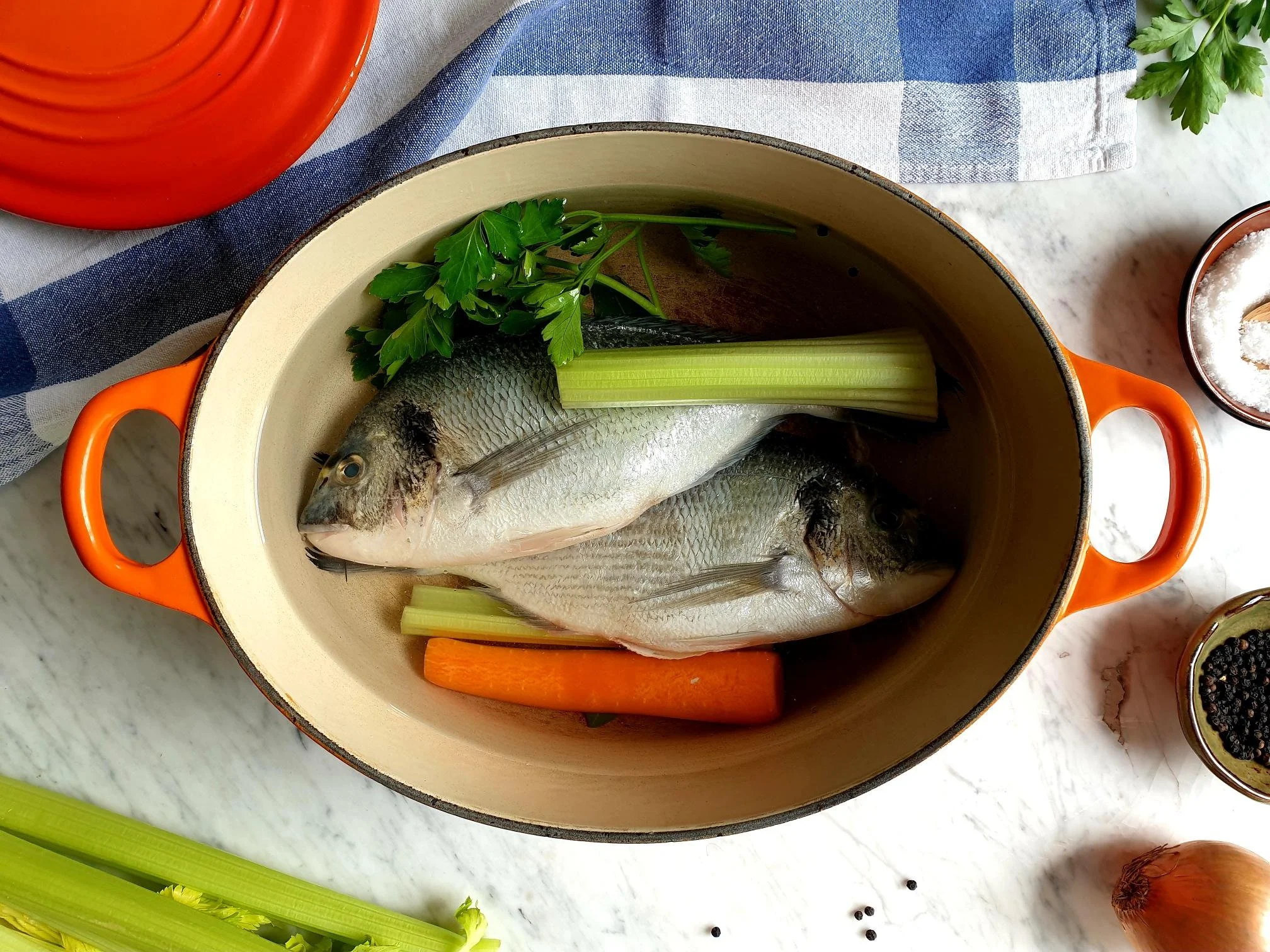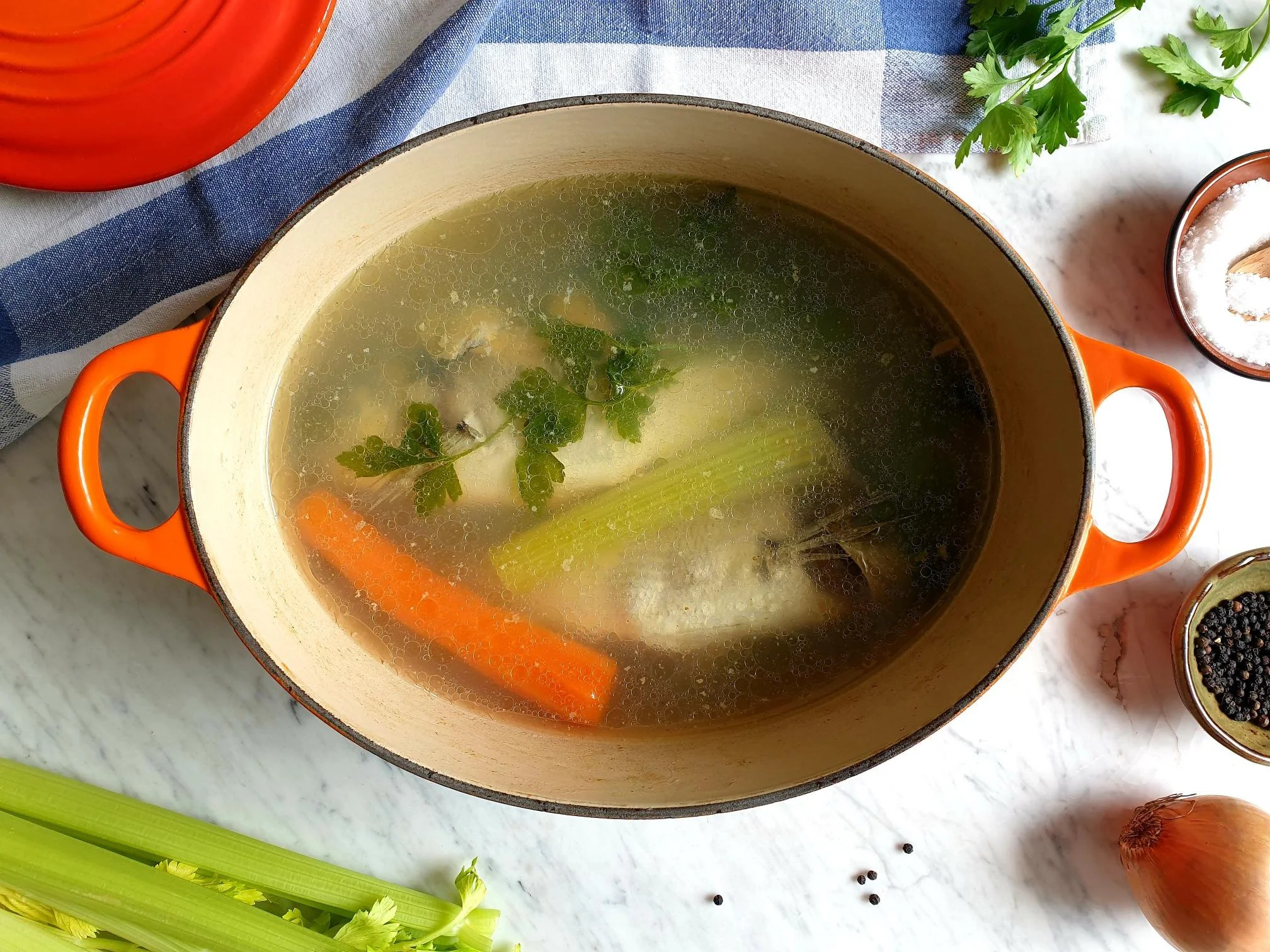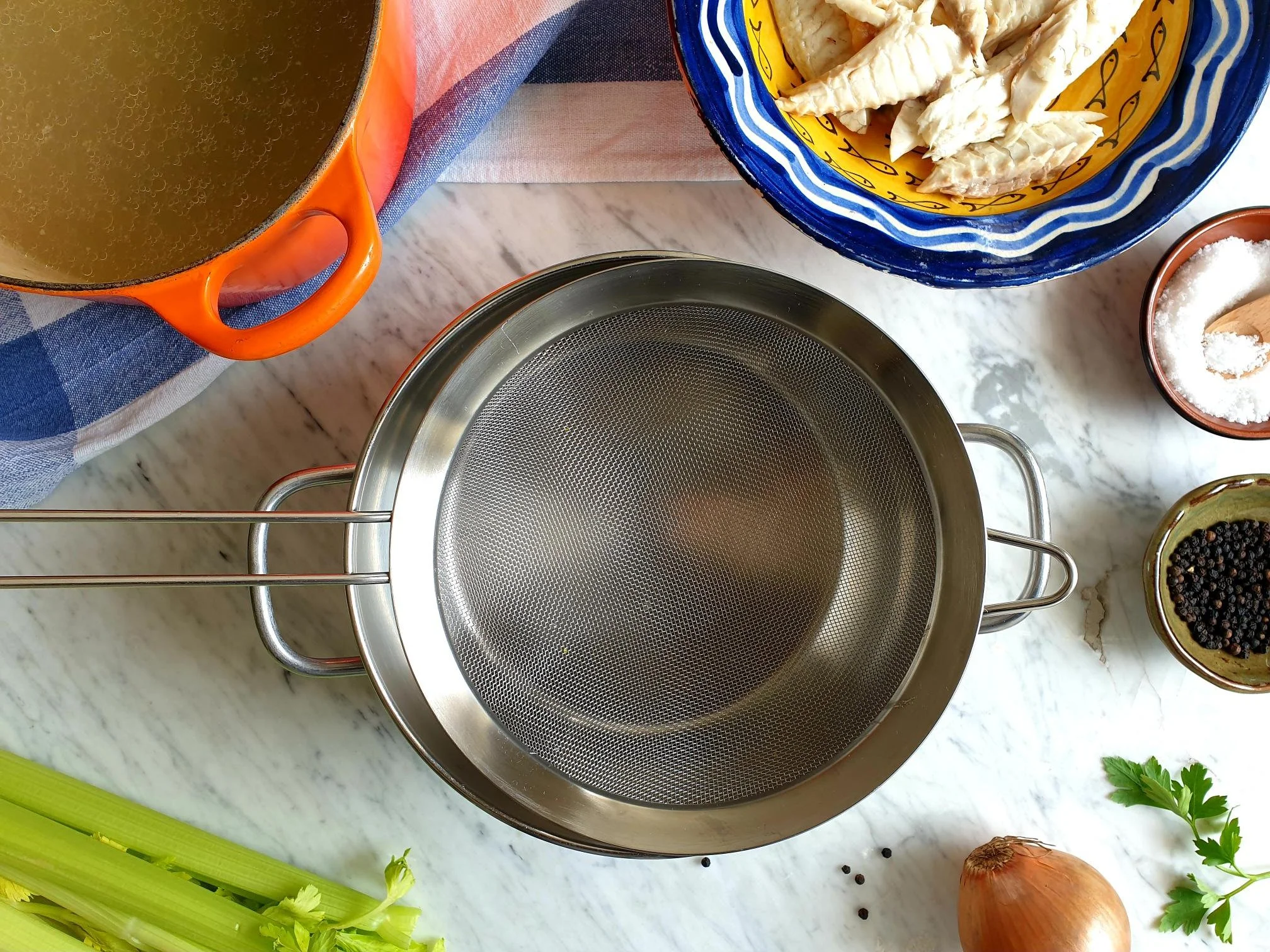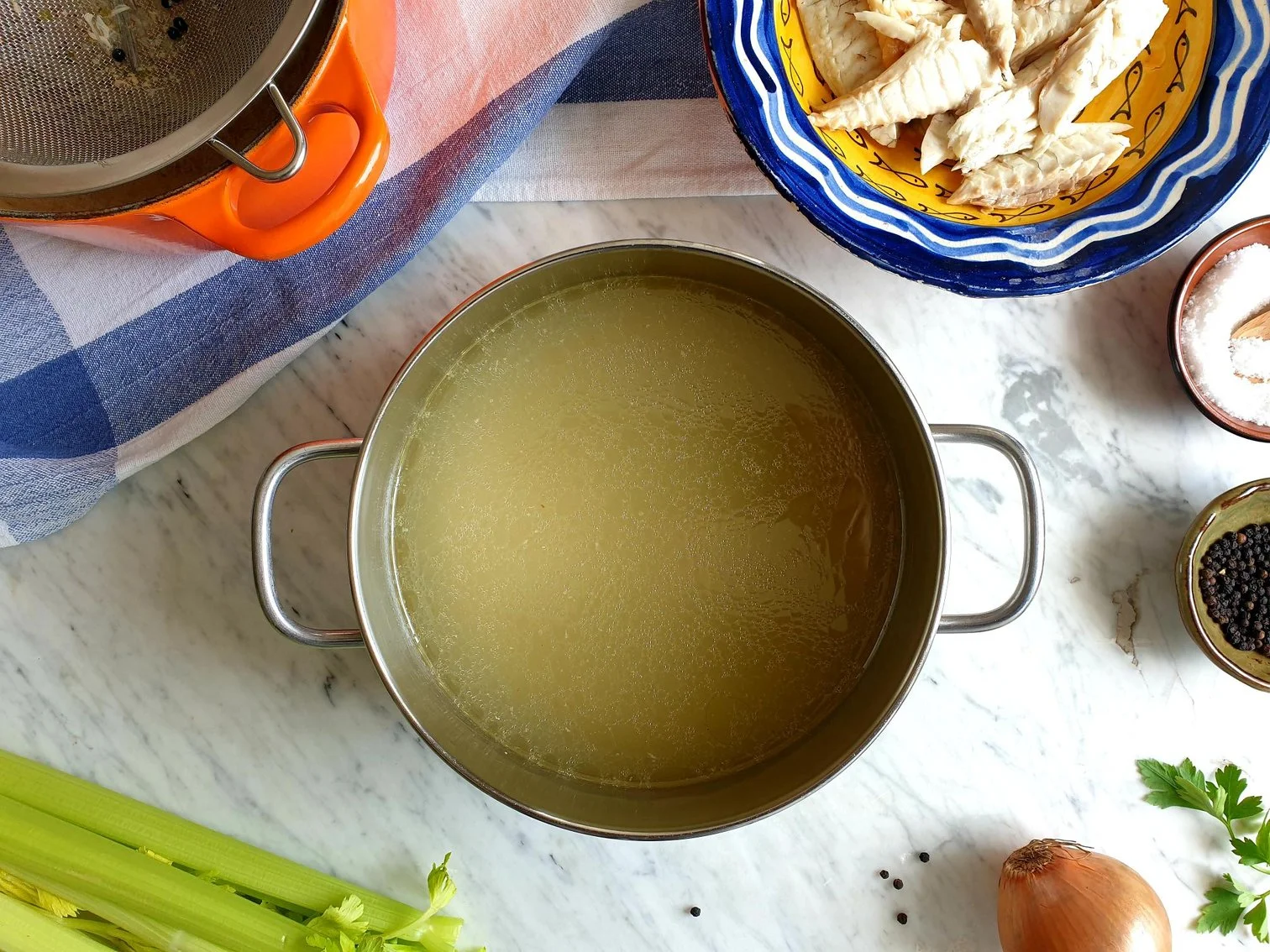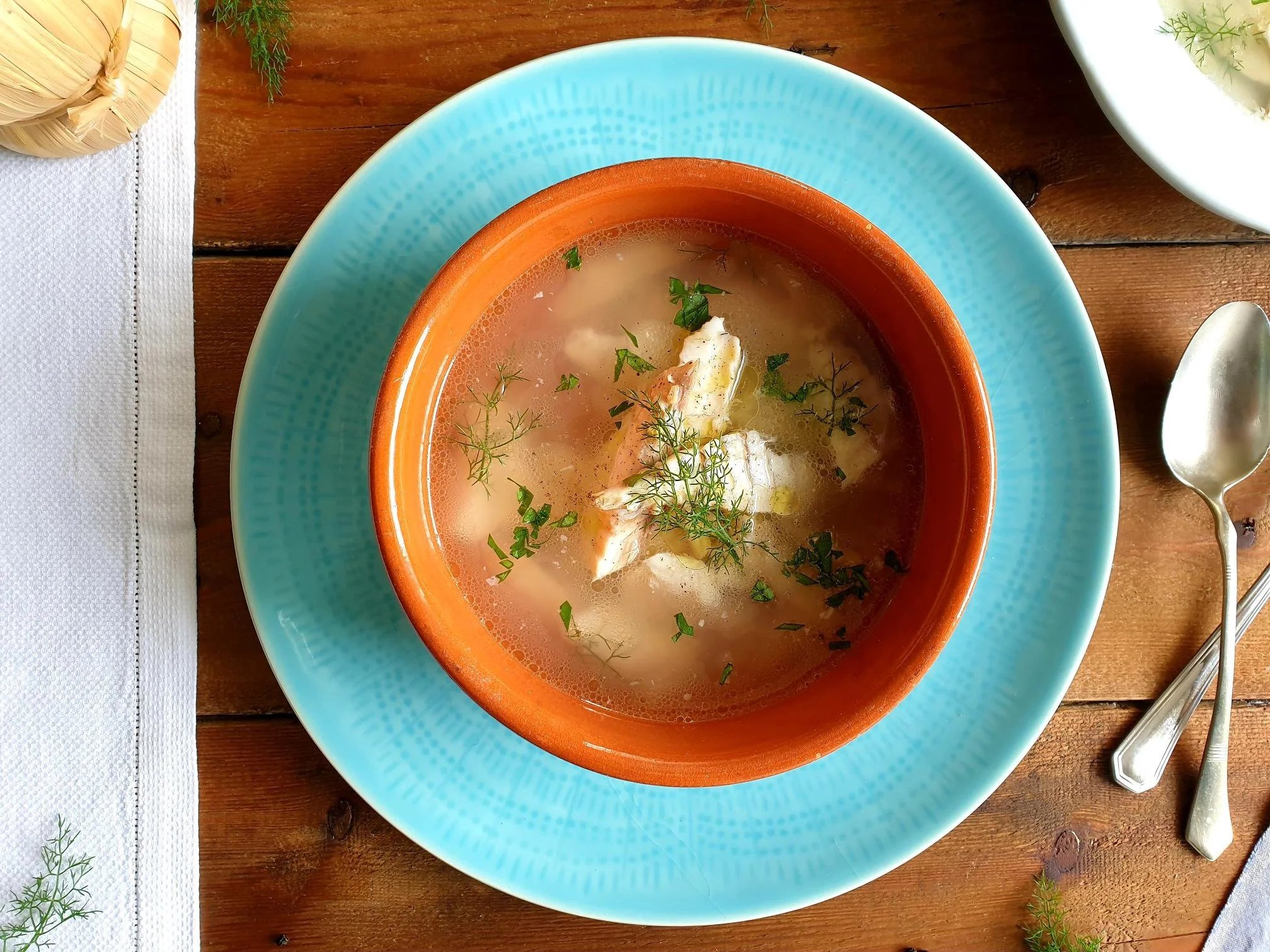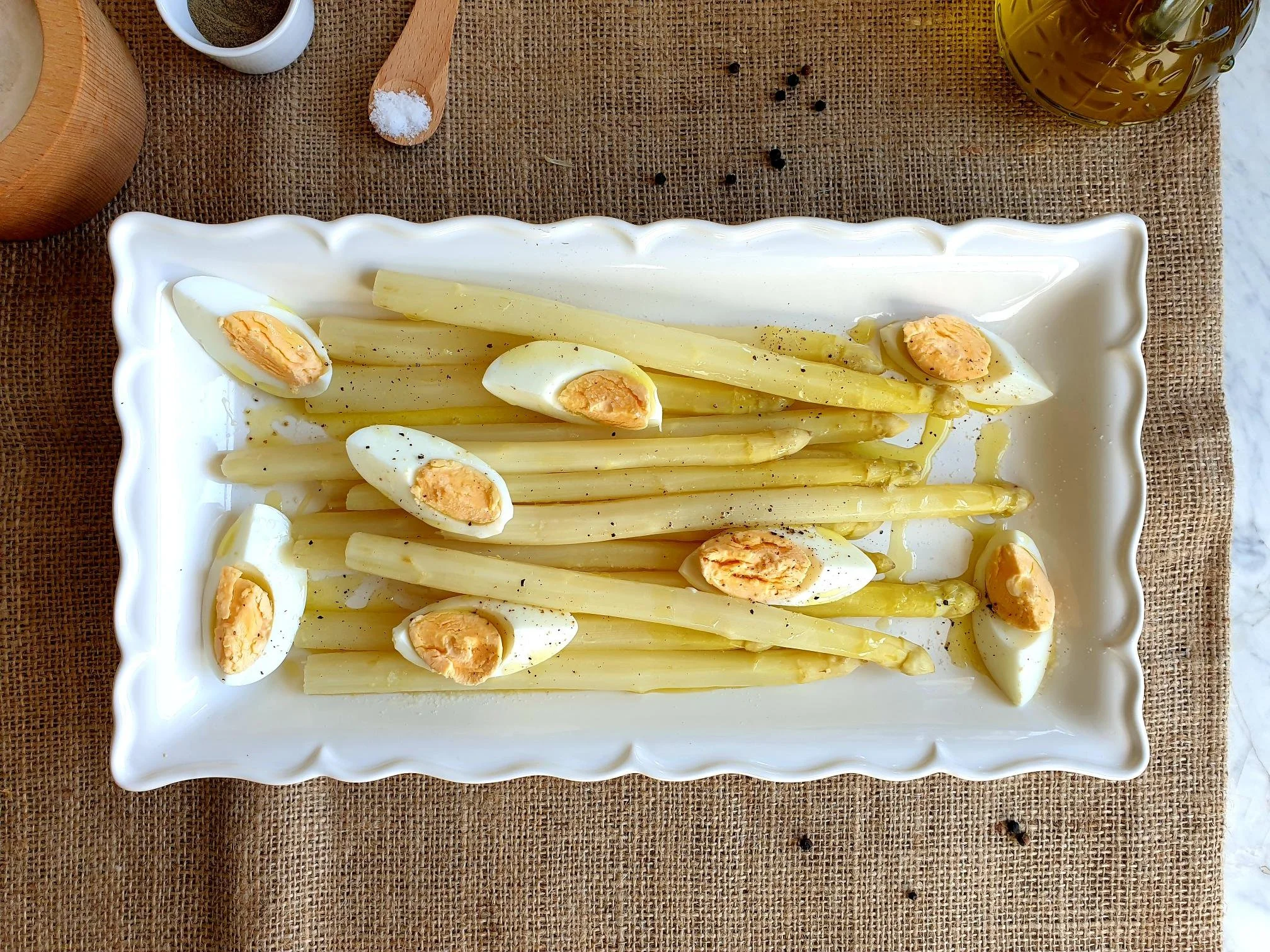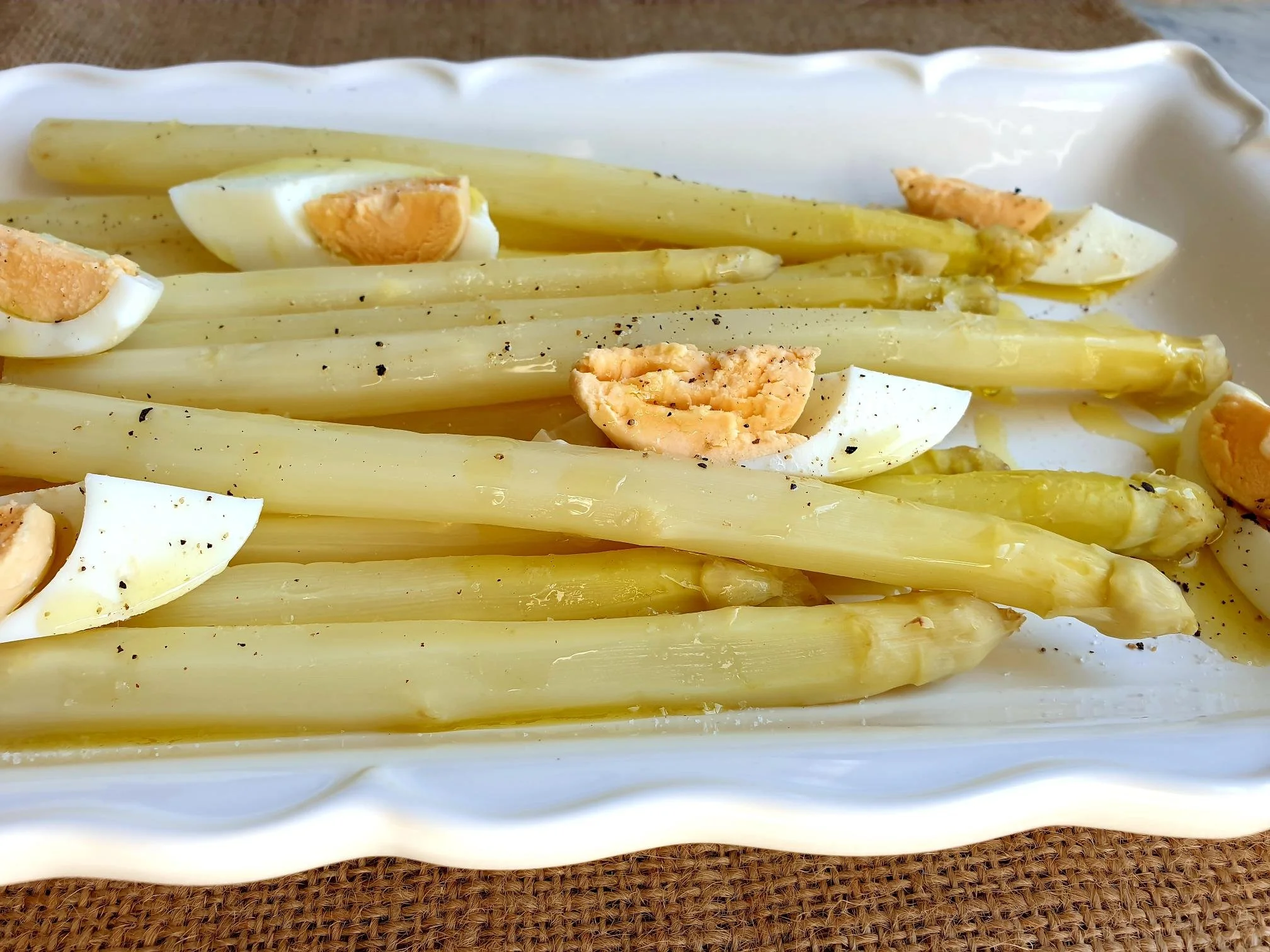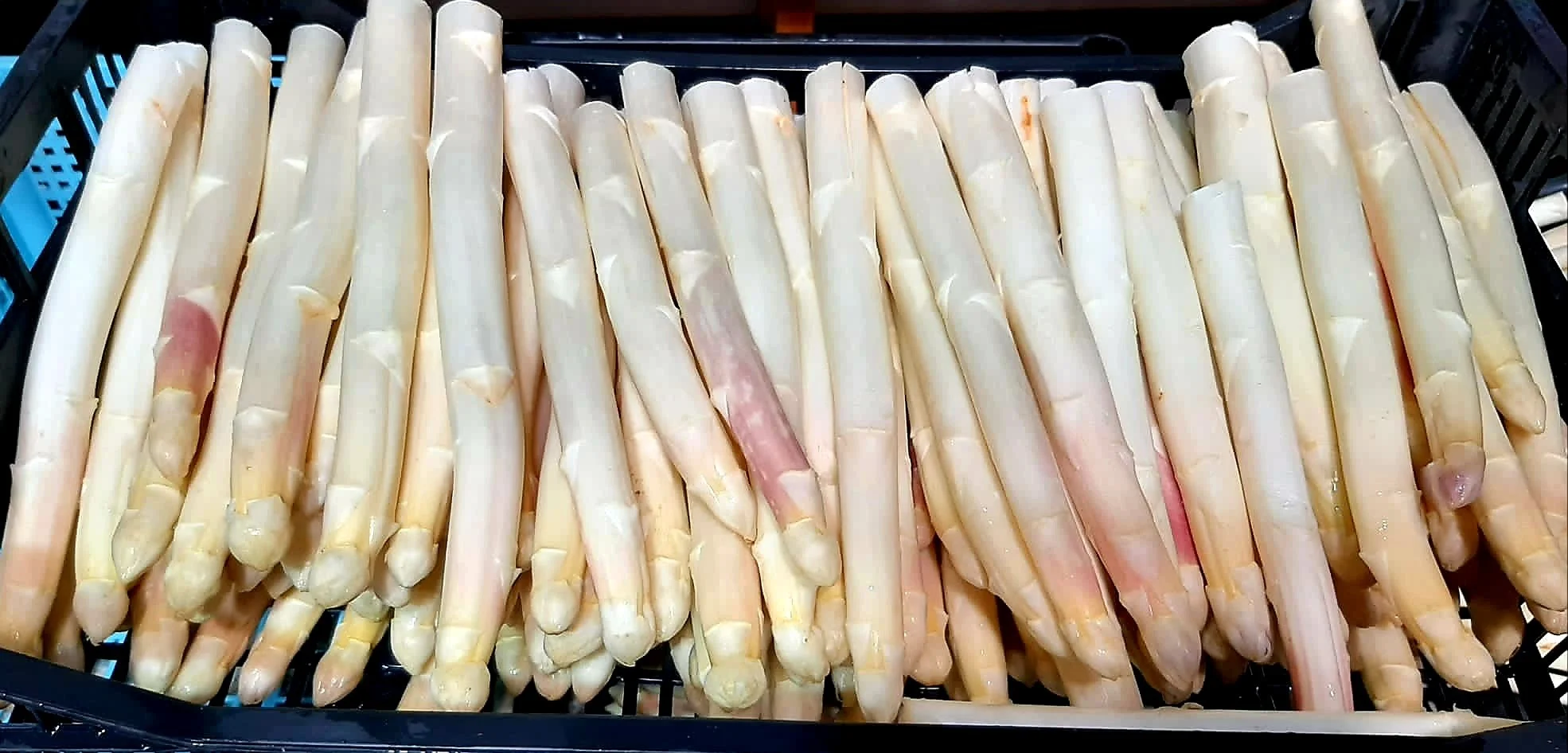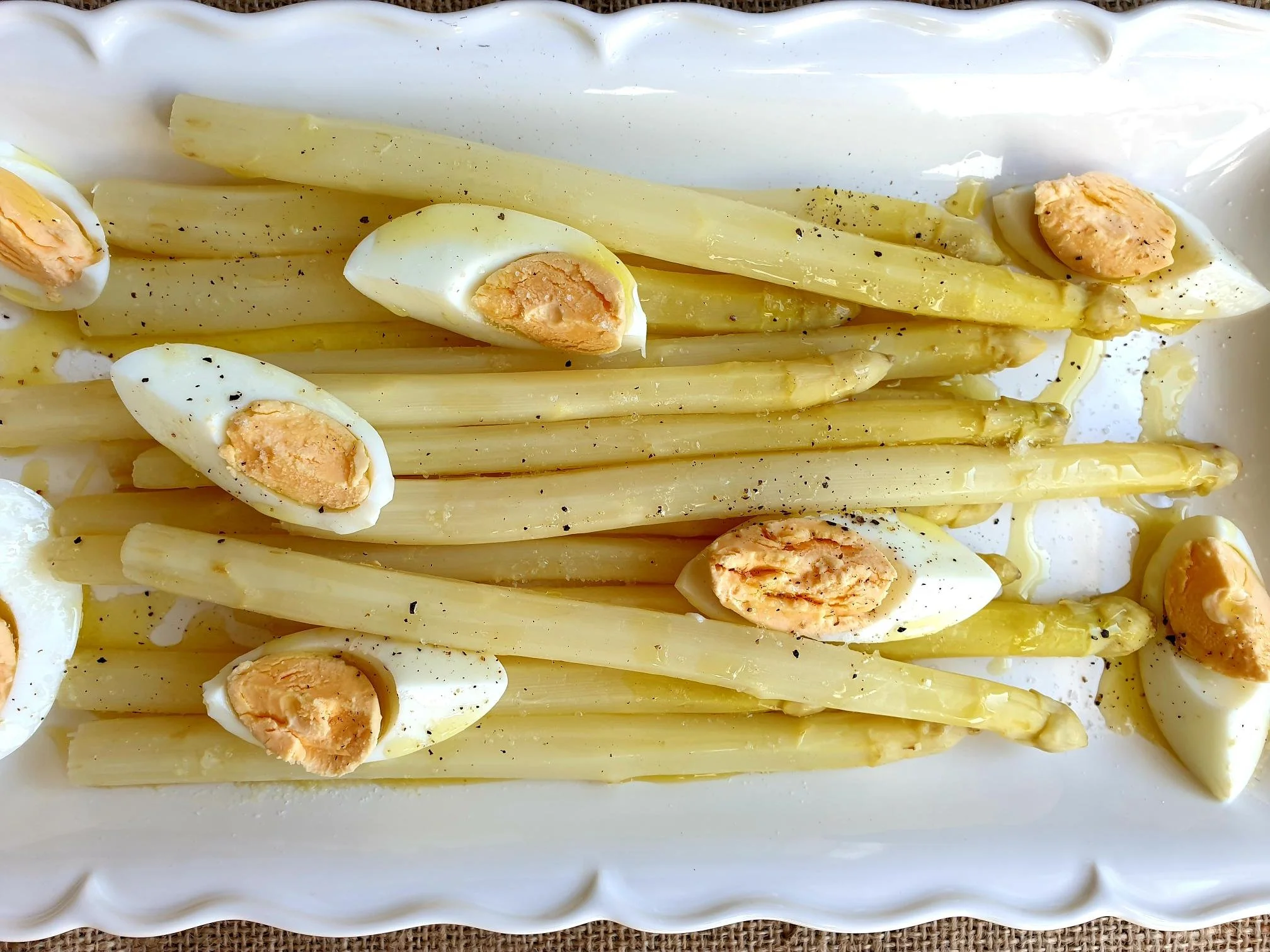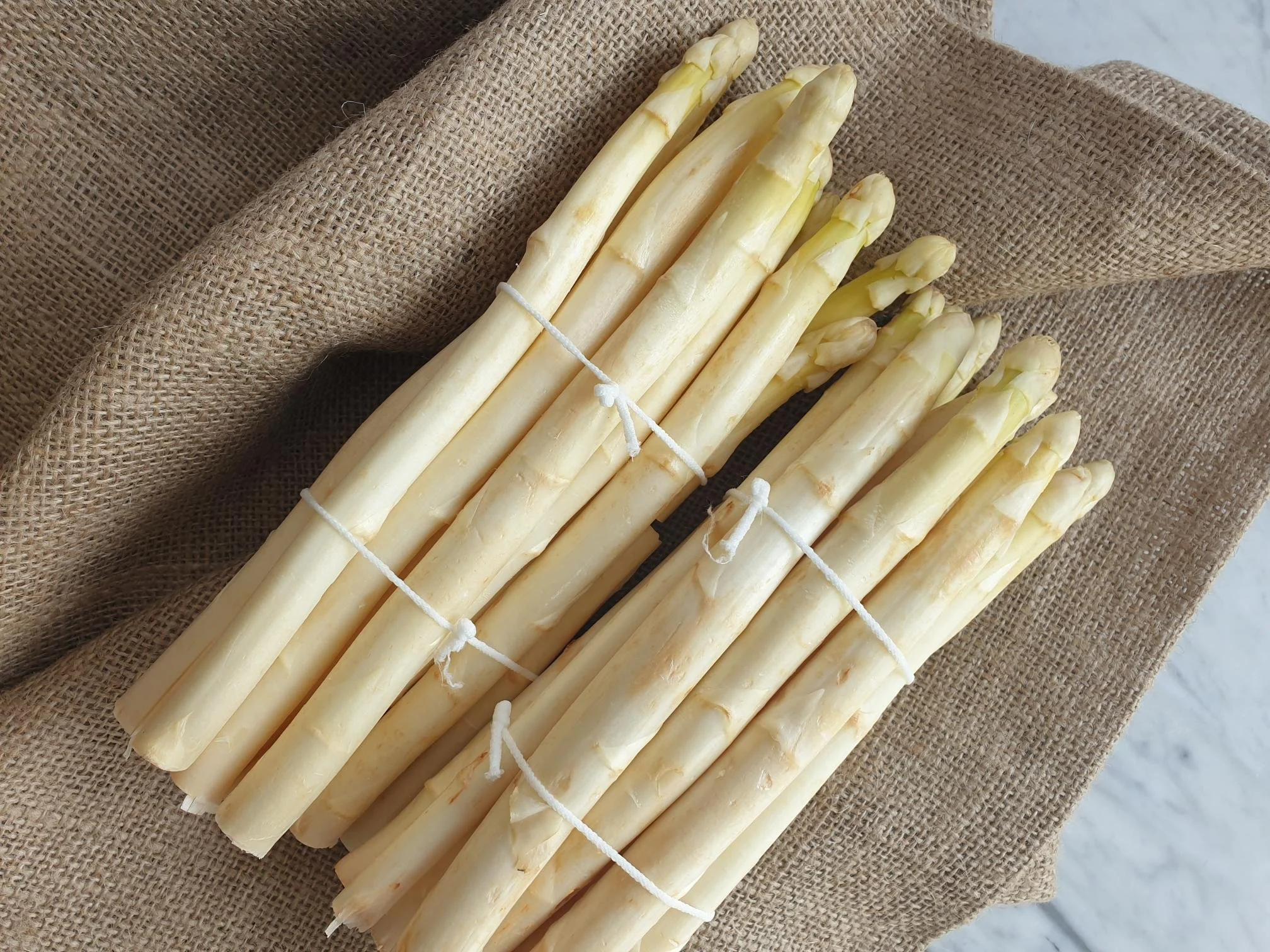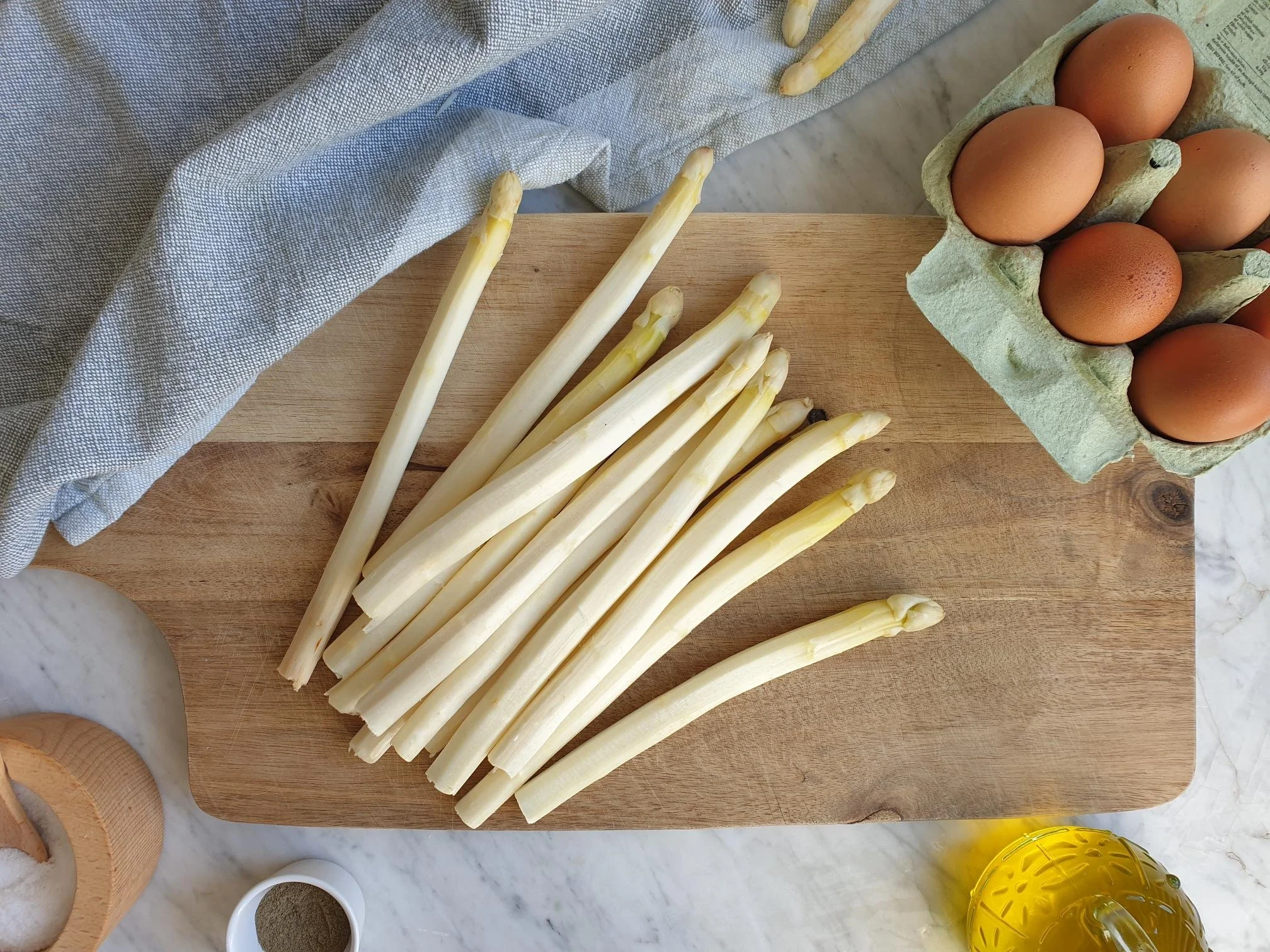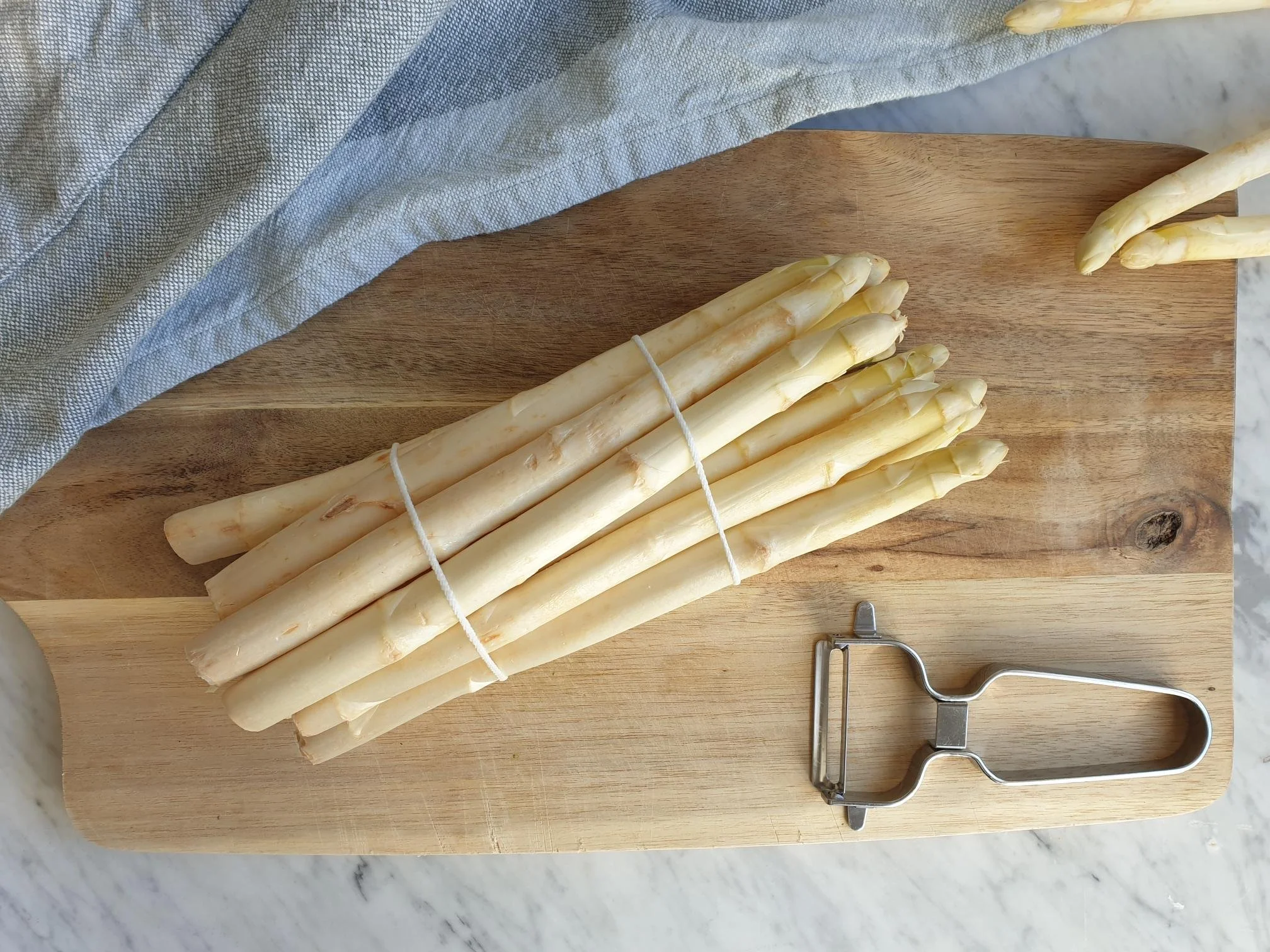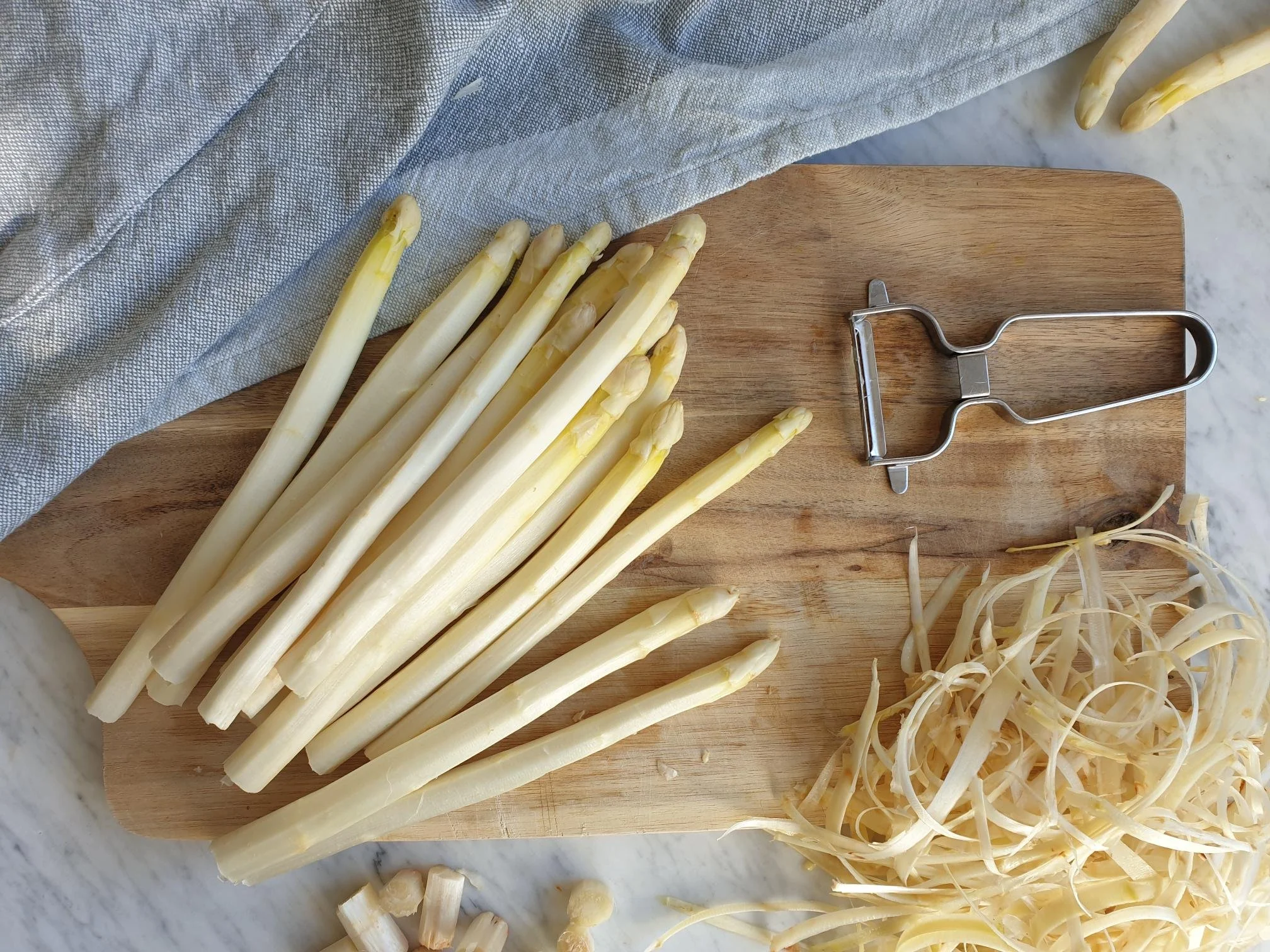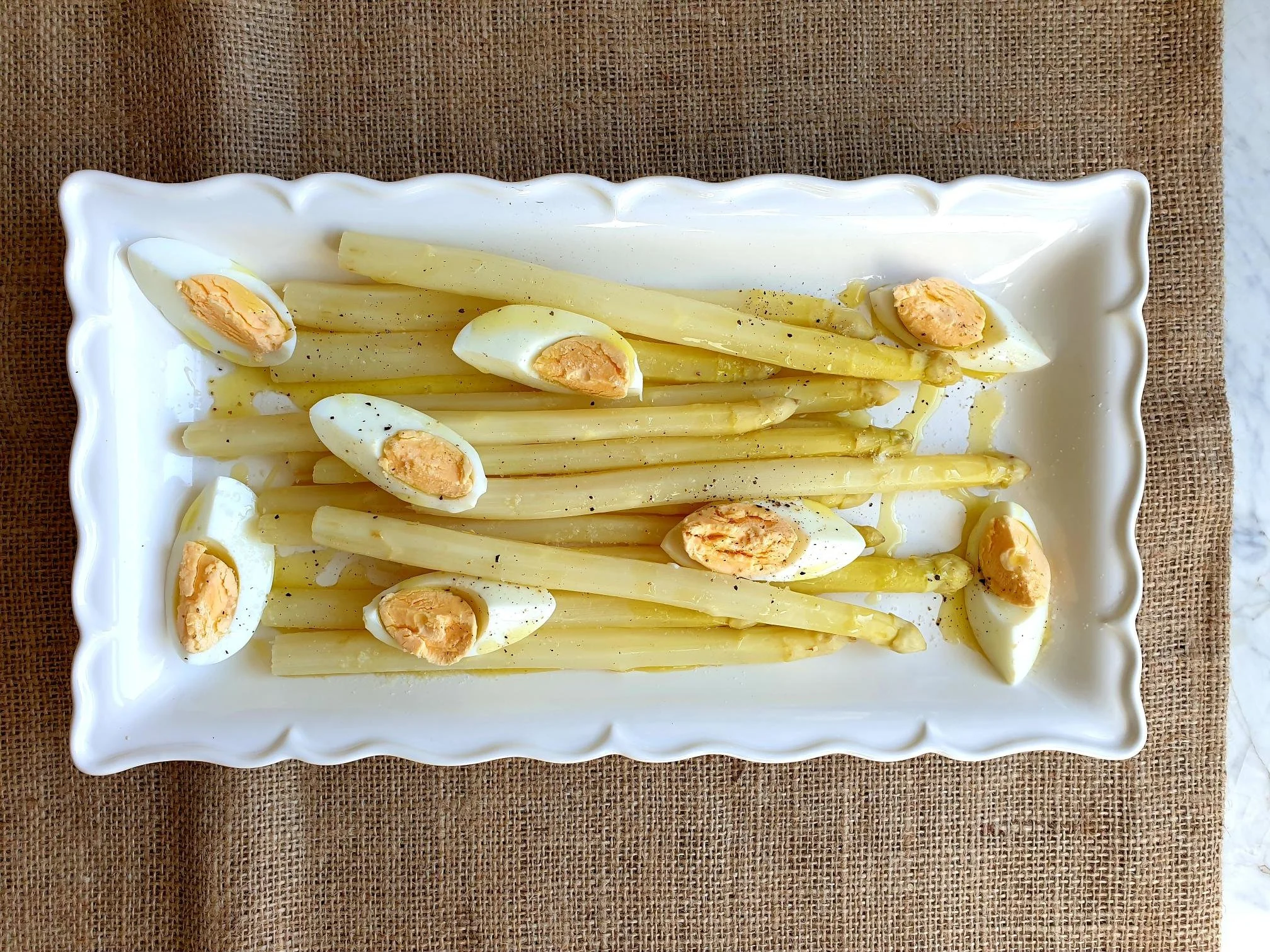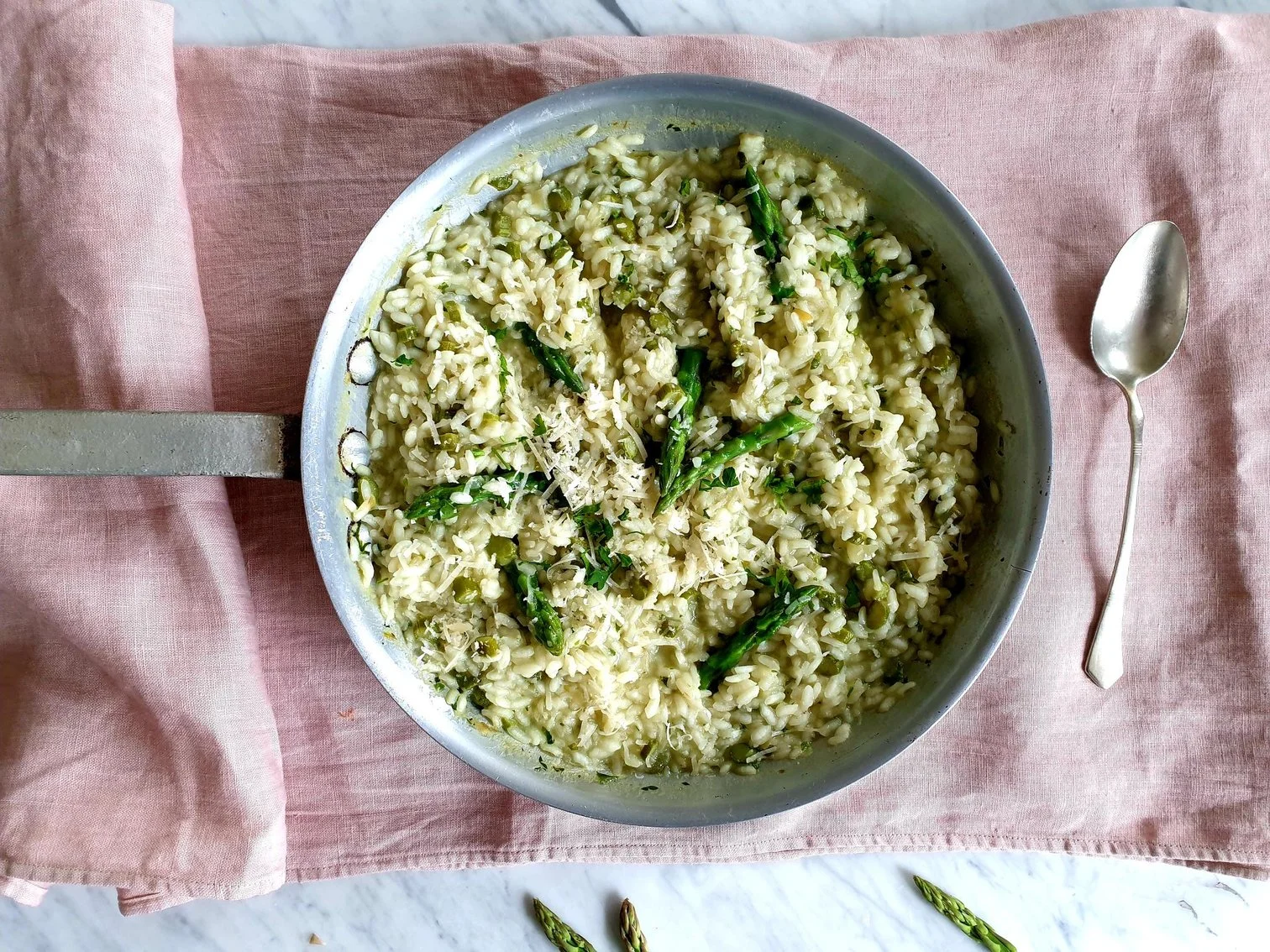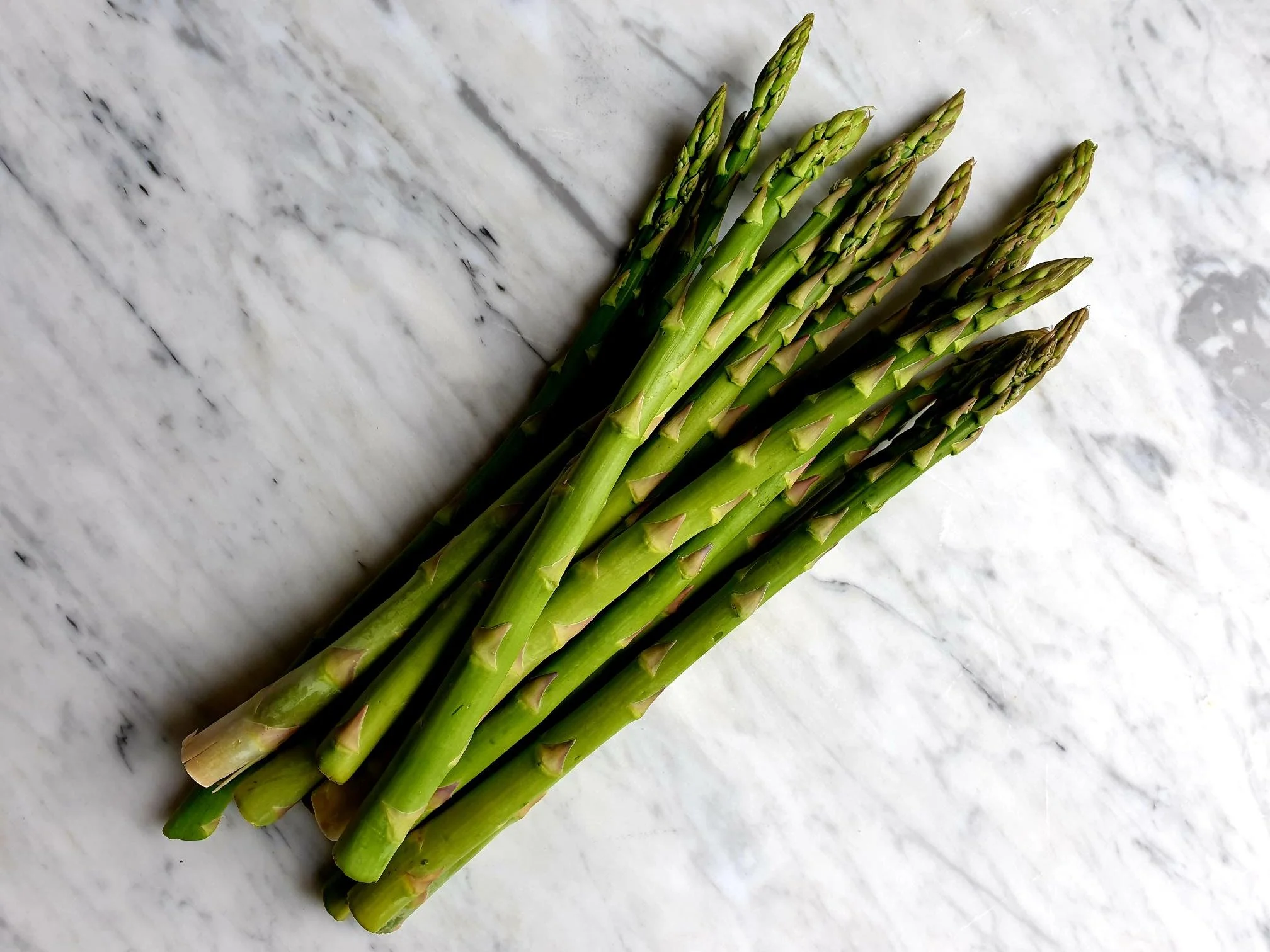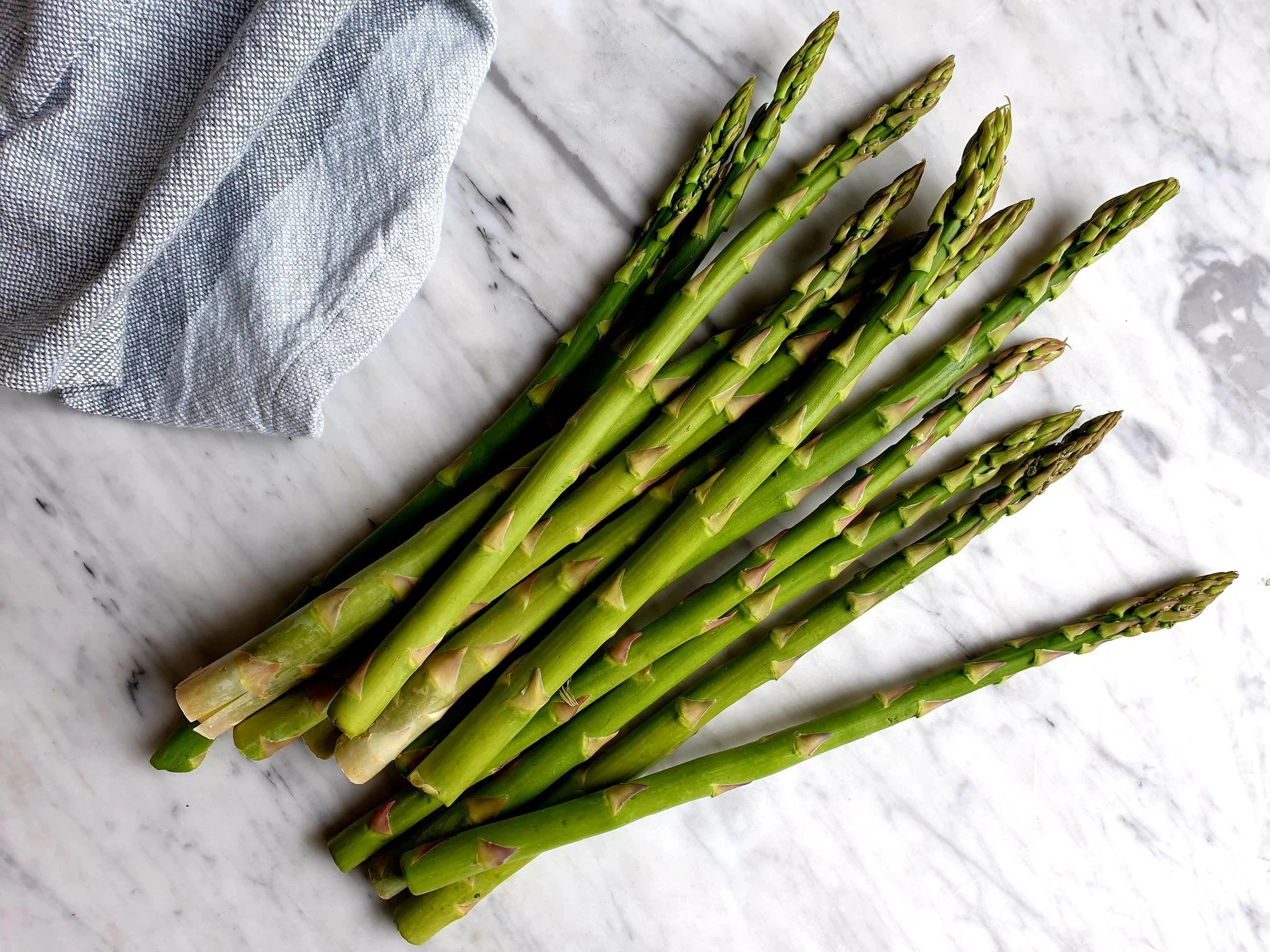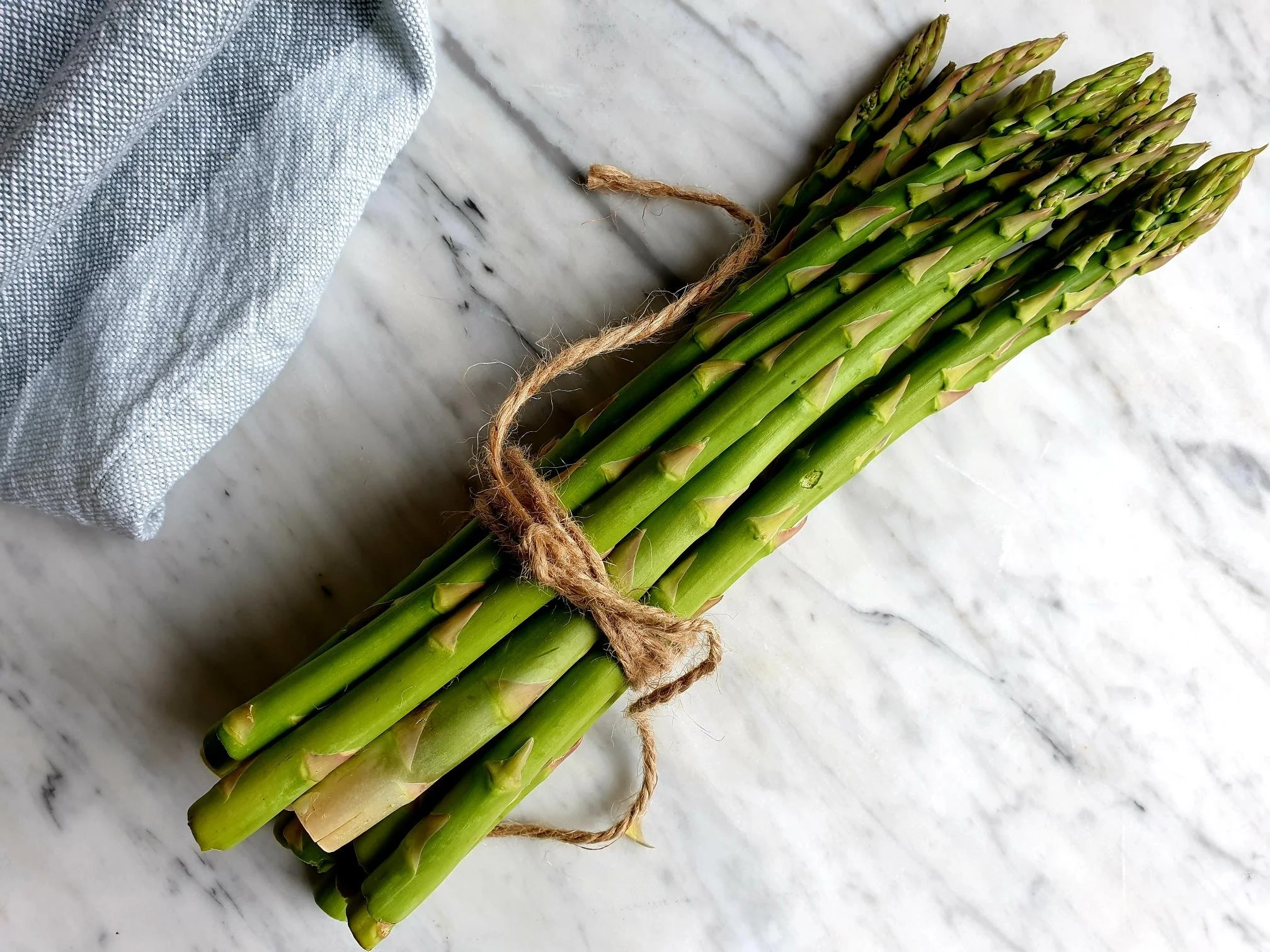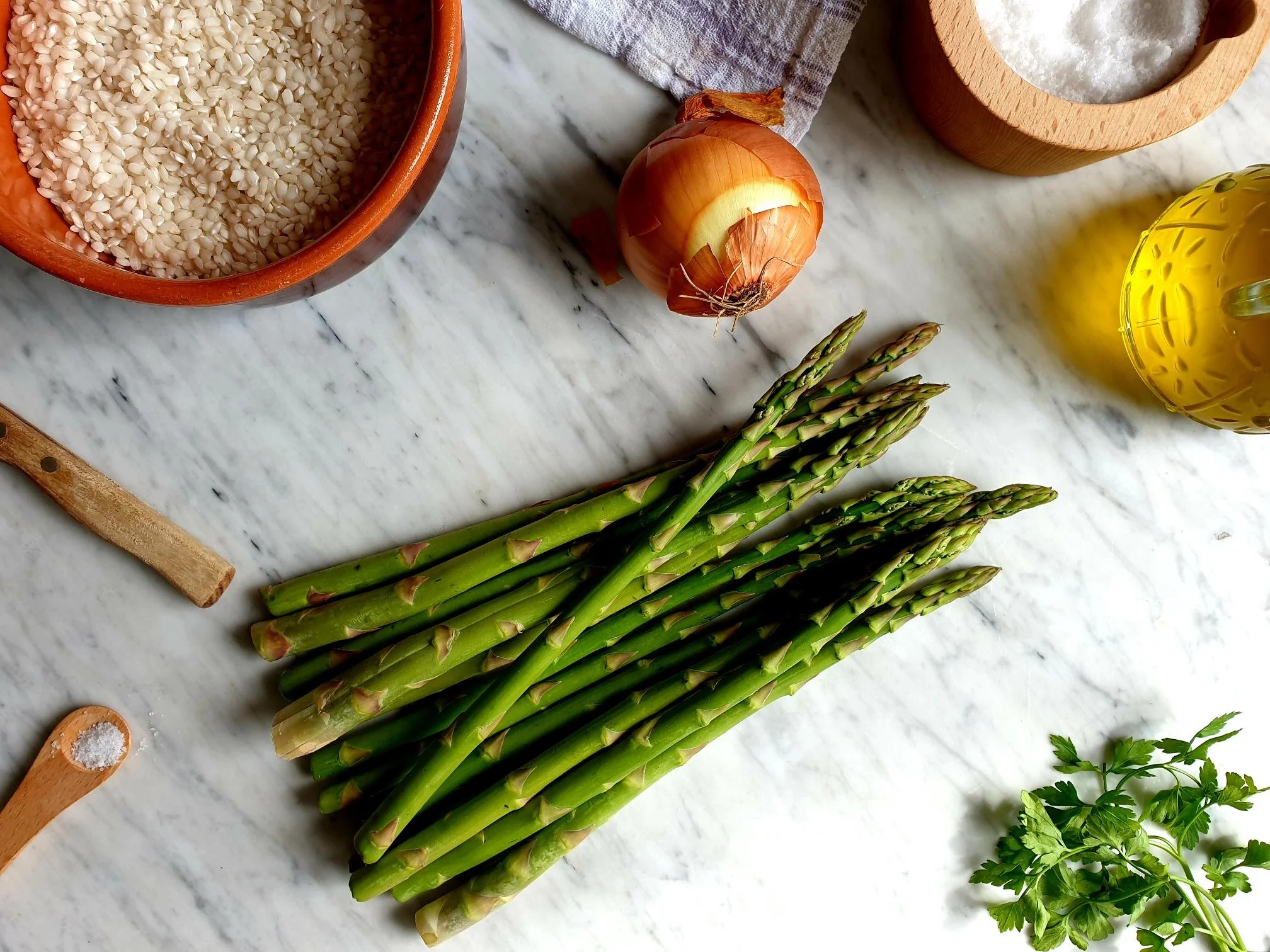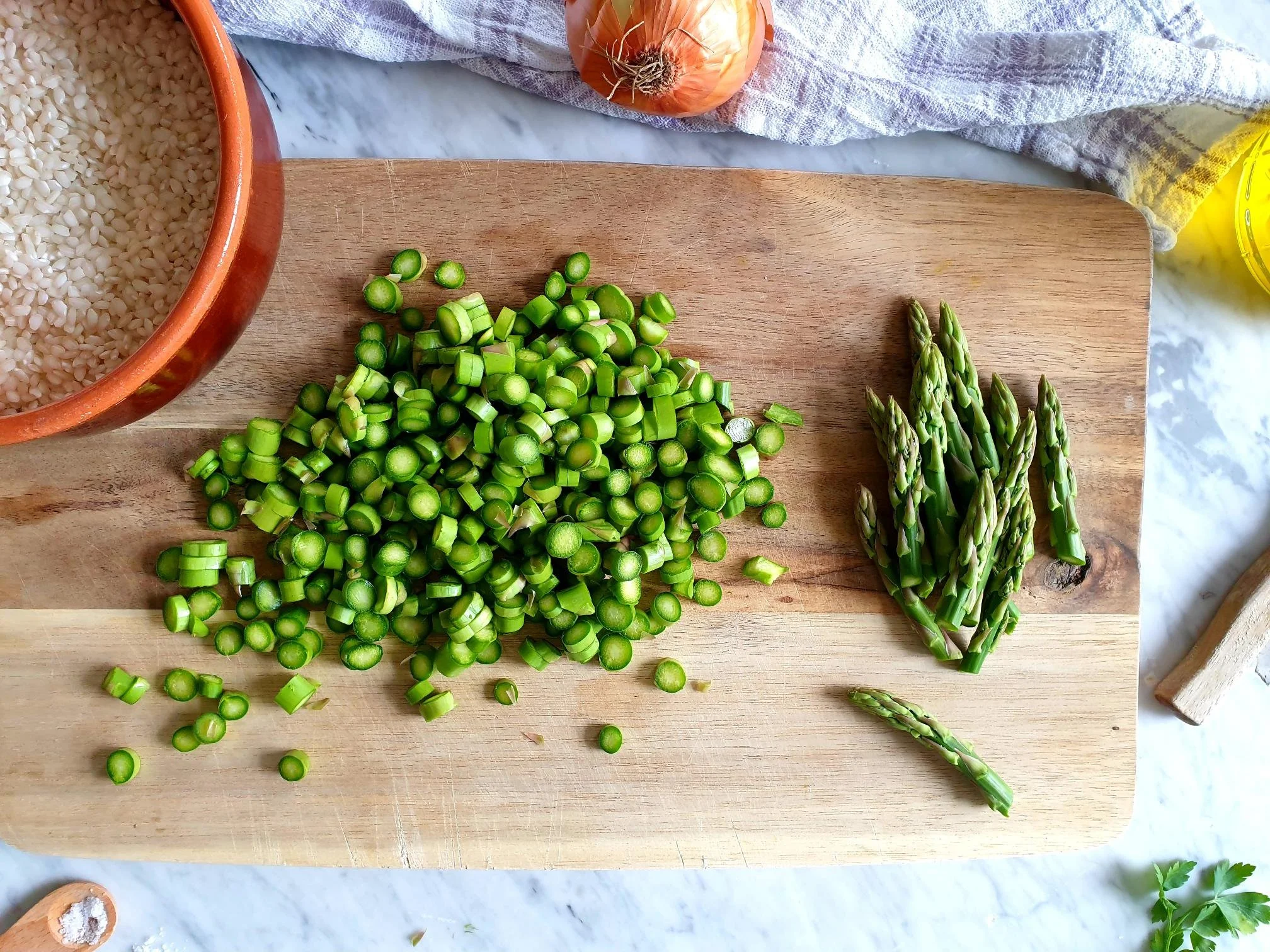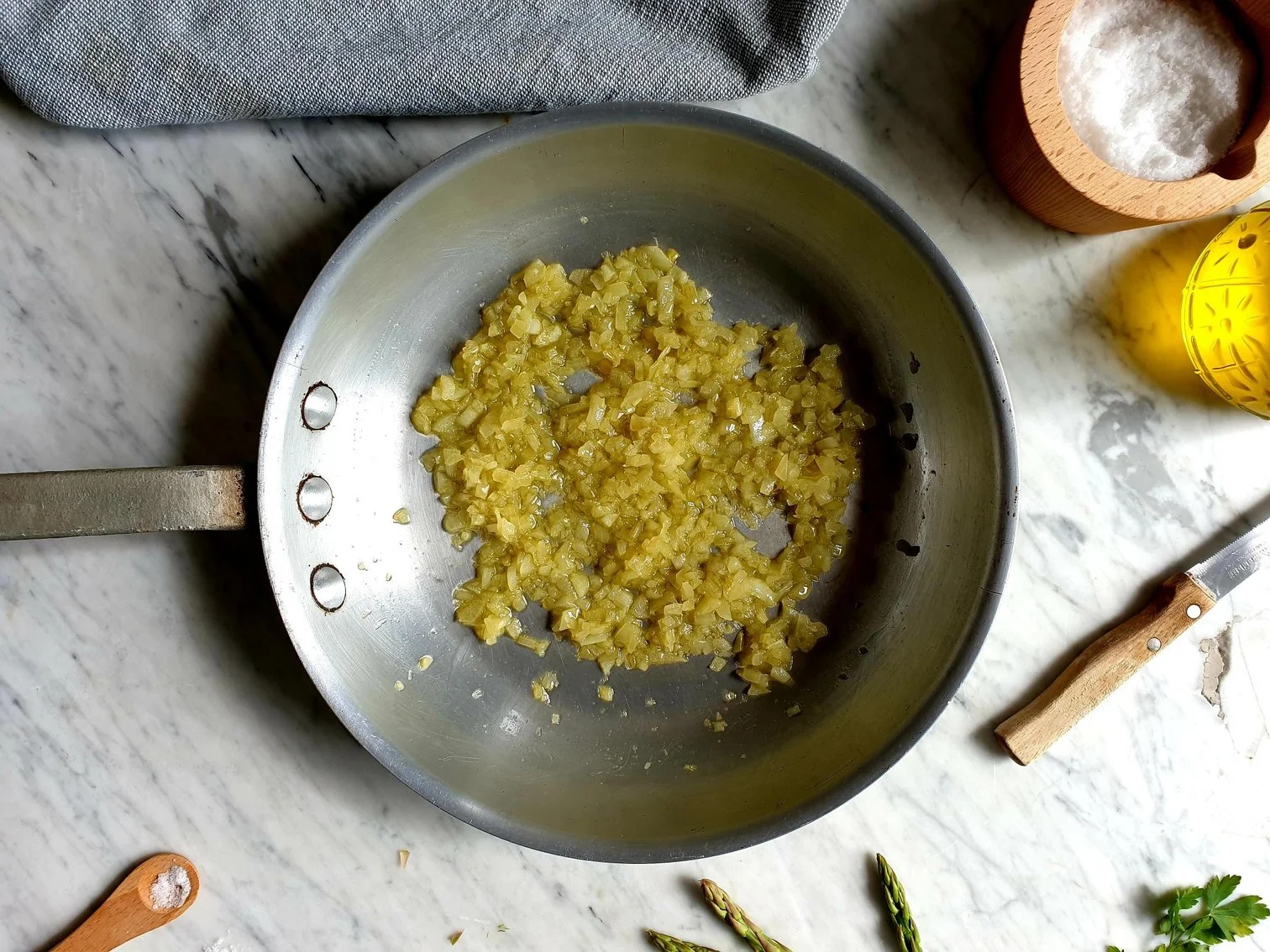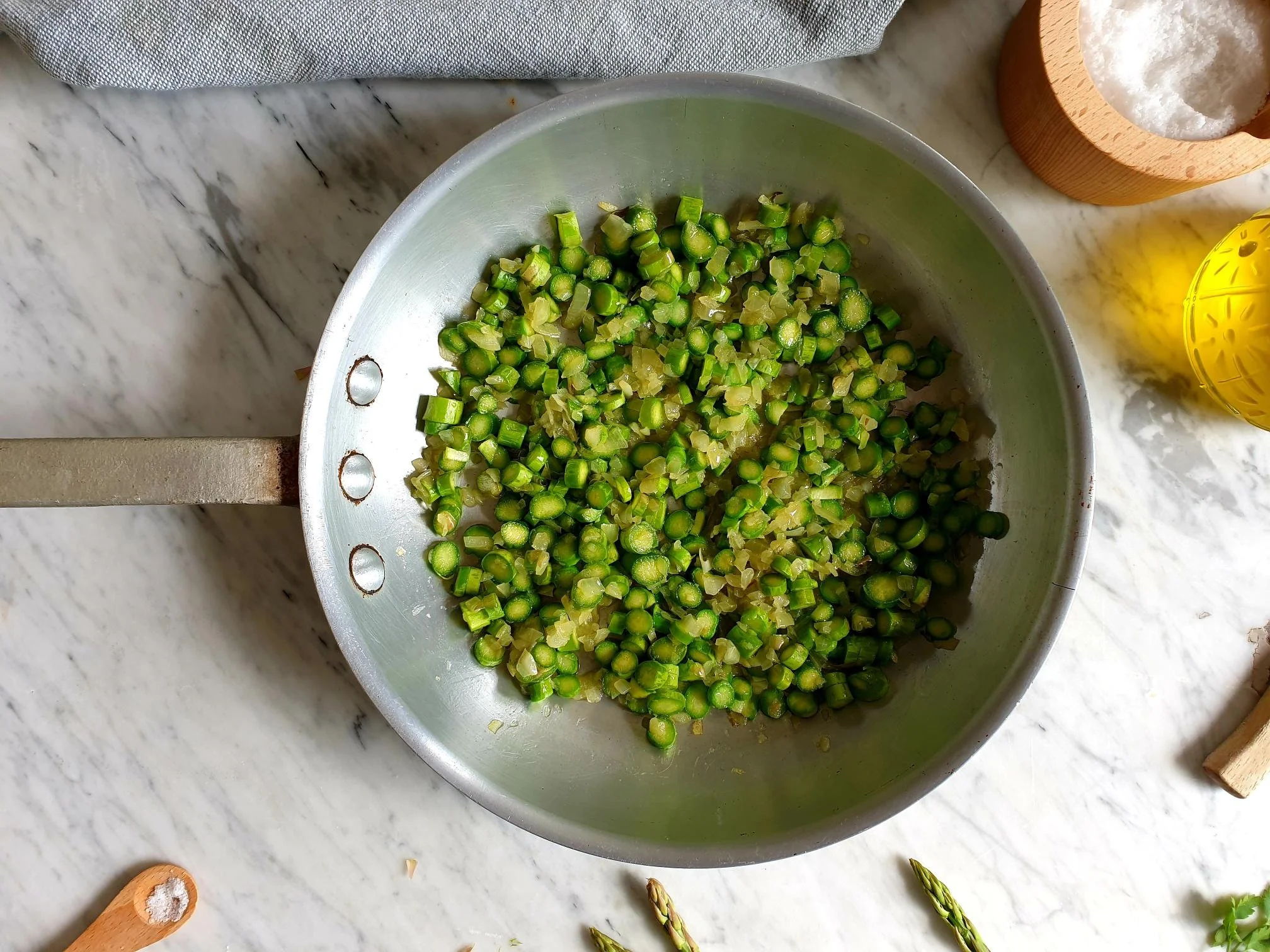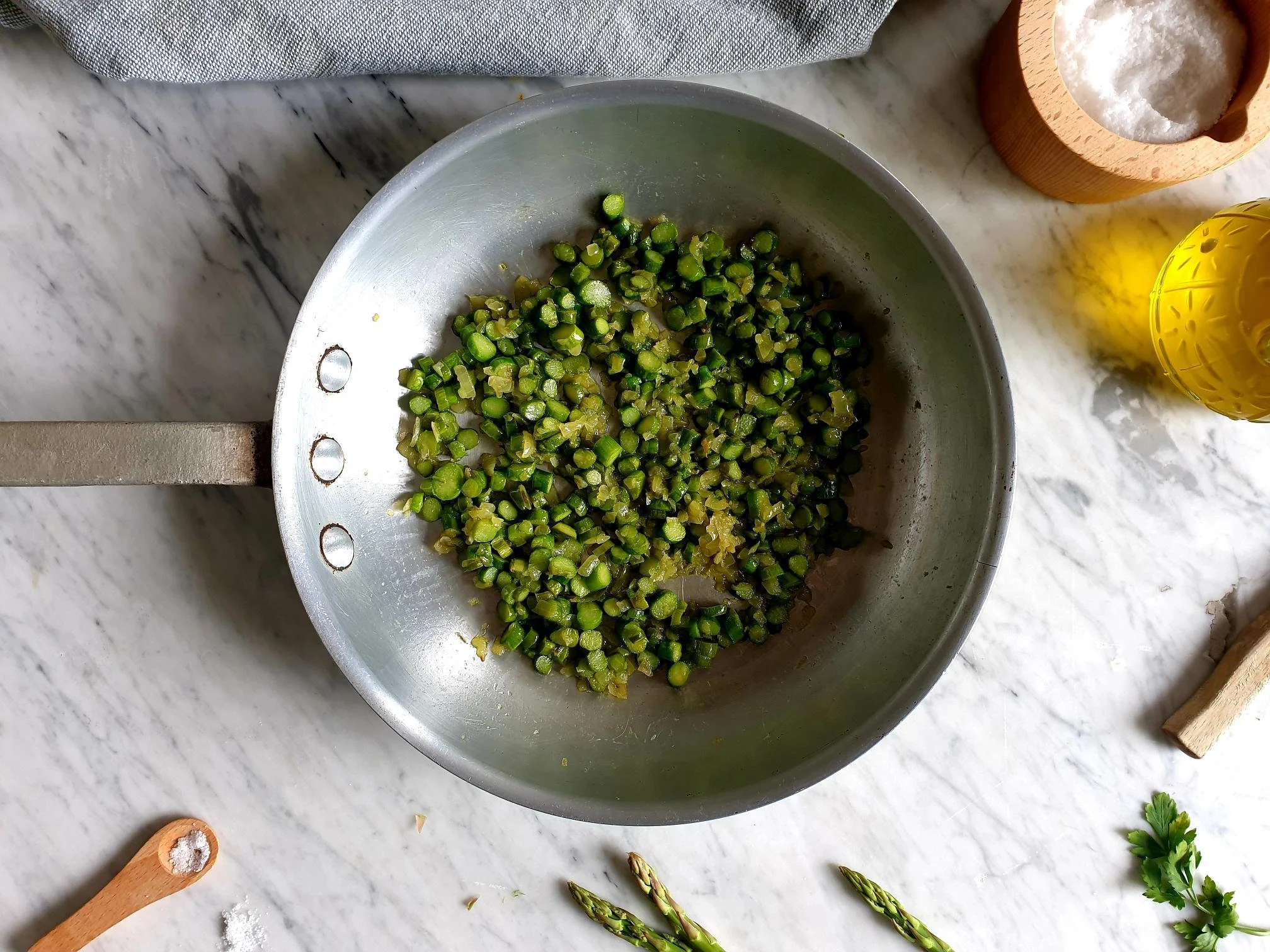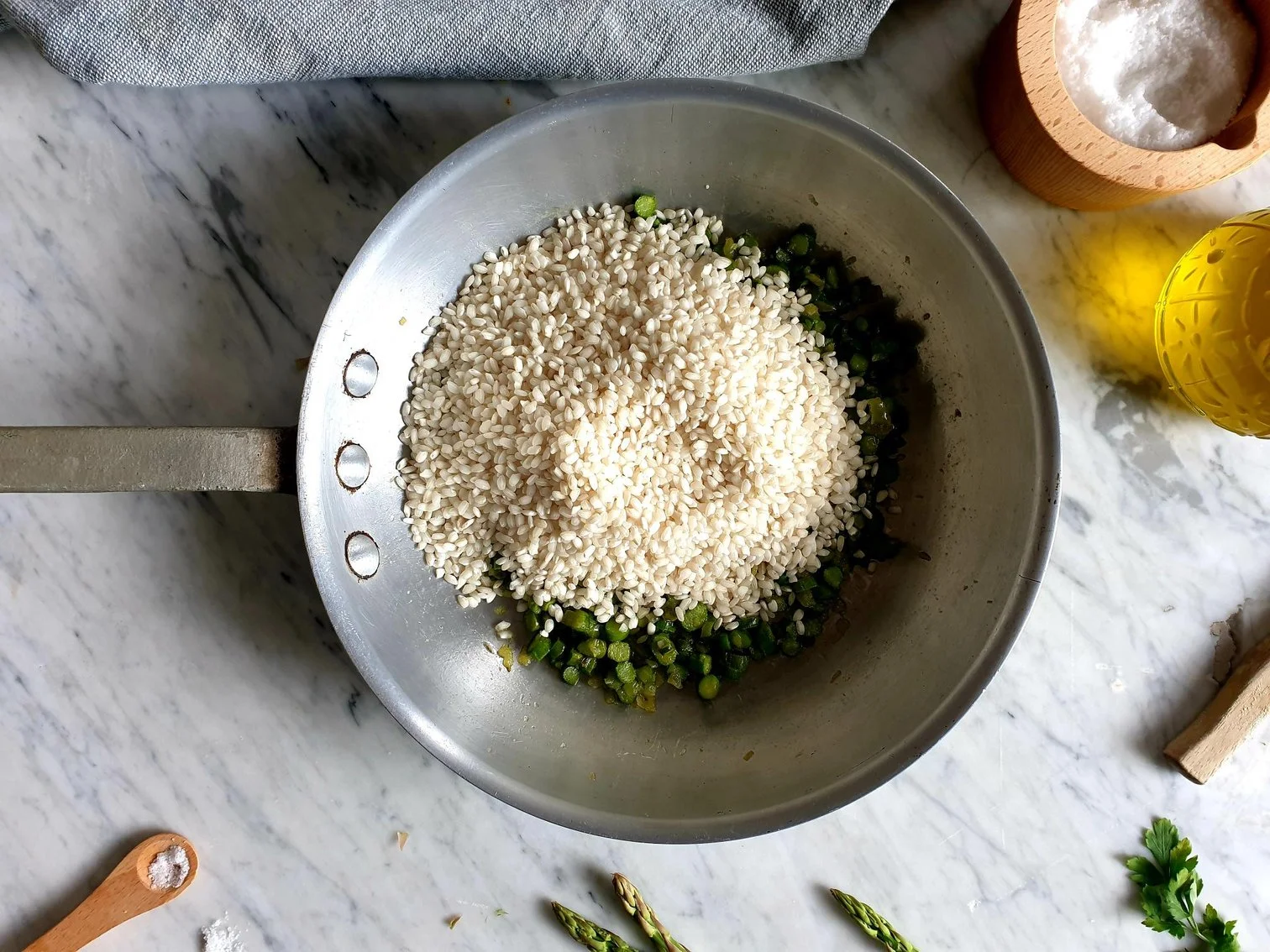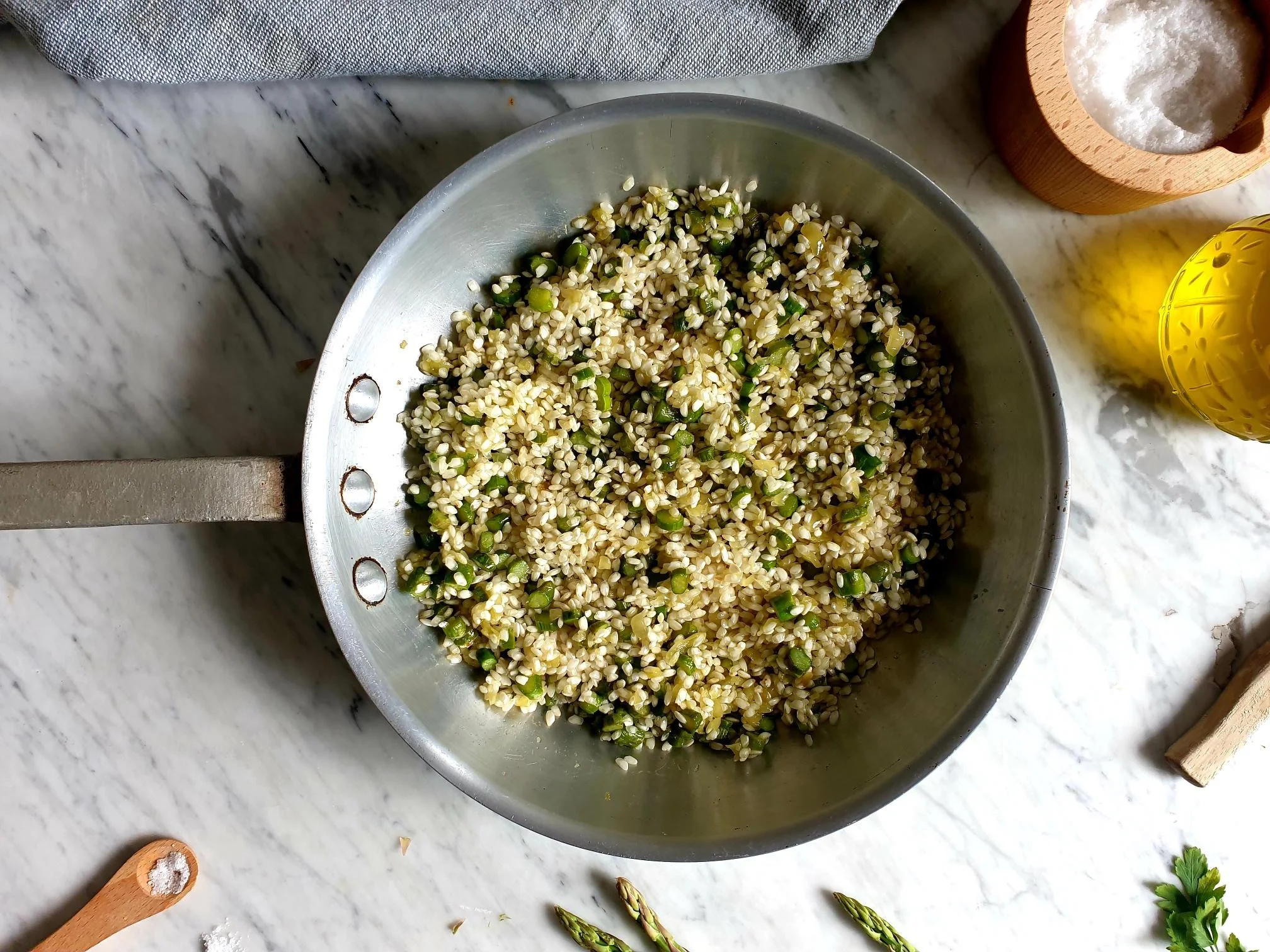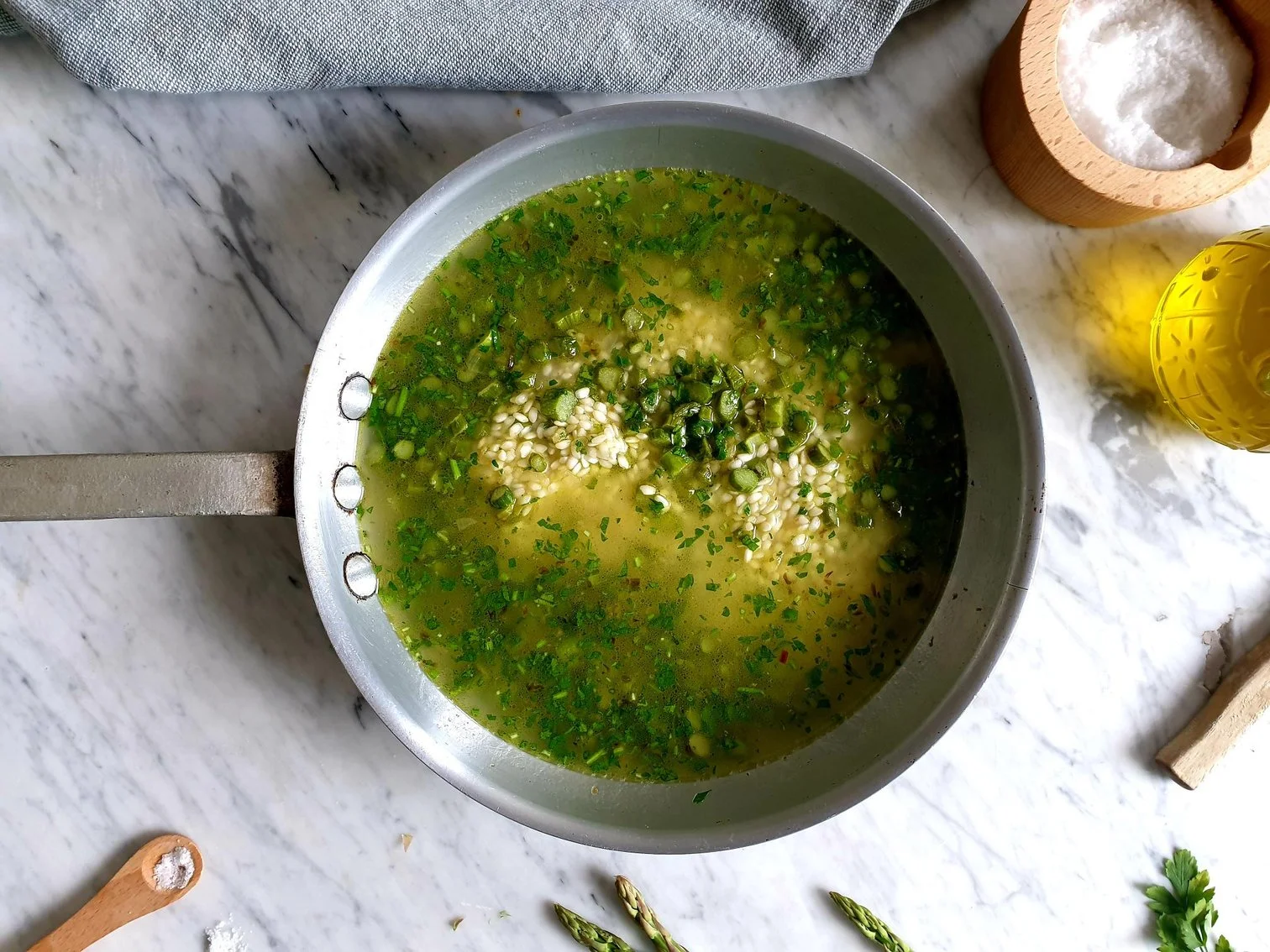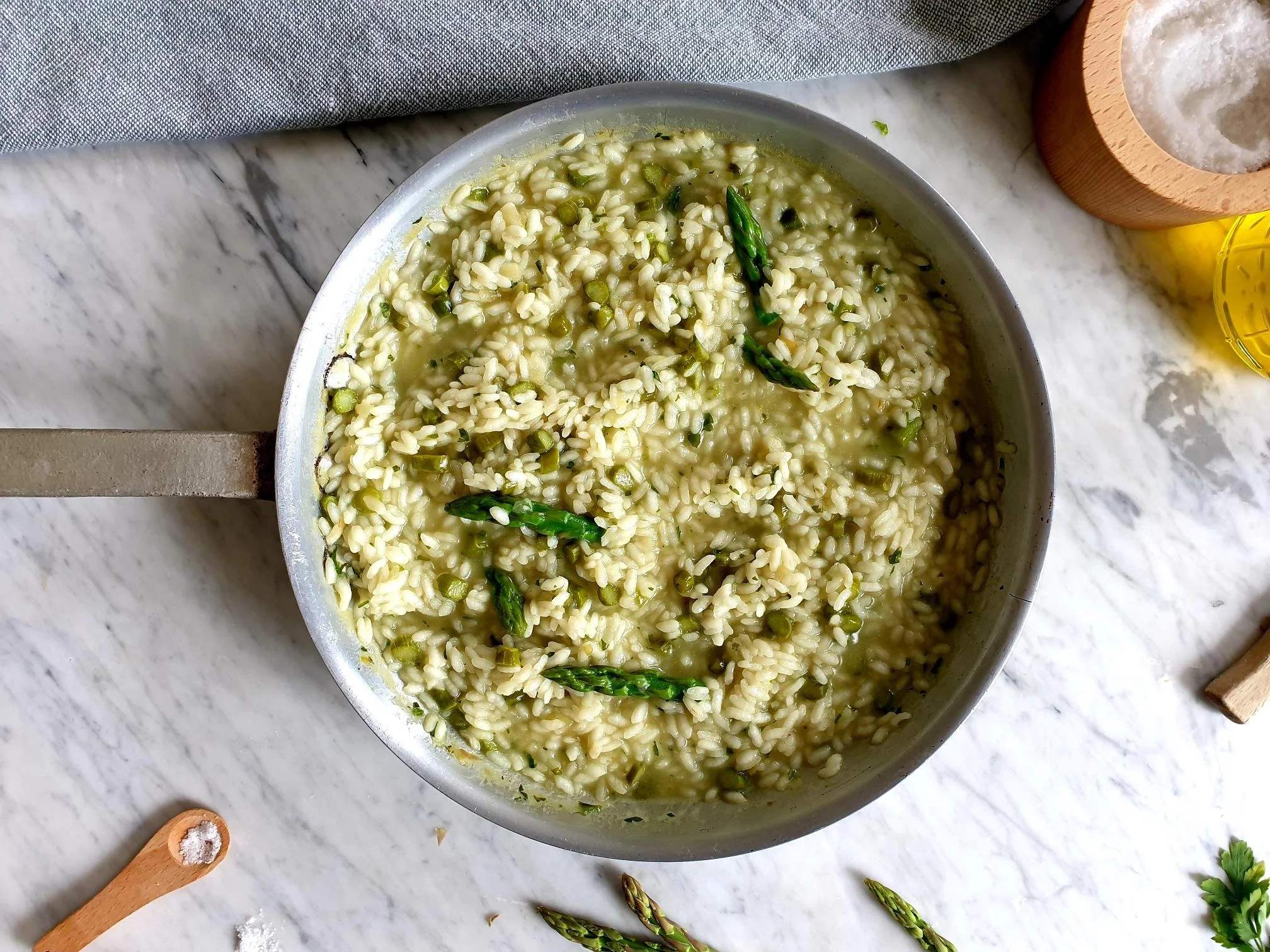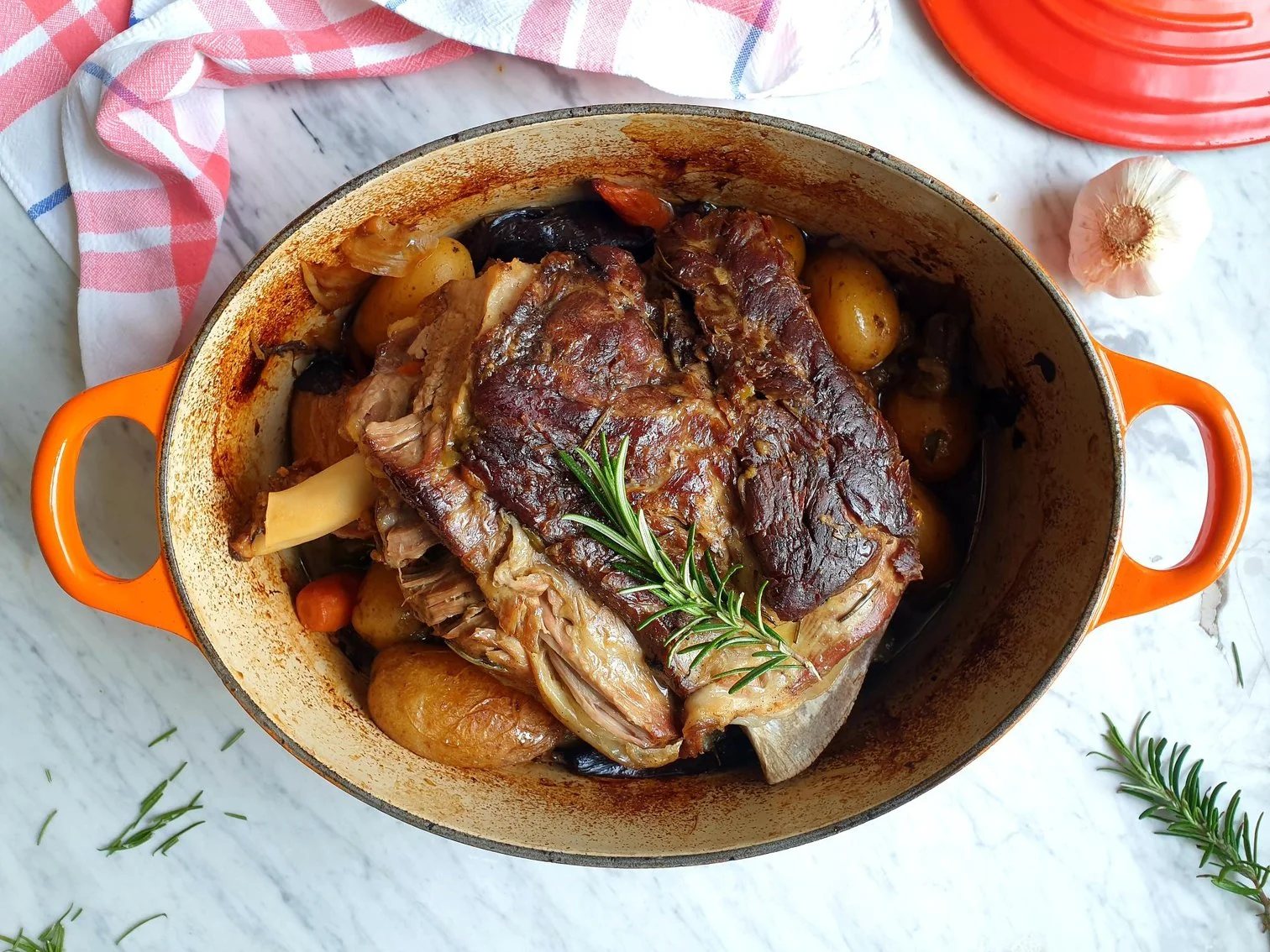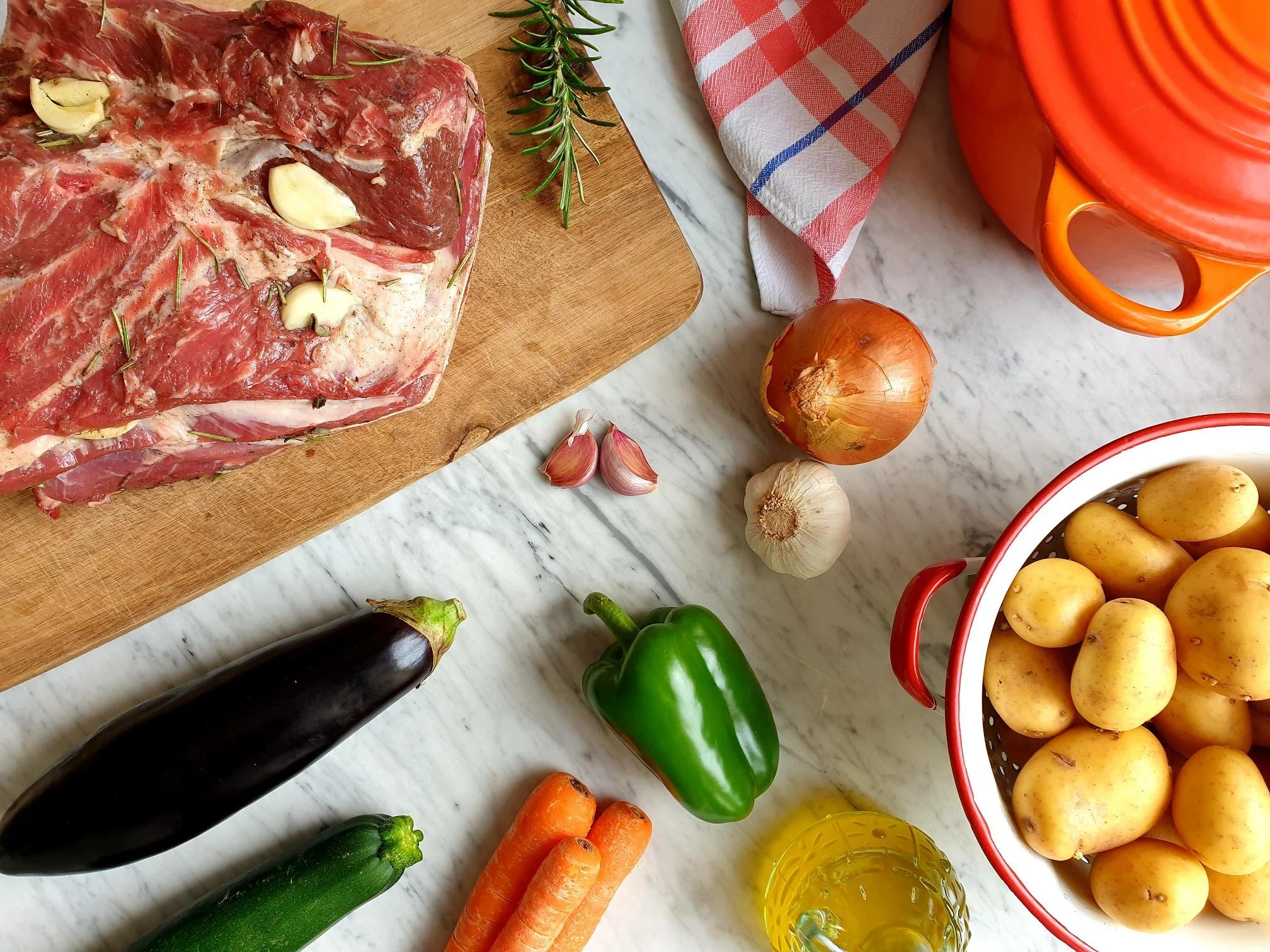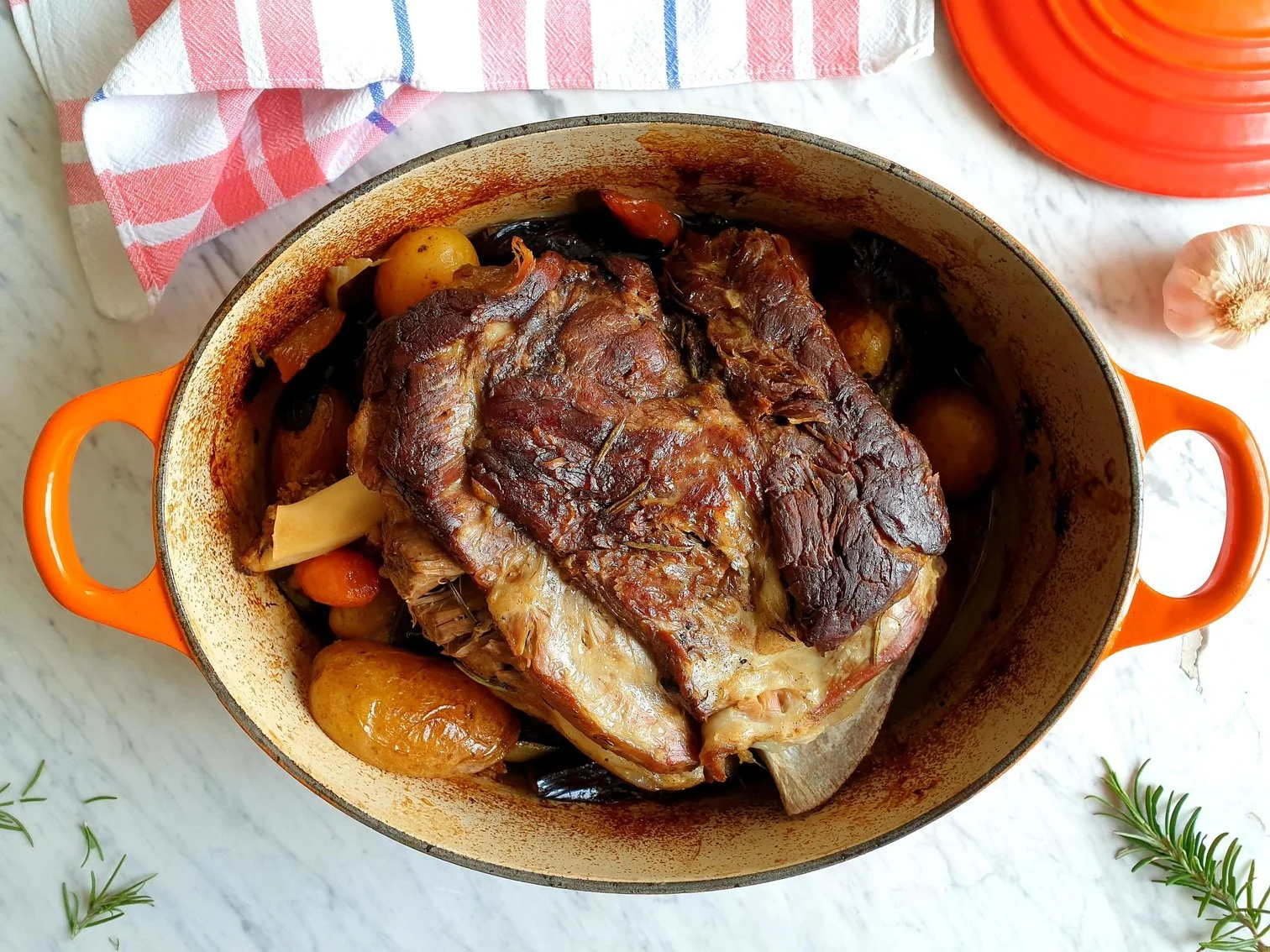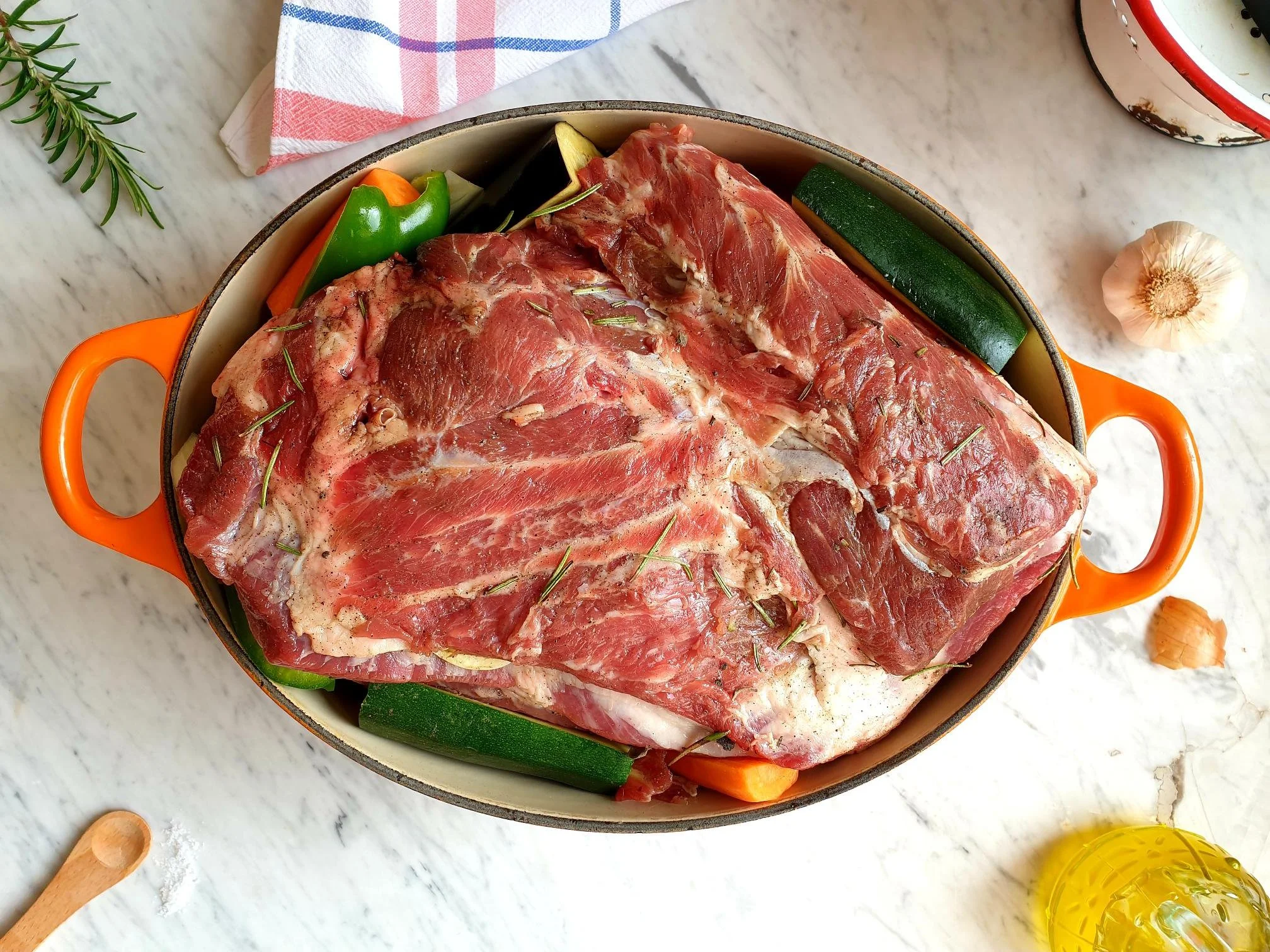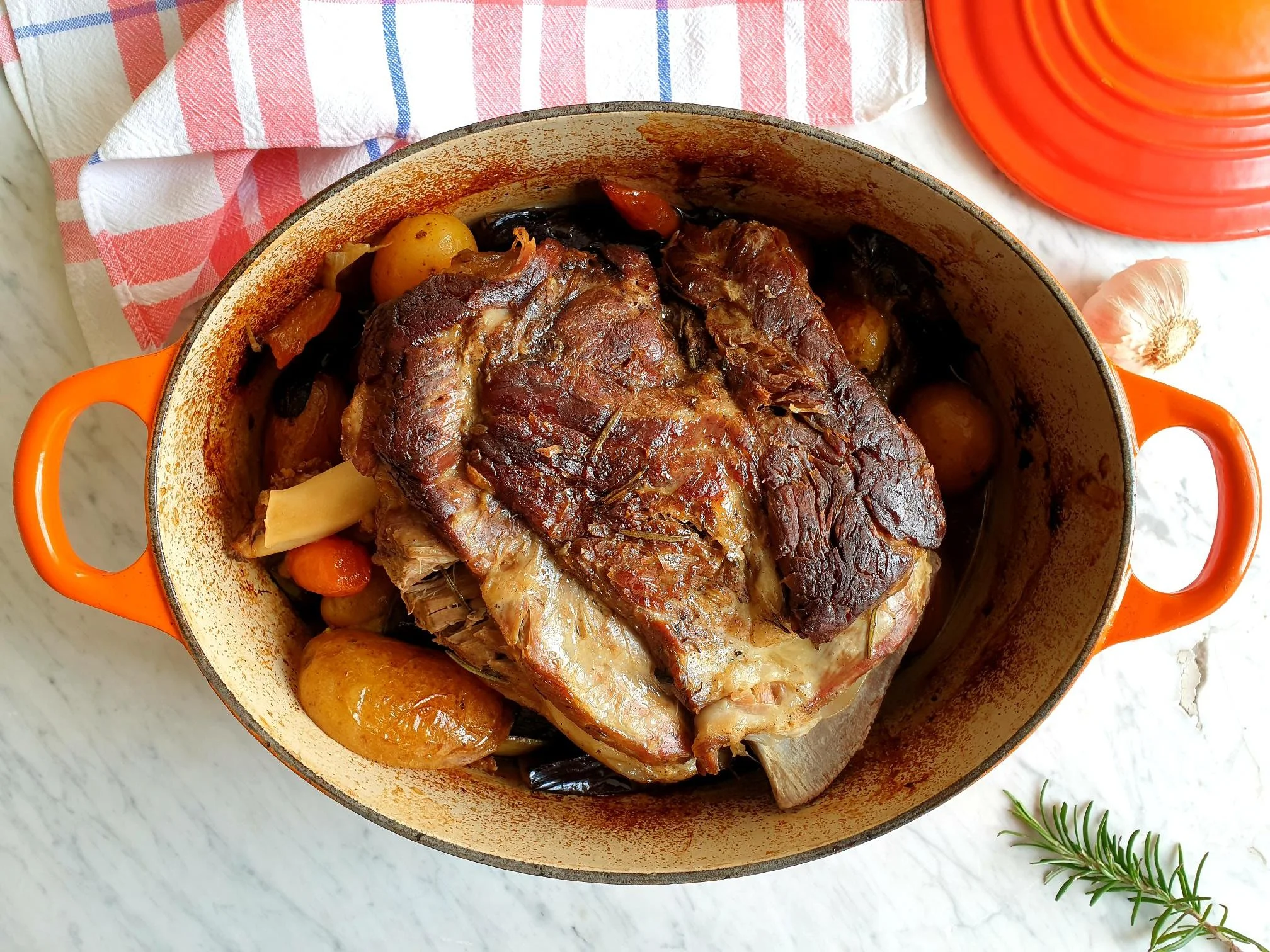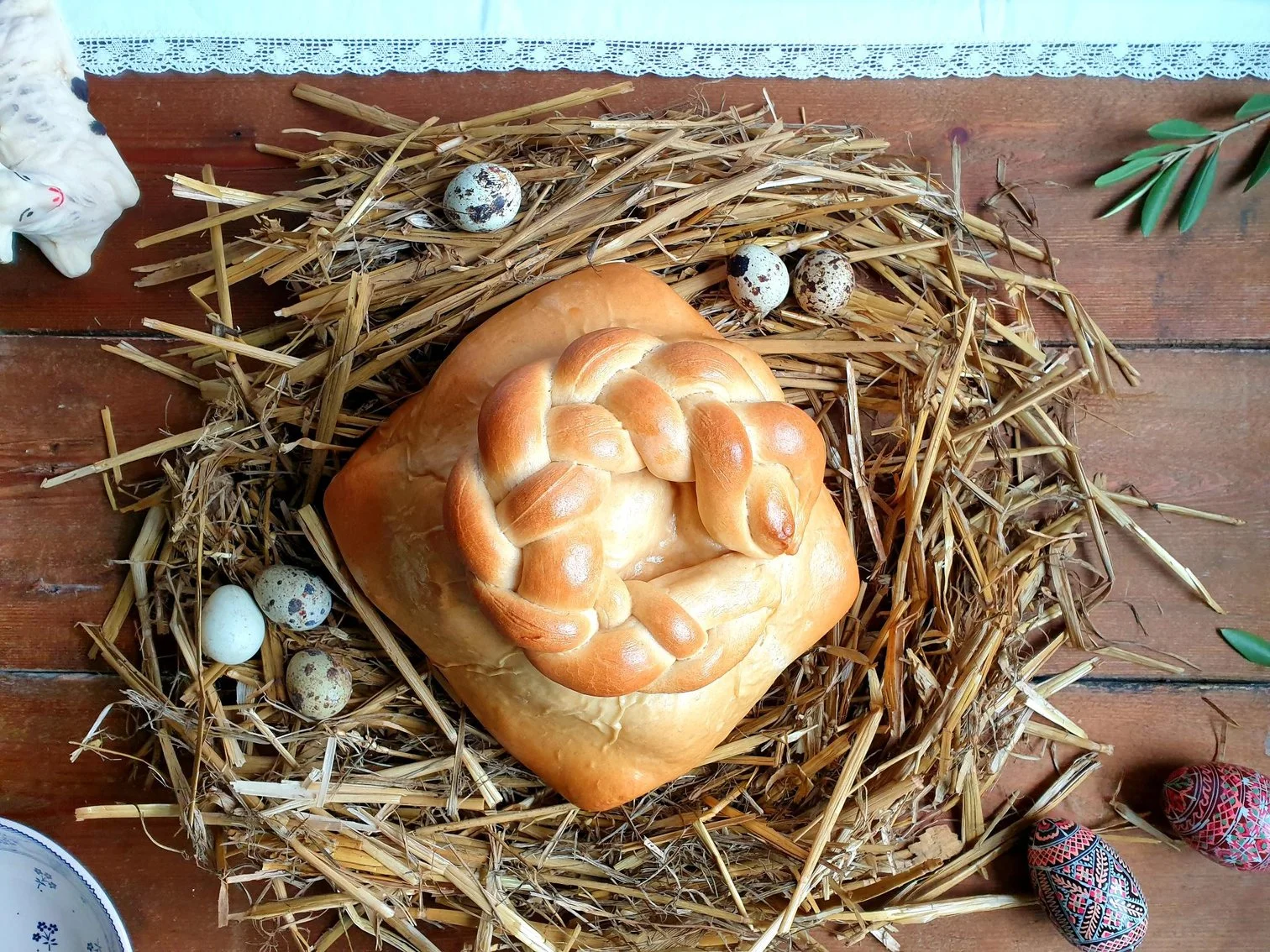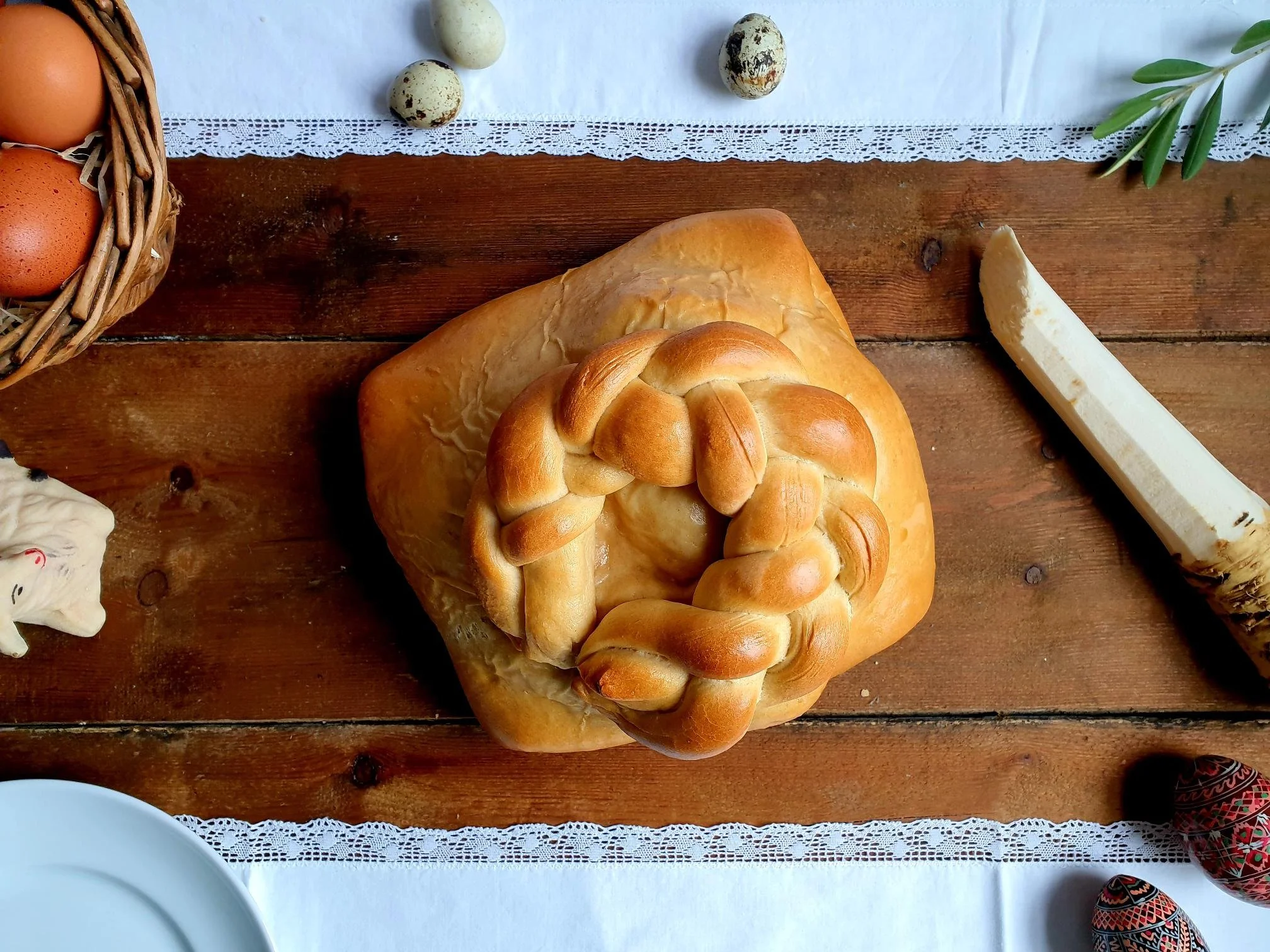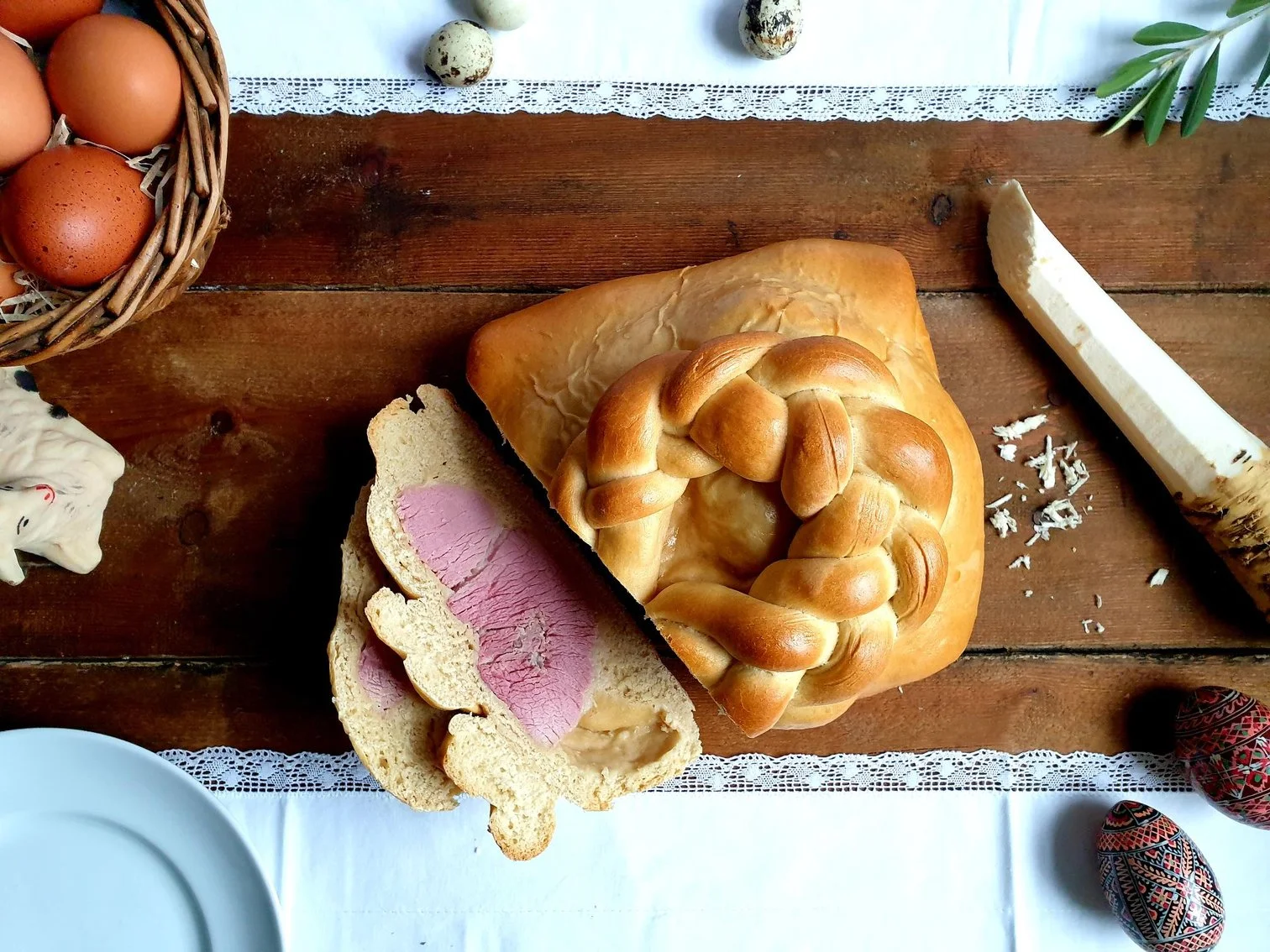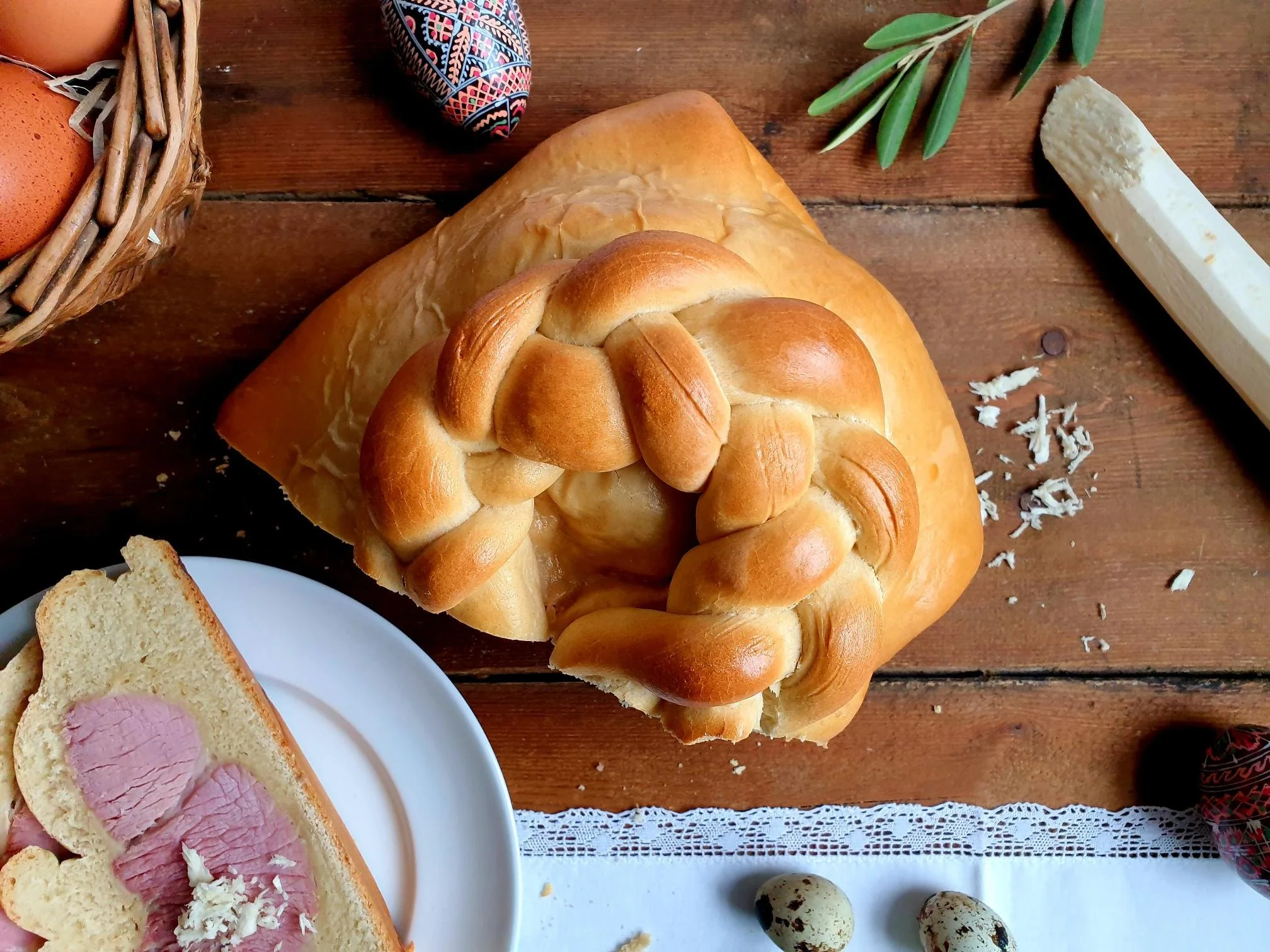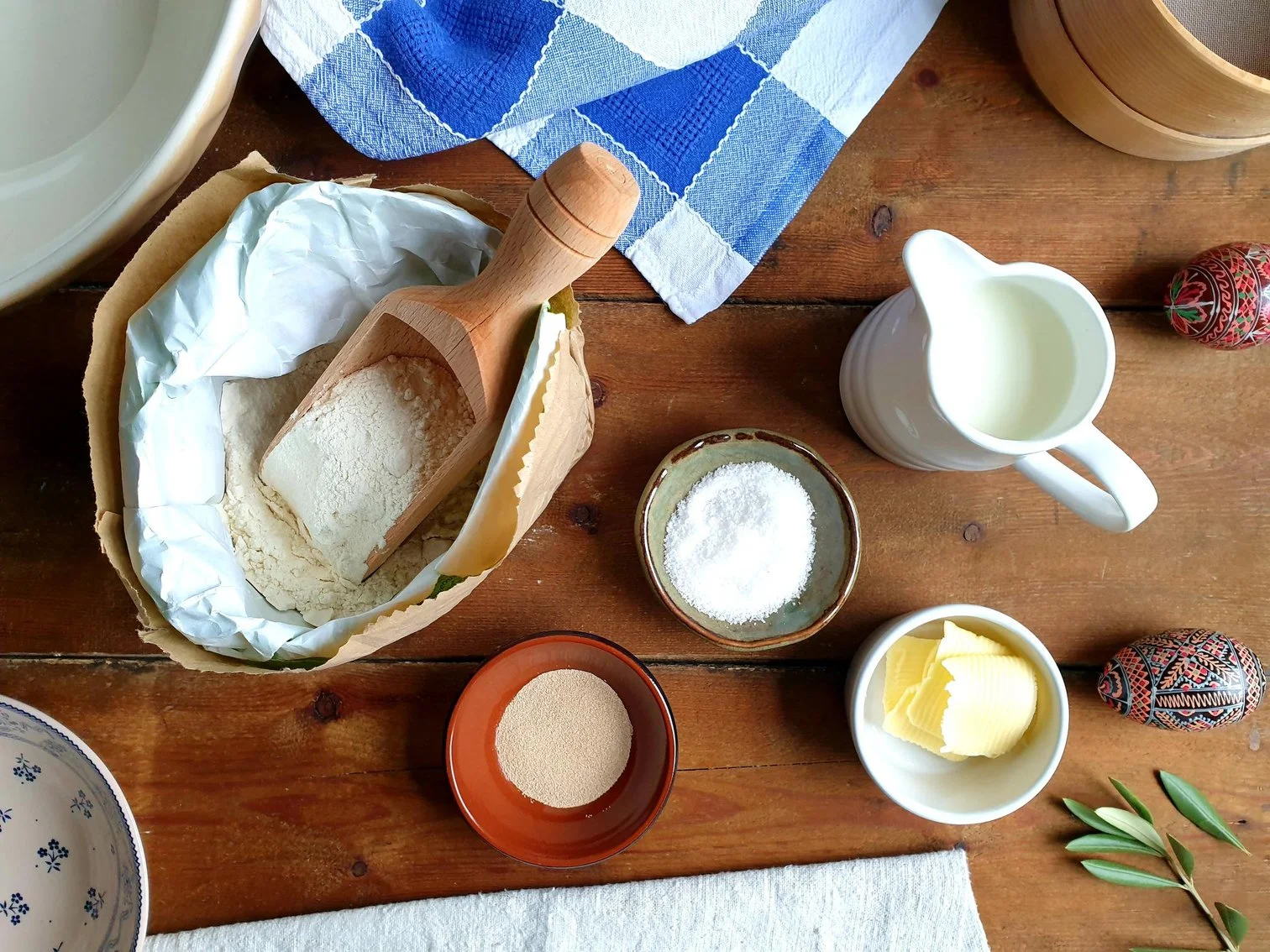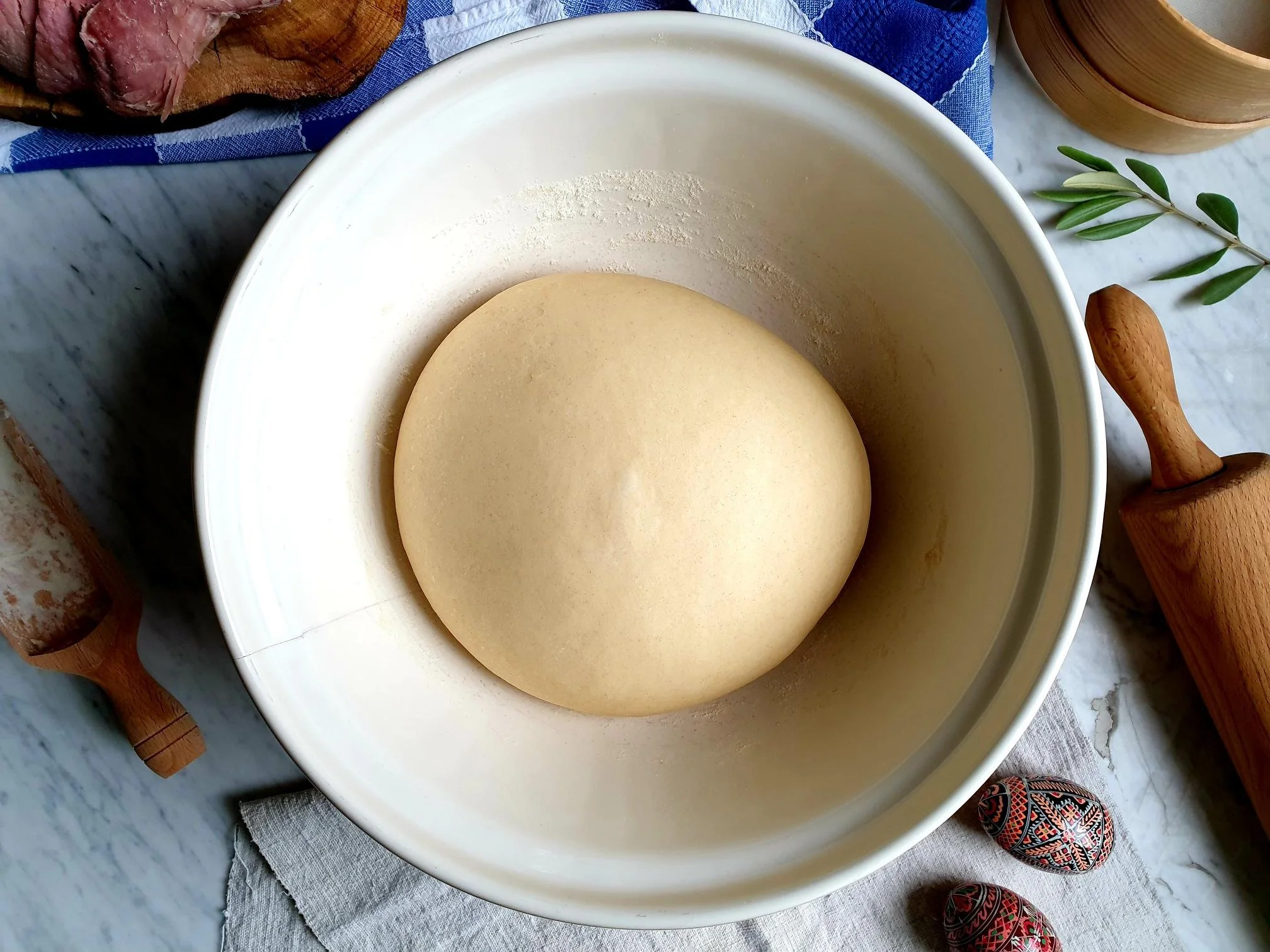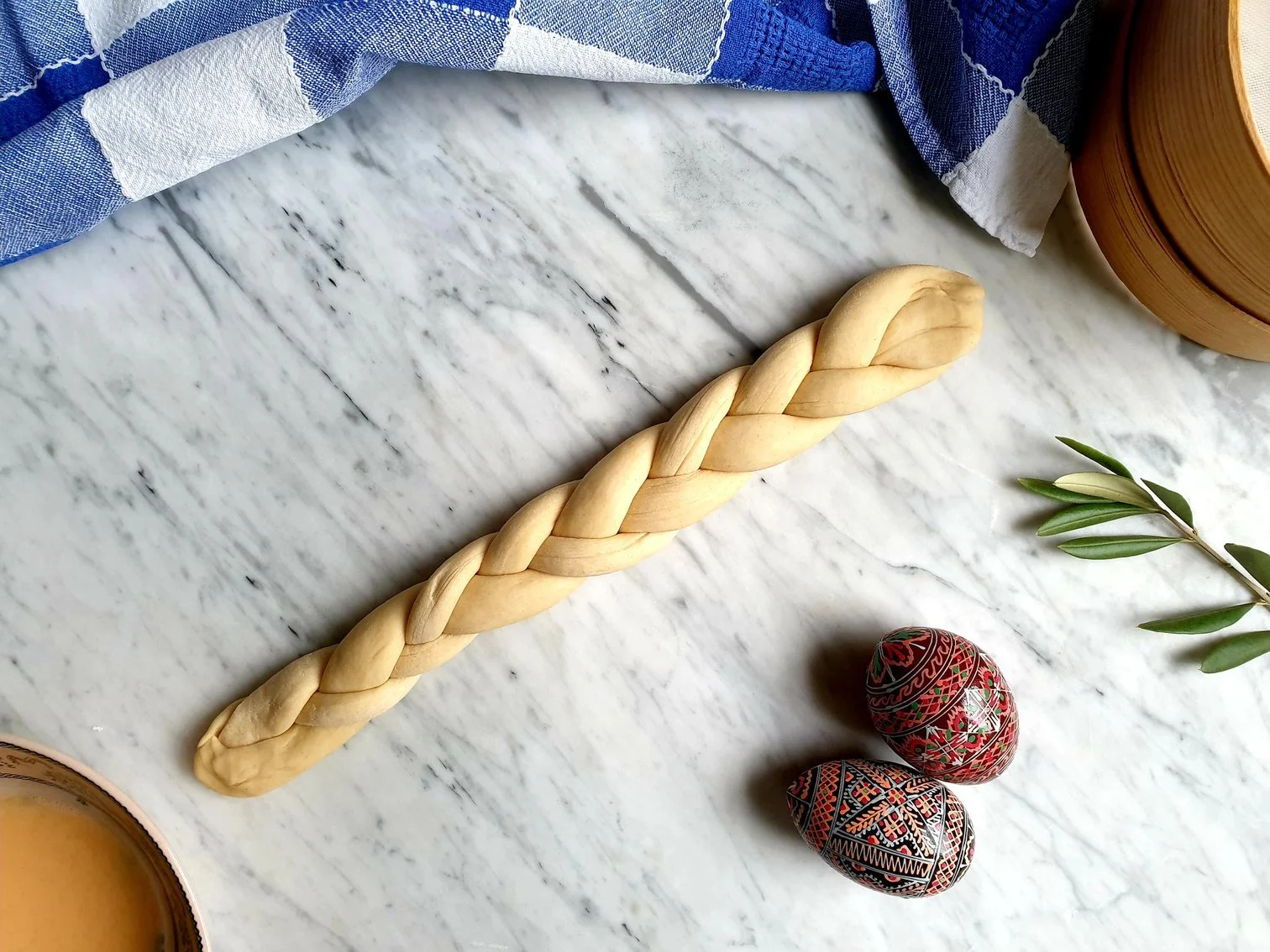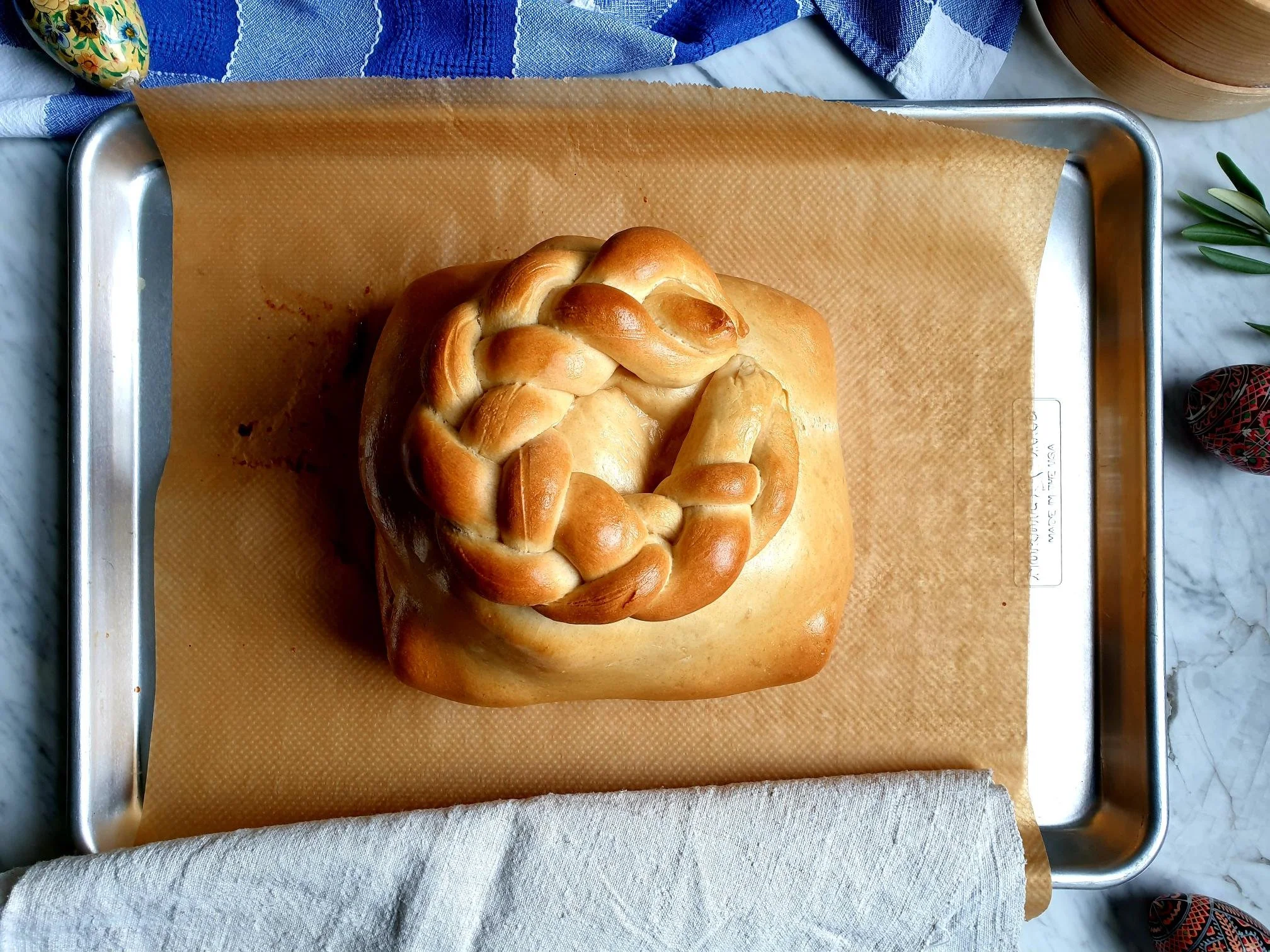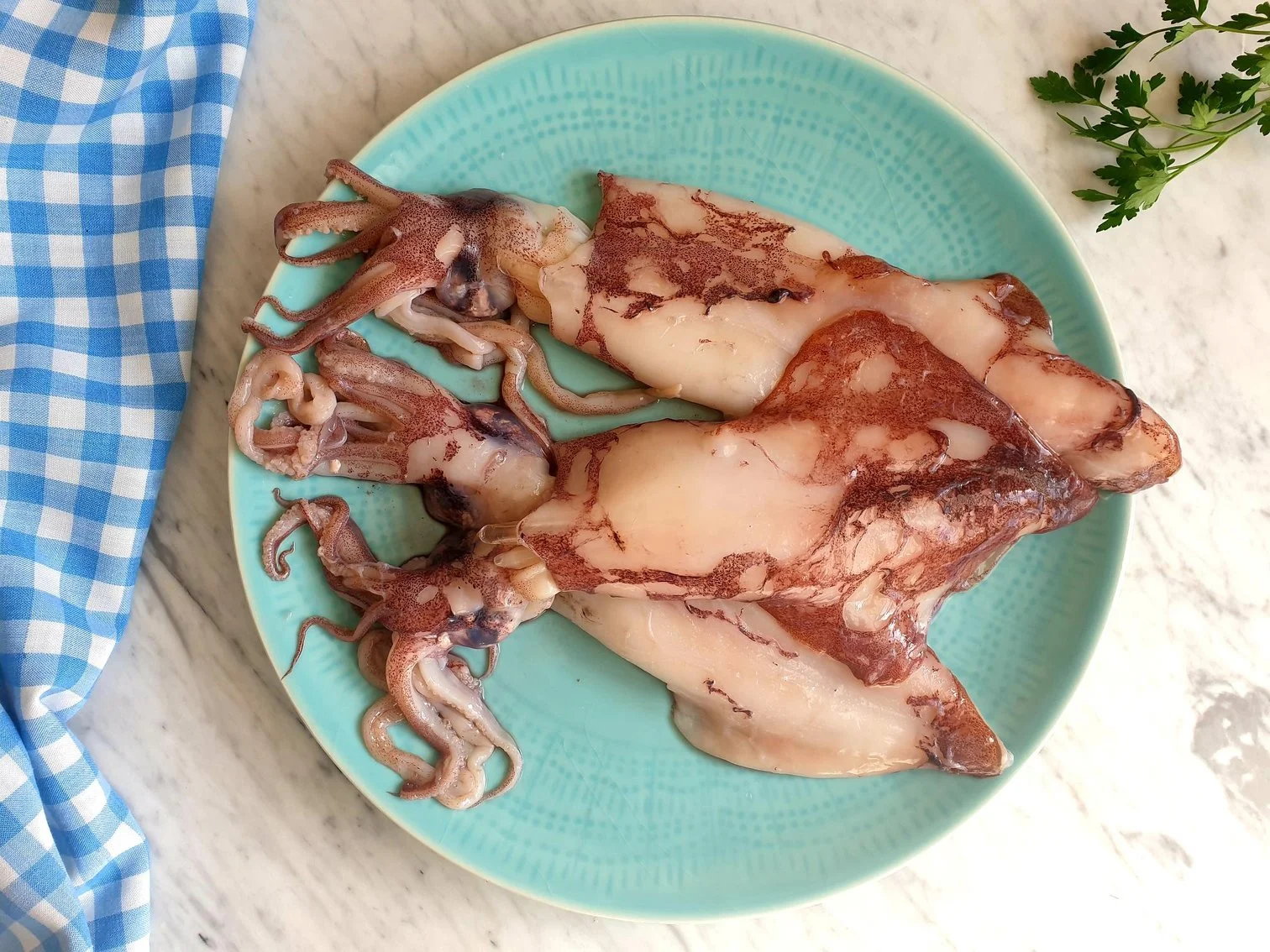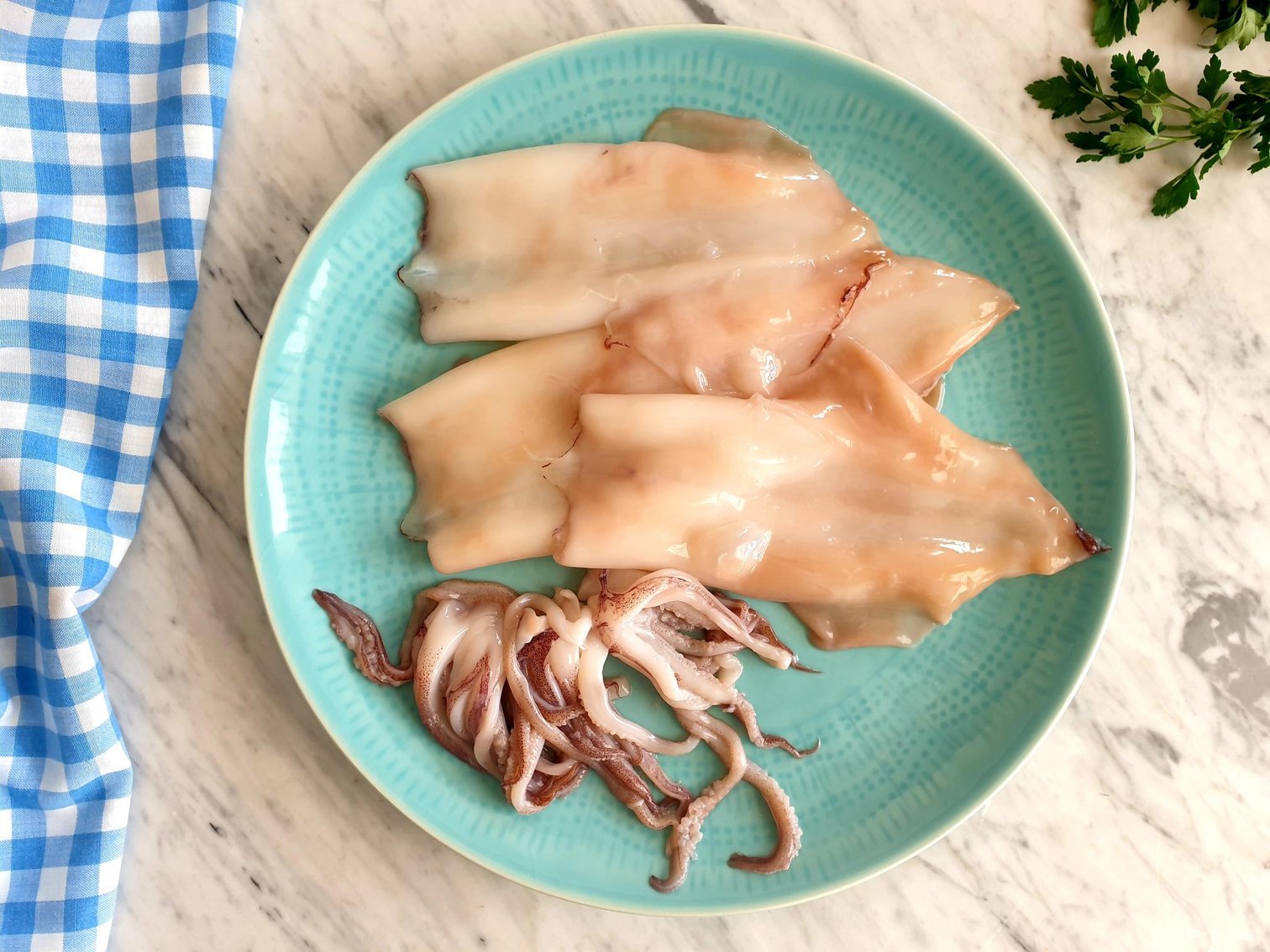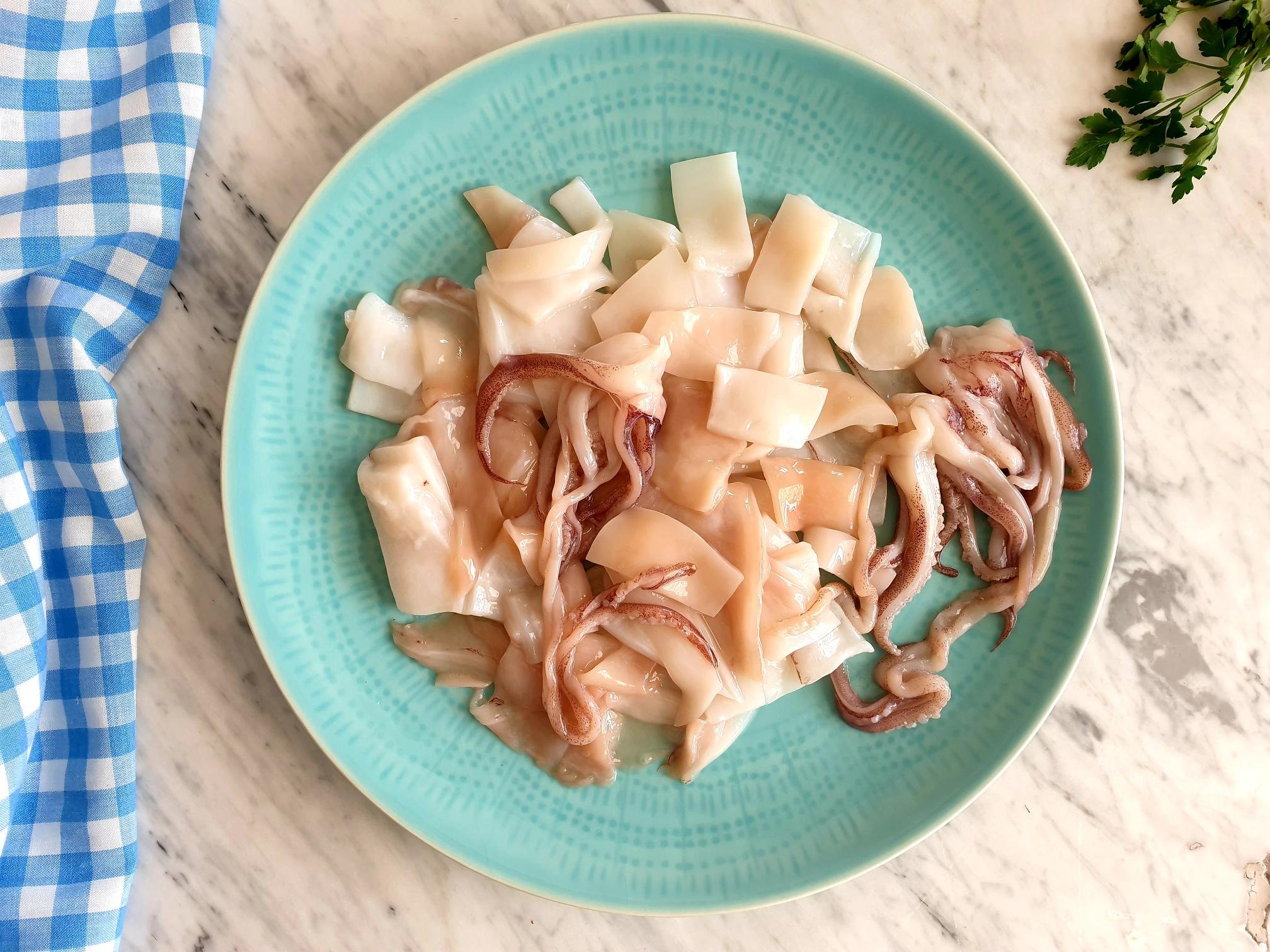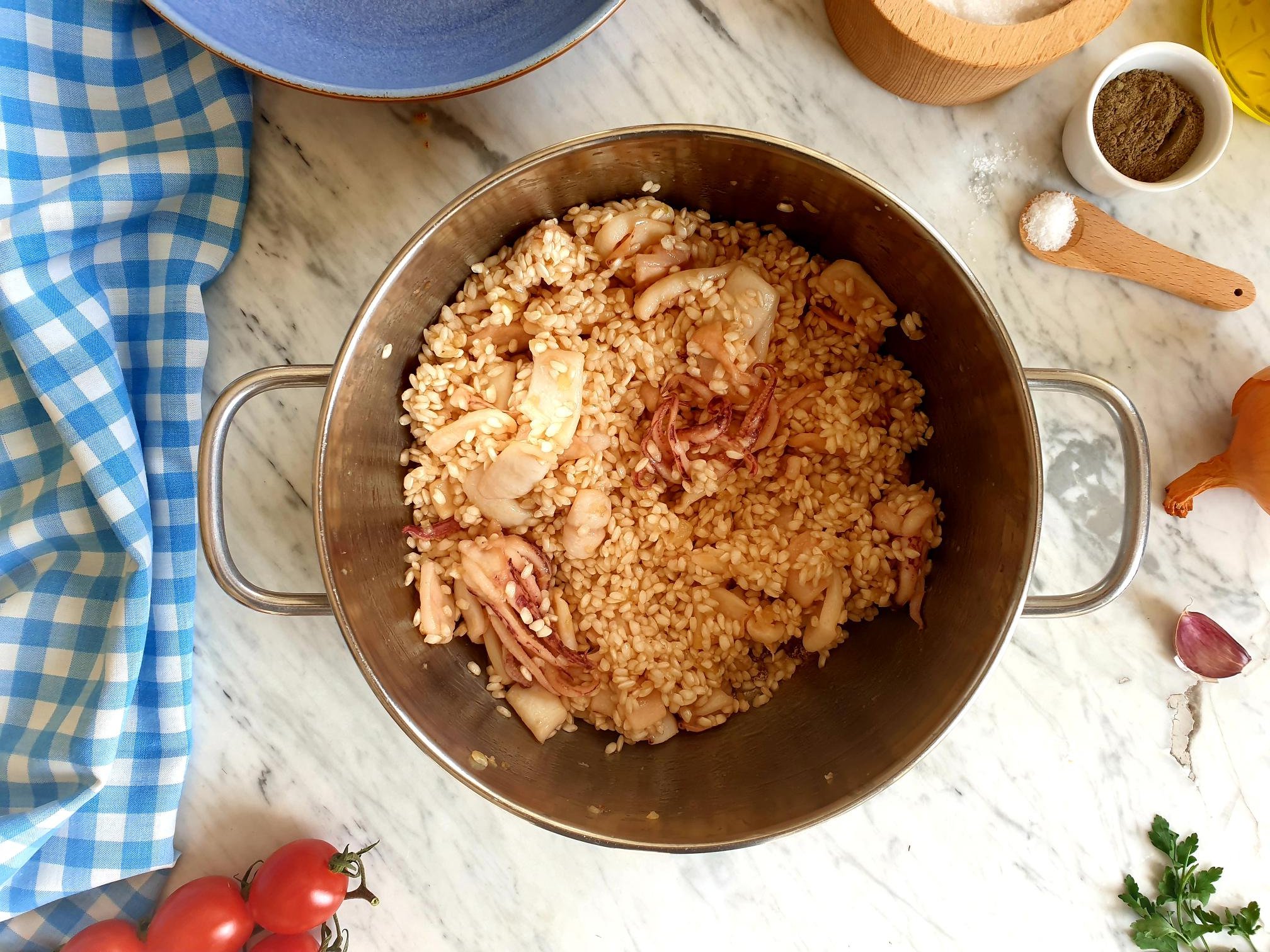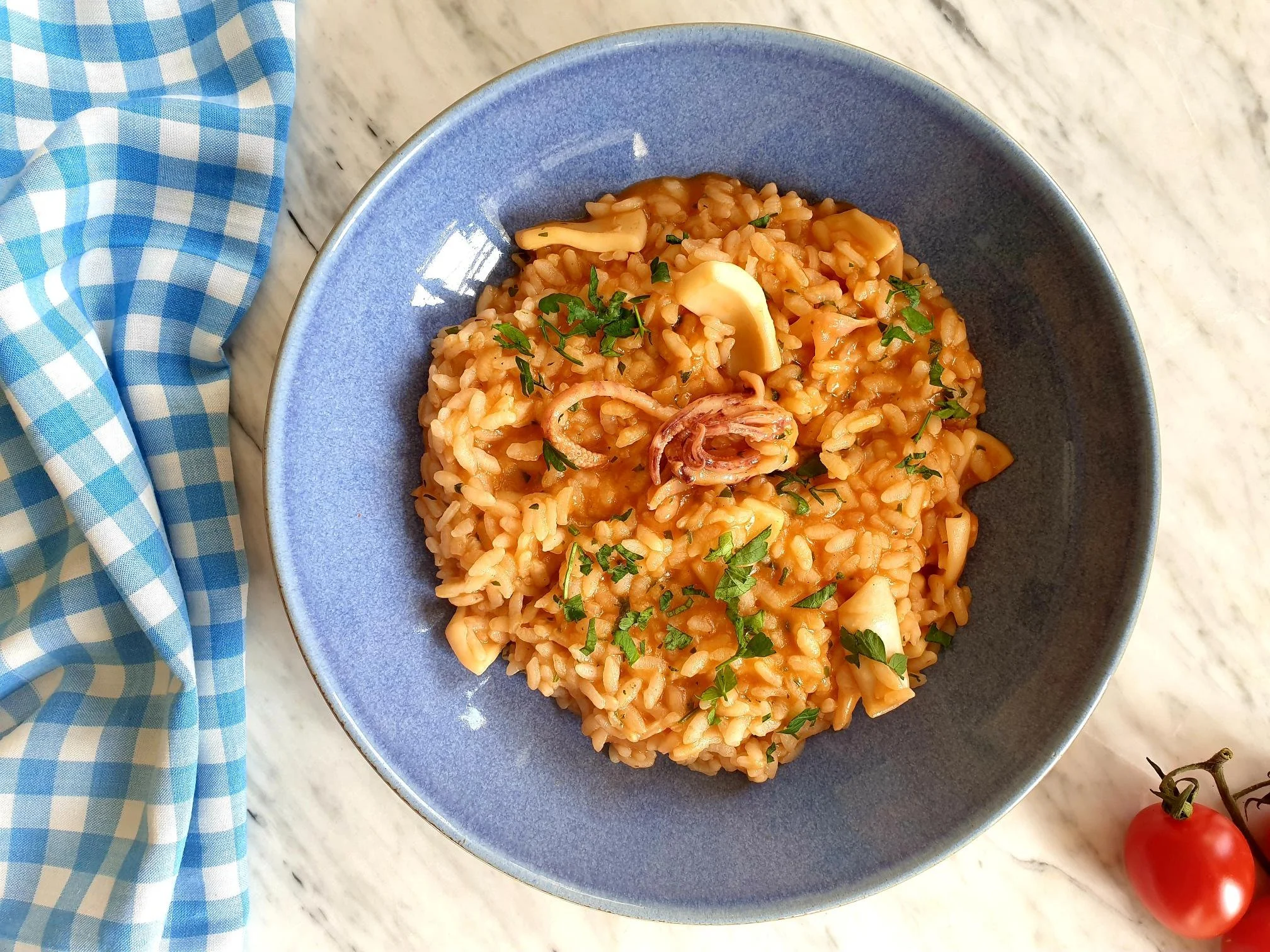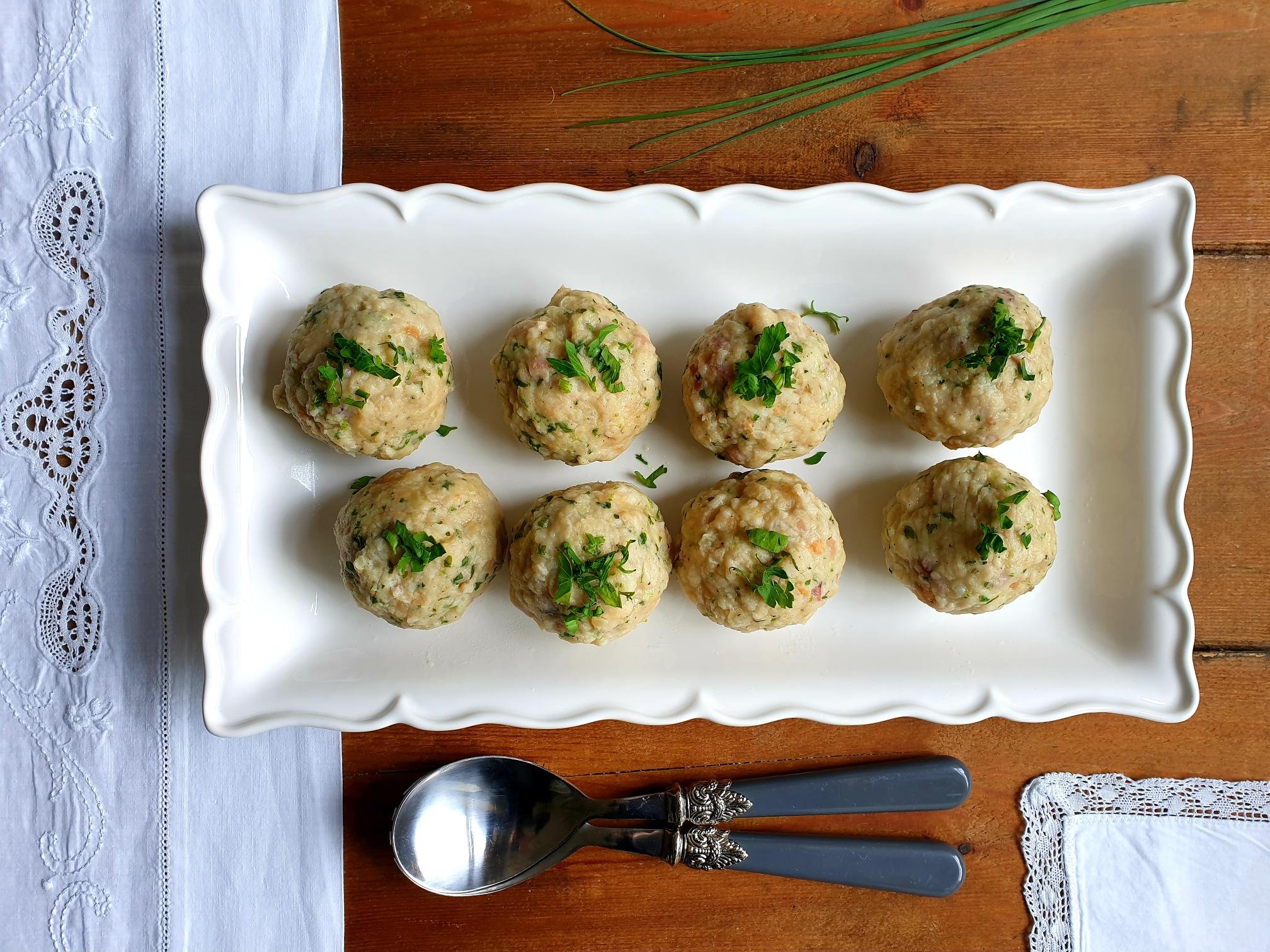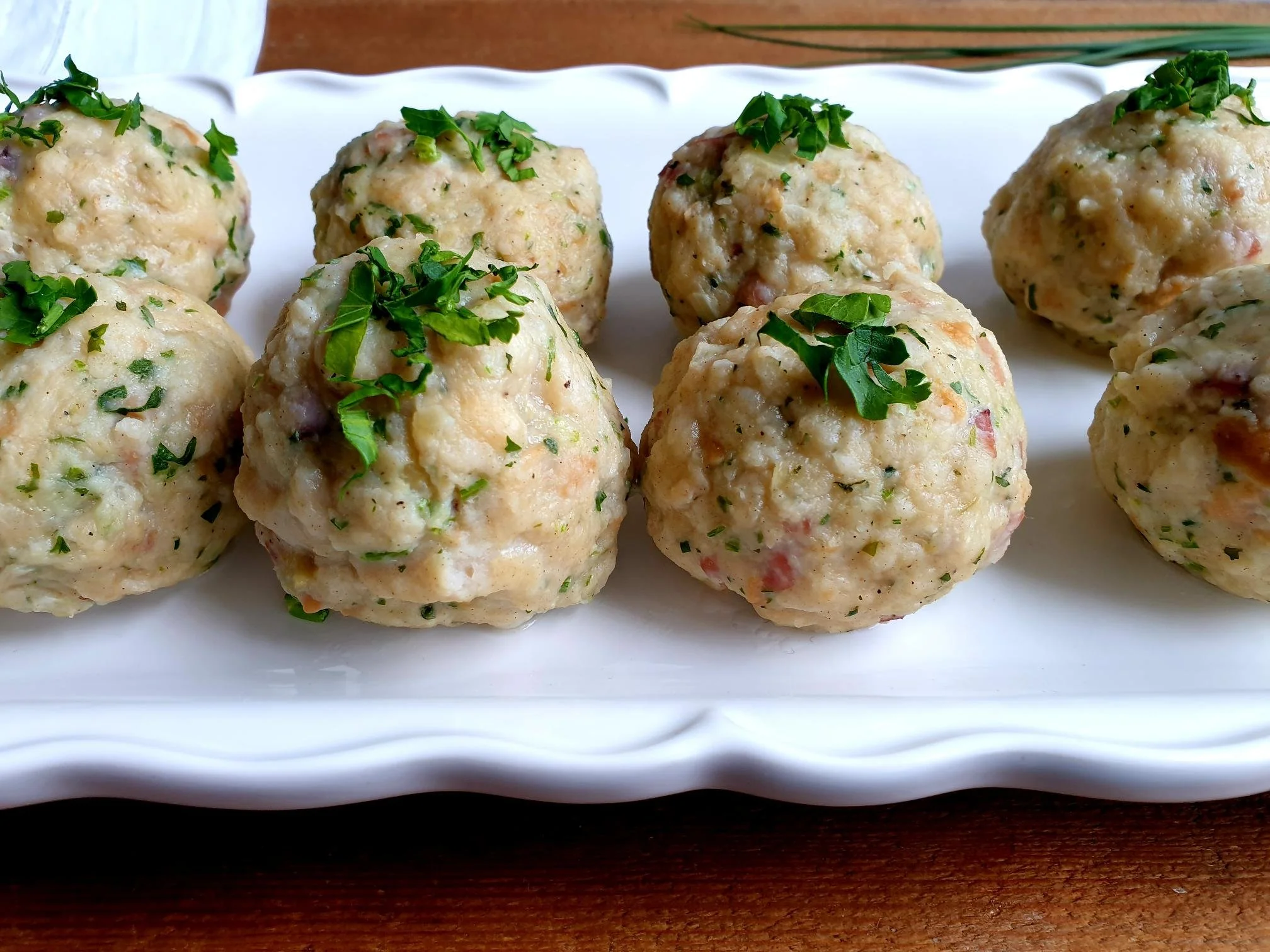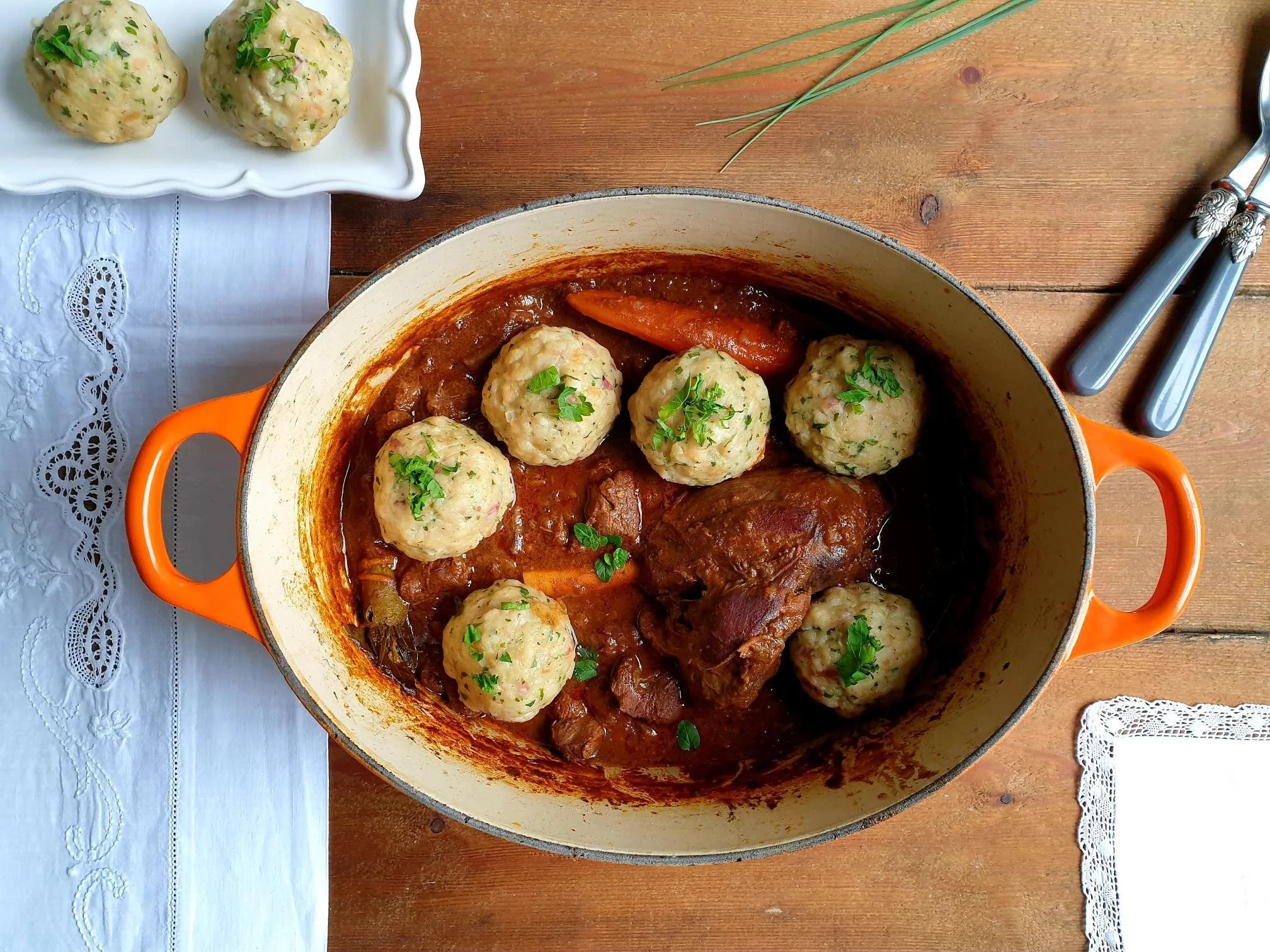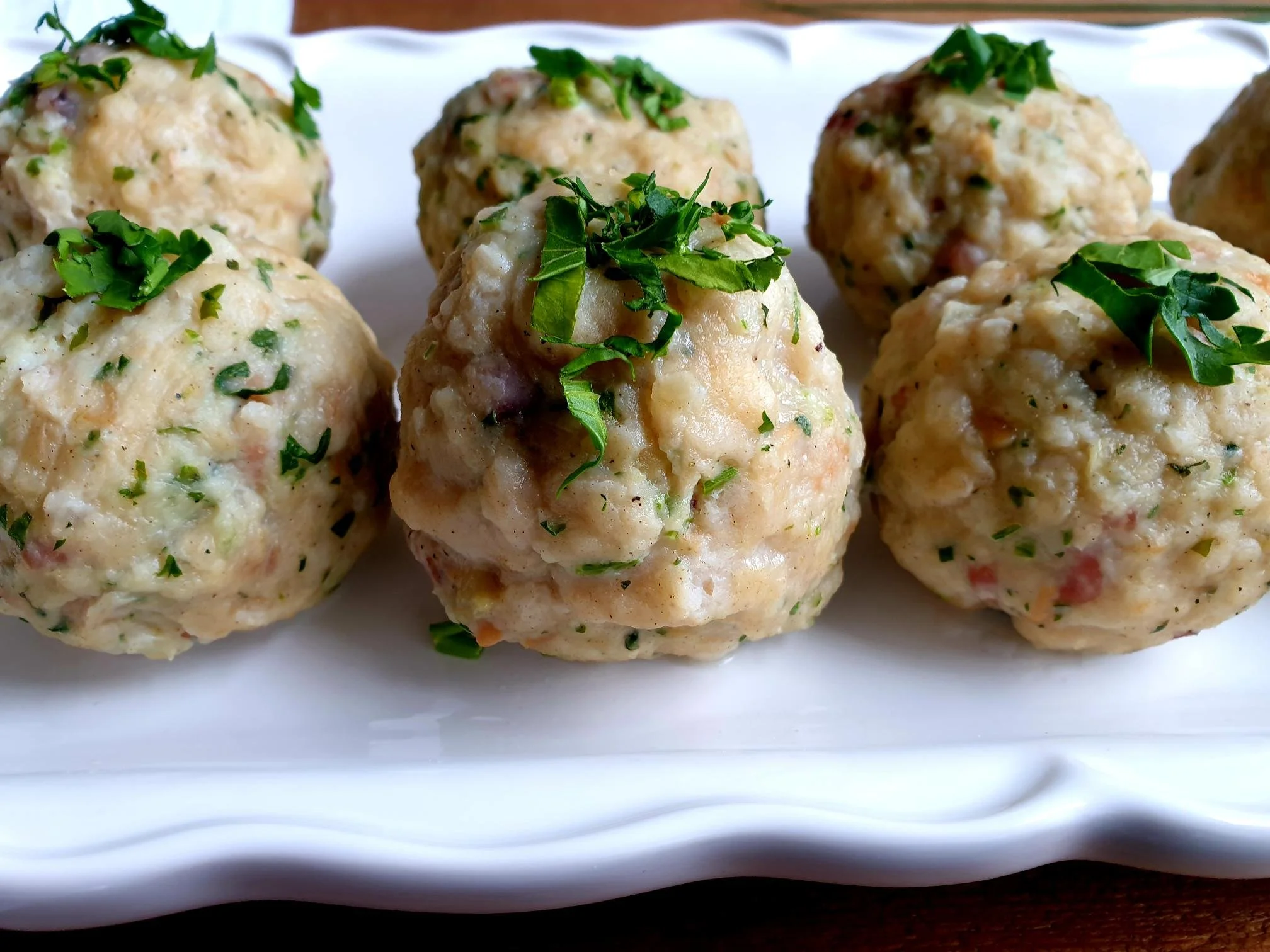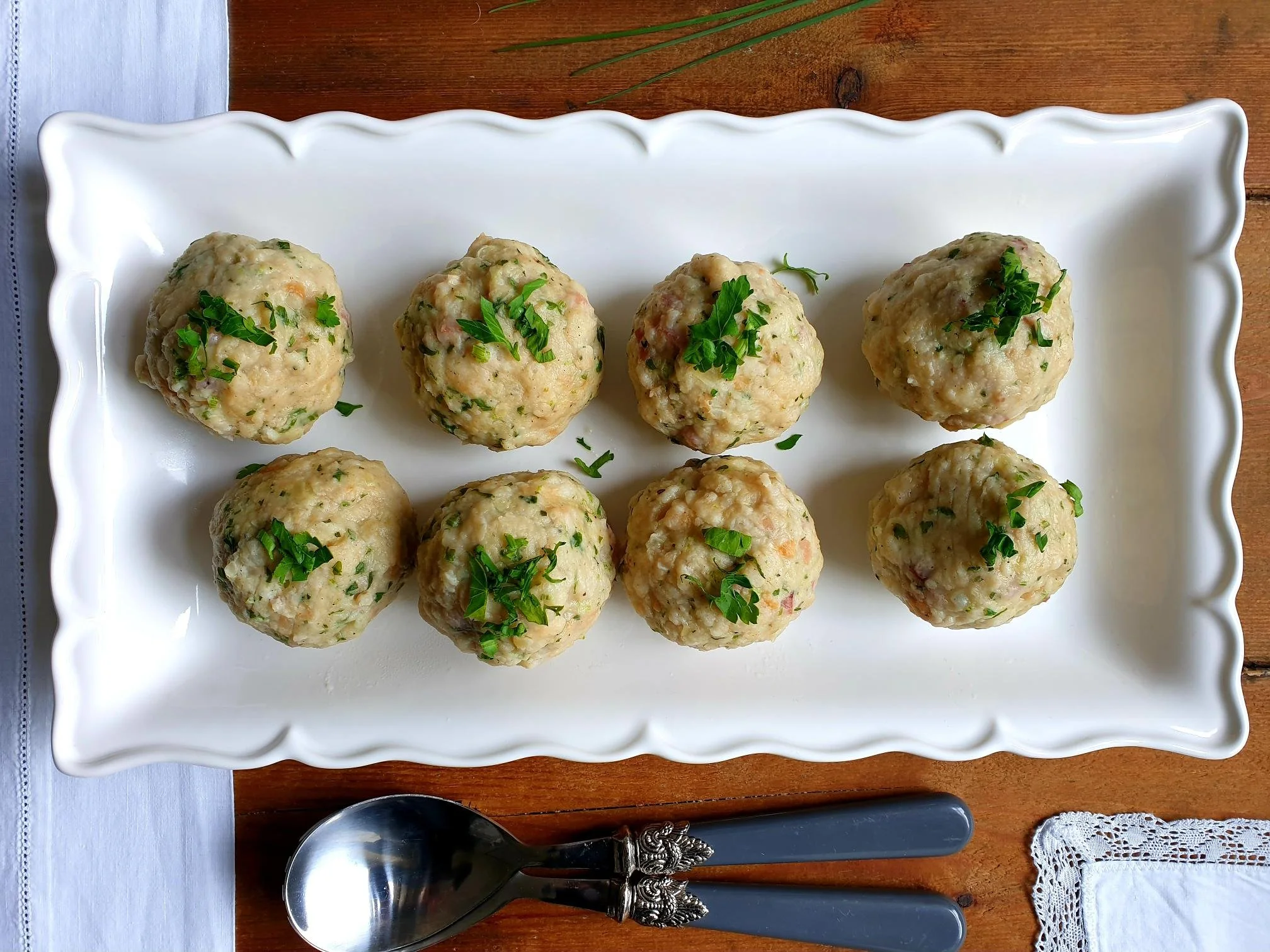Risotto Primavera Venetian inspired Recipe
This classic spring vegetable risotto, using any seasonal spring vegetables, must be one of the most loved and popular dishes for all generations. This risotto is rustic, simple, and filling, and represents a genuine plate of food that puts a smile on anyone's face with the array of colours on the plate offered by the vegetables.
It can be enjoyed as a first course meal, which is traditionally what it is in Italy, or as a main course with a nice salad on the side.
This vegetarian risotto really celebrates the new season of vegetables, it is light but full of freshness and flavour and it is very satisfying. You can vary the recipe using different vegetables and combinations according to what is in season, just mix and match the vegetables that are your top favourites, add a handful of fresh roughly chopped baby spinach or broad beans a few radishes for example.
My mother has made this risotto time and time again, it was a regular mid week meal, we knew we had risotto primavera but it would be slightly different every single time depending on the variety of vegetables she would find available in the season from the market or from my paternal grandfather's vegetable patch.
Ingredients
Serves 4
300g risotto rice (like Vialone Nano, Arborio or Carnaroli)
3 Tbsp extra virgin olive oil
1 celery stick (about 30g), finely chopped
1 medium courgette (about 113g), sliced or diced
1 medium carrot (about 90g), peeled and sliced or diced
1 medium onion (about 100g), peeled and finely chopped
green asparagus (about 100g), wash, trim off the wooden ends and finely slice the stalks leaving the tips whole
green beans (about 50g), sliced
fresh peas in pods (about 300g), remove the peas from the pods (can use frozen petits pois, about a handful)
1 tomato (about 170g), roughly chopped
sea salt
fresh flat leaf parsley (about 4g), finely chopped
1 litre hot vegetable or chicken broth or stock (you can use instant vegetable or chicken stock powder) or hot water
Parmiggiano Reggiano or Grana Padano cheese, finely grated for serving, optional
Method
Before starting making risotto have your boiling hot vegetable or chicken stock (or just hot water) ready to hand for later.
Put extra virgin olive oil in a pan, add finely chopped onions, carrots and celery and sauté for a few minutes on a gentle heat until cooked down and soft.
Add all the other vegetables (except asparagus tips, if using).
Add the parsley, and cook on a gentle heat for about 10-15 minutes stirring occasionally.
Add the rice and toast it for a few minutes, stirring constantly to avoid sticking to the bottom of a pan.
Pour or ladle ½ litre (500ml) of hot vegetable or chicken stock, or hot water.
Cook until the first amount of liquid is absorbed then start gradually adding ladles of hot stock, one at a time, allowing the liquid to be absorbed before adding more.
Cook on a medium heat, stirring almost constantly, until the rice is cooked al dente, meaning fully cooked but still a bit firm when bitten, it should roughly take between 15-18 minutes for a risotto to be cooked.
Add the tips of the asparagus, if using, a few minutes before the end of cooking time.
Taste and adjust the seasoning with sea salt, but this might not be necessary since the stocks from the stores generally speaking contain salt already.
Serve immediately while the risotto is still hot and a bit runny in consistency.
Ladle the risotto onto the plates, sprinkle with freshly grated Parmiggiano Reggiano cheese and garnish with some roughly chopped fresh parsley.
Just a thought
For even creamier texture, you can finish cooking the asparagus risotto with a typical Italian mantecare phase. Remove the saucepan from the heat, add grated cheese and a bit of cold butter or cream to the risotto when is almost finished and stir with a wooden spoon quite vigorously in order to develop that delicious creamy texture.

